

Ecuador Amazon: 8 Things to Know Before Visiting the Amazon Rainforest
Are you thinking about visiting the Ecuador Amazon ? In this post, we’ll cover 8 things you should know before you visit Ecuador’s Amazon Rainforest.
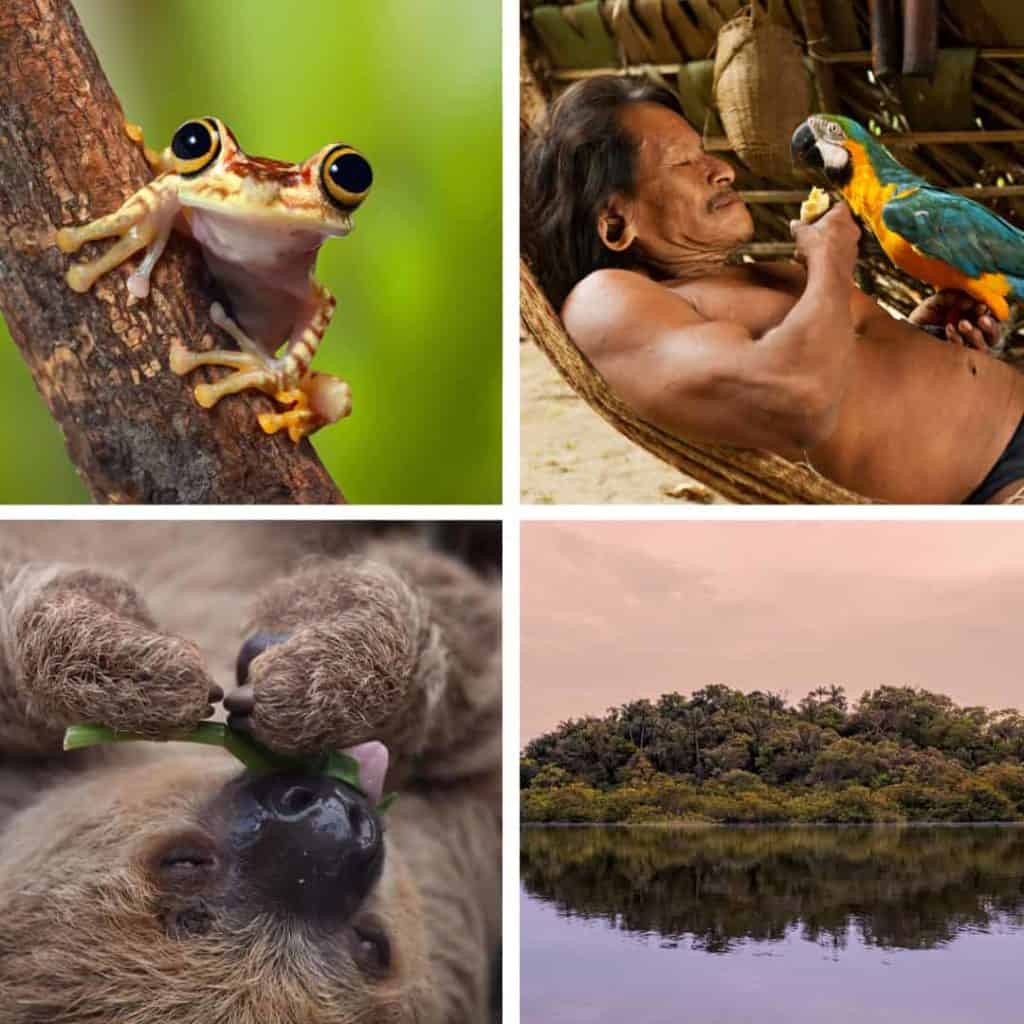
You’ll learn about yellow fever risk, the climate, accommodations, safety, and more.
Many people travel to the Ecuadorian Amazon to see the animals, so before we get started let’s watch a short video highlighting some of the animals you may see on your trip.
Animals of the Ecuador Amazon video
Now we’ll talk about some things that will help you get prepared and excited about your trip.
Ecuador Amazon: 8 Things You Should Know Before You Go
The Ecuadorian Amazon (el Oriente) is home to one of the most bio-diverse places on the planet . More than 10,000 tourists enjoy Amazon jungle tours each year.
Will you be one of them? If so, check out this list before you travel.
To get started let’s look into yellow fever, malaria, and dengue risk in the Ecuador Amazon.
1. Is there yellow fever, malaria, and dengue in the Ecuador Amazon?
This may be at the top of your list of concerns when visiting the Ecuador Amazon, but the facts may surprise you.
Yellow Fever in the Ecuador Amazon
Because some countries require you to have a yellow fever vaccine before travel if you’ve been in Ecuador, you may think there is a high risk of contracting the disease.
According to a report ( opens pdf report ) based on information from the Pan American Health Organization and the World Health Organization dated March 16, 2017 there was one confirmed case of yellow fever in 2017 in the Province of Sucumbios. The last reported case was in 2012 in the province of Napo.
So the answer is yes, there is a risk of yellow fever . Is yellow fever common in the Ecuador Amazon? Apparently not.
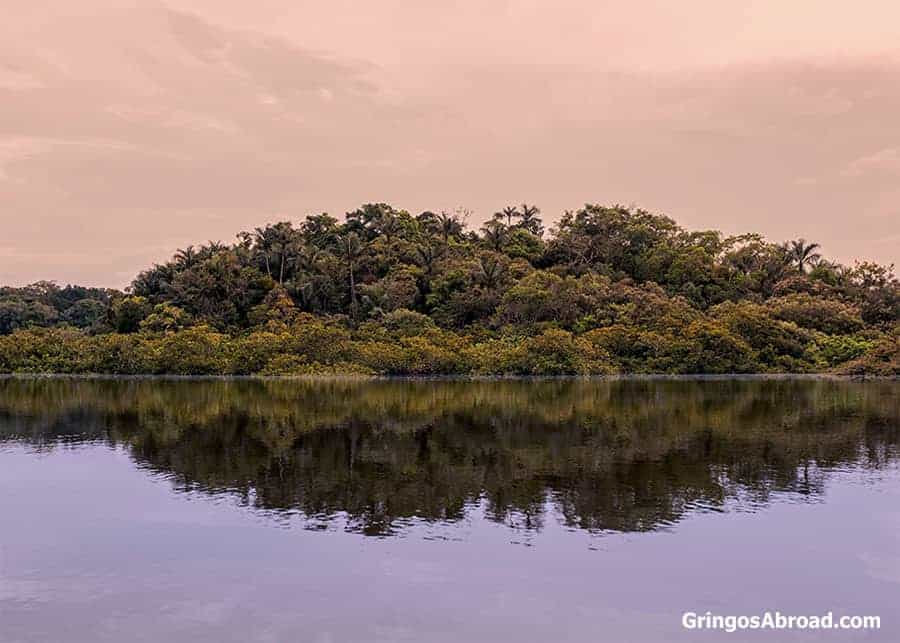
More reading: Buyers Guide to the Best Sun Protection Hats
You may be wondering if you should get a yellow fever vaccine before you travel. That should be discussed with your doctor . Going to a doctor who specializes in international travel, perhaps at a travel clinic, is recommended.
To keep up with current vaccine recommendations check out the Ecuador section on CDC.gov. You’ll notice that the yellow fever vaccine is recommended for travel to specific provinces in the Ecuador Amazon.
If you’re not traveling to the noted provinces ask your doctor what they recommend. This will help you determine the risk and what you’re comfortable with .
Keep in mind that if you’ll be traveling on to certain countries after your stay in Ecuador you may be required to show a yellow fever vaccine certificate to enter, regardless of the provinces you’ve visited.
Check this list to see if your travel plans could be affected.
While these laws exist, we haven’t heard of them being enforced , but that may change during an outbreak. It’s best to contact the embassy of each country you’ll be visiting to check their requirements.
Malaria and Dengue in the Ecuador Amazon
There is a risk of Malaria and Dengue in the Ecuadorian Amazon.
While you’ll want to take precautions like limiting outdoor activity in the evening, wearing long sleeves, long pants, and using insect repellent, you’ll also want to consider taking medication . Unlike malaria, there are no anti-dengue drugs.
Discuss the area you’ll be traveling in, precautions, and the medications available with your doctor.
Malaria, dengue, and yellow fever are contracted through the bite of infected mosquitoes. And while the risk is not high in the Ecuador Amazon, there is a risk, so you should follow these recommendations to protect yourself. You should also stay informed about the current situation and watch for outbreaks. Some travelers decide to get vaccinated and/or take medication, some do not. It’s up to each individual to decide what’s best.
2. Is the Ecuador Amazon Biologically Diverse?
The Ecuador Amazon is home to (what is called by many) the most bio-diverse place on earth: Yasuni National Park .
Yasuni National Park covers an area of 9,820 square kilometers and boasts thousands of species, including:
- 596 species of birds (including harpy eagles and scarlet macaws )
- 150 amphibian species
- 382 species of fish (like the payara )
- 200 species of mammal (including pygmy marmosets – the world’s smallest monkey)
- 121 reptile species (like the emerald tree boa )
- 100,000+ species of insects
Yasuni also holds many world records including 3 world records for woody plant species and 4 for documented liana and tree richness. Learn more about Yasuni National Park in our huge guide .
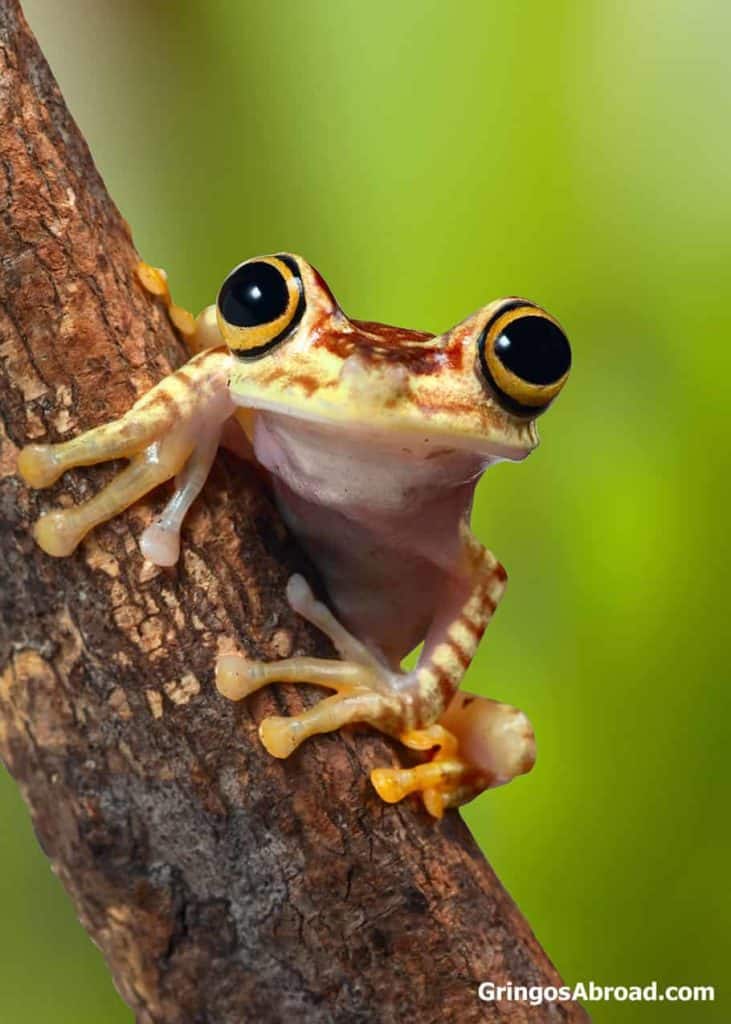
It is believed that this amazing biodiversity is due to the unique location of Yasuni.
The park is located between the Curaray and Napo rivers, at the base of the Andes mountains, near the equator.
There is oil in this area of the Amazon (seven billion dollars worth) and there is an ongoing debate about oil drilling and how it could affect Yasuni.
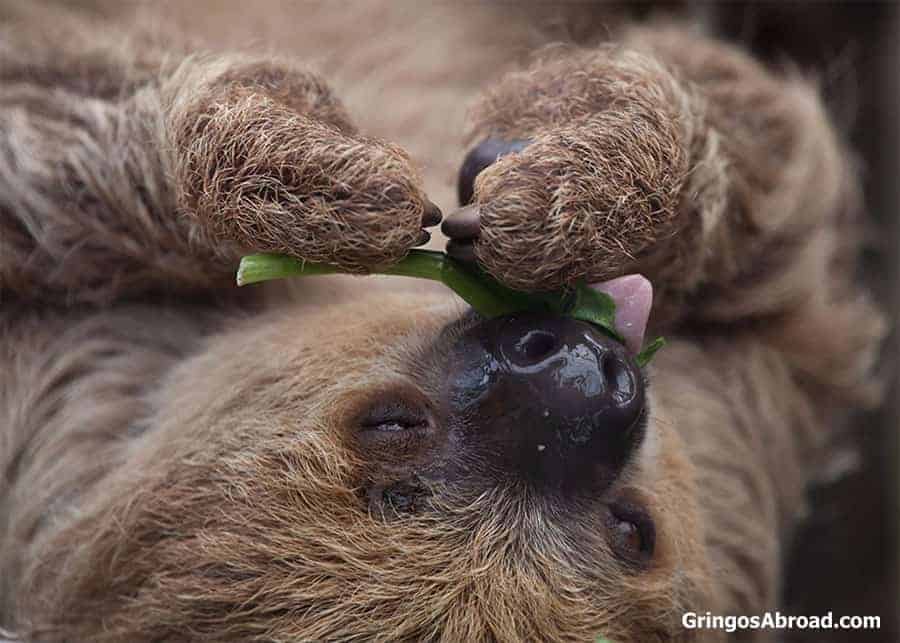
More reading: Guide to Squirrel Monkeys in the Amazon
3. What is the Climate Like in the Ecuador Amazon?
The Ecuador Amazon is part of the Amazon rainforest which stretches from Brazil, through Venezuela, Columbia, Bolivia, and Peru. It’s hot, humid, and rains pretty much every day.
On average this area receives about 3200 – 3500 mm of rain per year. The temperature averages around 23-25 °C.
The dry season usually begins in December and ends sometime in March. But don’t let the term “dry season” fool you, it just means that it rains a little less than the rest of the year.
It does not rain all day long, but you will usually see rain at least once each day. The forest never dries out.
So make sure you bring lots of waterproof travel gear and quick-dry activewear clothing! Probably the most important piece of gear is a waterproof bag. Here’s our guide to choosing the best waterproof dry bag .
4. Is it Safe to Drink the Water in the Ecuadorian Amazon?
No, it’s not safe to drink tap water or the water in lakes, streams, or rivers in the Ecuador Amazon.
There could be waterborne diseases and parasites in the water which could make you very sick and ruin your trip.
It’s only safe to drink purified bottled water while traveling in the Ecuadorian Amazon. You should make sure to brush your teeth with bottled water as well. And be careful not to get water in your mouth while in the shower.
You may want to consider bringing a water purifier with you. A great option is the self-filtering water bottle.
Each filter will filter up to 100 gallons (640 refills) of municipal water and up to 25 gallons (160 refills) of lake and river water. I love mine – it’s lightweight and fits nicely in my backpack.
It’s a good idea to bring along a portable water filter . They are a little expensive but worth it to avoid a stomach illness.
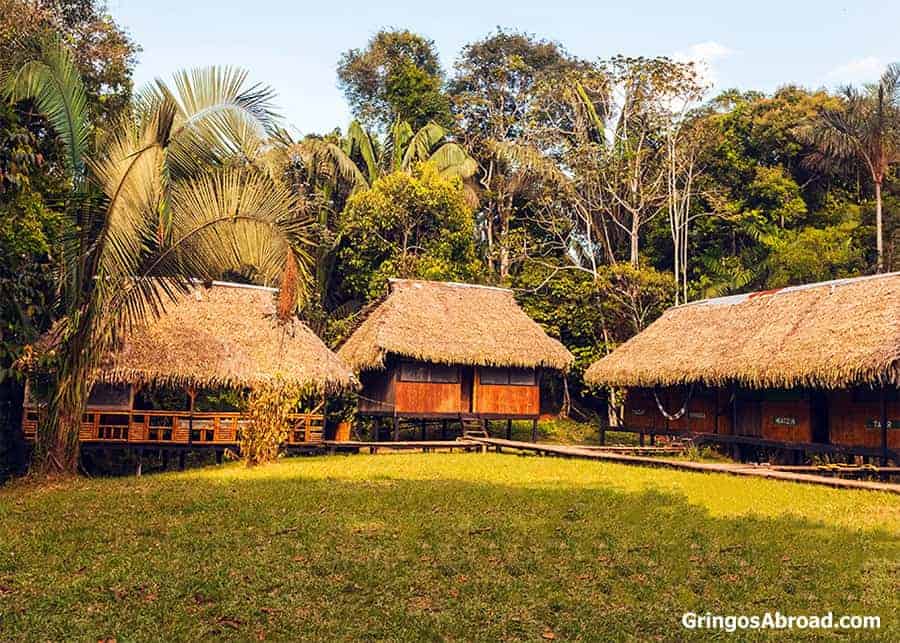
5. Is it Safe to Travel in the Ecuador Amazon?
If you follow some simple safety precautions you should be able to stay safe and healthy during your trip to the Amazon in Ecuador.
- Visit a travel clinic so you can be informed about vaccines you’ll need
- Protect yourself from mosquito bites
- Don’t drink the water or use ice cubes
- Only eat properly prepared (thoroughly cooked) food, including fruit rinsed in purified water
- Keep an eye on your luggage and follow practical steps to avoid pick-pocketing in tourist areas
- Travel with a group
- Stay in an air-conditioned highly rated hotel or lodge
Read more safety tips for shopping and sightseeing abroad.
6. Are There Indigenous Tribes in the Ecuadorian Amazon?
The Huaorani, Shuar, and Kichwa are the three main indigenous tribes in the Ecuador Amazon.
In Ecuador’s Amazon, the Huaorani or Waorani tribe is known as the warrior tribe . Their language is very different than the other languages spoken in the Amazon basin.
There are 5 groups of the Huaorani tribe living in voluntary isolation in the Yasuni area. They are the most vulnerable tribe living in the Ecuadorian Amazon.
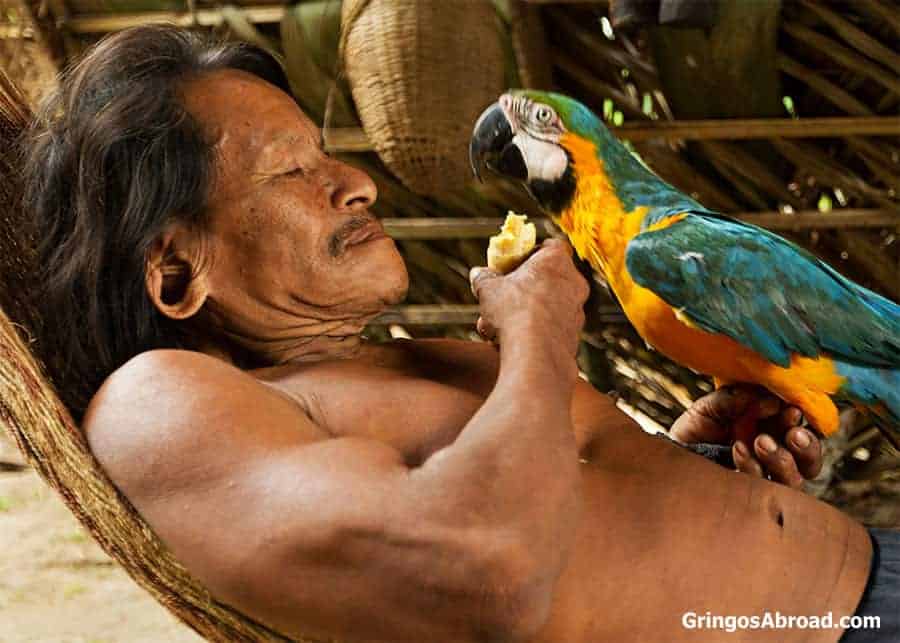
The Shuar are the largest tribe. They make the much-talked-about drink, chicha . This is also the tribe that used to make shrunken heads, some of which can be seen in the Banco Central Museum in Cuenca.
The Kichwa tribe in the Amazon are similar to the Quechua of the Andes, they speak the same language but with a differing dialect. Their traditional dress differs as well.
Many of the lodges in the Ecuador Amazon offer excursions that include visiting local indigenous tribes.
7. Are There Nice Places to Stay in the Amazon in Ecuador?
There are some very nice places to stay in the Ecuador Amazon.
5 Best Ecuador Amazon Lodges
According to this article by Lonely Planet, here are the top 5 places to stay:
- Kapawi Ecolodge and Reserve
- Napo Wildlife Center
- Sacha Lodge
- Yachana Lodge
Have fun checking them out and don’t forget to read about them on TripAdvisor.
If you’ve stayed in any of them, please let us know how your experience was by commenting on this post.
8. How Do You Get to the Ecuador Amazon?
To get to the Amazon in Ecuador you will most likely fly into Quito. Then you’ll catch another flight or take a bus to one of the main cities in the Amazon.
From there you will probably go by canoe to your lodge. Your travel agent or the lodge you book with will fill you in on the exact details of how to get to your destination in the Amazon.
Learn more about things to do in Quito and 5 travel insurance options for travelers and expats.
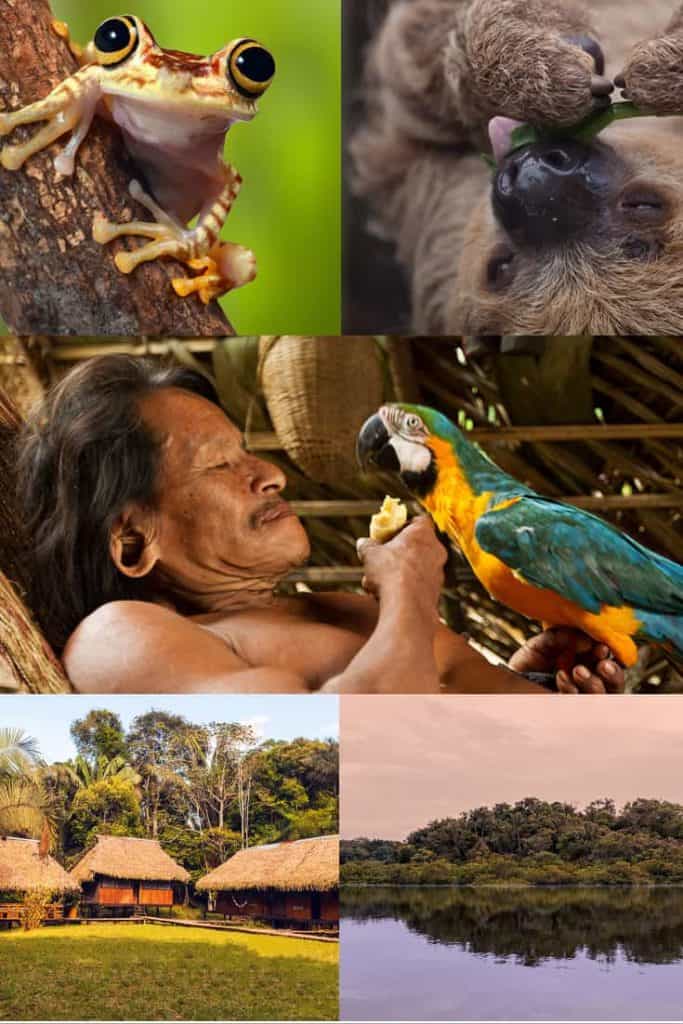
Learn about the 12 Longest Rivers in South America and the World’s 16 Largest Rainforests
Ecuador’s Amazon and You
Have you visited the Amazon in Ecuador? If you have please share your experience by commenting on this post. If you have questions that were not answered here, feel free to ask them below.
Learn more about Ecuador travel , and the best tools for learning Spanish .
Hi, I'm Dena Haines . And I'm co-founder of Storyteller Travel . I love to cover food, animals, and destinations around the world.
I also blog about photography at Storyteller Tech .
Similar Posts
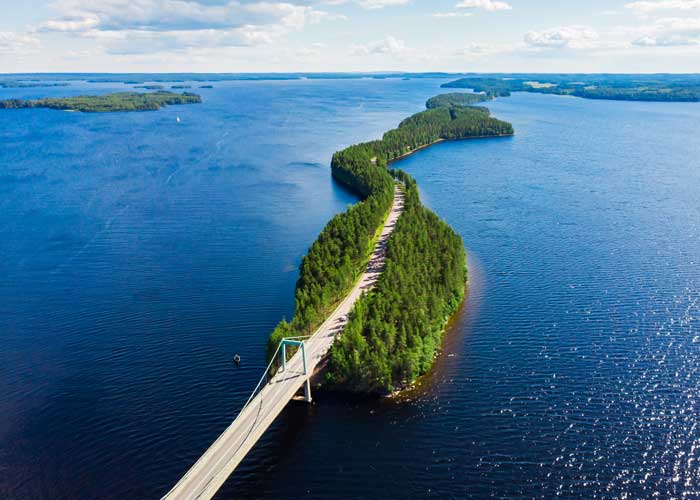
14 Largest Lakes in Europe: Listed by Size
Europe is filled with beautiful lakes and rivers. What is largest lake in Europe? And how does it compare to the other large lakes in this region? In this post, we’ll compare Europe’s largest lakes – by area, volume and depth. What’s the largest lake in Europe? Lake Ladoga in northwestern Russia is the largest…

14 Things to Do in Kampala Uganda (Bonus: 11 Kampala Facts)
Thinking about visiting Kampala while in Uganda? In this post, you’ll learn all about Uganda’s capital city – interesting facts and many things to do in Kampala. Looking for facts about Kampala? Jump to that section now. 14 Things to Do in Kampala Uganda Here are 14 things to do in Kampala Uganda. Did we…
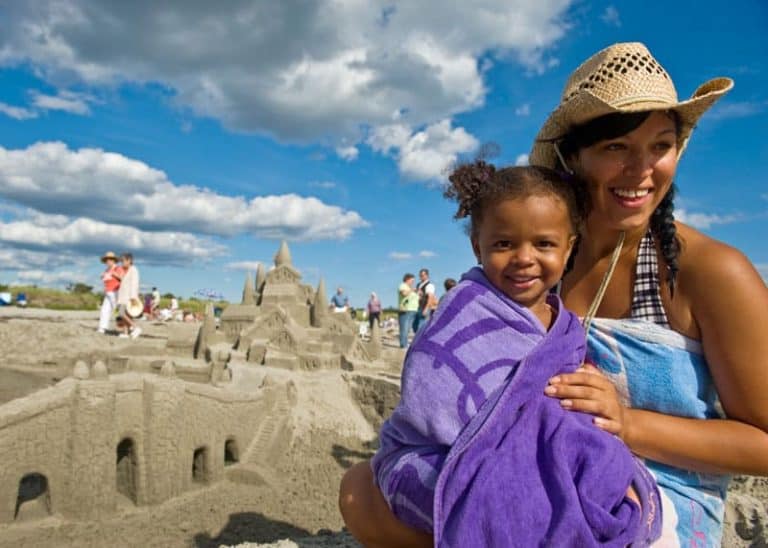
Nova Scotia Beaches: Guide to 41 Best Beaches in Nova Scotia
Looking for the best beaches in Nova Scotia? Here’s the complete guide to Nova Scotia beaches – including the longest, warmest and best surfing beaches. Despite its northern location, Nova Scotia is known for having some of the warmest waters north of the Carolinas. And with 7500 km of coastline, there are a lot of…

What’s the Largest Lake in Africa? 9 Largest Lakes Compared
Africa is home to many huge lakes. What’s the largest lake in Africa? And where are the best places to visit? In this post, you’ll learn about the 9 largest lakes in Africa. Plus lots of photos and details. Africa has so much to offer a western traveler including world-renowned lakes. Second only to the…

10 Tips for Shopping at an Open Market in Ecuador (11 Spanish Phrases)
The attraction for many gringos, of traveling and living in a foreign country, is the thrill of traditional open markets. When we first arrived here, we heard everything from: “everything is so cheap” and “its such nice / fresh / beautiful / unique products here” to “don’t go there – you’ll get robbed or mugged”…

Guide to Mall del Rio in Cuenca Ecuador (Maps and Photos)
Today, we’re going to visit Mall del Rio in Cuenca, Ecuador. The largest mall in the city, Mall del Rio, will have you wondering if you even left your hometown. This probably isn’t what you thought would be in Ecuador’s Andes Mountains. A large multi-screen theater, bowling alley, huge food court, and over 220 other…
I love the information about the Amazon and Ecuador. We’re traveling there, soon to Quito, Tena, Quilotoa Lake, Galapagos, and more. What gifts can we take for the locals? All suggestions appreciated.
Great information. I found it concerning seeing the oil tankers being constantly shipped up and down the river. Especially considering the incredible animals you can find here. I hope tourism helps spread the word of how important these areas are. To quote Edward Wilson: “Evolution required about 10 million years to restore the predisaster levels of diversity. Faced with a waiting time that long, and aware that we inflicted so much damage in a single lifetime, our descendants are going to be — how best to say it? — peeved.”
Hi Dena, Sensational review here. Really enjoyed it. I had no idea that Ecuador contained a national park that is the most bio diverse region on earth. Awesome. I loved seeing many of these same creatures when living in a remote jungle in Costa Rica, 3 hours away from humans. Sloths, monkeys, toucans, parrots, and so much more. When you spend even a few days in the jungle – let alone 6 weeks like we did – it changes you in a wonderful way. All about getting back in harmony with nature, and its infinite perfection. Thanks for the excellent share Dena. Ryan
Wow! Sounds like you had an amazing experience Ryan. Thanks for sharing your thoughts on the post! 🙂
Leave a Reply Cancel reply
Your email address will not be published. Required fields are marked *
How to get the most out of a trip to the Ecuadorian Amazon

Apr 15, 2023 • 5 min read
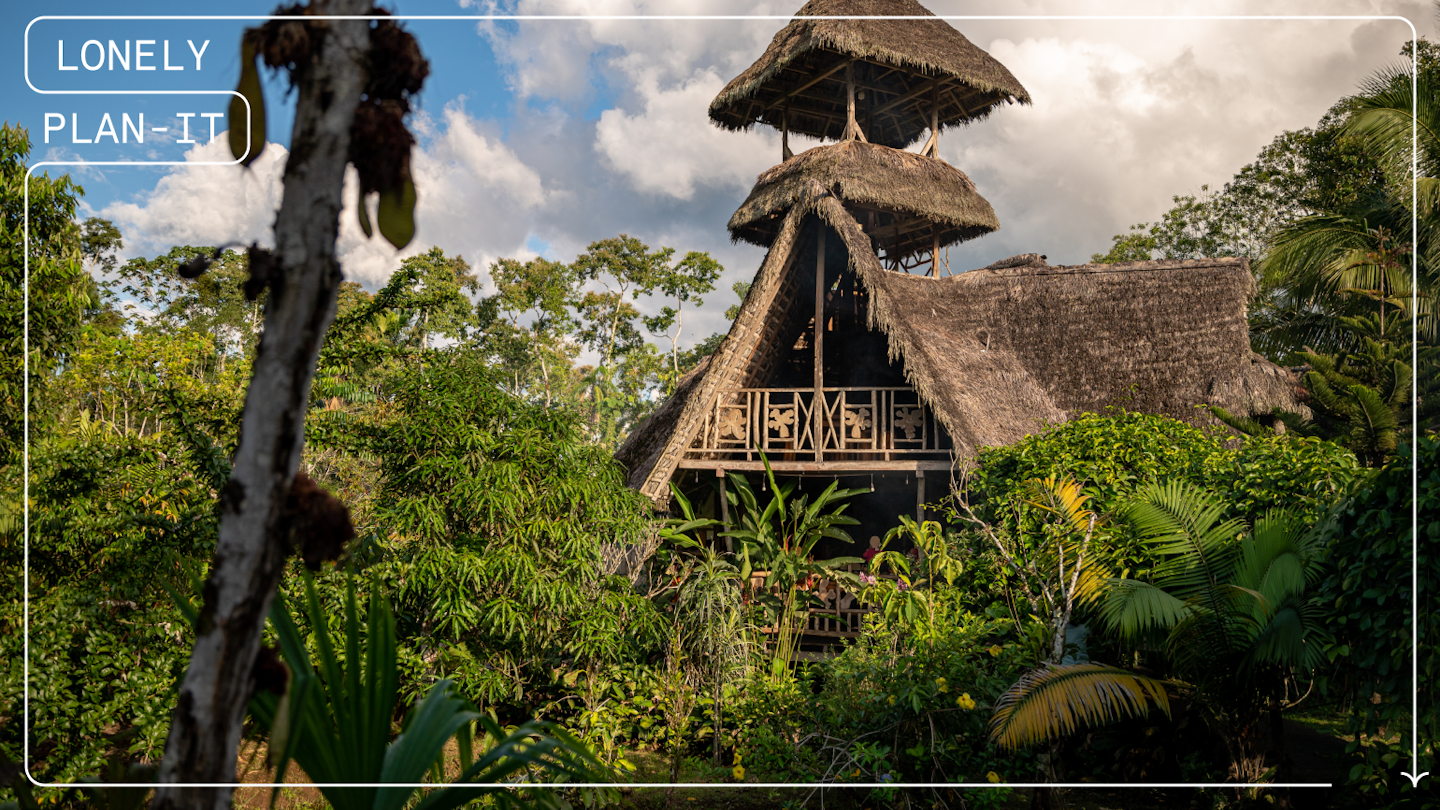
One of the world’s most extraordinarily diverse environments, the Ecuadorian Amazon offers white-water rafting, bird watching, forest walks and more © Bailey Freeman / Lonely Planet
In Lonely Plan-It, we take you step by step through how we put together some of the most complicated travel adventures – so you can recreate them yourself with ease. Here, Bailey Freeman shares the steps to planning an incredible adventure to the Ecuadorian Amazon.
Despite its small size, Ecuador is one of the most biodiverse places on the entire planet – and a visit to its Amazon region is the feather in the cap of any person who wants to see the natural world at its most astonishing.
I visited the Ecuadorian Amazon – also known in-country as the Oriente – for my work as a travel writer and was pleasantly surprised how accessible the region was for travelers. Still, there are still several things to keep in mind as you plan your trip.
Here’s our guide to planning the perfect visit to the Ecuadorian Amazon, an incredible place of cultural and environmental beauty.

Step 1: Decide what activity you want to do
Plan your route around what interests you the most.
The Amazon is home to a wealth of adventure: white-water rafting, wildlife watching, forest walks and more. It’s best to decide on your main priorities prior to your arrival, as different access points offer different experiences.
If you’d like to marvel at the biodiversity of Ecuador’s famous Parque Nacional Yasuní , the town of Coca will be your starting point. Want to go rafting on tributaries to the mighty Amazon River? Start in Tena or Macas instead. Visiting the hot springs at Baños and want to tack on some Amazon adventure? Puyo would be a good place to put on your radar.
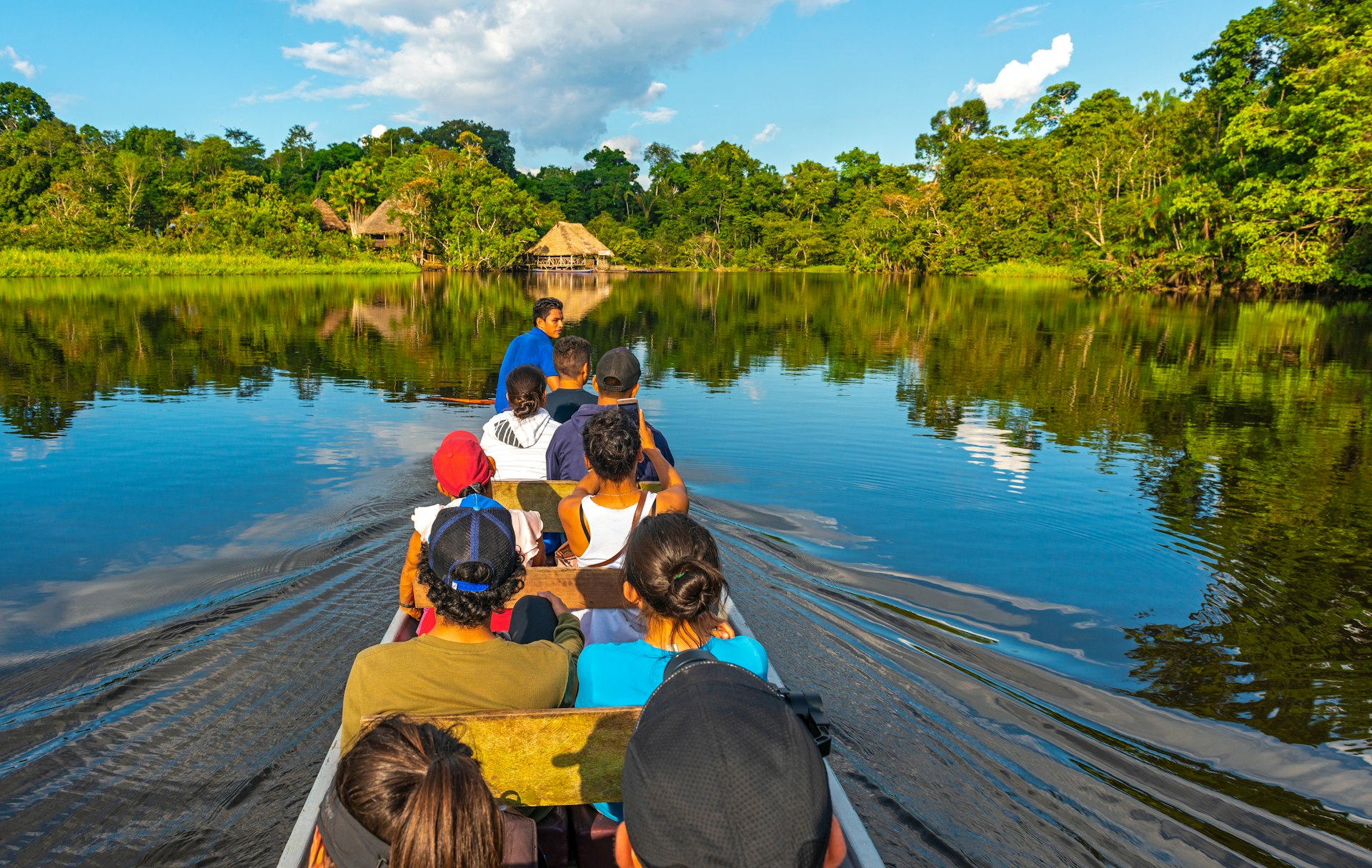
Step 2: Choose a home base
Whether you choose a jungle lodge or a hostel, adventure awaits.
Accessing the edge of the Amazon in Ecuador is pretty easy, as roads are well maintained and Amazon travel hub towns aren’t too far from Quito . But things get a bit more complicated once you start to head deeper into the forest. If you’re looking for convenience, we recommend choosing a jungle lodge that can serve as an all-in-one adventure coordinator. These atmospheric hotels offer transport to their location, meals and tours, often specializing in experiences unique to their region of forest. For example, I crashed at the Cabañas San Isidro , a launchpad hugely popular with birders. Other great options are Achuar-owned Kapawi Lodge and the Añangu-owned Napo Wildlife Center Ecolodge .
If you don’t have the budget for a full lodge experience, don’t worry: you can opt for a wallet-friendly hostel or hotel in towns like Tena and Coca and book individual operators offering experiences à la carte. You’ll have to plan a few more logistics yourself, but you’ll still get to experience the majesty of the Amazon.

Step 3: Pick the right time of year to go
Find what works best for you, but expect some rain.
Due to its location along the equator, Ecuador doesn’t really experience substantial swings in weather with the seasons. That said, some months in the rainforest are wetter than others, so it doesn’t hurt to look at the calendar before you hit the road.
The Amazon experiences a rainy season February through September. While the sogginess may put off some travelers, more rain means better waterway navigability, more spottings of water-loving creatures and cooler temperatures. The cons? The potential for washed-out trails and more mosquitos. The term “dry season” is relative as rain is still common – yet the period from October through January does provide some relief from the moisture (and mosquitos), more access to hiking paths and warmer temperatures.
Step 4: Pack smart
You'll need proper gear for exploring this region.
In brief: pack for sun, rain and lots of bugs. In addition to staples like good (waterproof) hiking boots, water/adventure sandals and bug spray, we also recommend breathable long-sleeve shirts and long pants: you may be a bit hot, but it’s better than being a walking buffet for biting bugs. You’re going to want to protect your belongings from rain and a potential tumble into the Amazon’s rivers, so a dry bag for electronics or a waterproof daypack will come in extremely handy. Finally – and we can’t emphasize this enough – slather on the sunscreen. Ecuador sits at the equator, the part of the Earth that receives the most intense sun exposure, so those who are prone to sunburning will need to apply hourly. Pick an eco-safe and water-resistant option.
Step 5: Be respectful
There are many ways to help protect this incredible place.
The Amazon is one of our planet’s biggest treasures, so visiting with respect is absolutely essential. On the environmental side, make sure you pack out any and all trash, and opt for eco-safe bug spray and sunscreen options. While on your nature walks, remember to look around for – but never touch – all the incredible plants and animals you’ll encounter.
The Amazon is also home to thousands of Indigenous communities, some of which work with tourism projects throughout the region. When you visit, they are your hosts. While every group is different and we can’t speak for them, here are a few general guidelines. Don’t take pictures of anyone unless permission is given to do so, especially children. Be kind and respectful about the elements of their culture they share with you, and be sure to support their communities in the ways they request (in particular, don’t bring “‘donations” like toys or toiletries unless specifically asked to).
If I could do it all again…
I’d slow down . While it’s tempting to hop from activity to activity, half the magic is spending time in such a storied and ecologically essential place. Include some time for unhurried wanderings or hammock naps. You won’t regret it.
Explore related stories

Festivals & Events
Jun 6, 2024 • 6 min read
Choose the right time for your visit to Ecuador with this seasonal guide.

Jun 5, 2024 • 8 min read

May 14, 2024 • 6 min read
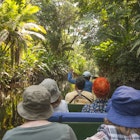
May 1, 2024 • 7 min read

Feb 1, 2024 • 7 min read
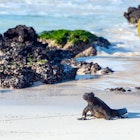
Oct 11, 2023 • 5 min read
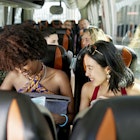
Sep 29, 2023 • 5 min read

Sep 24, 2023 • 7 min read
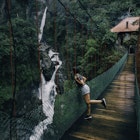
Jul 29, 2023 • 4 min read
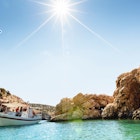
Jun 2, 2023 • 8 min read

Ultimate Ecuador Amazon Guide ( + Best Amazon Jungle Tours)
While visiting the Galapagos may be number one on many visitors’ bucket lists in Ecuador, visiting the Ecuadorian Amazon is becoming more popular than ever . This area of the Amazon is home to the most biodiverse areas on the entire planet , and an Ecuador Amazon tour is a fantastic way to experience it, with more ways than ever to visit sustainably.
From deep in the Amazon at Yasuni National Park to the backpacker town of Tena, there is so much to see and do in the Ecuador jungle. After living in Ecuador for two years, we still only were able to see just a small portion of all that this diverse area of the country has to offer, but fell in love with it fast.
In this guide to the best of Ecuador Amazon travel and tours, we’re covering some of the best ways to experience the Ecuador Amazon, including the best Ecuador Amazon lodges and their tour experiences , as well as independent tour companies. Keep reading for more about the best experiences the Amazon Rainforest Ecuador has to offer .
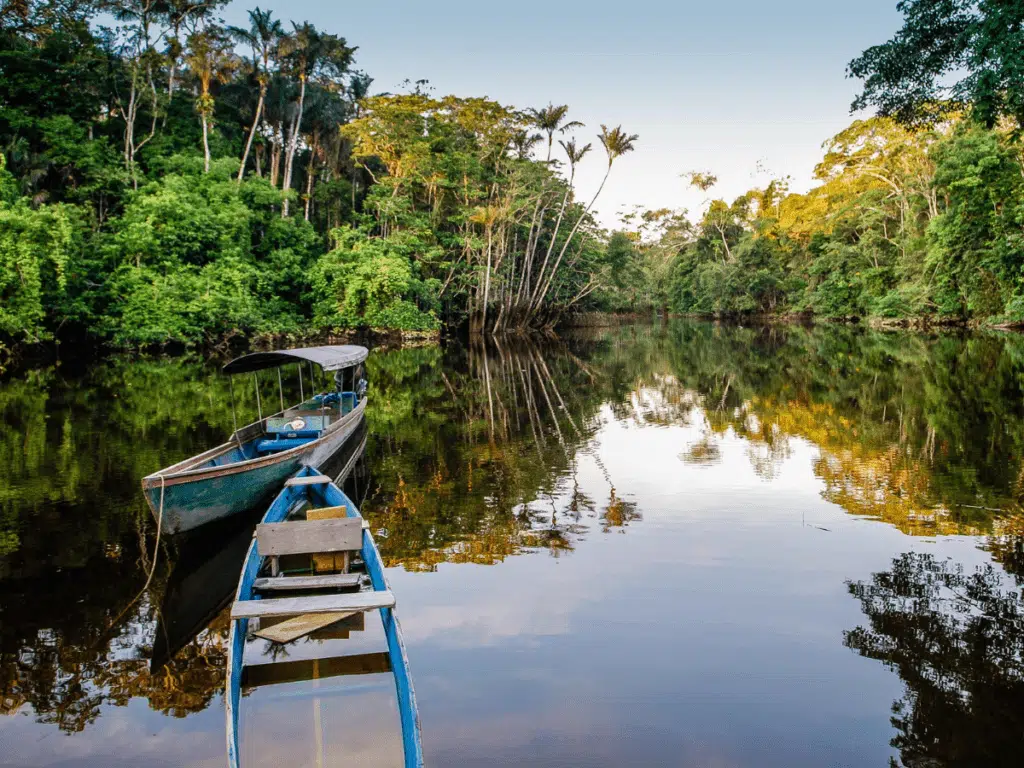
This post contains affiliate links that may reward me monetarily or otherwise when you use them to make qualifying purchases – at no cost to you. As an Amazon Associate, I earn from qualifying purchases. For more information, please read our disclosure policy .
The Ecuadorian Amazon
While Ecuador is one of the smallest countries in South America, its slice of the Amazon rainforest is anything but secondary, making the country one of the best places to visit the Amazon.
In fact, Ecuador is home to what many consider to be some of the Amazon’s most crucial areas , and the best Amazon tours around.
Ecuador is home to Yasuní National Park and the Yasuní Biosphere Reserve, which is believed by many to be the most diverse area on all of planet Earth.
Yasuní National Park, with its super-diverse Biosphere Reserve, is the best-known national park in the Ecuador Amazon Rainforest. It is the most protected area of the Ecuadorian Amazon and has the greatest number of species of flora and fauna living there.
What To Pack for Ecuador
Check out our Ultimate Ecuador Packing List to help you pack for your trip – we’re sharing exactly what to bring to Ecuador and what we never travel without.
However, the Amazon jungle of Ecuador is also composed of three other national parks (Sumaco Napo-Galeras, Cayambe-Coca, and Llanganates). In addition, there are several private nature reserves and areas of nature and wildlife protection in the Ecuador Amazon rainforest like the Cuyabeno Wildlife Reserve .
Generally, Ecuador jungle tours and lodge stays in the Yasuní National Park are more expensive than they are in the rest of the Amazon region in Ecuador. This is largely because the area is so protected and so remote to access.
Cuyabeno Wildlife Reserve , also quite deep in the Amazon, is generally less expensive to visit, though just as impressive in many ways.
Many private lodges, such as the popular Sacha Lodge , have their own ecological reserve surrounding their property – Sacha Lodge has over 5,000 protected acres surrounding it.
We love recommending visiting the Amazon rainforest in Ecuador, and taking an Ecuador jungle tour because they tend to be more affordable and accessible than jungle tours in neighboring countries such as Brazil can be . However, there are plenty of incredible ways to visit the Amazon in Peru as another great alternative to Ecuador!
Check out our guide to affordable Amazon travel in Ecuador with our Complete Guide to Visiting Tena, Ecuador for more of our top tips for your trip.
Indigenous Peoples in the Ecuadorian Amazon
Some of the indigenous groups in the Ecuadorian Amazon include the following:
- Huaorani (or, Waorani)
There are still two known uncontacted tribes living in the Amazon in Ecuador: the Taromenane and the Tagaeri . These groups are composed of only a few hundred individuals, and their rights to live in isolation and free from contact in the Ecuador Amazon are protected by the constitution.
Their way of life is threatened by illegal logging and oil discovery operations .
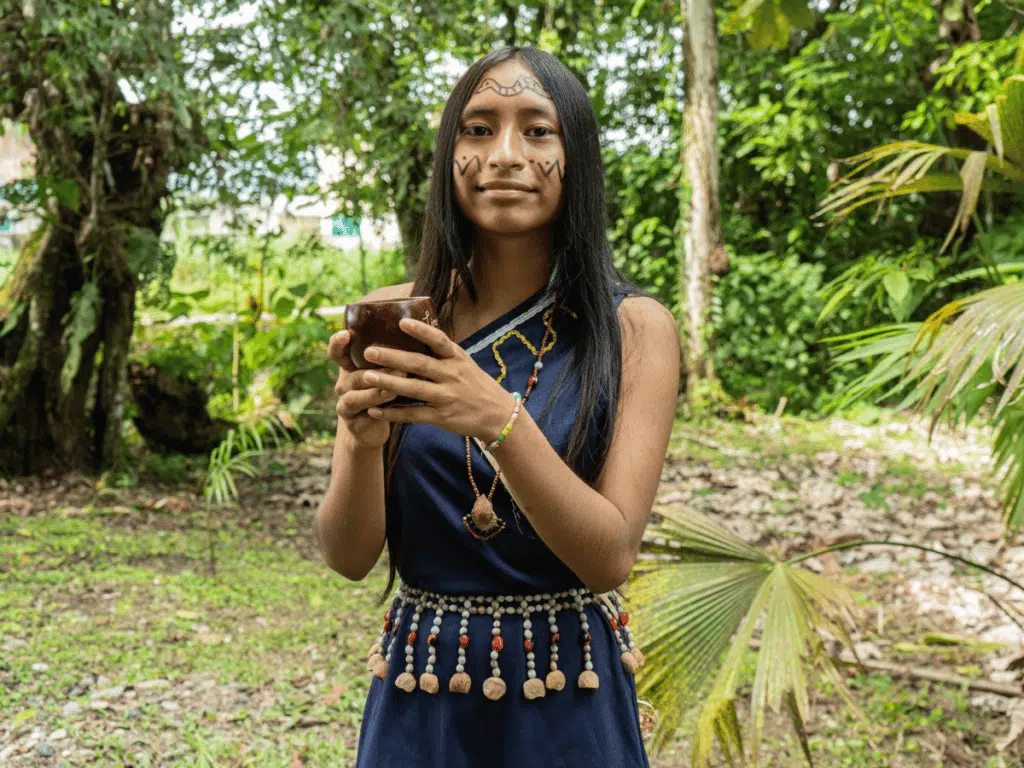
Ecuador Amazon Map
Located in the eastern part of the country, Ecuador’s Amazon region is known as El Oriente , or simply, the East. There are six provinces in the Ecuador Amazon that compose this region: Sucumbíos, Orellana, Napo, Pastaza, Morona Santiago, and Zamora Chinchipe.
The most common cities to Amazon jungle trips in Ecuador – located in or on the border of the rainforest – are Tena, Nueva Loja, and Coca (also known as Francisco de Orellana).
Check out this clickable Ecuador Amazon map below to get a better understanding of this expansive region and its layout within Ecuador for a better idea of the Ecuador Amazon tour that might be best for you.
Nueva Loja is often the starting point for trips to the Cuyabeno Wildlife Reserve , while Coca is the most common starting point for trips to Yasuni National Park . Either Ecuador jungle starting point is a great choice – keep reading below for more specifics on each destination!
Ecuador jungle tours that start from Tena often do not go as deep into the Amazon as those that start from Nueva Loja or Coca, and are therefore less expensive and a great option for budget travel in the Amazon .
The Best Ecuador Jungle Tours
There are many options for jungle tours in the Amazon in Ecuador, including those run through independent tour companies and those that are booked through lodges in the Amazon.
Often when booking a stay at one of the many Ecuador Amazon lodges, visitors select a package of days and nights that include activities and excursions run through the lodge .
When booking a tour with a tour company, companies specify where visitors will be staying, but run their own activities and excursions, often through different areas of the Amazon.
Ecuador Amazon Tours
Tours in cuyabeno.
Tours in Cuyabeno Wildlife Reserve are generally less expensive than those in Yasuní , but allow visits to still encounter plenty of wildlife. Multi-day tours generally hover around $100 per day all-inclusive , though they can more expensive depending on the lodging planned for the tour.
- 4-Day Ecuador Amazon Jungle Tour
- 4-Day Ecuador Amazon Jungle Tour – Tapir Lodge
Some tours of Cuyabeno also start from the town of Lago Agrio rather than Nueva Loja. While not generally as common, this is still quite convenient, as there are regular buses and flights from Quito to Lago Agrio.
This tour departs from Lago Agrio and heads into the Cuyabeno Wildlife Reserve, with lodging at the Waita Lodge .
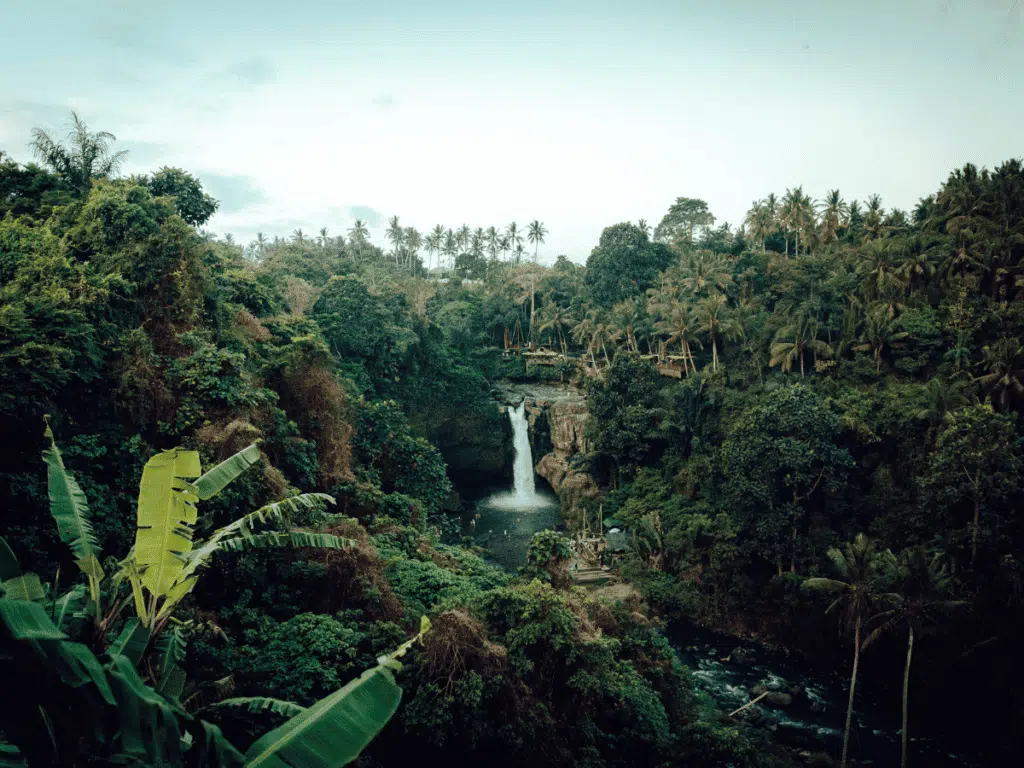
Travel Essential
Don’t head out on your adventure without comprehensive travel insurance! Good travel insurance may cover lost or stolen gear, medical emergencies, delayed or canceled flights, and more. Check out the policies available from SafetyWing or compare plans using Visitors Coverage .
Tours in Yasuní
Tours in Yasuní National Park are generally the most expensive you’ll find in Ecuador , as it is the most remote area and most protected area of the forest. However, the lodges here are extremely nice, and will provide the most incredible experience you can find along the Ecuador Amazon river.
If you’re looking for an unforgettable and luxurious adventure, consider looking into a tour with lodging at Sacha Lodge if it’s in your budget – this is the best of the best in the Ecuadorian Amazon!
I was able to find some more affordable tours that visit the Yasuní with lodging at homestays in the local community , which is a great way to save money on an incredible experience and also exchange with locals.
There are also camping and kayaking tours in Yasuní that are popular as well for those looking for being as close to nature as possible and explore as much as possible of the jungle. It isn’t a typical lodge experience but is definitely an incredible adventure.
Tours in Tena
Since Tena is the most easily accessible jumping-off point in the Ecuador jungle, and just on the edge of the forest, jungle tours in Tena are generally the best options for budget travel in the Amazon . There are some incredible Ecuador rainforest tours to be found here at a great price!
While tours here are not in the deep Amazon and you may not see certain wildlife you’ll see in Yasuní or Cuyabeno, having visited Tena I can tell you that I still had an incredible experience and felt like I saw plenty.
Tours from Tena generally are a bit shorter than those deeper in the Amazon, generally two days to four days.
Three-day or four-day tours from Tena generally center around the Mishuallí area of the rainforest near Tena.
- 2-day Jungle Tours in Tena
- 3-day and 4-day Jungle Tours in Tena
There are also plenty of tours that leave from Quito , which is a great Ecuador Amazon travel option for those with limited time frames, as they arrange transport to and from the city.
- Ultimate Travel Guide to Ecuador
- Where to Stay in Quito
- How to Visit Cotopaxi National Park
- Ultimate Guide to the Otavalo Market
Ecuador Rafting Tours
In addition to traditional nature and wildlife tours, Tena is a popular destination for rafting through the Amazon , some of the most unforgettable Amazon tours Ecuador has to offer.
Tour operators offer rafting excursions departing from Tena on rapids of all different levels , so even first-timers can get involved (me!). There are also safety kayaks that accompany rafters to ensure safety.
Raft Amazonia is one of the most well-known and respected rafting tour operators in Tena – they also organize other tours around Tena as well.
Many of the rafting excursions and tours can also be extended over a couple of days with additional jungle walks, and include basic lodge accommodations in the rainforest near Tena.
Tours like this one from Tena along the Napo River combine rafting and exploring the Amazon if you’re interested in both experiences.
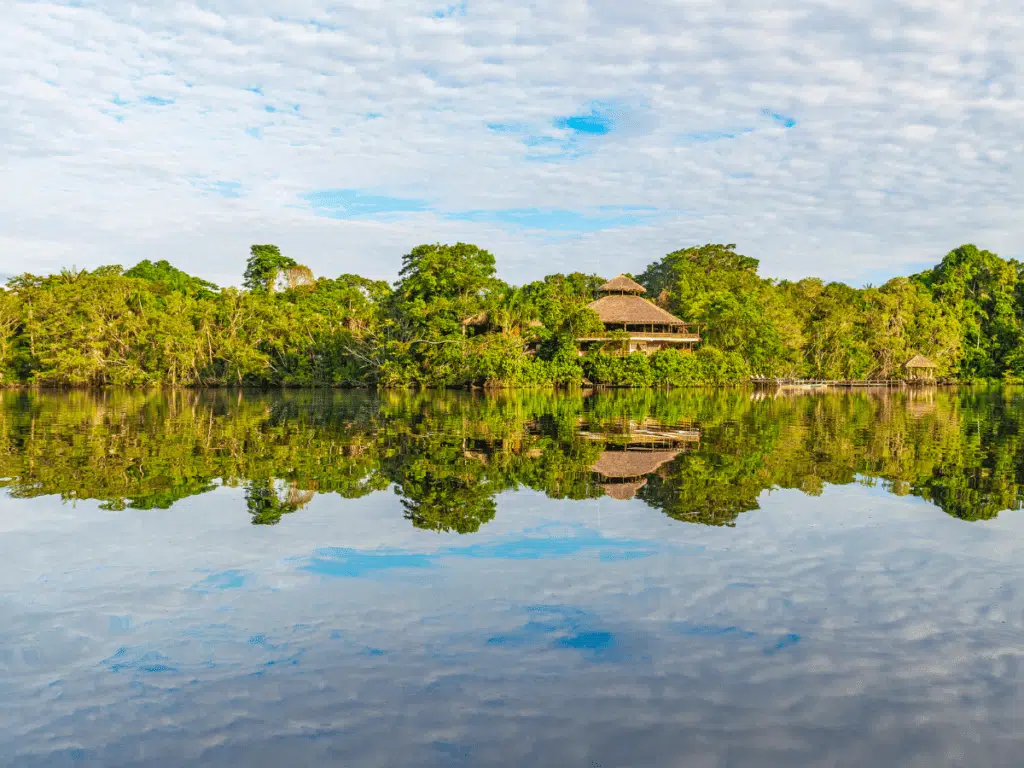
Don’t think about traveling without a good VPN (Virtual Private Network) . Using a VPN while connecting to the internet is an easy way to keep your personal information safe from hackers and trackers. We’ve used NordVPN for years and couldn’t recommend it more – it’s a must for safety online, at home or abroad.
Ecuador Amazon Lodges
There are plenty of Ecuador Amazon lodges that offer independent package stays that include all jungle tours and excursions as a part of the package . These are some of the most popular or well-known lodges in the best areas of the Amazon that offer their own tours.
Tapir Lodge Ecuador
Located in the Cuyabeno Wildlife Reserve, Tapir Lodge is an excellent lodge for a mid-range travel budget , with some fantastic deals on rooms and jungle tour experiences.
Their 4-day excursions are quite affordable for being so in the deep Ecuador Amazon.
Tapir Lodge has been operating for nearly two decades and the guides know the area well, including having close relationships with the local Siona indigenous group , which makes for a great experience.
Napo Wildlife Center
The Napo Wildlife Center and the newer Napo Cultural Center are sister lodges within the Yasuní National Park and are considered some of the nicest and most luxurious places to stay within the Amazon in Ecuador.
Stays at the Napo Cultural Center are less expensive than those at the wildlife center and are closer to a local Kichwa indigenous community, which allows for excursions to visit this community.
These excursions are organized by the Añangu Kichwa community and benefit this community and are easily some of the best Amazon tours you’ll find anywhere.
Sacha Lodge
Sacha Lodge is another one of Ecuador’s finest eco-lodges in the Amazon, also located in Yasuní National Park . One interesting feature of Sacha Lodge is its elevated canopy walk, which allows visitors to walk above the treetops of the Ecuadorian jungle and enjoy the view of the Amazon from above.
The most popular stays at Sacha Lodge are the 4-day, 3-night stays , which include all of the most important sights in and around Sacha’s private 5,000-acre nature reserve.

Carley Rojas Avila
Carley Rojas Avila is a bilingual New York-based travel writer, editor, content marketer, and the founder of the digital travel publications Explorers Away and Home to Havana. Carley is an expert on all things Latin America, the Caribbean, and Cuba, having lived and worked in four different countries in the region. Her writing has appeared on the Associated Press wires and in Travel + Leisure, Yahoo, MSN, Euronews, The Weather Channel, and more. When she's not writing about her travels, find her front row at a Bad Bunny concert, befriending street cats, and taste-testing every pizza in Havana.

How to Visit the Amazon in Ecuador
The Oriente: the eastern part of Ecuador where the mighty Amazon Rainforest spreads into the country at over 1,300 feet above sea level for one of the most bio-diverse regions on the planet. There is a wealth of wildlife to be sought out in these beautiful area-Tapirs, jaguars, howler monkeys, piranhas, caimans, and parrots.
This wild part of Ecuador spans six provinces – Sucumbíos, Orellana, Napo, Pastaza, Morona Santiago and Zamora Chinchipe – which is 40% of the country. But specifically, it’s the Yasuni National Park, located in Napo and Pastaza provinces, which is arguably the most bio-diverse place on Earth.
Famous not only for its wildlife but also for the indigenous tribes who still live deep in the Amazon, Ecuador caters well to visitors wishing to experience the incredible assault on the senses that is the rain-forest.
There are many sights to see here alongside trekking deep into the mysterious jungle itself: the spectacular San Rafael Waterfall where water cascades 500 feet through a clearing in a sea of green, AmaZOOnico – a jungle wildlife rescue center opened in 1993 on the banks of the Napo river, along with the many nature reserves and national parks that make up the Amazon, Ecuador.
Though accessible, it’s not the easiest place in the world to visit, so we’ve compiled a guide on visiting this breathtaking natural wonder.
Don’t leave home without: Lonely Planet Ecuador & the Galapagos Islands (Travel Guide)

When to Travel to the Amazon in Ecuador
Table of Contents
When is the best time to travel to the Amazon in Ecuador? Well, it rains for most of the year (the clue is in the name: rain forest), but you will find it much wetter from December to May – the northern hemisphere’s summer and autumn are probably the least soggy in terms of rainfall, August being particularly low.
However, it is slightly cooler during the rainier half of the year, and it does allow access to different areas when rivers burst their banks and create new tributaries to explore – mosquitoes will be particularly prevalent with the increase in rainfall, though, so be prepared.
We visited the Yasuni Bioreserve in late November and experienced a variety of weather, including some torrential downpours. That said, we had some beautiful days too and some really beautiful sunsets. The best thing to keep in mind is that it can always rain in the Amazon, even in the ‘dry’ season, so be prepared and don’t let it affect your trip.

How to Get to the Amazon, Ecuador
There are a number of ways to enter into the Amazon area of Ecuador, mostly by bus. From the Ecuadorian capital of Quito, you can catch a bus to Lago Agrio; this is a seedy town that serves the local oil industry and can be dangerous due to its proximity to the Colombian border.
However, this town serves as a gateway to the Reserva de Producción Faunística Cuyabeno, otherwise simply known as the Cuyabeno Reserve, which offers a great chance to spot some wildlife.
On the other hand, there’s Tena, the capital of Napo province, which you can get to again via bus from Quito. In contrast to Lago Agrio, Tena has a friendly population and is a nice place to hang around, and caters well to those wishing to get deeper into the jungle, see waterfalls, or go whitewater rafting – from here getting to the Sumaco Napo-Galeras National Park, for instance, is relatively straightforward.
From Tena, by bus, you can get to Puerto Francisco de Orellana, or as it’s better known, Coca – the last slice of civilization for those wishing to travel further up the Napo River.
Flights between Quito and Lago Agrio leave three times per day (except on Sundays) and take only thirty minutes, which is obviously much quicker than by bus. Between Quito and Coca, there are two flights daily, except for Sunday again, and this takes twenty-five minutes.
We chose to travel to Coca, as our intention was to visit the Yasuni Bioreserve. We flew from Quito and then journeyed by boat up the Napo River.

Activities to do in the Amazon in Ecuador
Since the 1990s, tourism has been steadily growing in this area and it is now, surprisingly, easier than ever to have a genuine experience in this tropical rain forest. There are generally three types of accommodation, and tour – often combined with where you stay: a guided tour, booking a jungle lodge, or staying with indigenous people.
Guided tours can be booked both inside and outside of Ecuador, though tend to be cheaper when booked internally. These range from simple day trips into the jungle to multi-day treks. Basic shelter, in the form of cabanas or carpas (standard tents), as well as adequate food and water, should be provided by the tour company.
When visiting the Amazon in Ecuador, the main things to do centralize around watching wildlife and observing the wide array of flora in the rainforest. This is done mostly on foot and by boat. Hiking can get you up close and personal.
A non-motorized canoe can get you into areas not accessible by foot. You can also custom tailor your trip if you’re in search of birds, primates or other species in the forest. Other activities can include kayaking, swimming, canopy tours, and tower viewing.
The Amazon Rain-forest is so full of life; embrace it for yourself during a week unlike any other . From Quito, you’ll travel to your new home in the jungle and meet the Quichua family who will host you in their village for the next four nights. Discover waterfalls on jungle walks and travel to an animal rescue center by canoe.
You’ll learn about medicinal plants and how to use a blowgun, experience a shaman ceremony, and walk to a jungle waterfall. Most importantly, you’ll befriend people few outsiders have the honor to even meet.

Ecuador Amazon Accommodation
Jungle lodges, wood and thatch type dwellings with communal eating/relaxing areas, are the most expensive costing typically under $100 per night and the most comfortable way to see the jungle, and often offer rewarding activities that tend to be structured daily, such as jungle walks and early morning canoe trips.
The most expensive jungle lodges ($250+) will have English-speaking naturalists, ornithologists, or otherwise qualified to give you in-depth information about the environment you’ve come to see.
Though this is ‘luxury’ travel it’s important not to forget that this is the jungle after all: a lack of 24-hour electricity, hot running water, and insect-free accommodation is something you may have to get used to. Most of the more well-established jungle lodges can be booked in Quito.
A stay with indigenous tribes is an amazing experience, and honestly like something right out of a documentary. A few of these are run through outside companies, but many are ecotourism projects embarked upon by tribes-people themselves, with help from an external contact; as such these are quite basic, and you may have to be prepared to bring your own mosquito net and rubber boots, among other essentials (speaking Spanish can also come in handy).
The focus often is on cultural exchange, so expect demonstrations from hunters and folkloric shows – and expect to share a little of your own culture, too. Staying with indigenous communities can be arranged in towns like Lago Agrio and Tena.
We chose to journey into the Yasuni Bioreserve during our visit, staying at the impressing Napo Wildlife Center, owned by the local Anangu tribe. It is the only lodge located inside the bio reserve and is very exclusive. Read about our experience: Exploring Parque Nacional Yasuni with Napo Wildlife Center.
Read reviews and check prices with our Hotel Search Engine , that gives you the best hotel deals found on the web. Our search engine pulls results from all of the major booking places, including Expedia, Hotels, Booking and more. All the options, all the deals, all in one place and just for you.

Amazon Wildlife
Located at the base of the Andes between the Curaray and Napo rivers, Yasuni National Park is quite probably the most biologically diverse region on Earth. It has some impressive credentials when it comes to numbers: 121 species of reptile, 150 amphibian species, 200 species of mammal, 382 species of fish, 596 bird species, and as for insects, that’s on another level.
It’s estimated that in any single hectare of the National Park, there are over 100,000 species of insect – that’s roughly the amount of all the insect species to be found in North America . There are also over 100 bat species in the Amazon Basin, and the population at Yasuni is thought to be comparable to this number.
But it’s not only in terms of fauna but also flora that Yasuni is particularly blessed with incredible diversity; it breaks several world records for documented tree and liana (woody climbing vines) richness, for instance, and it is one of nine places in the world that boasts over 4,000 species of vascular tree per 10,000 square kilometers.
In particular, the Amazon in Ecuador is home to many species of rare birds, and as such, this is a must-visit location for amateur and keen bird-watchers alike. There’s the distinctive scarlet macaw, vivid species of Amazon Parrot, the prehistoric-looking Hoatzin, the Harpy Eagle – one of the largest and most powerful in the world – as well as the Toucan.
Don’t leave home without: Ecuador and Galapagos Islands (National Geographic Adventure Map)

Health & Safety
While there is a risk of yellow fever in the Ecuadorian Amazon region, it’s not something that is particularly common. In fact, according to a report by the Pan American Health Organization and the World Health Organization, there was only one confirmed case of yellow fever in 2017.
With that said, despite being uncommon, it does still pose a risk and can happen; whether or not you should get a vaccination is something that should be discussed with an expert, most preferably going to a travel clinic is the best option.
Currently, however, it is recommended that a yellow fever vaccination should be obtained before travel to many provinces in Ecuador , including in The Oriente.
Malaria and dengue fever are also a risk here, so anti-Malarial drugs are definitely recommended, as is dengue vaccination. Of course, prevention is the best cure, so it’s important to be smart: that means to cover up, especially when you’re near water and make use of mosquito repellent that contains DEET.
Other travel tips include drinking all bottled water and avoiding beverages from the tap or with ice cubes in them.
Apart from health, staying practically safe in Ecuador is a must. Joining a group, staying and/or traveling with jungle lodges, or going as part of a tour is basically a must – solo travel here is rare and unwise.
Stay in highly-rated accommodation to avoid the risk of potentially dangerous situations. Don’t flash money around or have your phone out constantly – this is a good way to show potential pickpockets that you’ve got expensive things. Don’t carry valuable belongings on your person and, as for your larger luggage: keep an eye on it.
Lastly, many tours offer the chance to take part in an ayahuasca ceremony. Ayahuasca – also known as yagé – is a powerful hallucinogen extracted from a vine of the same name. The ceremony is for spiritual and bodily cleansing and is, or should be, conducted by a shaman with years of experience.
If you find yourself with a young man showboating the ceremony for tourists, it’s best not to get involved, as side-effects can be nasty – especially so when presided over by someone with little experience.
More on the Amazon Rainforest:
- Exploring Parque Nacional Yasuni with Napo Wildlife Center
- How to Visit the Amazon in Peru
- Unforgettable Amazon with the Tambopata Research Center
- Posada Amazonas-Where Culture Meets the Amazon
- Wasai Tambopata Lodge in Peru: Lodge Review
- You WILL See Animals in the Amazon!
Did you like this story? Share it!
Travel planning resources, about lina stock.
Lina is an award-winning photographer and writer that has been exploring the world since 2001. She has traveled to 100 countries on all 7 continents. Member: SATW, NATJA, ATTA, ITWA
Leave a Comment Cancel reply


Borders Of Adventure
Leading Culture and Adventure Travel Blog by Becki Enright. Looking at the world with a different angle to change perceptions of misunderstood places, for the best in travel.
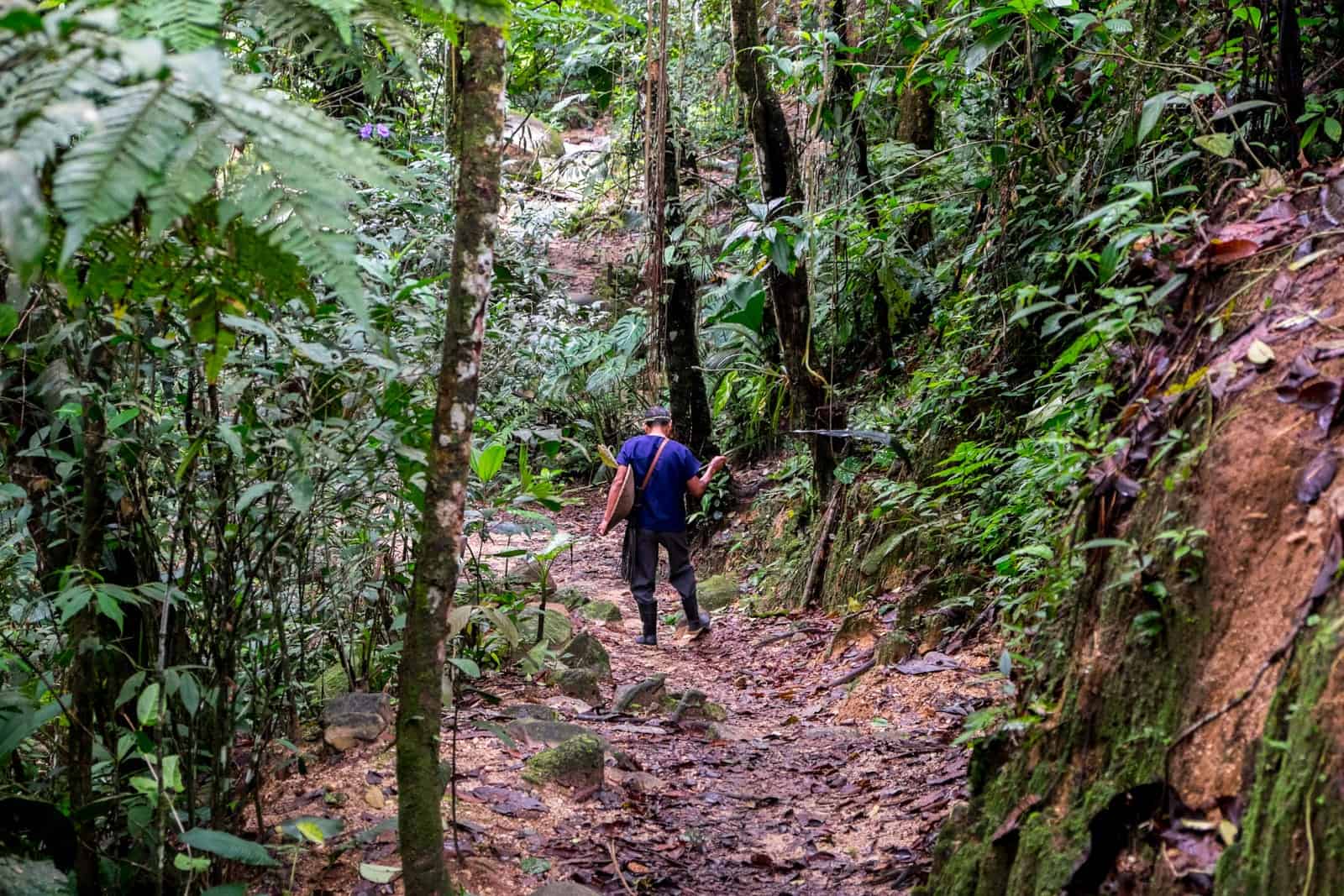
Adventure Travel , Ecuador
Ecuador Amazon Rainforest Guide – Local Living in the Most Diverse Biosphere on Earth
Disclaimer: This post contains affiliate links to handpicked partners, including tours, gear and booking sites. If you click through or buy something via one of them, I may receive a small commission. This is at no extra cost to you and allows this site to keep running.
From local living to jungle trekking this Ecuador Amazon Rainforest guide has everything you need to know to prepare for your trip.
When we boarded a local bus that would take us into the fringes of the tropical Ecuador Amazon Rainforest, we knew we were going somewhere extraordinary.
Whoever you are with, you’ll soon become a tribal force of friends, willingly ready to cut yourselves off from bustling civilisation and wrestle with the fears of land completely off-limits to your knowledge and comforts.
You’ll help one other and talk about life to the stillness of the Amazon jungle, cut only by the sounds of what lives and breathes within it. You’ll leave with a lifetime of memories about a patch of the Earth that’s incomparable to anywhere else.
After four hours, the long highways and clunky town roads gave way to small, winding gravel passages that snaked through a mass of green. Dense forests surrounded us, trees pushed into the sky and without the roads and the tiny houses that lined the way, we would have been completely lost.
The small town of Tena hummed with life – the main hub for those who live further within the density of the jungle – but it wasn’t long before we rattled off in a 4 x 4 truck for another 45 minutes. To meet our local family hosts, in the community called Pimilacha.
The area of the Amazon in Ecuador is just one small part of the extensive Rainforest as a whole, but the biggest of all six regions of Ecuador. Not many people know that the Amazon is in Ecuador too, yet despite it only filling a ‘tiny’ space in the country with less than 800,000 people living within it, it still makes for a big journey, filled with adrenalin, exploration, and adventure.
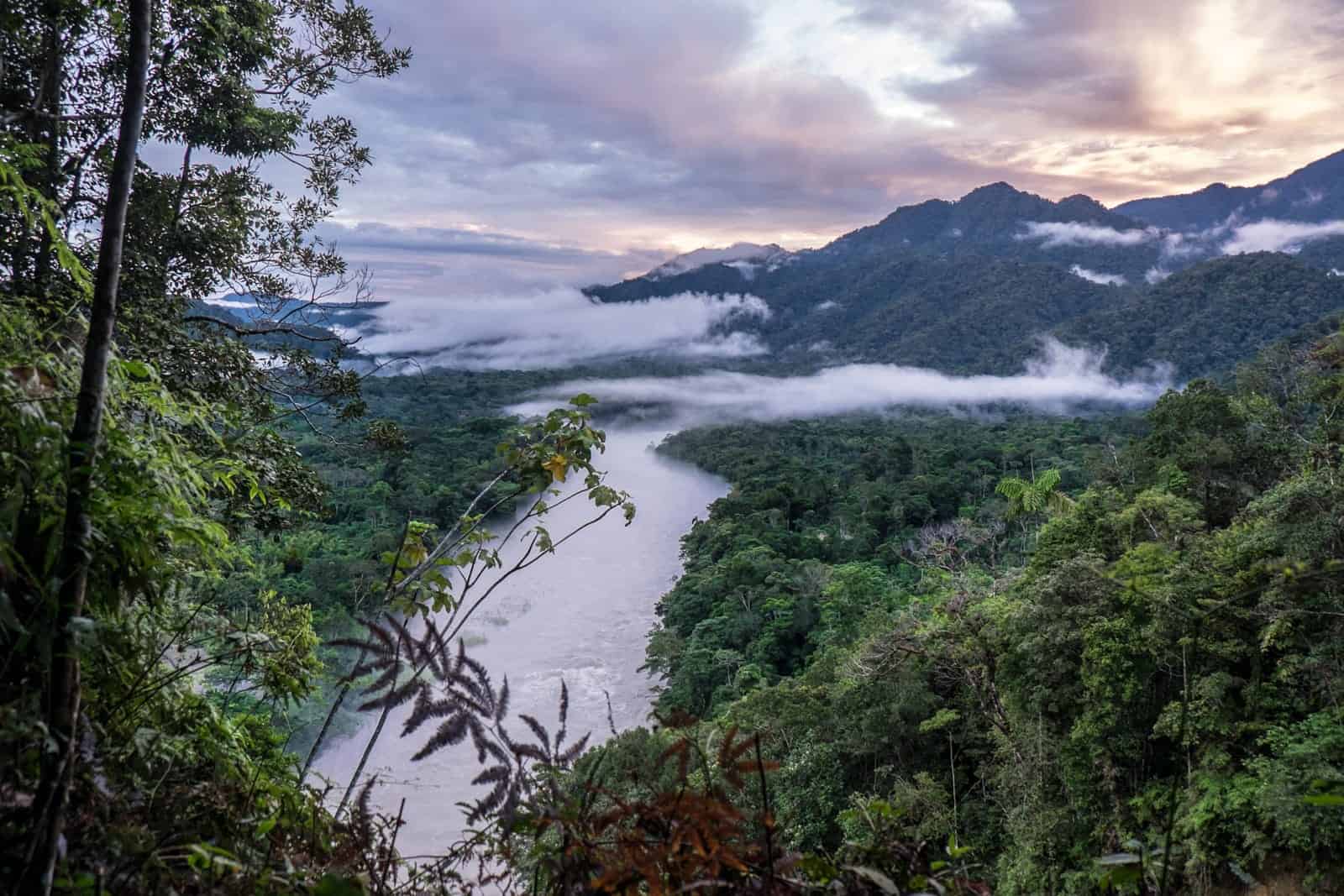
The size of the Amazon Rainforest is mind-boggling, being one of the most diverse ecosystems in the world, encompassing an area of over 2.5 million miles across nine countries in South America – Bolivia, Brazil, Colombia, Ecuador, Guyana, French Guiana, Peru, and Suriname. This makes it the most important rainforest in the world, spanning around 40% of the entire continent.
With vast biodiversity that is said to cover just under one-tenth of the earth’s landmass, the Amazon holds thousands of different species of animals and plants, beautiful landscapes woven together by rivers, lakes, seemingly infinite swaths of dense rainforest, as well as some of the world’s last remaining indigenous tribes.
According to this extensive list of facts about the Ecuadorian Amazon Rainforest, there are over 1,400 different animal species, including 200 mammals, 121 reptiles and nearly 600 bird species. And that’s not including the 70,000 types of insects and the 1,000 species of trees.
It’s exactly this untouched landscape status, filled with half of the world’s known species, and that so much of it remains completely uninhabited and unknown, that attracts the more curious who want to peer in and try to understand it.
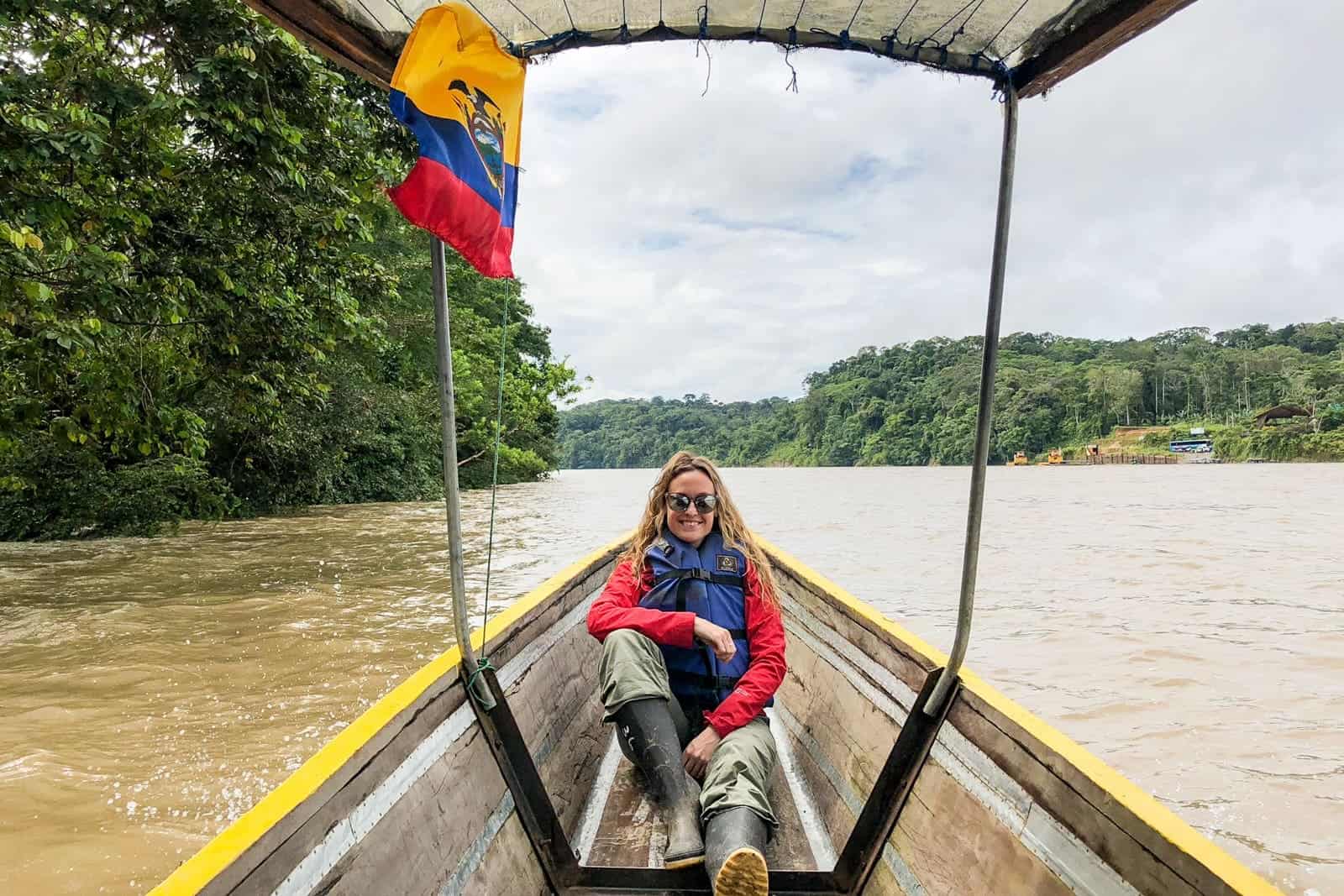
Longboat trip on the Amazon River in Ecuador
Why go to Ecuador to Visit the Amazon?
Where to stay – local living in the amazon jungle, amazon people and culture, shamanic practice in ecuador and the amazon rainforest, amazon adventure activities, ecosystem and wildlife – enjoying the rainforest, when to visit the ecuadorian amazon rainforest, how to get to the ecuador amazon, is travel to the amazon safe, is it difficult to travel in the amazon, do i need vaccinations for amazon travel , what to pack for travel to the ecuadorian amazon, ecuador amazon tours – planning your trip, want to visit the amazon in ecuador pin it.
Since it’s such an extensive region, it becomes hard to pinpoint which country has the best benefits regarding a trip to the Amazon. With nine different countries sharing a part of the Amazon rainforest, you might think you’ll miss part of the adventure if you only stay in one country. Yet, it’s good to consider choosing a country with plenty of services and regular tours into the Amazon as the best option.
Truly remote parts of the Amazon are either off-limits, impossible to get to, or would simply take multiple days to reach.
Travel to Ecuador is about seeking pristine nature, with the Galapagos or the Amazon Rainforest being the core trips that the budget is allocated to. Quito is simply the landing ground for such wider adventures in the country.
When outsiders visit the Amazon, they often travel to its fringes, where infrastructure and the commodity of lodgings allow, yet it still provides enough off-beat landscape to experience its true density and for a visitor to feel right in the heart of the rainforest. The Ecuador Amazon region is not different in that offering.
That’s because the Amazon Rainforest in Ecuador is home to the most diverse biosphere on earth – Yasuni National Park and Biosphere Reserve. It’s one of four national parks in the Amazon Rainforest in Ecuador, whose UNESCO World Biosphere status makes it a special place for those adventurers who love watching wildlife and learning about nature.
My first trip could have been a long day trip only touching the sides of this eco bowl, but instead, I wanted immersion. Choosing the G Adventures Local Living Ecuador – Amazon Jungle trip , I got to live with a local family for five days and experience the Amazon from those most connected with it.
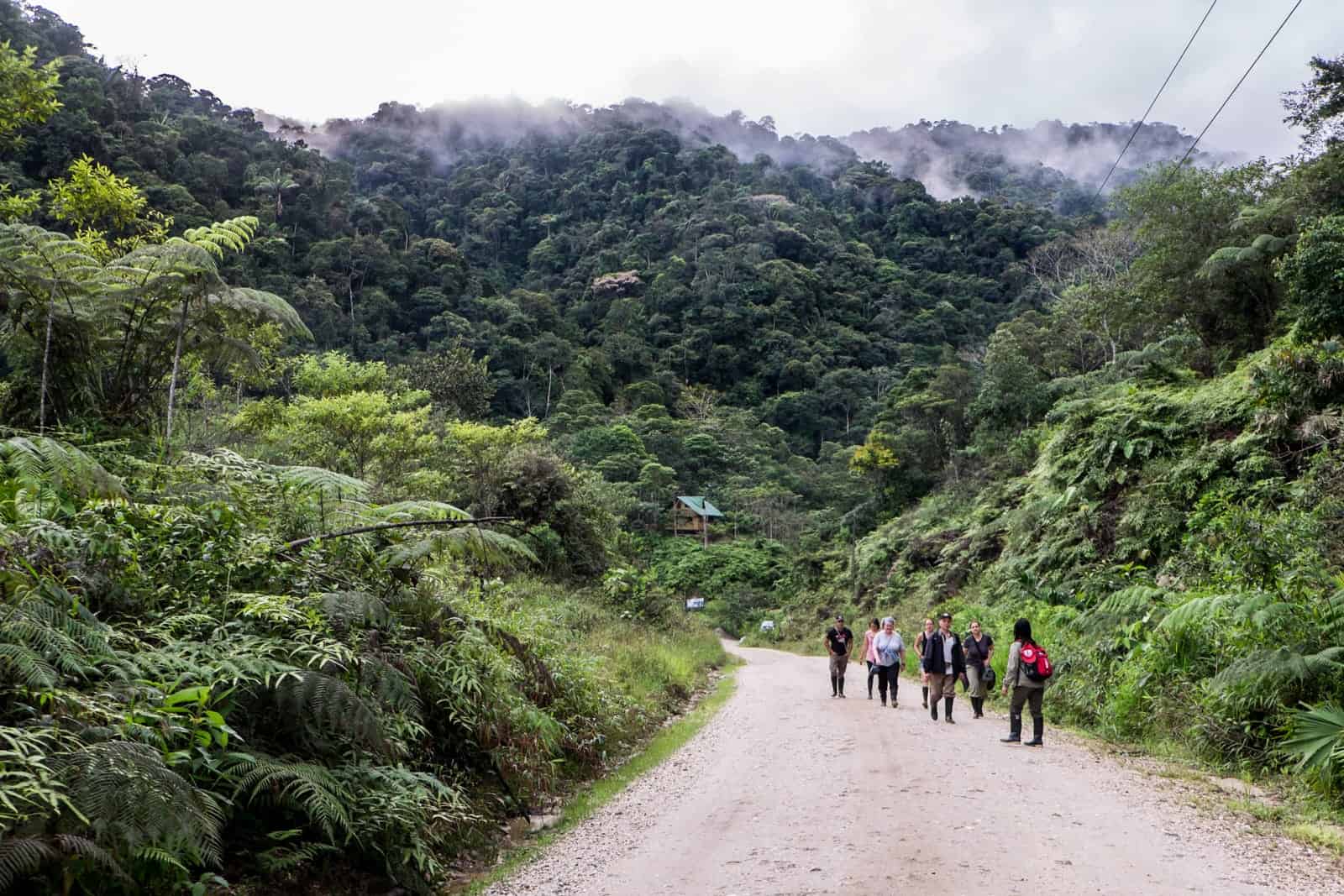
Local Living in the Ecuador Amazon Rainforest
In the Ecuadorian Amazon, the community of Pimilacha (meaning butterfly in native Quechua) is small but big on welcoming outsiders to understand the way of life here. There are around 25 families, with two working in the tourism industry to host visitors.
The family I lived with has been working with G Adventures for 25 years. In fact, the company’s first tour was to this very place after founder Bruce Poon Tip visited the head of the household and Sharman, Delfin and saw the potential in bringing travellers and communities together for the greater good.
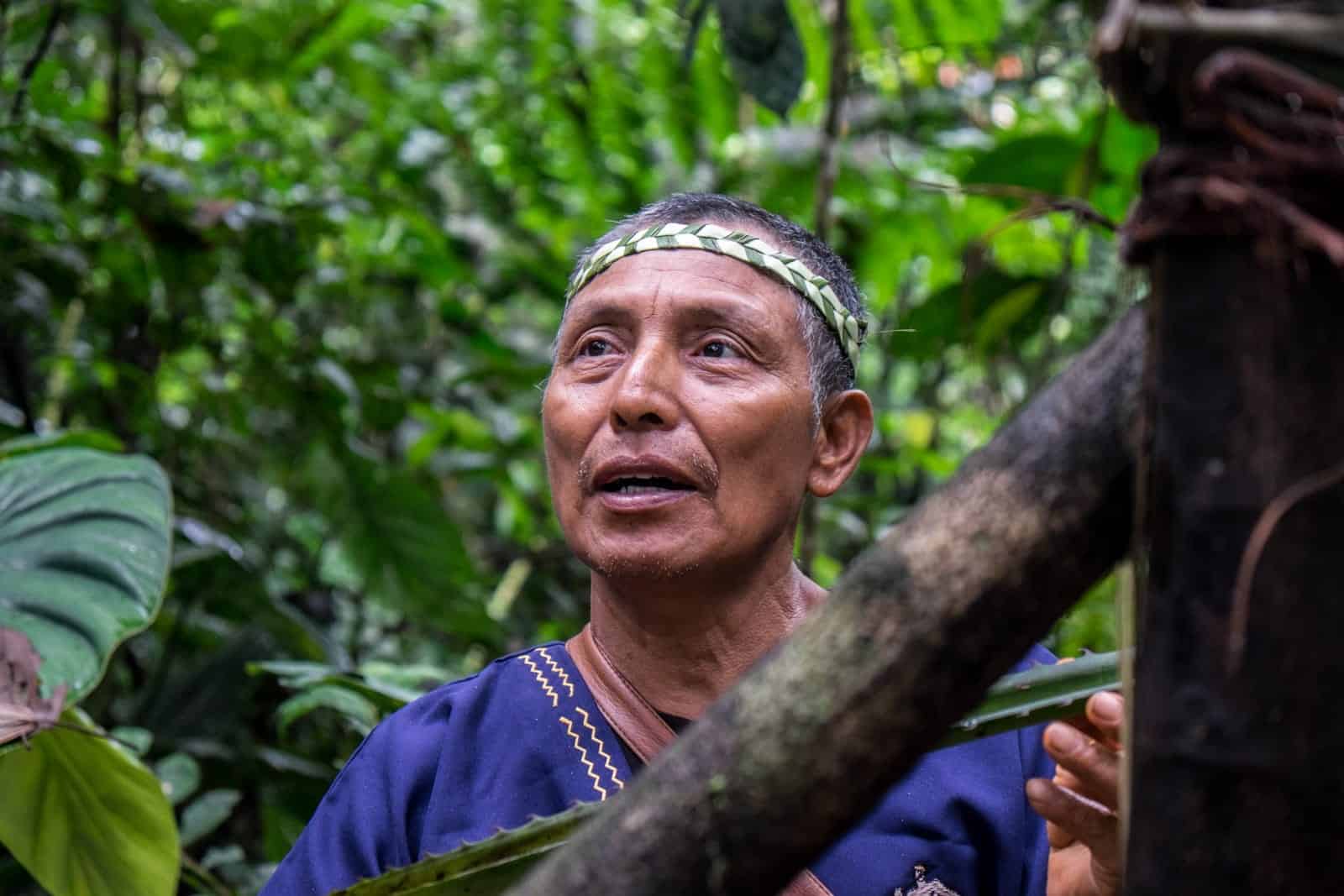
Exploring with Delfin
Quechua culture and traditions are kept alive, communities continue to flourish, and travellers are provided with a unique experience at a local level in an Amazon lodge, in a more remote destination. All the good of travel, without the harmful social impact.
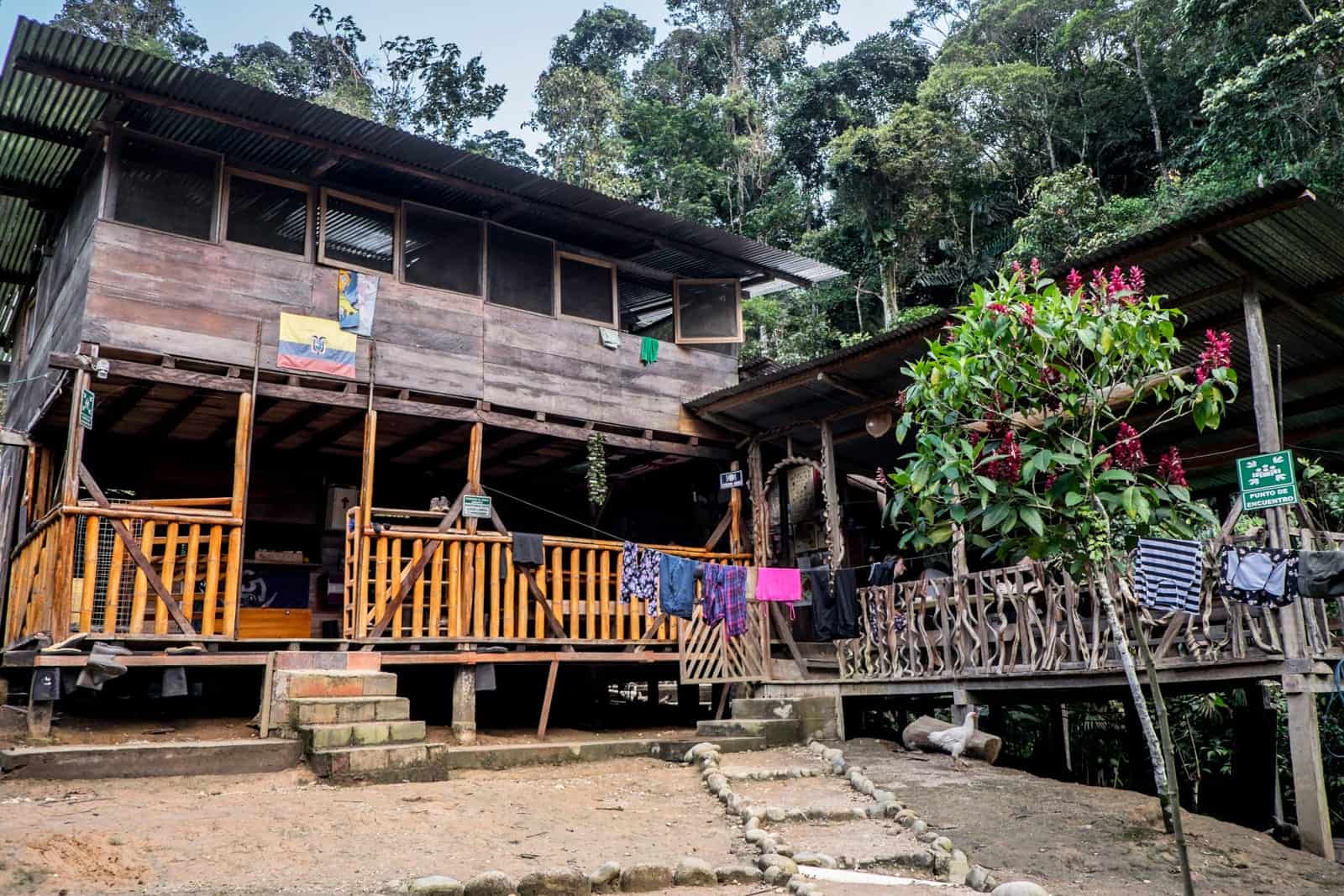
Our local house in the Ecuador Amazon Rainforest
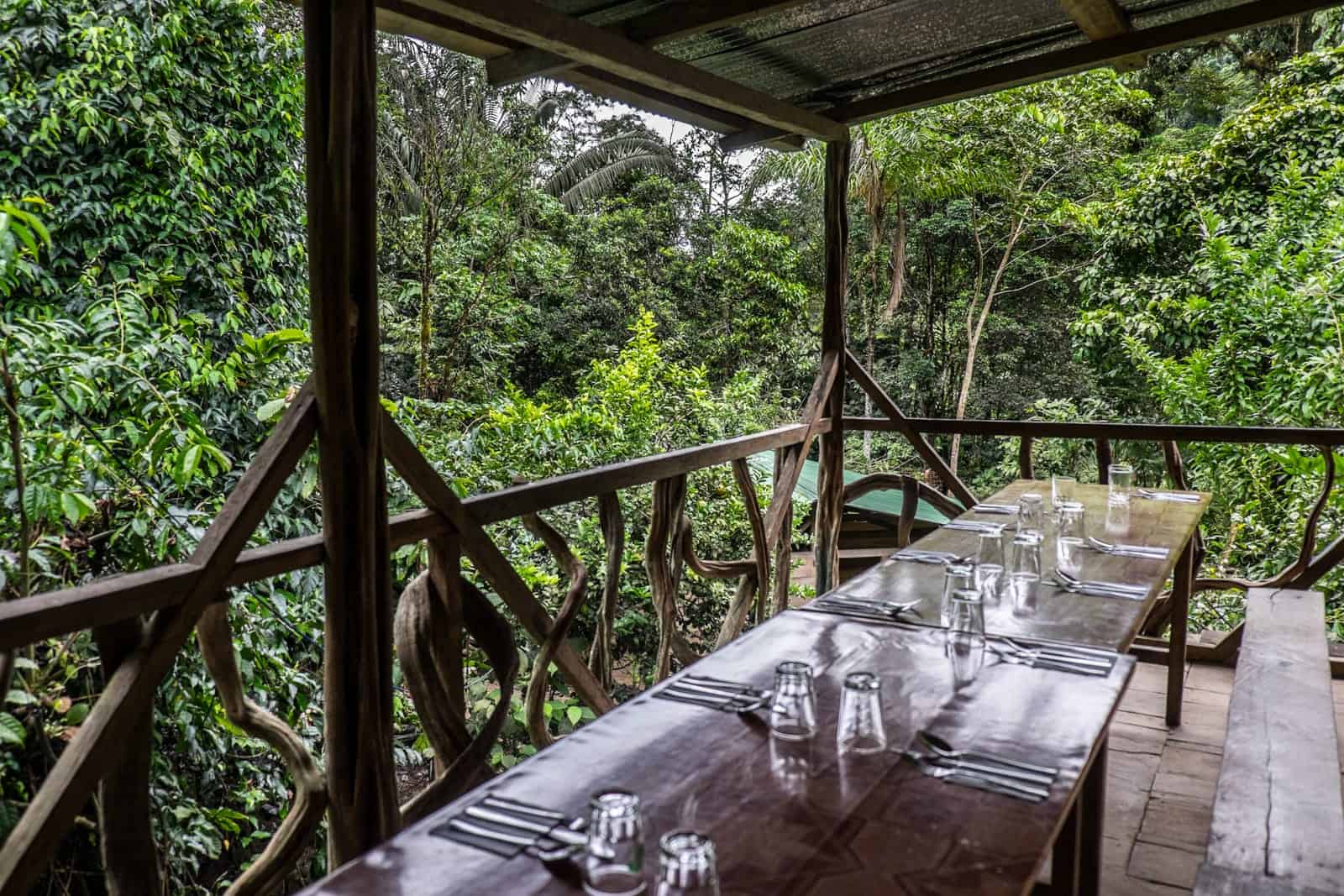
The Ecuador Amazon Lodge for travellers
The family members are all involved in tourism, especially the two sons. Other family members live in the city of Tena, as what often happens when the populations disperse and later generations leave to go to high schools and universities that do not exist out in the jungle hinterland.
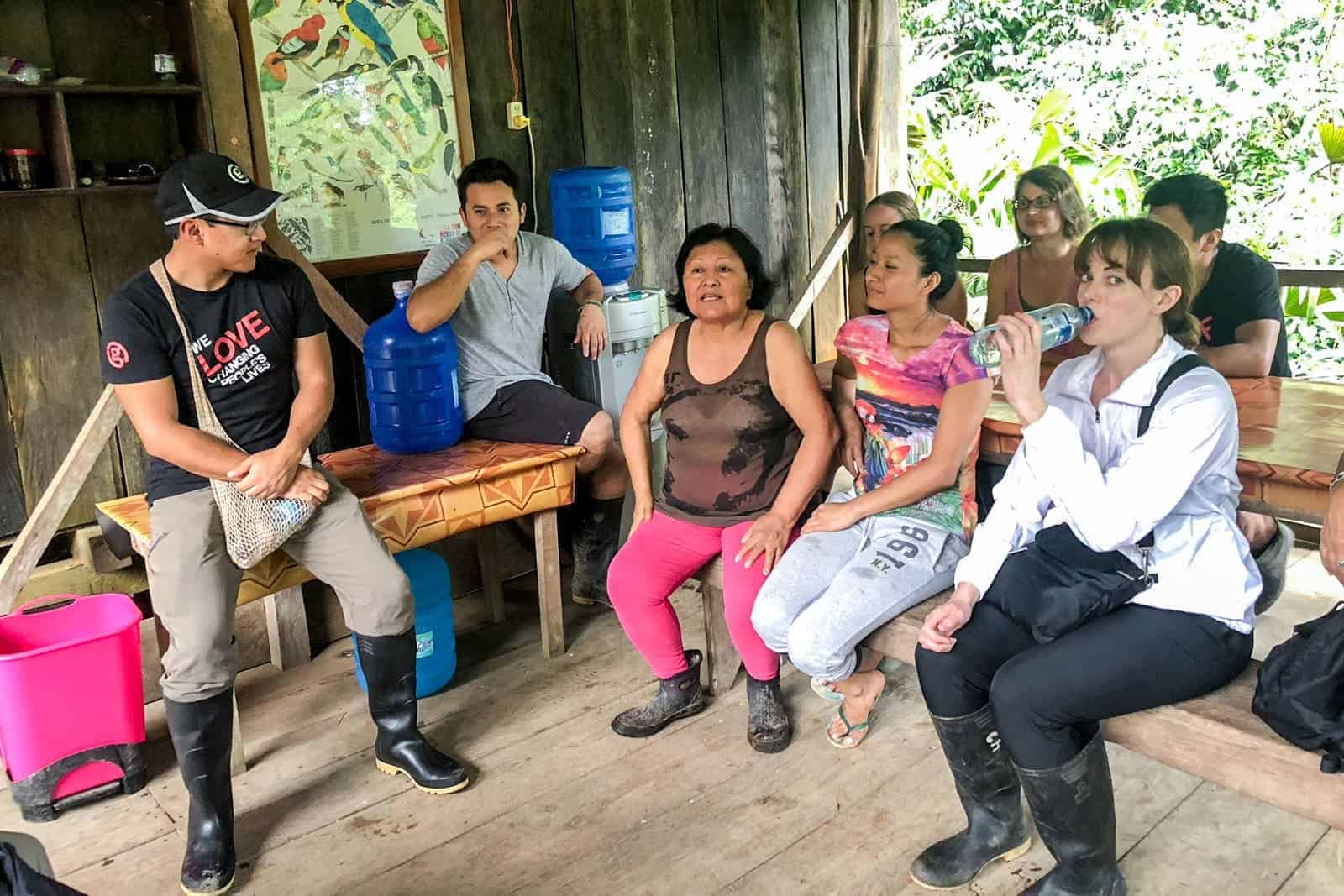
The main family house is where you’ll eat and spend the evenings relaxing, with the group residing in the secondary building right next to it in what are predominately twin rooms. Each day we were presented with a delicious breakfast, lunch and dinner, cooked by the mother and daughter, which included native products like plantain and yucca – much needed fuel after a day spent exploring.
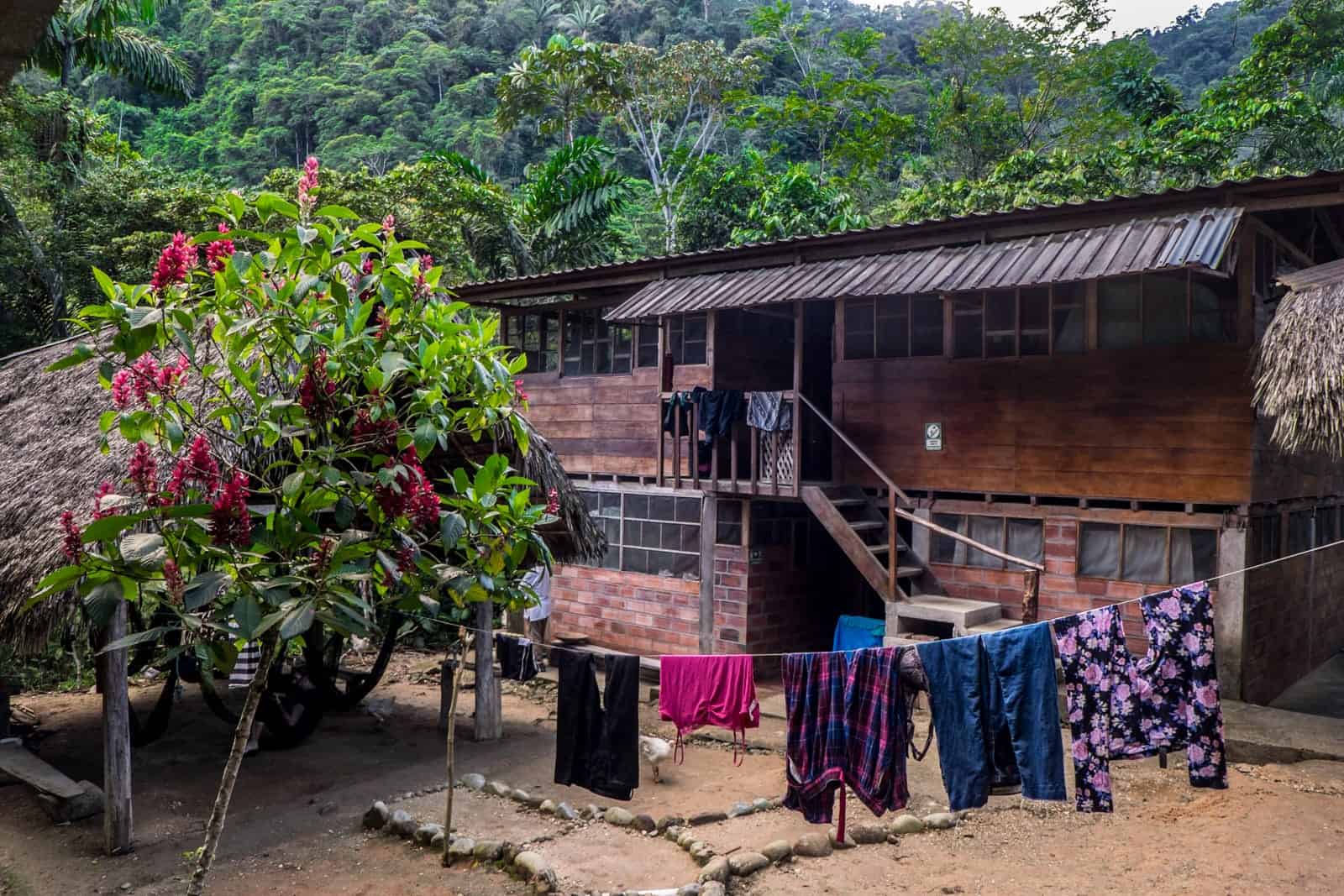
Typical Ecuador Amazon lodge in the jungle
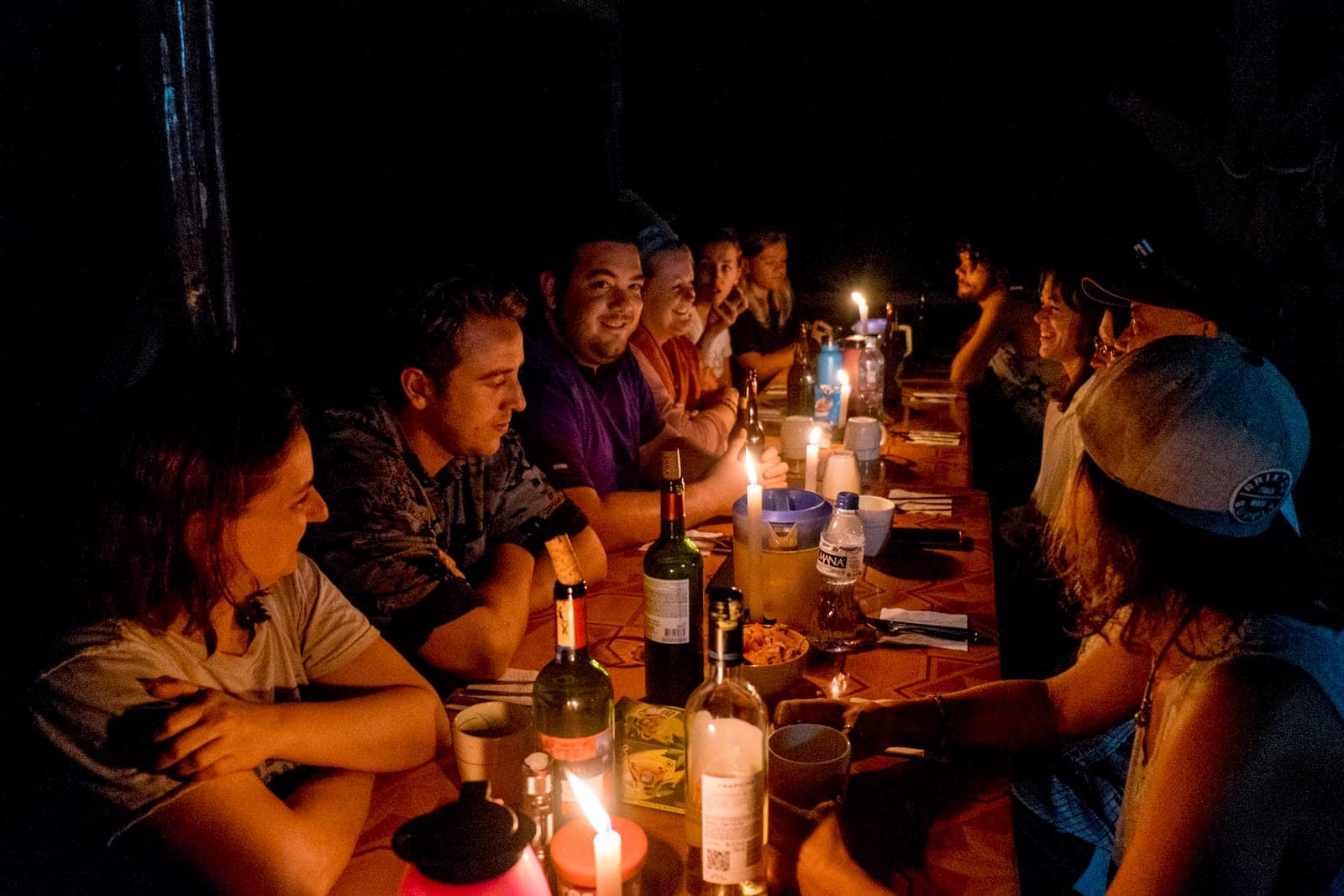
Nights spent in the Ecuador Amazon by candlelight.
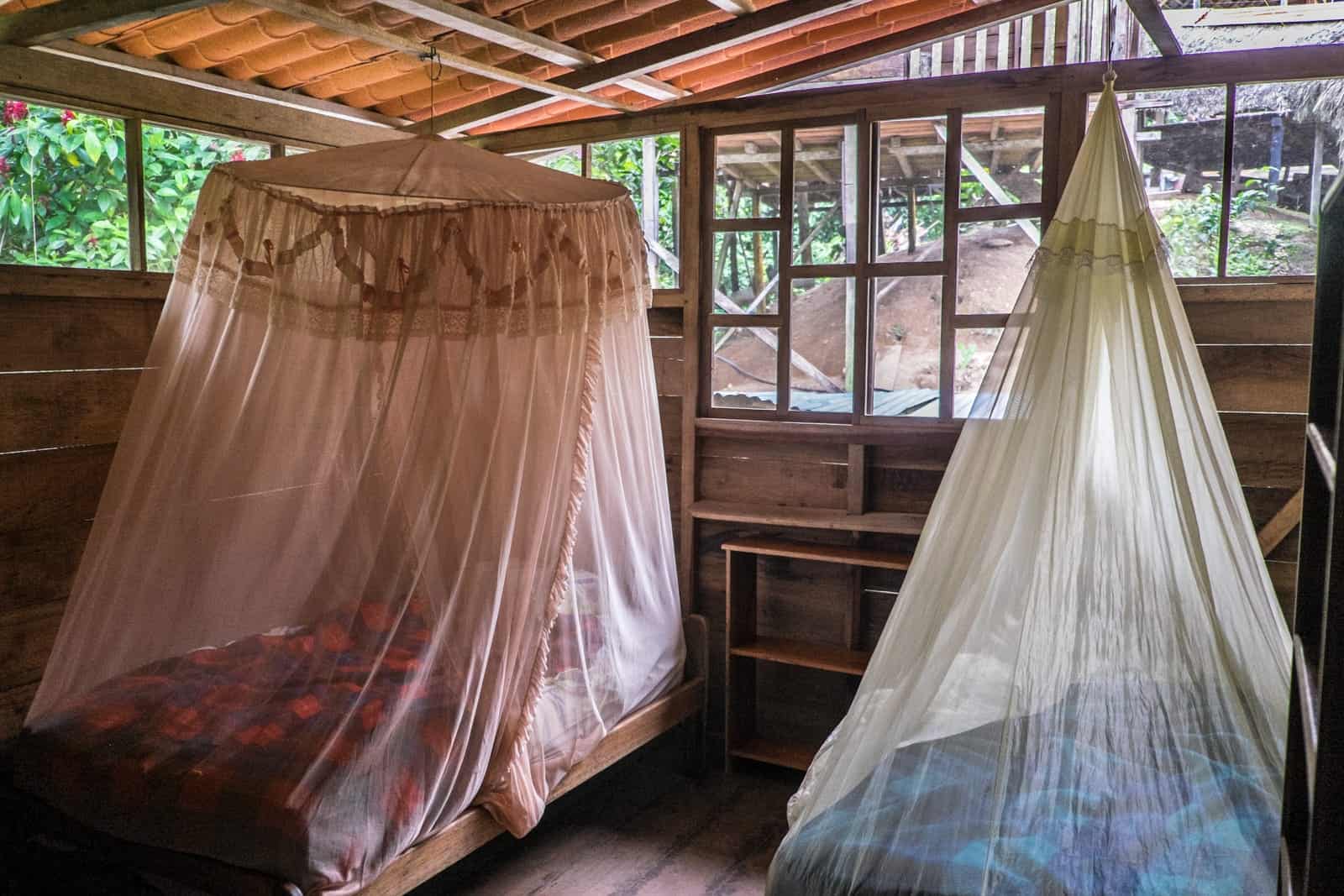
Our Amazon lodge bedroom
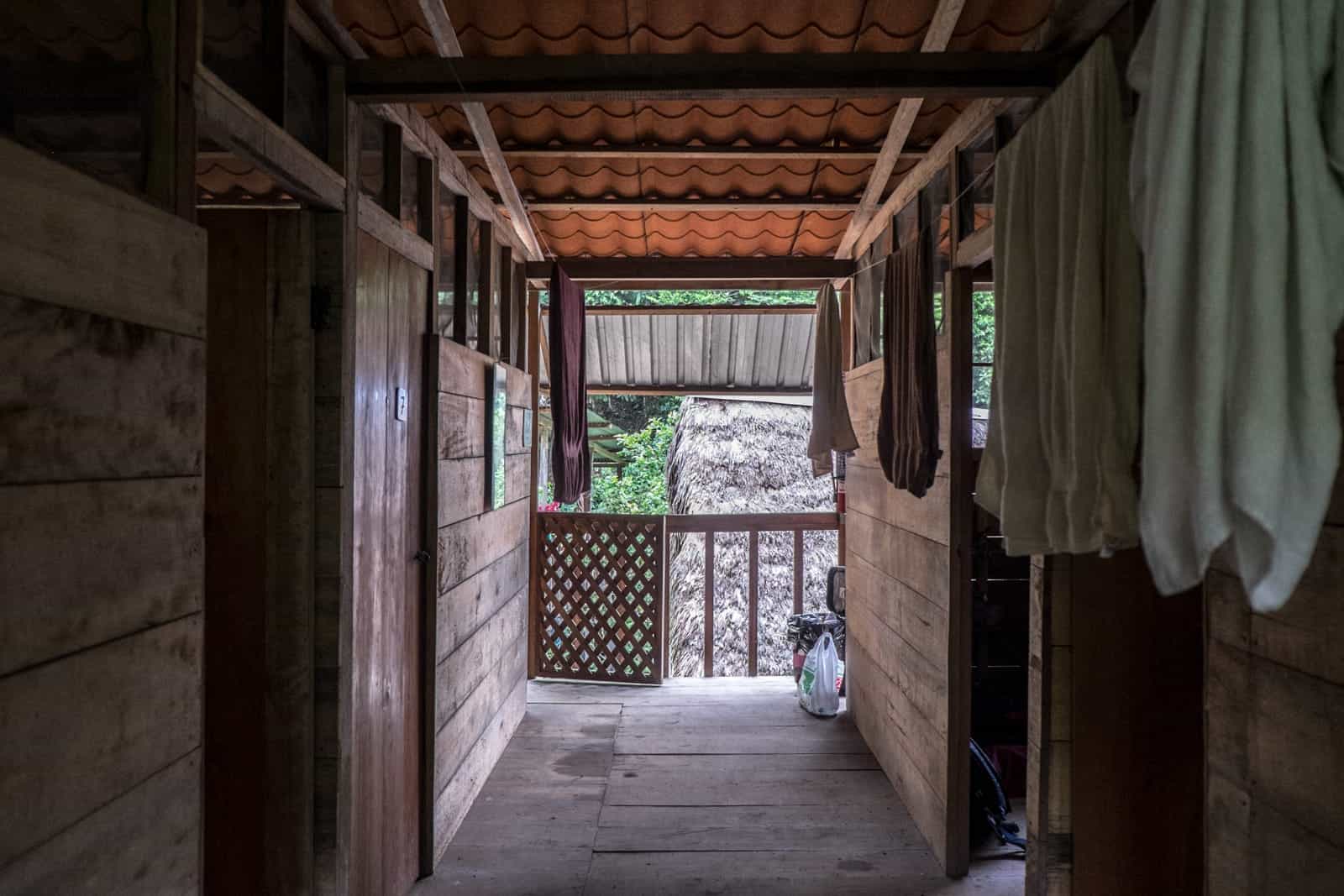
You quickly get to learn about life in the Amazon jungle. Each day we got to interact with the family, with the two sons and Delfin being the leaders in exploration, armed with a machete and a lot of knowledge.
Jungle bush walks and the education of our surroundings became a daily ritual, with lessons in how to use a blowgun, coffee and chocolate making sessions being an added cultural extra. We were even taught how to prepare and cook grubs before daring one another to take this culinary rite of passage.
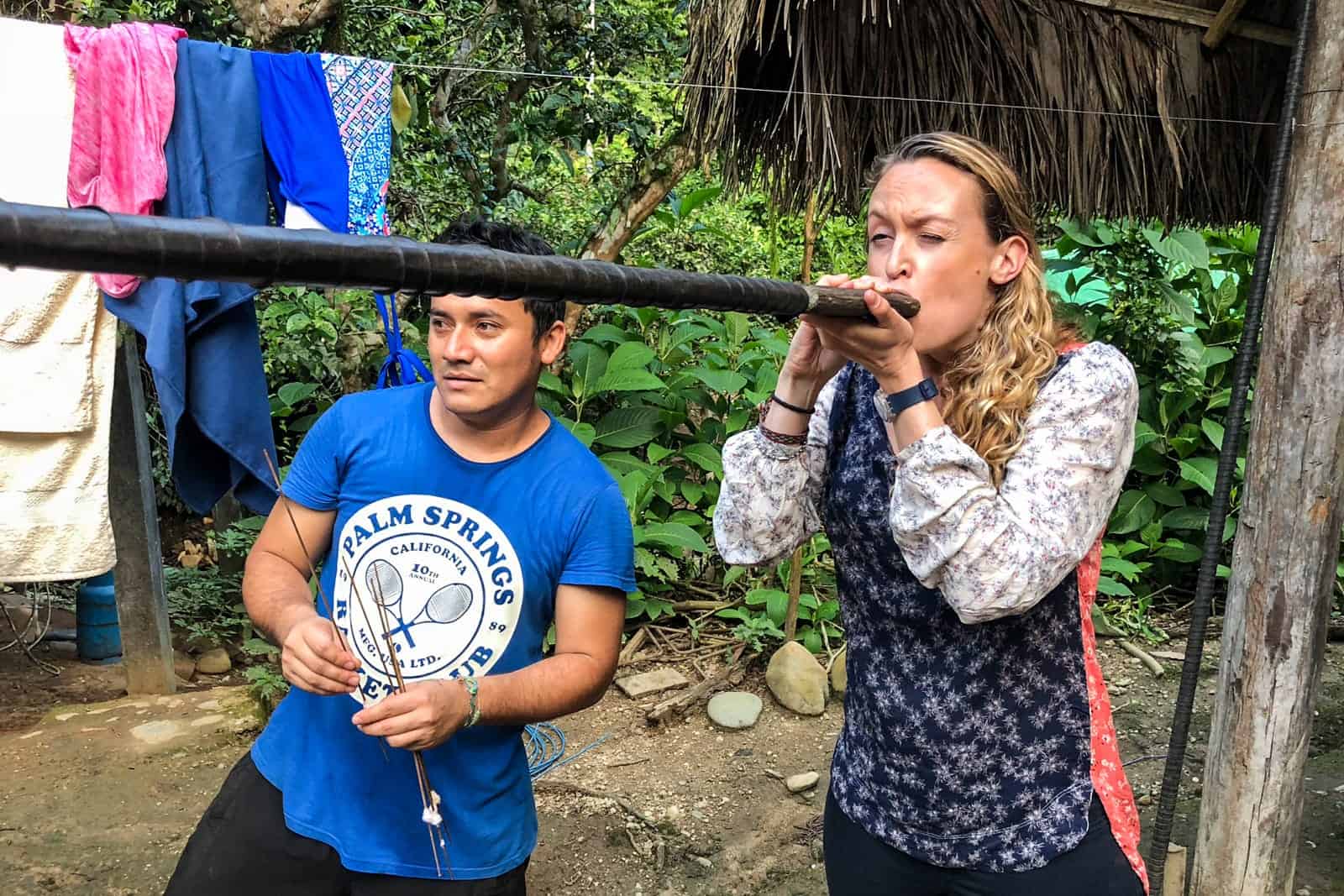
Learning how to use a blowgun.
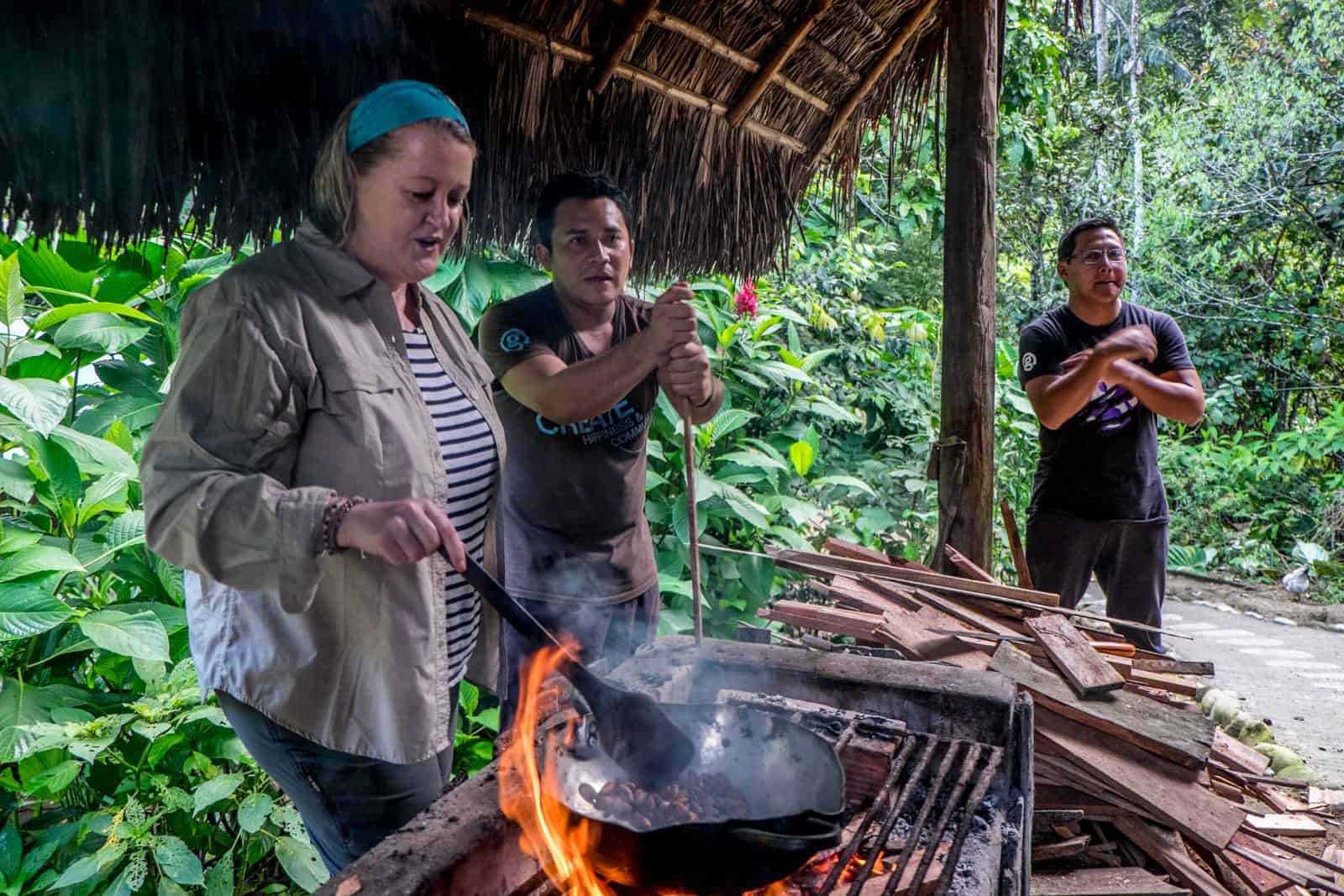
Ecuadorian chocolate making in Amazon jungle.
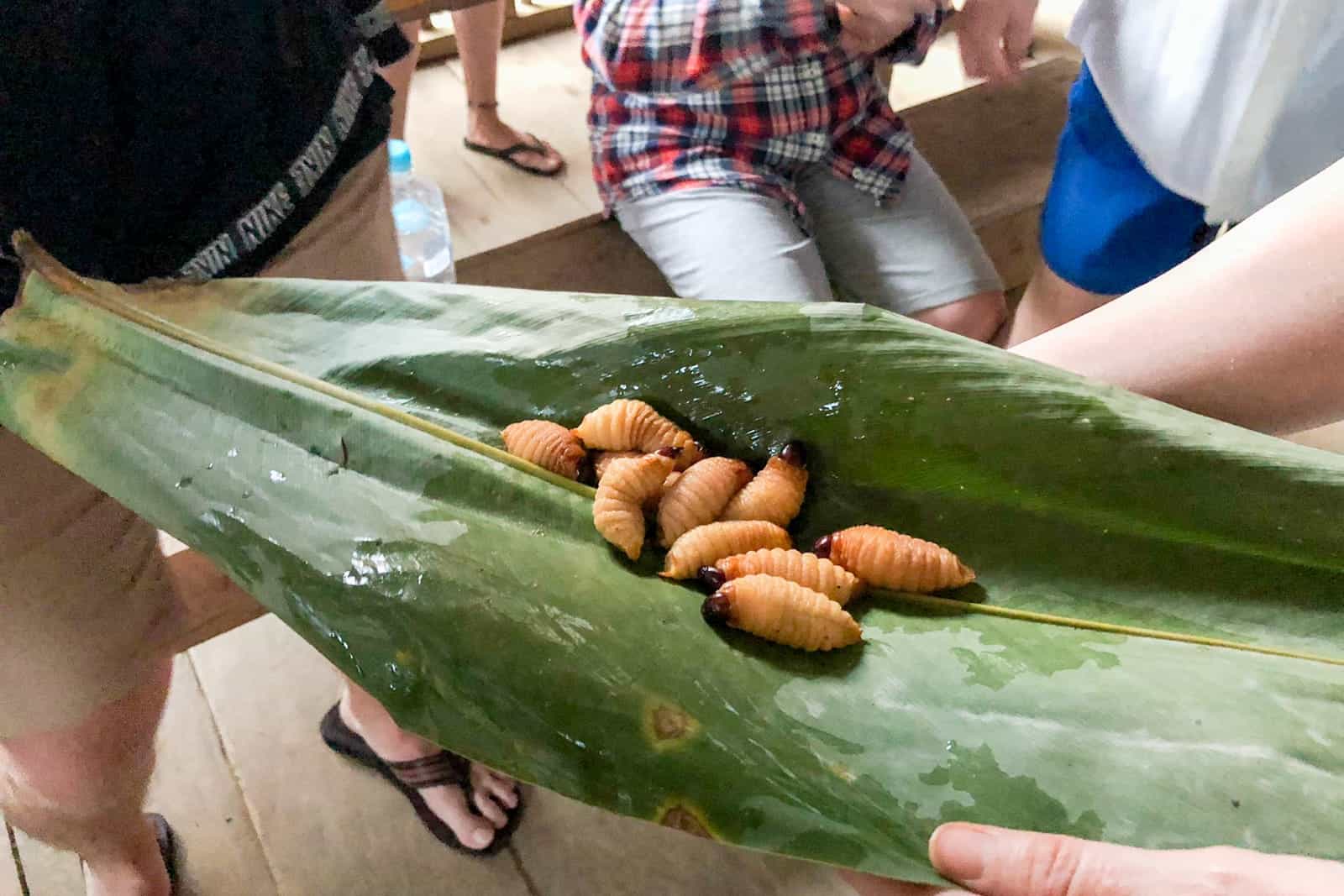
Who dares to try the bush grubs?
The mother taught how us to make Chicha, a typical practice where the women of the household chew on yucca before spitting it out, kneading it and letting it ferment overnight. Surprisingly, the taste of this particular form of natural jungle alcohol isn’t so bad, and of course, there is a non-fermented version available for visitors.
Browse dates and book your Ecuador Amazon homestay here .
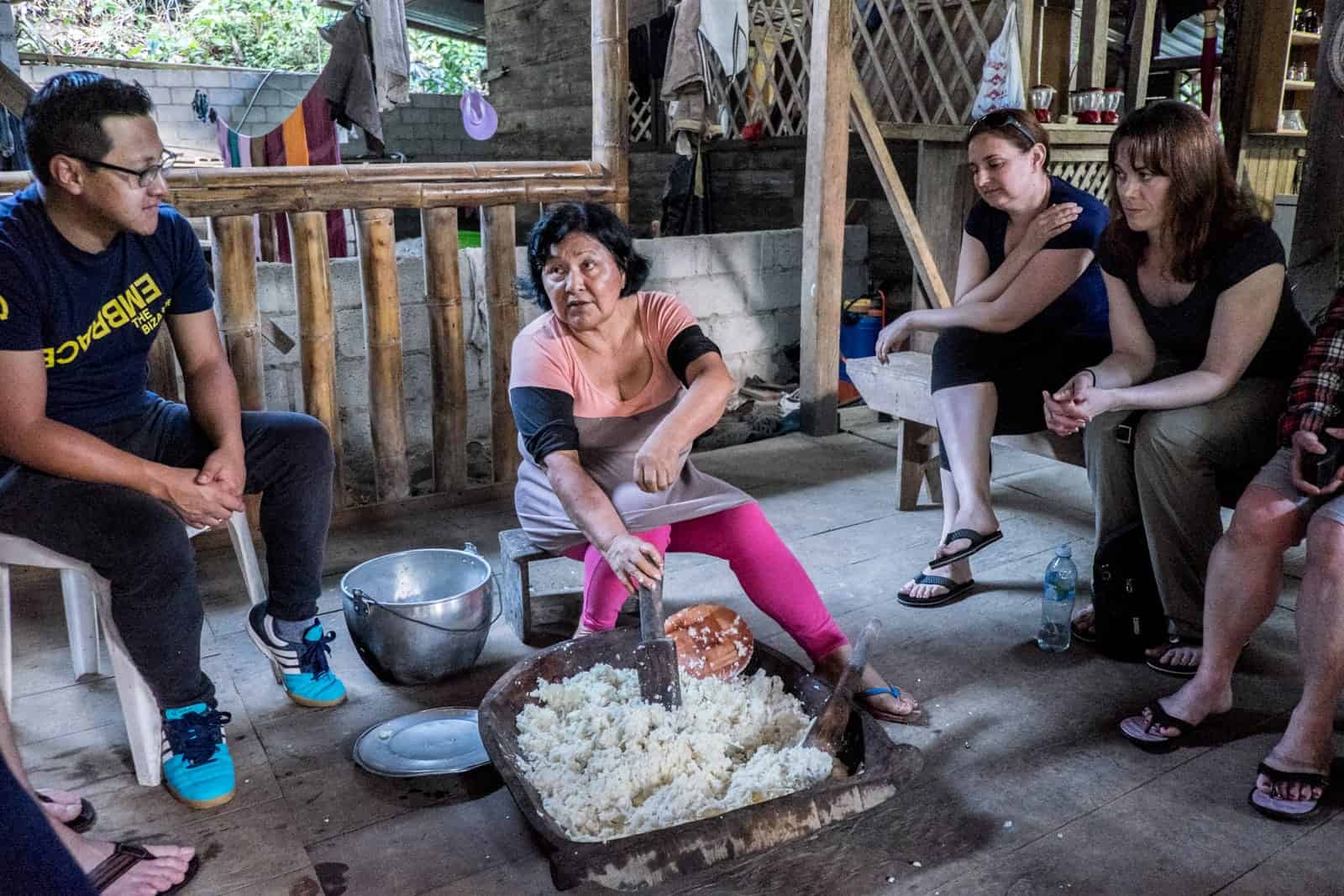
Making chica with travellers in Ecuadorian Amazon.
Culture, Adventure, and Nature in the Ecuador Amazon Rainforest
The Amazon Rainforest summons up images of remote tribes. Ecuador has nine indigenous communities that live in the rainforest and two or three tribes that choose to live in isolation, living as their ancestors did thousands of years ago. This is not our place to disrupt a social hierarchy and remote way of life.
Many of these tribes are deeper within the Amazon, where it would take days for those who live on its fringes to reach them. If you want to experience and learn about the indigenous tribes of the Amazon, you can from the locals you live with, since core parts of the culture and traditions have been passed on, even if these communities now live differently.
Jungle walks teach you about basic survival, hunting and the medicinal properties of plants; daily life teaches you about the coexistence with nature and the respect of the rainforest’s other (animal) inhabitants; Shamanic culture teaches you about how humans can harness the power of nature and go back to our basic instincts and tranquillity.
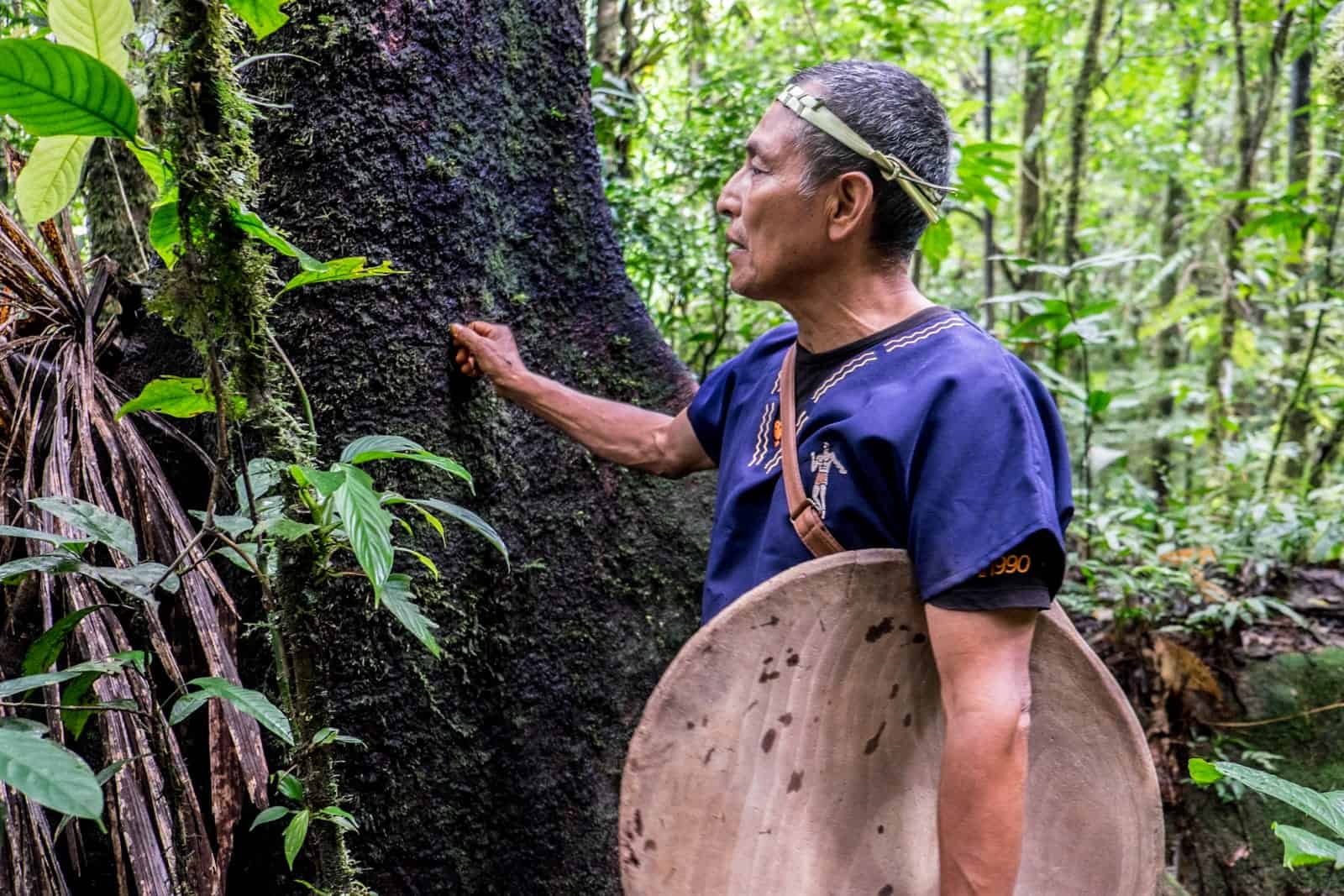
You might get to experience the Ecuadorian Amazon Shamanic culture firsthand, learning how they blend medicinal herbs, nature, and their faith in spirits to heal and lead their tribes. If you’re interested in this mysterious healing culture, there are excursions that can take you to traditional villages and take part in this fantastic experience.
At my local family home, we were given an introduction to the shamanic practice one evening by candlelight. We witnessed songs and chants, the concept of oneness with nature and how part of this tied in with rituals and ceremonies such as weddings.
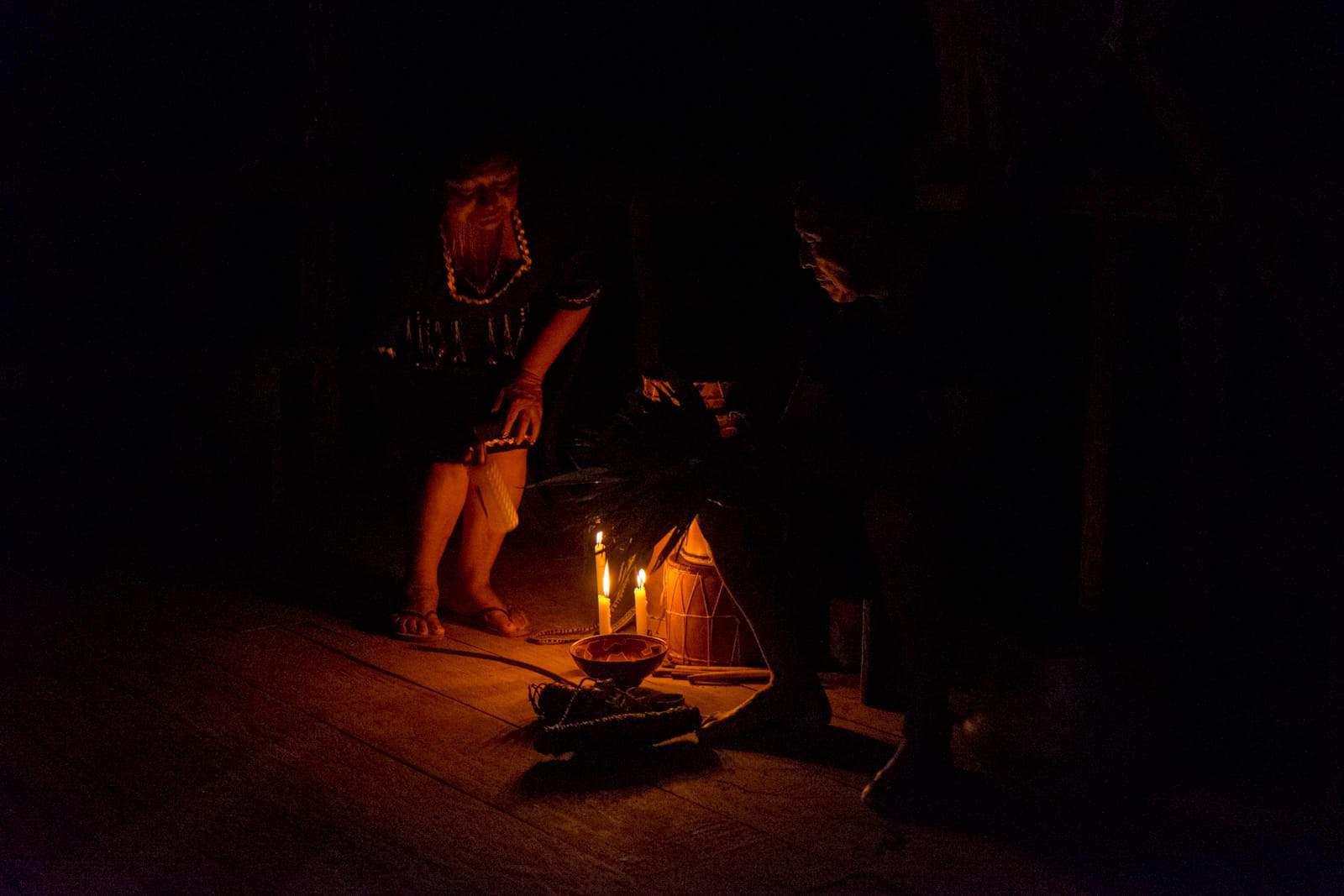
Understanding Sharman practice in the Ecuador Amazon.
I was lucky in that I got to have a one-on-one experience with Delfin; a curiosity in a form of healing that goes to the very core of what we are and what a lot of us have lost touch with – nature.
In an empty hut, I sat on a wooden floor with my back facing Delfin. Spatters of cleaning oils rapidly flew through the air as they were lightly spat on me, followed by the deep breaths of the Sharman who then continued with chanting. As he chanted he used a small batch of leaves to tap me lightly on the head and in a rhythm. The first taps were on my head before making a circular motion from the head around the shoulders.
He sang. His voice was the only one I heard in the stillness of the Amazon, overriding the nature surrounding us. His song was in unison with the movement of the leaves, before placing his mouth to my head, breathing in with a swift sucking motion. Together, this is all a part of a process used to draw out and read energy via the head.
When Delfin had his reading, he closed the ceremony by spitting more cleaning oil before pouring some into my hands, which I was asked to smell with long-drawn breaths, rub on my face and sweep through my hair. I was told of my intense stress levels, and how to breathe deeply every morning to take energy from the sun.
I was told that in order to see more intensely, one would have to go through the rituals of using Ayahuasca, although that is a controversial issue since many travellers have been lured to unregulated Ayahuasca retreats with often dangerous consequences. The practice of Ayahuasca with tourists is illegal in the Amazon of Ecuador.
If you’re looking for the thrill of adventure and exploring the nature of the rainforest, the Amazon has plenty of activities. Whether it’s kayaking in the streams of the Amazon River, wildlife watching or trekking the jungle by foot with a guide, you’ll have an experience of nature at its most raw.
Our days were spent walking through the jungle to the sound of monkeys who followed our every move out to viewpoints across the famed Amazon River, or learning about medicinal plants and survival with knowledge Delfin continues from his forefathers.
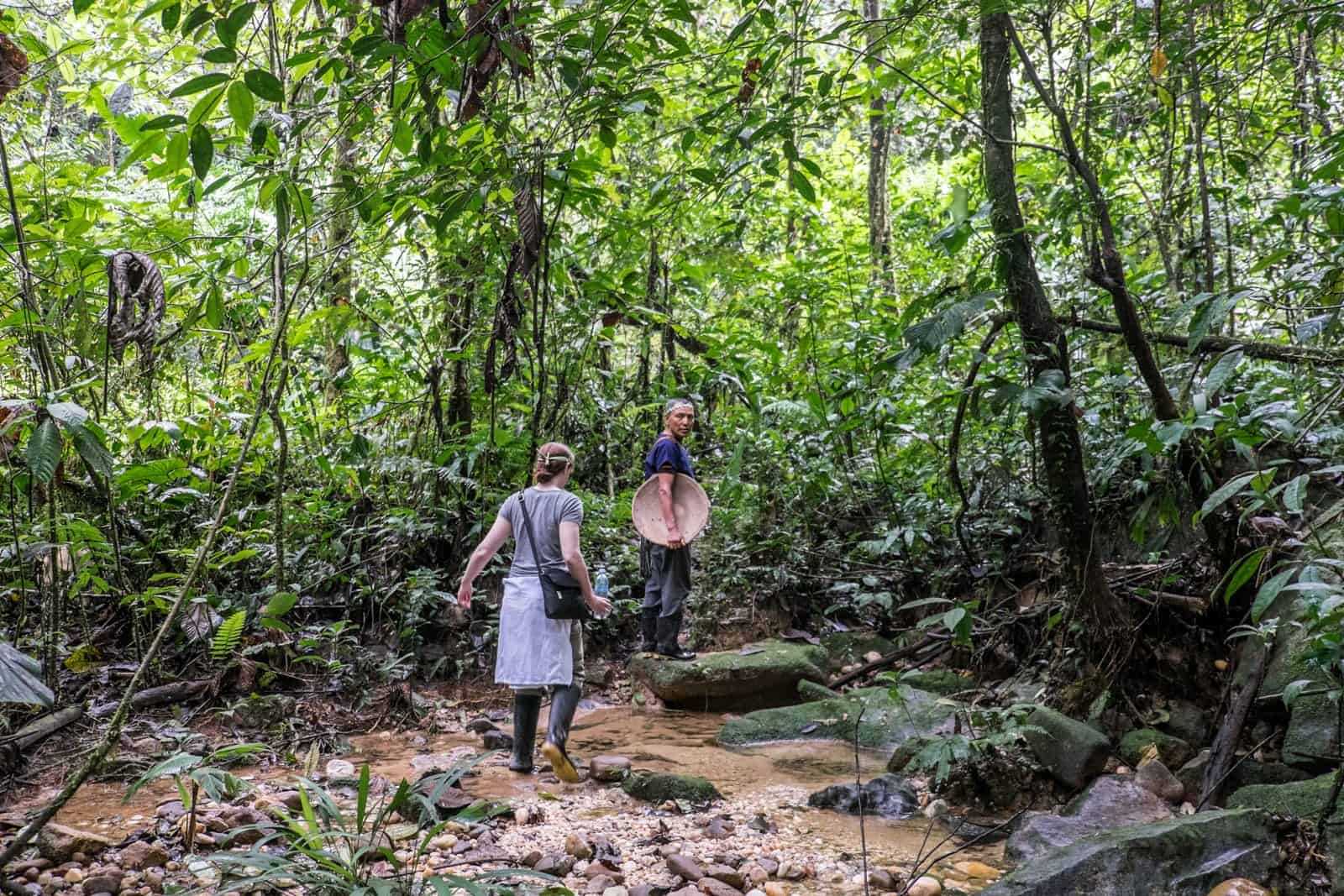
Jungle trekking in the Ecuador Amazon Rainforest

Deep into the jungle.
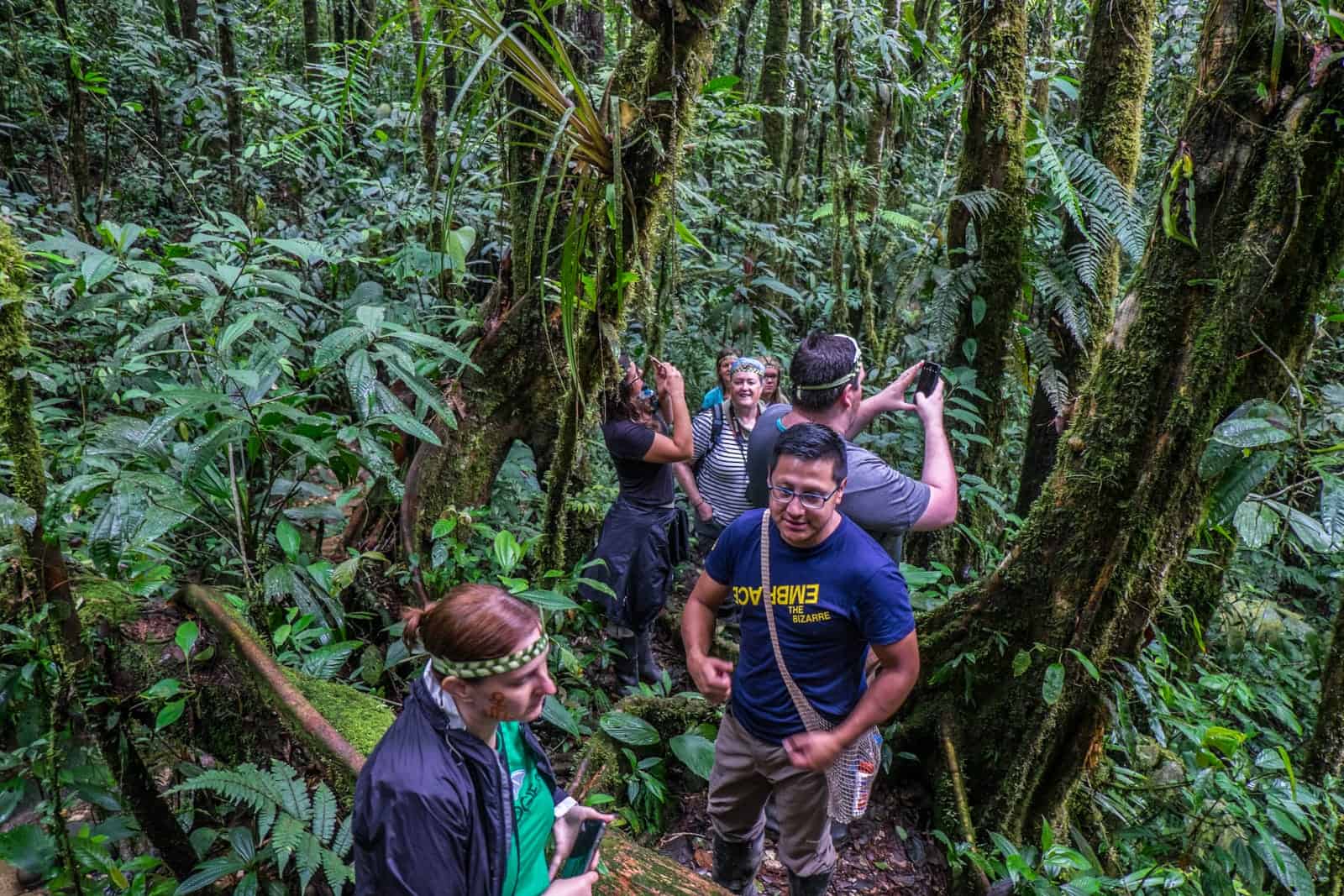
Jungle treks in Ecuador are best experienced via a small group tour with a local guiding the way.
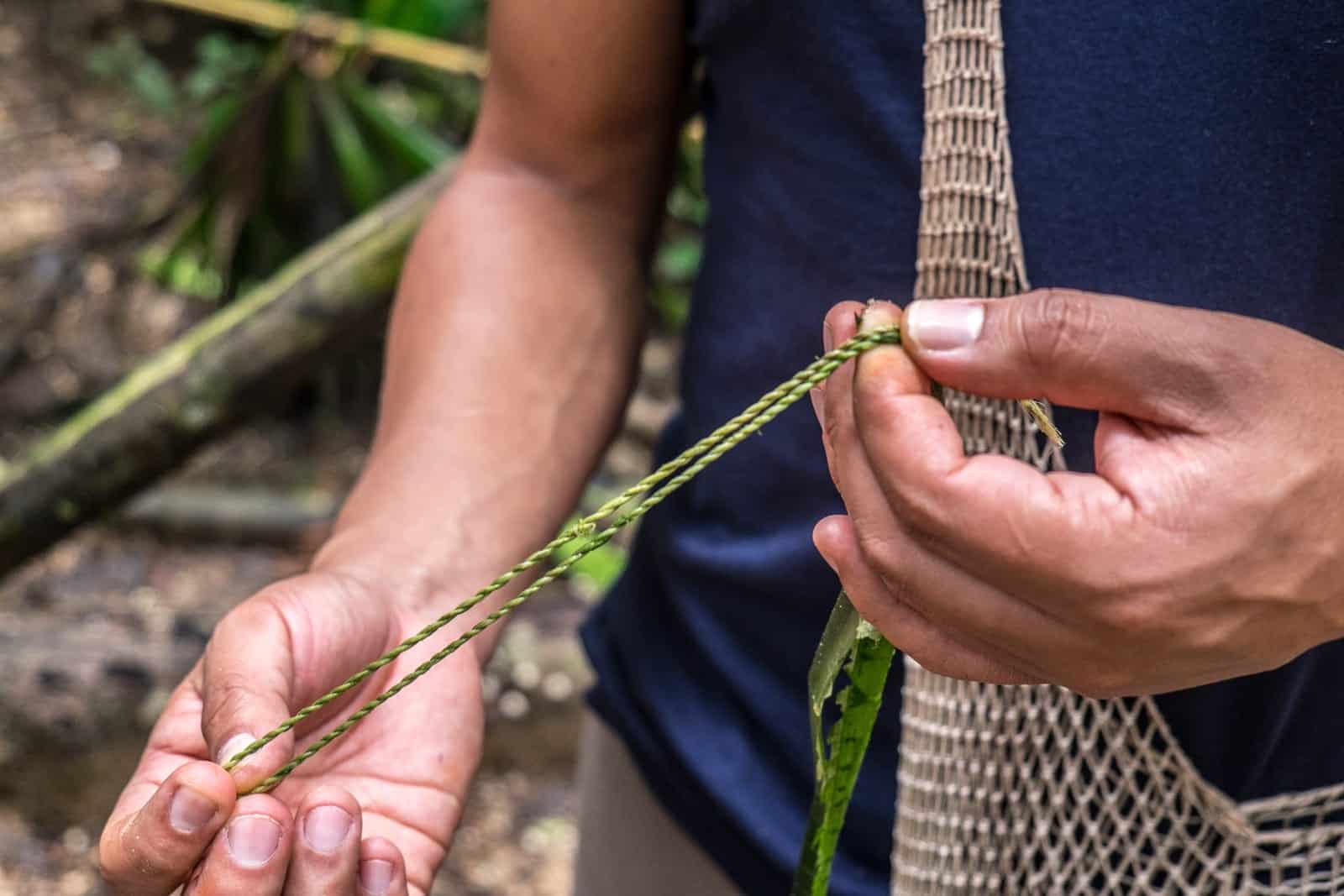
Plant rope – one of the essential survival tools in the Rainforest.
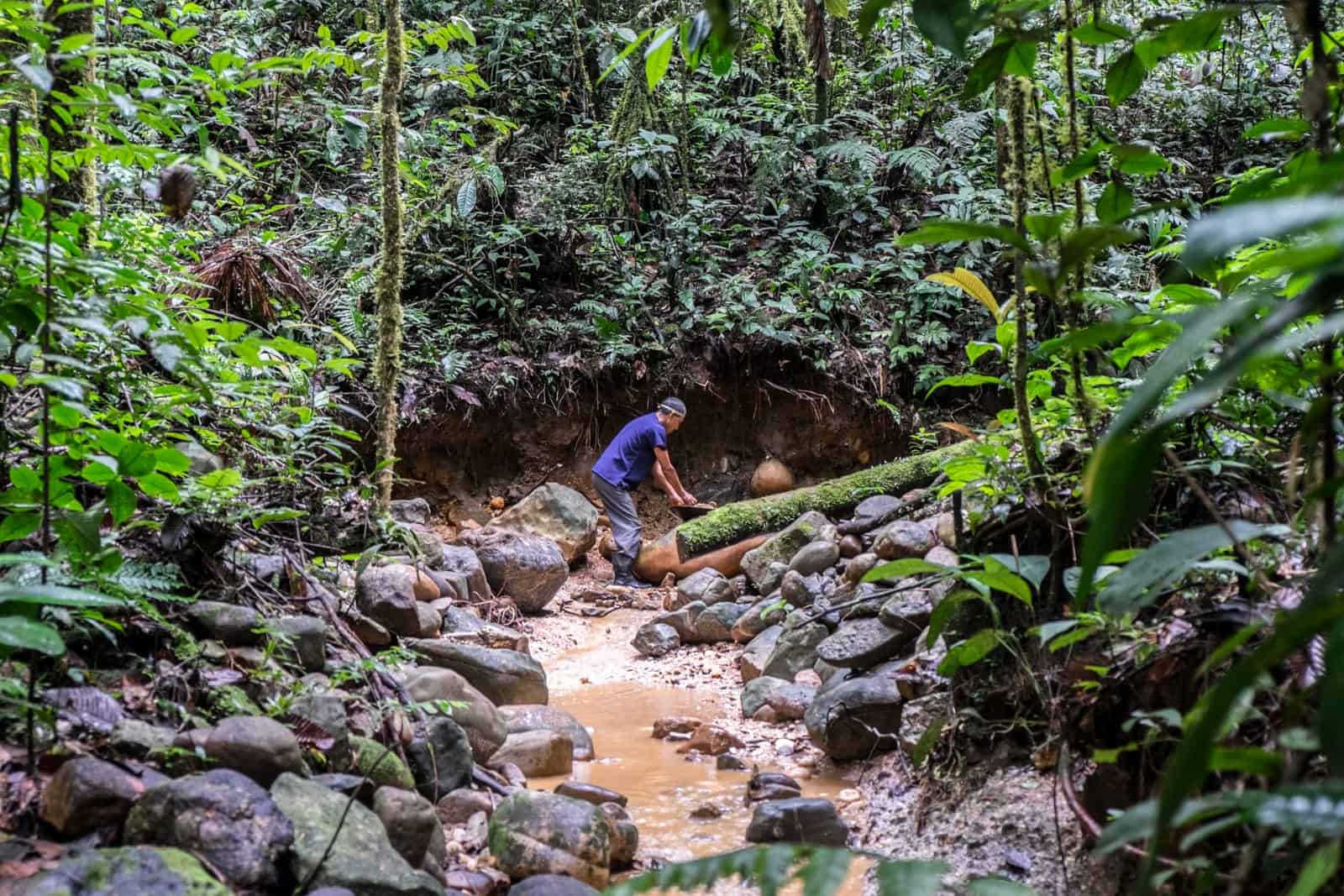
Making natural paints from stones in the Amazon
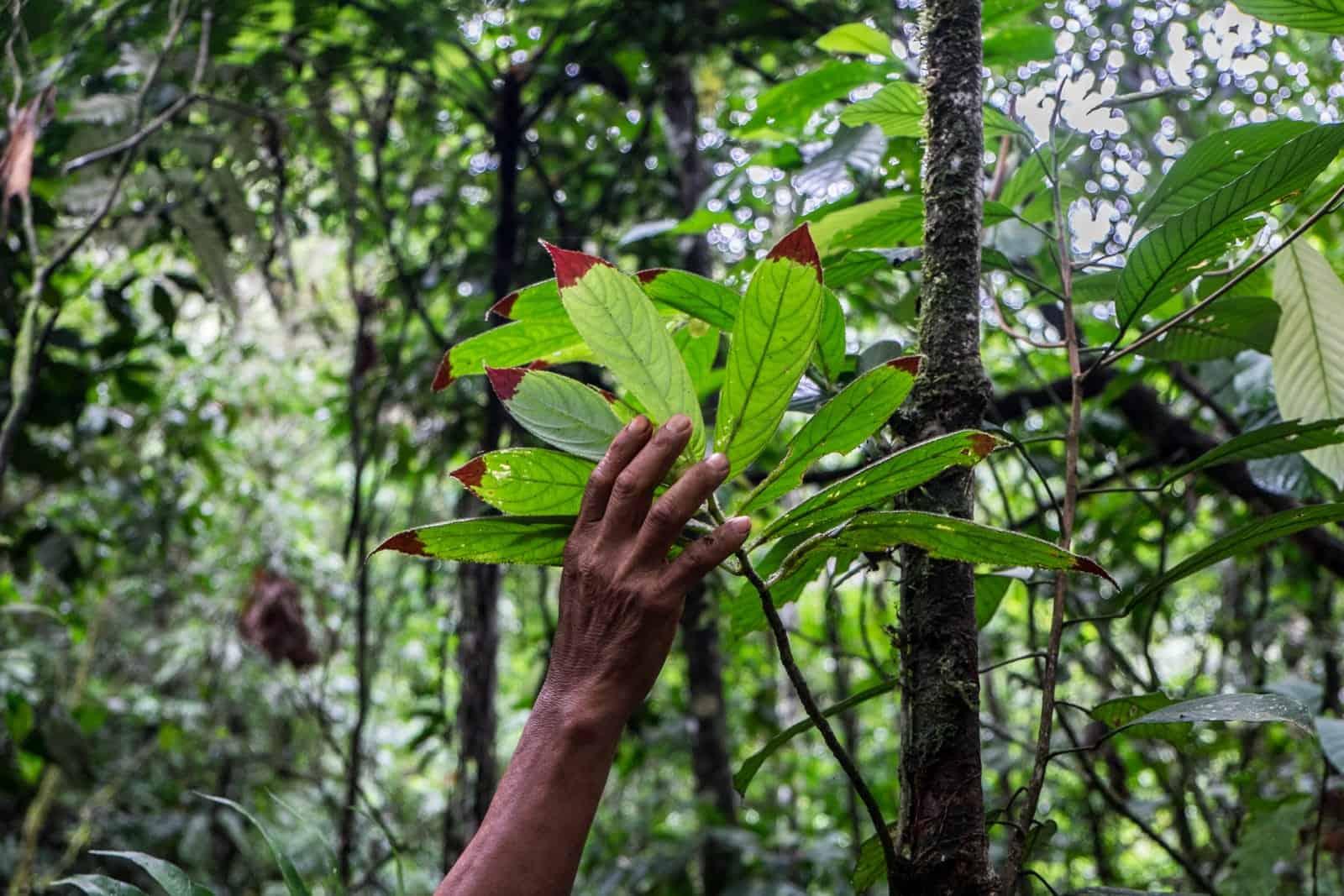
Finding unique Rainforest plant species.
We bathed in the stream behind our house and covered our faces with the natural clay found in the foundations of the rich jungle beds and trekked to jungle waterfalls. We rode carefree in the backs of trucks to go and swim in lagoons and boarded river longboats in search of wildlife and a glimpse into the vast depths of the Amazon Rainforest.
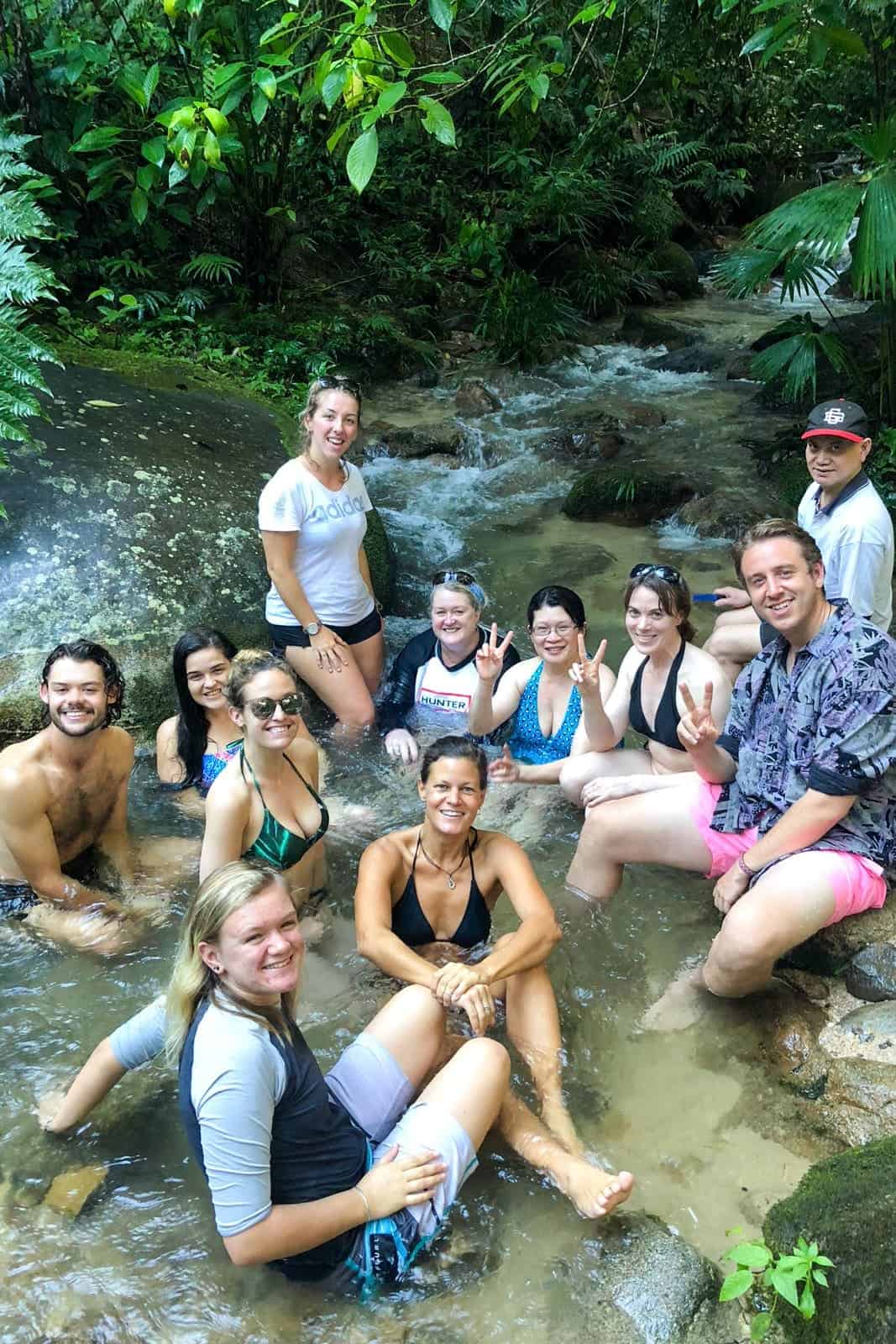
Jungle stream bathing in Ecuador Amazon.
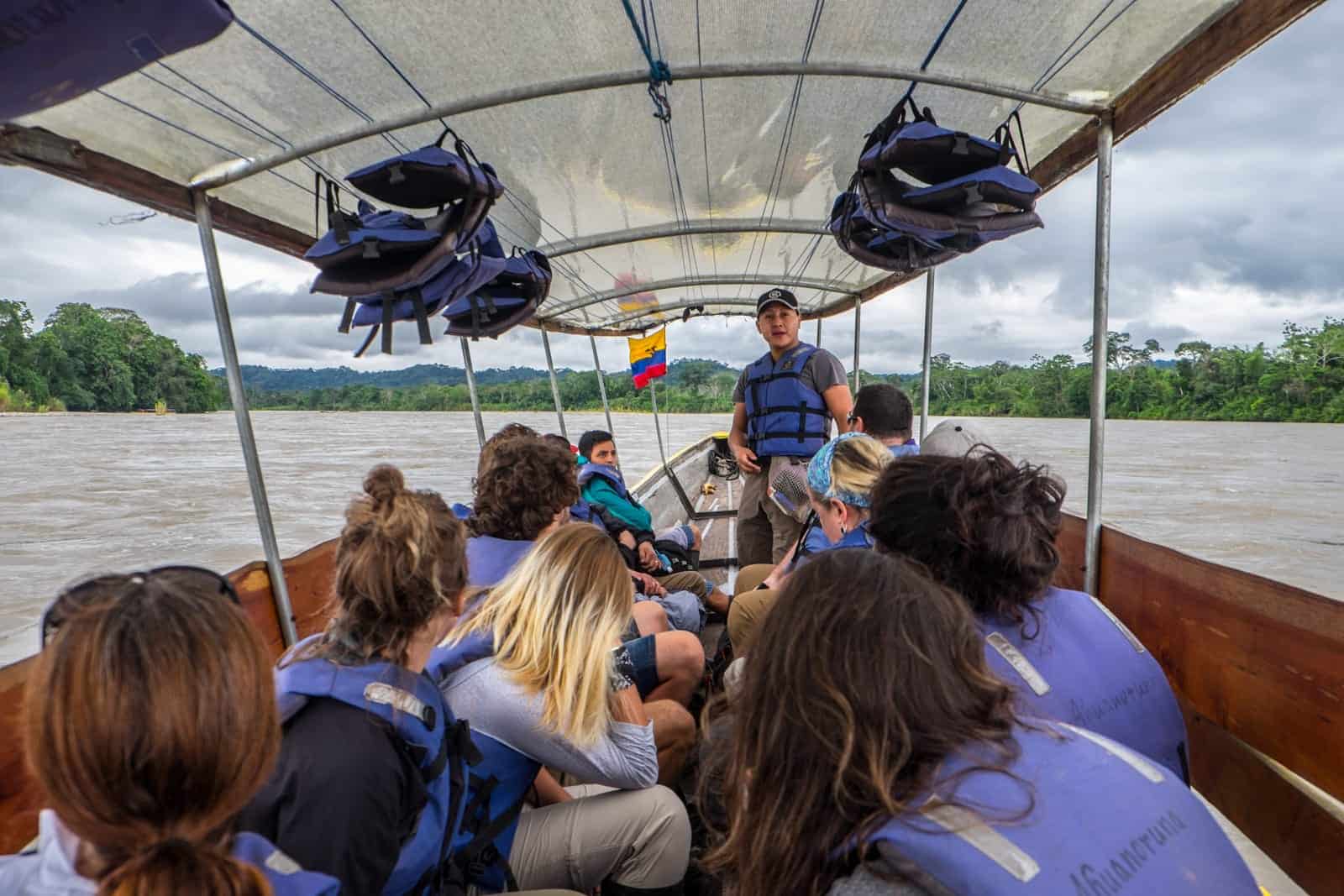
Longboat ride through the Amazon Rainforest waterways is a rite of passage.
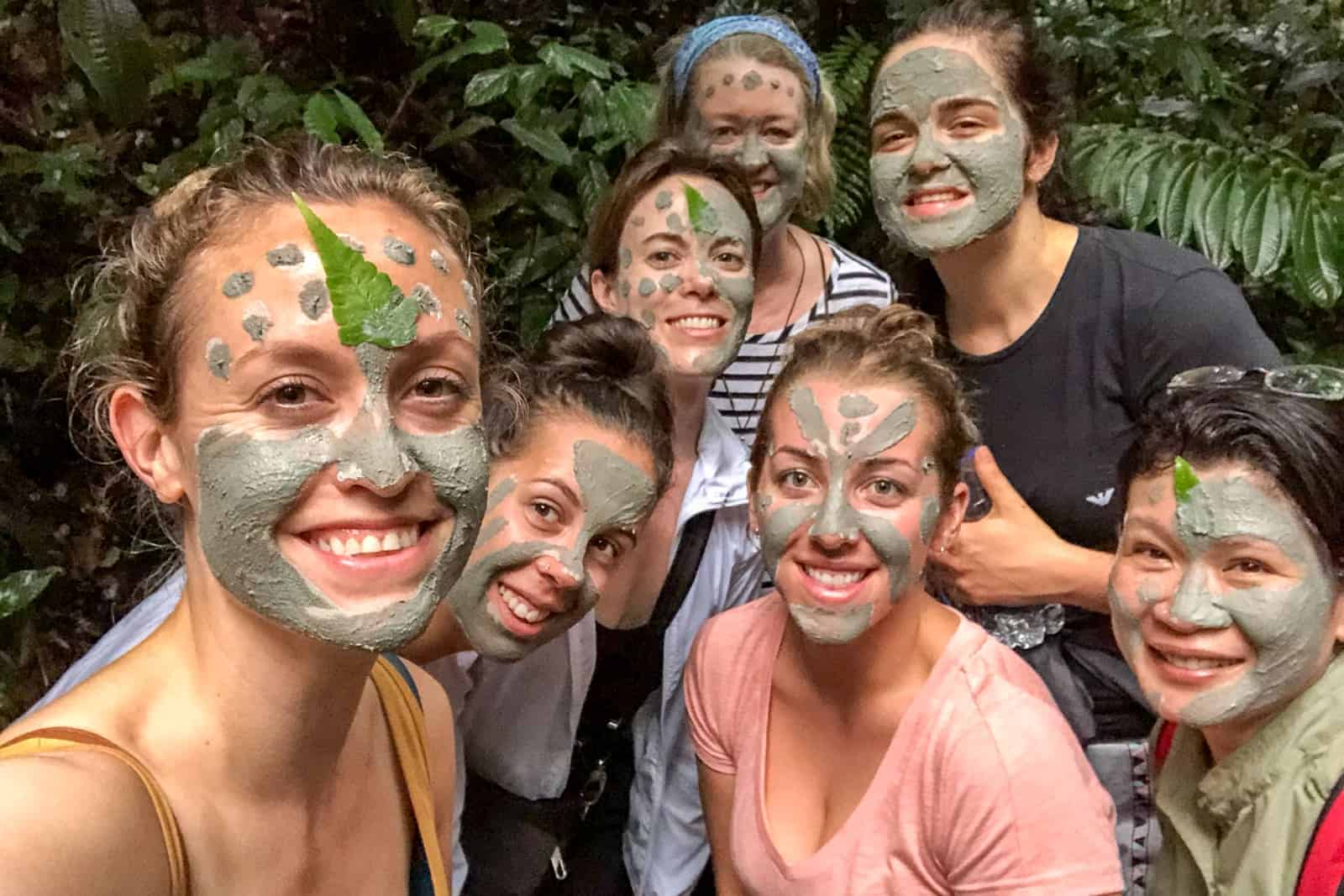
Natural jungle clay face masks.
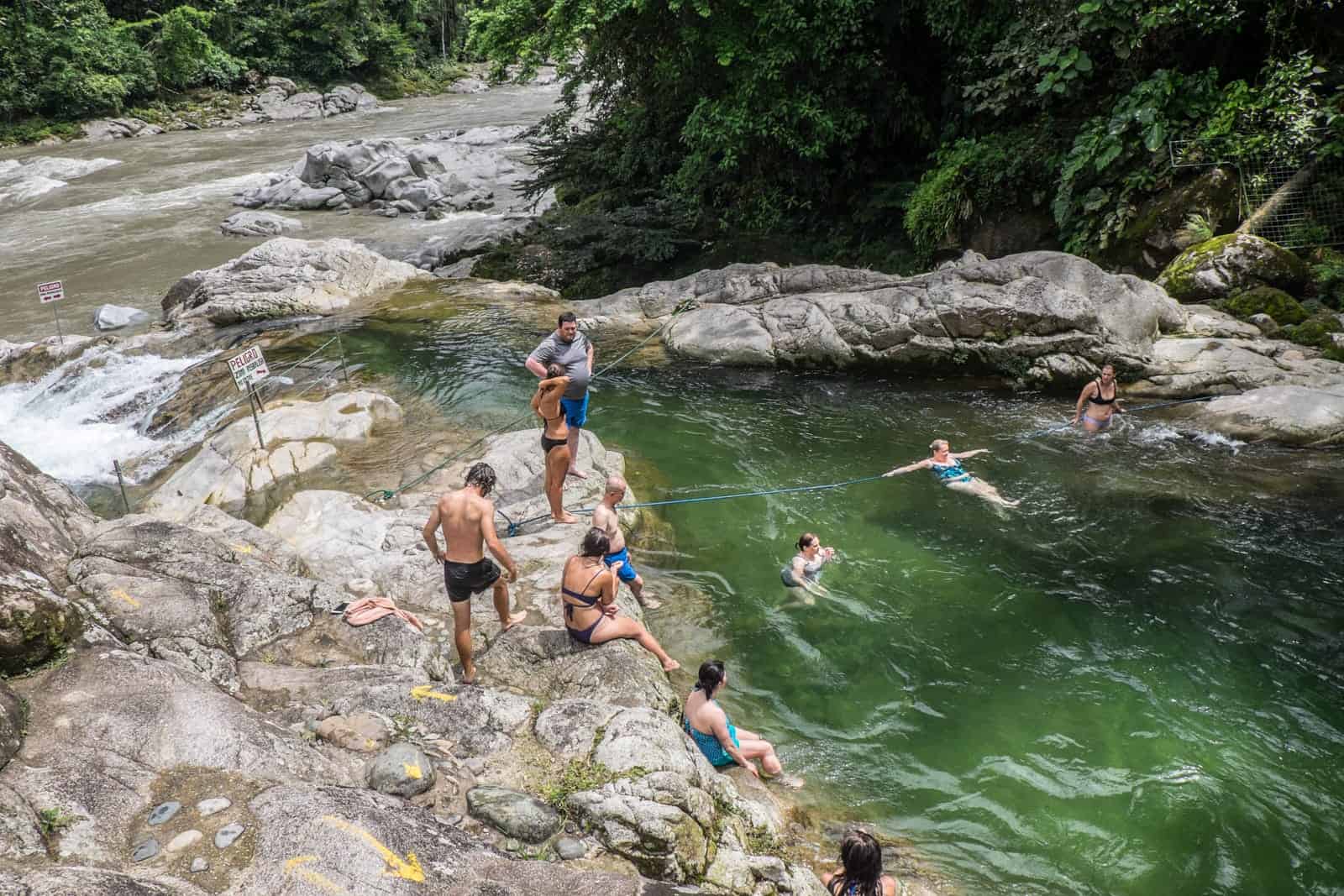
Swim in an Amazon lagoon
On our final day, we went water rafting on the Jatunyacu River – a faster flowing tributary that commanded a lot of energy. Even after water rafting in Europe and Asia, this grade three level put us all through our paces. It was an extra excursion offered as part of our overall tour .
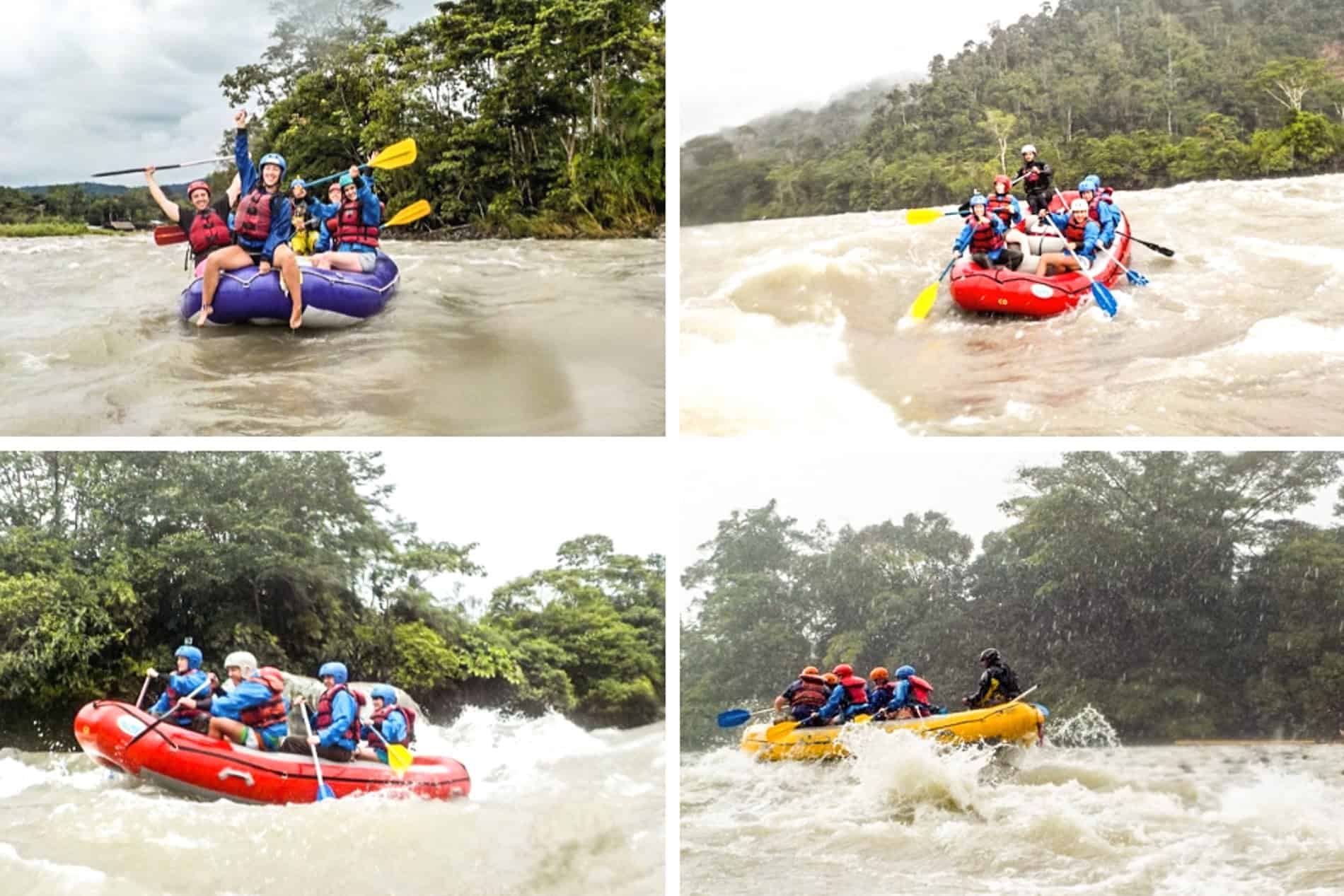
Go water rafting in the Amazon of Ecuador.
Rafts were flipped and tipped, ours hit a giant rock, and many of us embraced the waters, all the while realising we were mere specks of life in a place of such raw earth significance. Really, we all wanted to get in – because we were deep within a trail of the mighty Amazon River. This was a once in a lifetime race against nature, a fast-flowing picture book of the swathes of Rainforest we passed on either side and a chance to delve into the waters of one of the world’s most incredible eco-systems.
Although Ecuador has access to one the smallest pieces of the Amazon Rainforest, it has the most diverse ecosystem of them all, with a wealth of plants, animals, and sights to see in Ecuador’s national parks and reserves.
Despite limited infrastructure certain parts of the Amazon are accessible and open for exploration at the hands of local guides who know the waters, nature and the seasons. One of the main ways we got to learn about the wildlife in the Ecuador Amazon wasn’t just from observing on jungle walks or lingering silently on the longboat watching the rustling of the leaves in front of us, but by visiting the Animal Rehabilitation Centre.
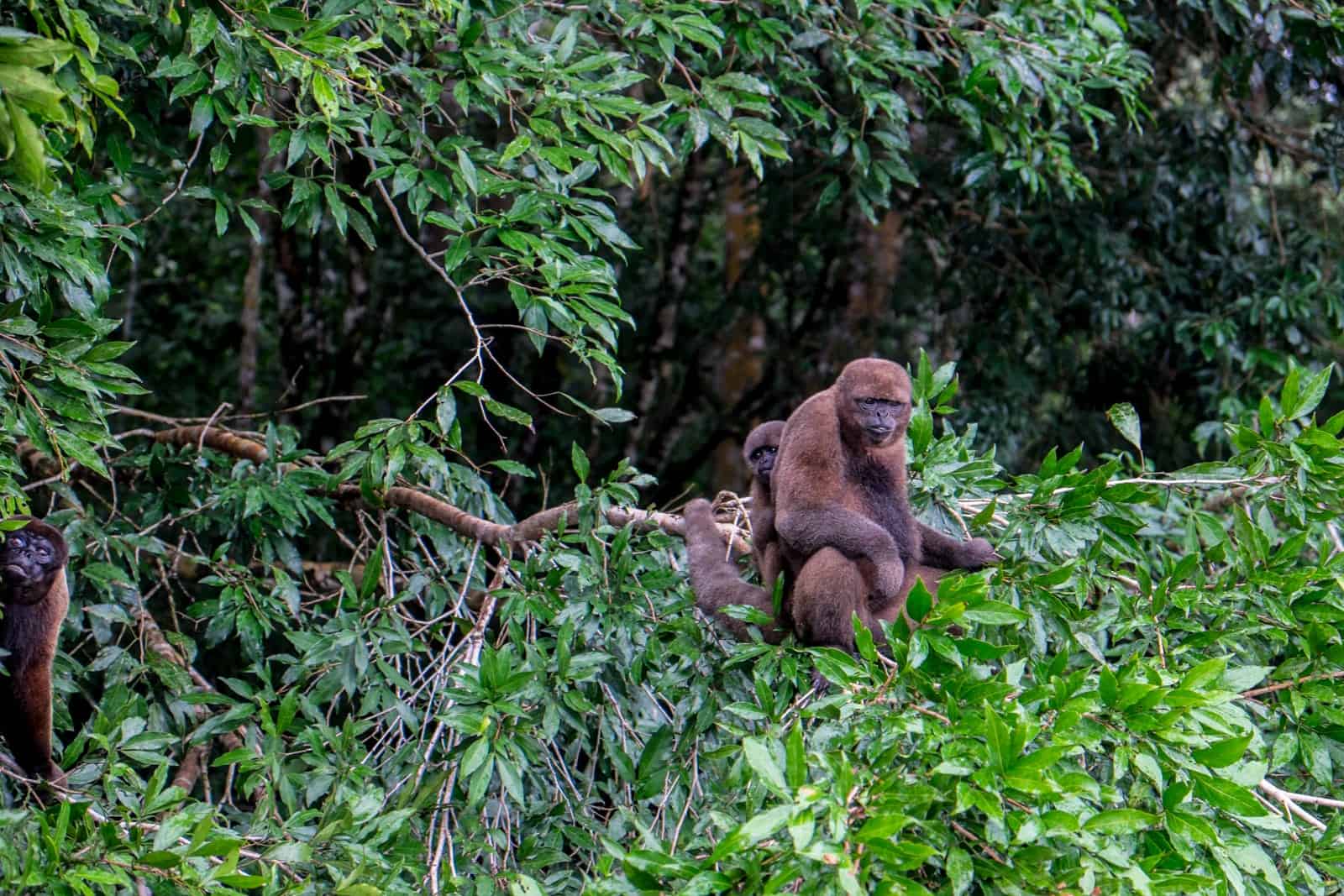
Monkeys in the Ecuador Amazon Rainforest.
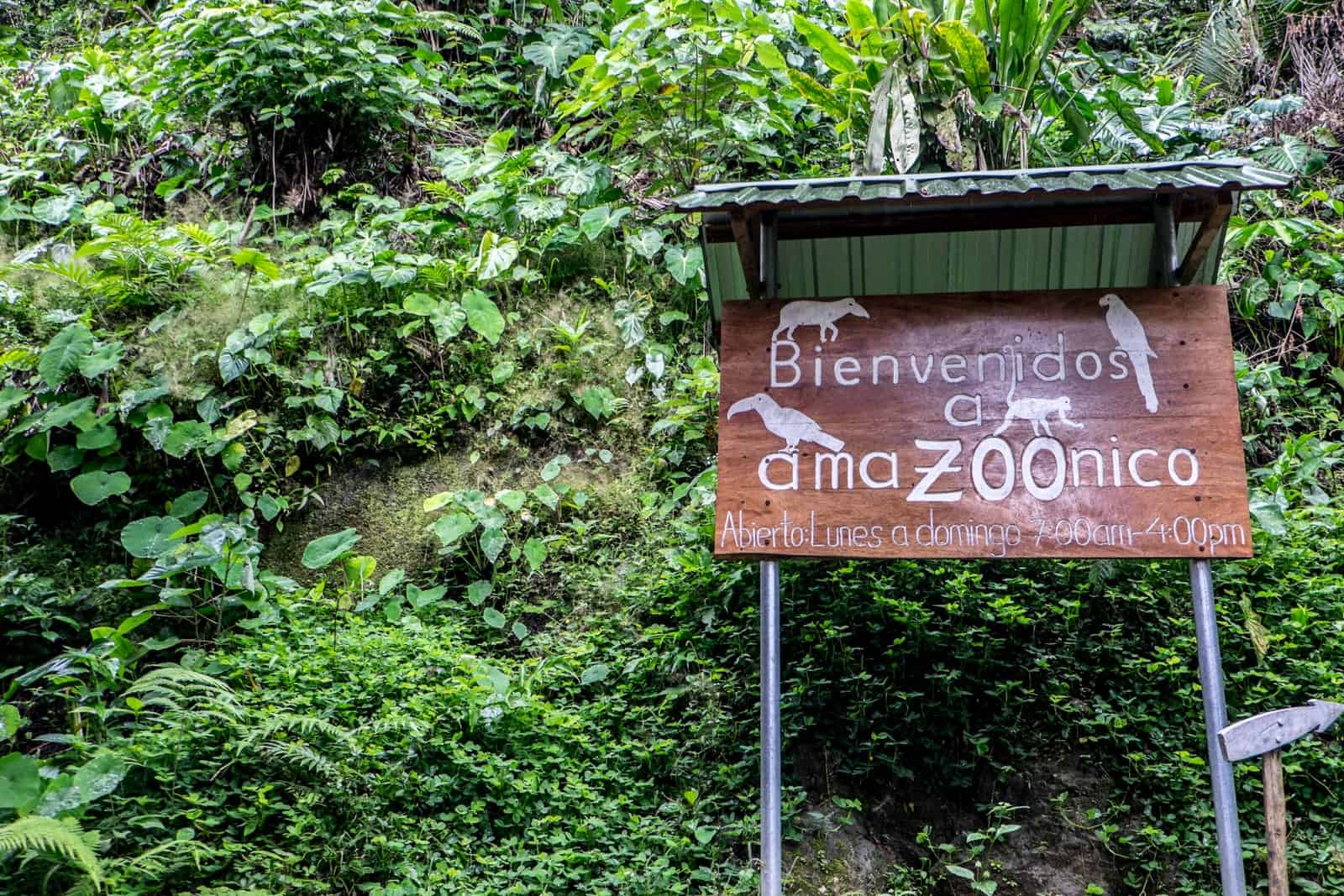
Entering the Animal Rehabilitation Centre.
The animal care centre, one of the core projects G Adventures supports, has been in operation for 25 years, helping to rehabilitate over 3,000 animals and releasing 1,500. Therefore visiting is a core part of the Ecuador Amazon trip itinerary to learn about animal welfare.
Many animals are unable to be released due to the fact they simply wouldn’t survive. Most of these animals were once taken as pets, and when domesticated often get depressed and die or attack humans. Others were captured and abused, hunted for meat and skin or Illegal trafficking.
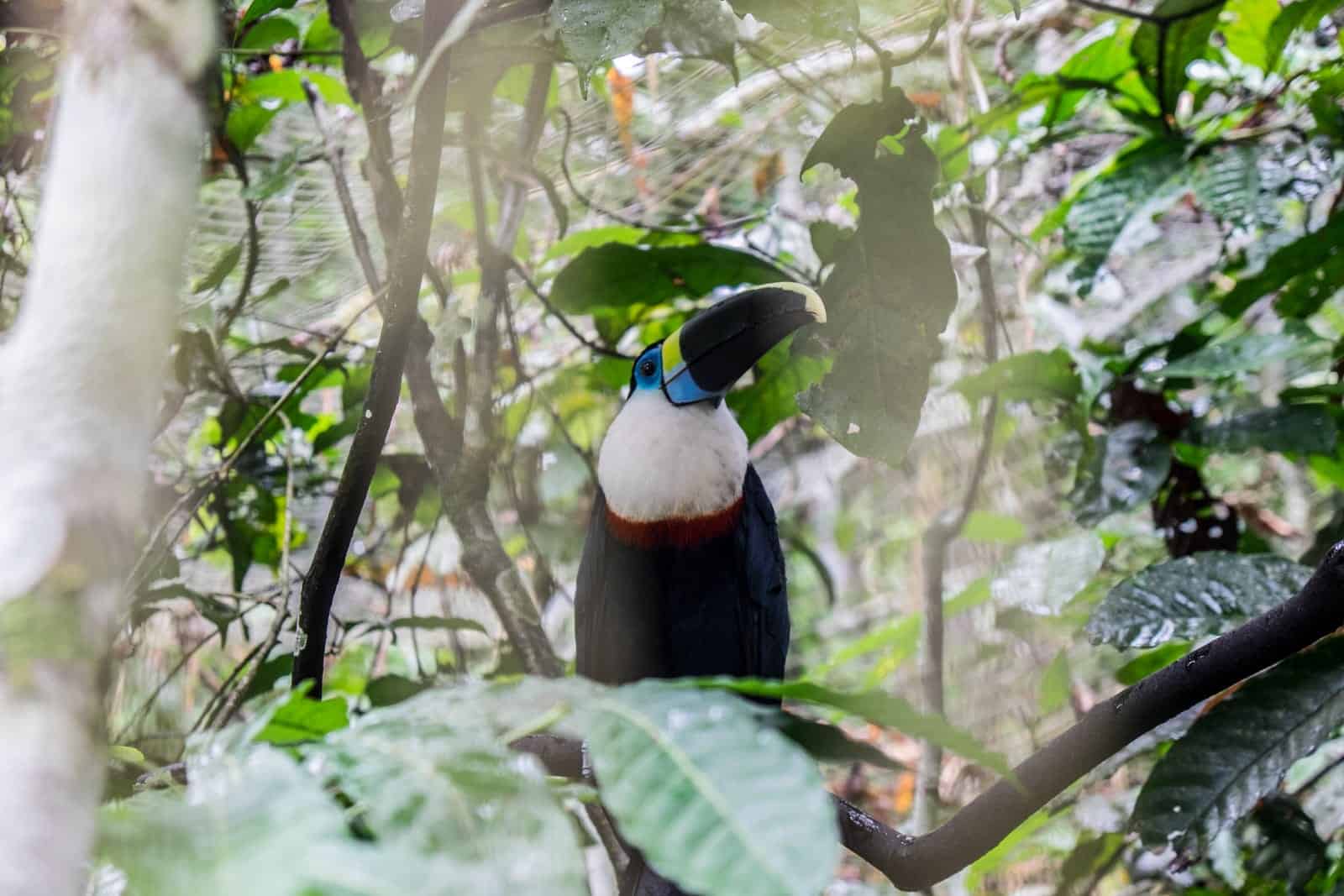
Wildlife rehabilitation in the Ecuador Rainforest.
Walking through jungle trails and often drenched in the rain this forest is known for, this is the opportunity to get up close to some of the region’s wildlife, both rare and often hidden.
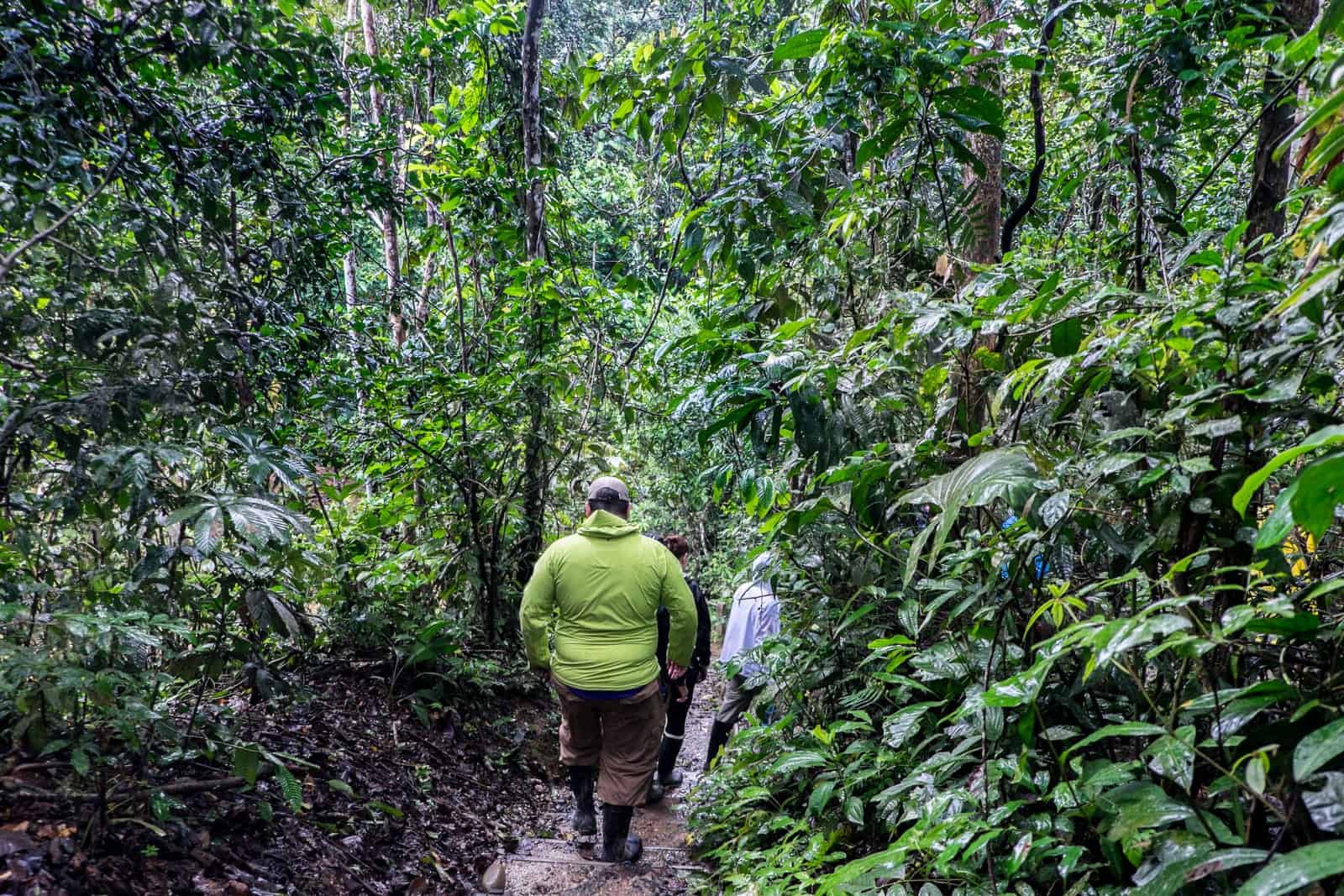
The Ecuador Amazon Rainforest has the most diverse ecosystem of all countries.
There’s no touching of the animals, nor any close contact with the enclosures, both due to the fact that they are rehabilitated to as wild a condition as possible and also not to be in contact with creams and perfumes from humans which can harm them. There’s no interaction with sound, especially with the parrots. Any animals that are roaming free outside of protective enclosures are never handled, as it is paramount not to humanise them. For example, if one monkey thinks humans are nice and then comes across a hunter, they will think the hunter is also nice.
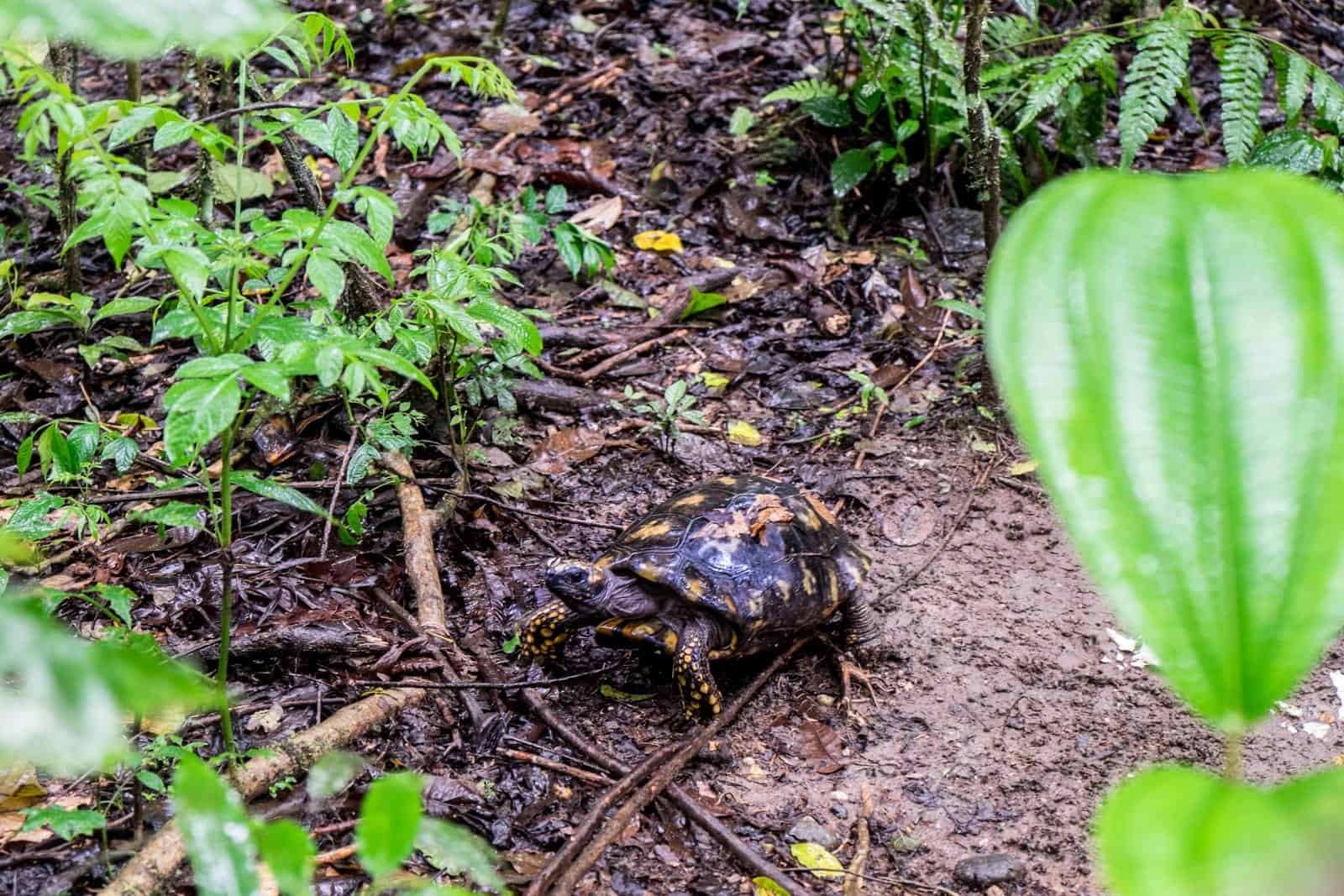
Amazon tortoise.
Ecuador is one of the countries actively protecting the jungle of the Amazon. This animal rehabilitation centre is just one part of that, with other laws being set in place to protect other aspects of the rainforest including confiscated land and jail time if anyone is caught cutting down trees and other forestation.
Despite Ecuador tourism drives bringing in income to the area, there are billions of dollars worth of oil being underneath the Ecuadorian Amazon, especially in Yasuni National Park and Biosphere Reserve. There is an ongoing debate about future drilling and how this will affect the Rainforest and its future preservation.
Tips for an Amazon Adventure
Even if you’re a seasoned traveller seeking a new adventure or new to this kind of offbeat destination, Amazon travel requires some planning. Preparing for a trip to the Amazon might bring images of Indiana Jones and other movie characters, but the reality is much simpler, as these tips on accessibility, difficulty and preparation show. However, there are plenty of options for every traveller and services to accommodate you comfortably, while still feeling unique, remote and in touch with nature.
While the best time to visit Ecuador is between the dry season of June-September, the weather in Ecuador’s Amazon is mostly the same during the whole year, where you can expect plenty of rain and high humidity.
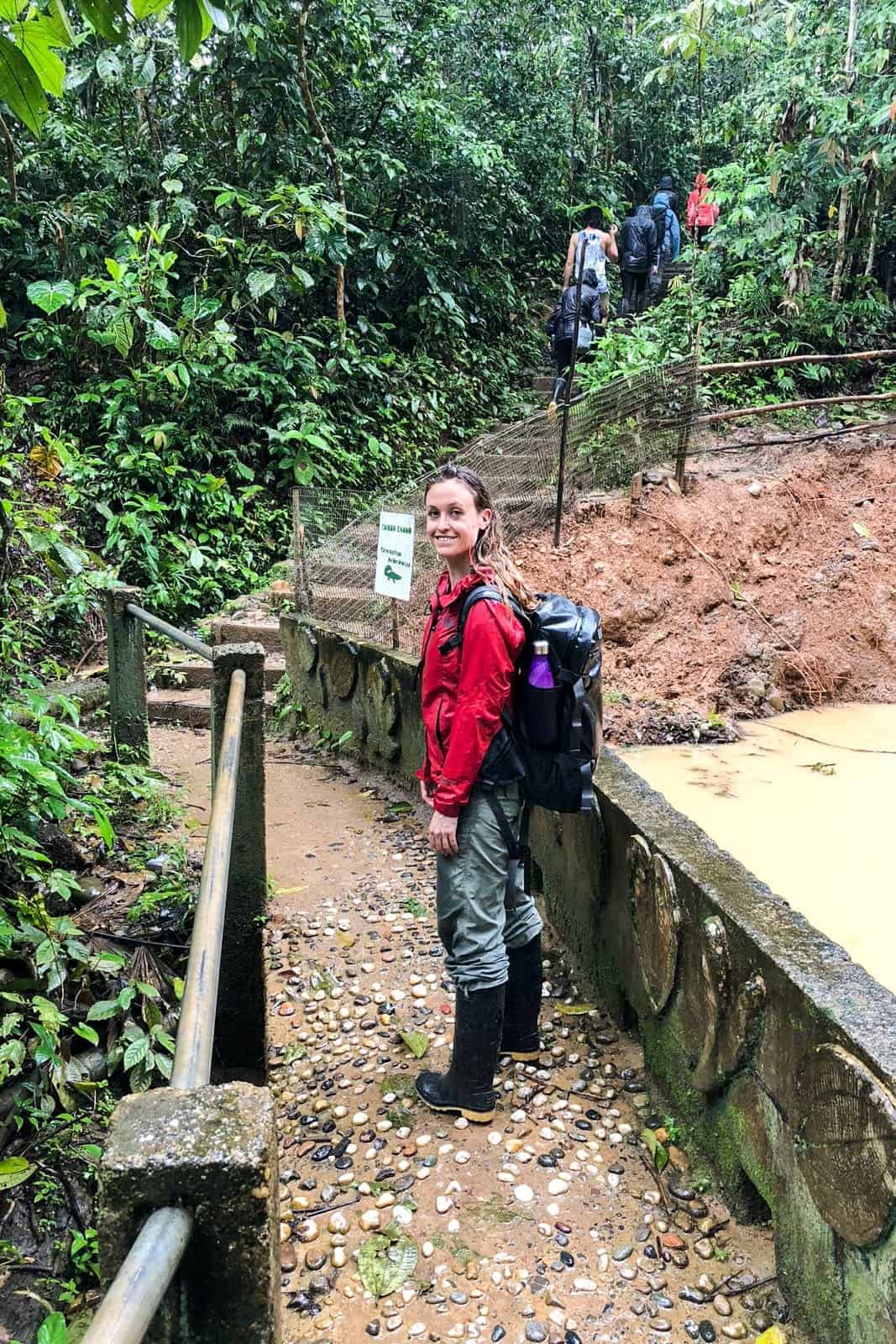
Prepare for the wet weather in the Ecuadorian Amazon.
Local guides explain that both the dry and rainy seasons (dry meaning a little less rain, rather than no rain at all!) have their particular benefits, as you might get to see different animals in each season or sight rare flowers that only bloom during a given season.
Although thousands of tourists visit this area every year, you can expect little to no traffic of tourists in the area. Amazon lodges, experiences, and trips are all seemingly very spread out.
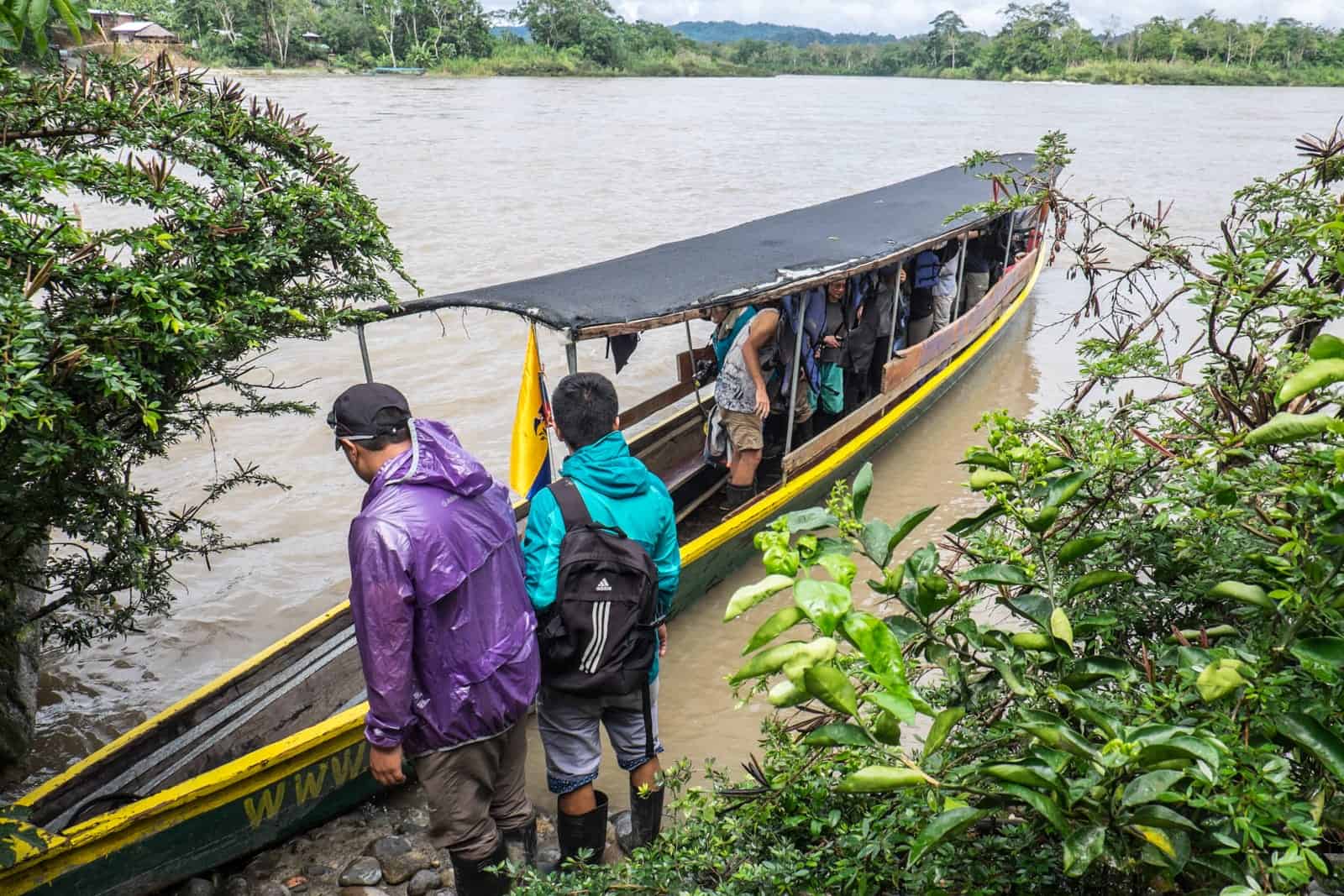
Longboats are the main form of transportation to Amazon destinations.
Unlike other countries, access to the Amazon from Ecuador is straightforward. Take a flight directly to the capital of Quito, and in only five hours by bus or van, you can get to the border of the rainforest at the city of Tena. There are actually six cities based here: Coca, Lago Agrio, Orellana, Papallacta, Puyo and Tena, but Tena is seen as the main and most used gateway.
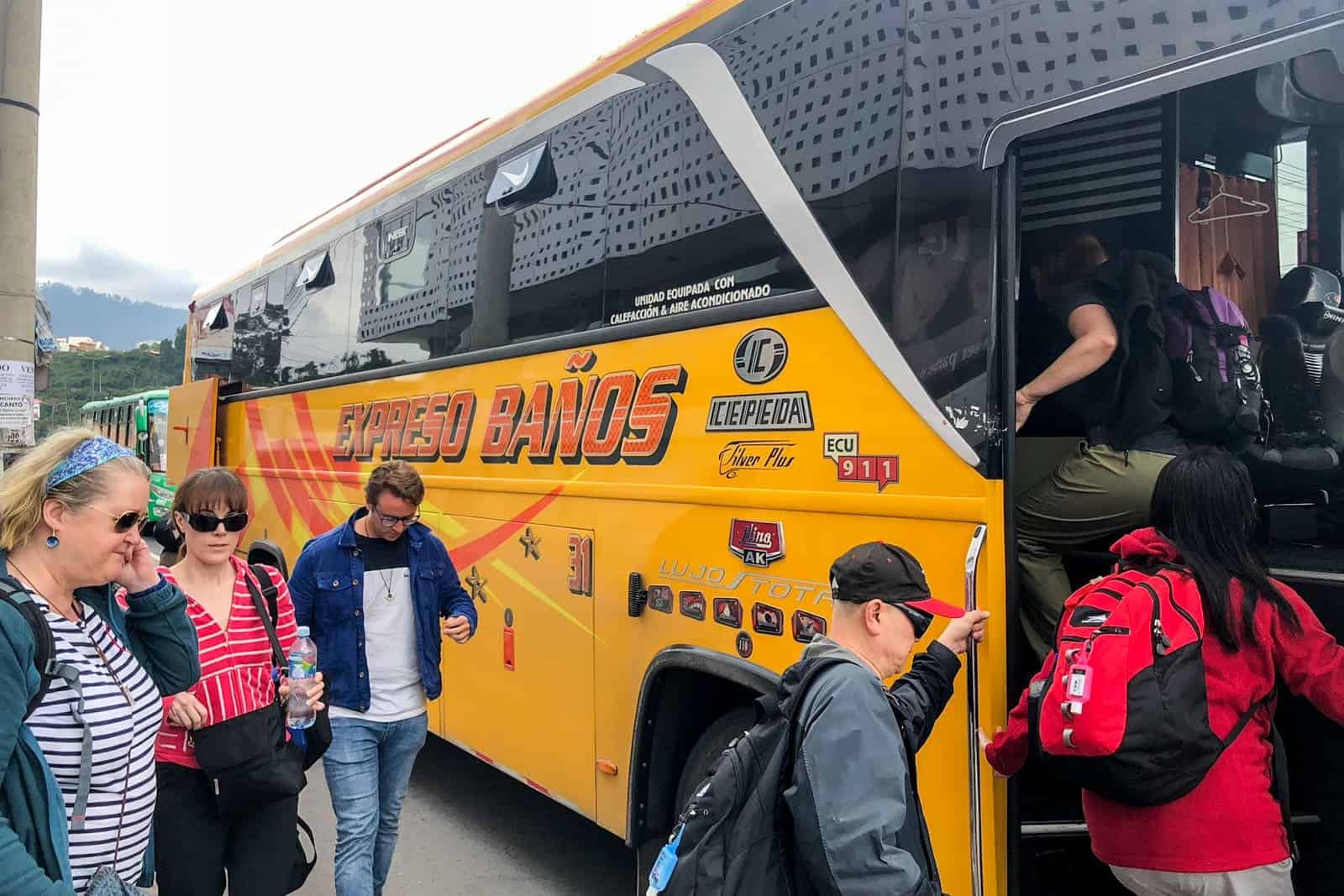
The Expreso Baños local bus from Quito to Tena.
You can get to Tena by public buses that go as cheap as $6 per trip, but you might miss some of the natural landscapes that decorate the trip. If you can find an affordable taxi or van to travel you or your group to Tena, you might be able to stop to take pictures and enjoy the beautiful sights between Quito and Tena.
If you’d like to go deep into the Yasuní Biosphere Reserve, you can also take a domestic flight from Quito to Francisco de Orellana Airport in Coca to stay in an eco-lodge and stay right in the middle of the jungle.
My local bus ticket to Tena and the transport beyond were all included in my Amazon trip .
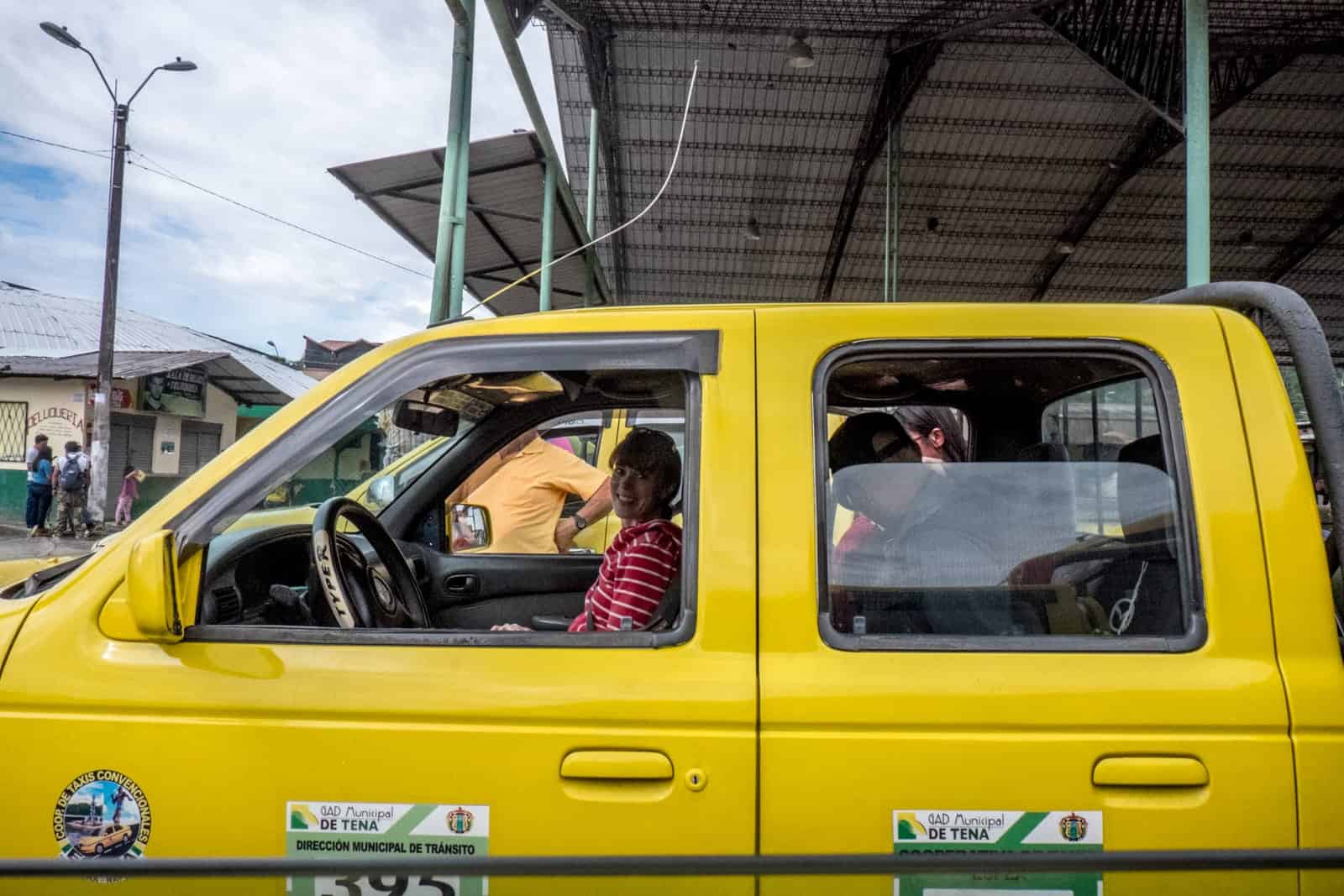
A Taxi in Tena will get you into the heart of Amazon Rainforest.
It is not at all advised to travel alone in the Amazon since this is unknown territory that is easy to get lost in. There is a reason so many thousands of travellers come here in small groups and with a local guide.
Do not embark on long jungle hikes alone since the majority of trails are not clearly marked. If you want to go on an extra excursion, ask the local you are staying with who will most likely oblige and be proud to show you more of their home.
Don’t venture anywhere at night without a flashlight . We saw some unwelcome visitors in the form of giant spiders and a scorpion in our bathroom.
Even if travelling solo in the Amazon, it is best to stay at a registered lodge with adequate set-up for visitors , so that people know where you are.
The difficulty of your journey to the Amazon depends entirely on your preference and planning. If you’re going to participate in sports activities or trekking through the jungle, the trip might require plenty of stamina and might prove difficult for the inexperienced.
However, if you’re going to stick to your guide and follow your tour as planned, you’ll find that although it can be tiring due to the weather and long trips, the journey is accessible and achievable by everyone.
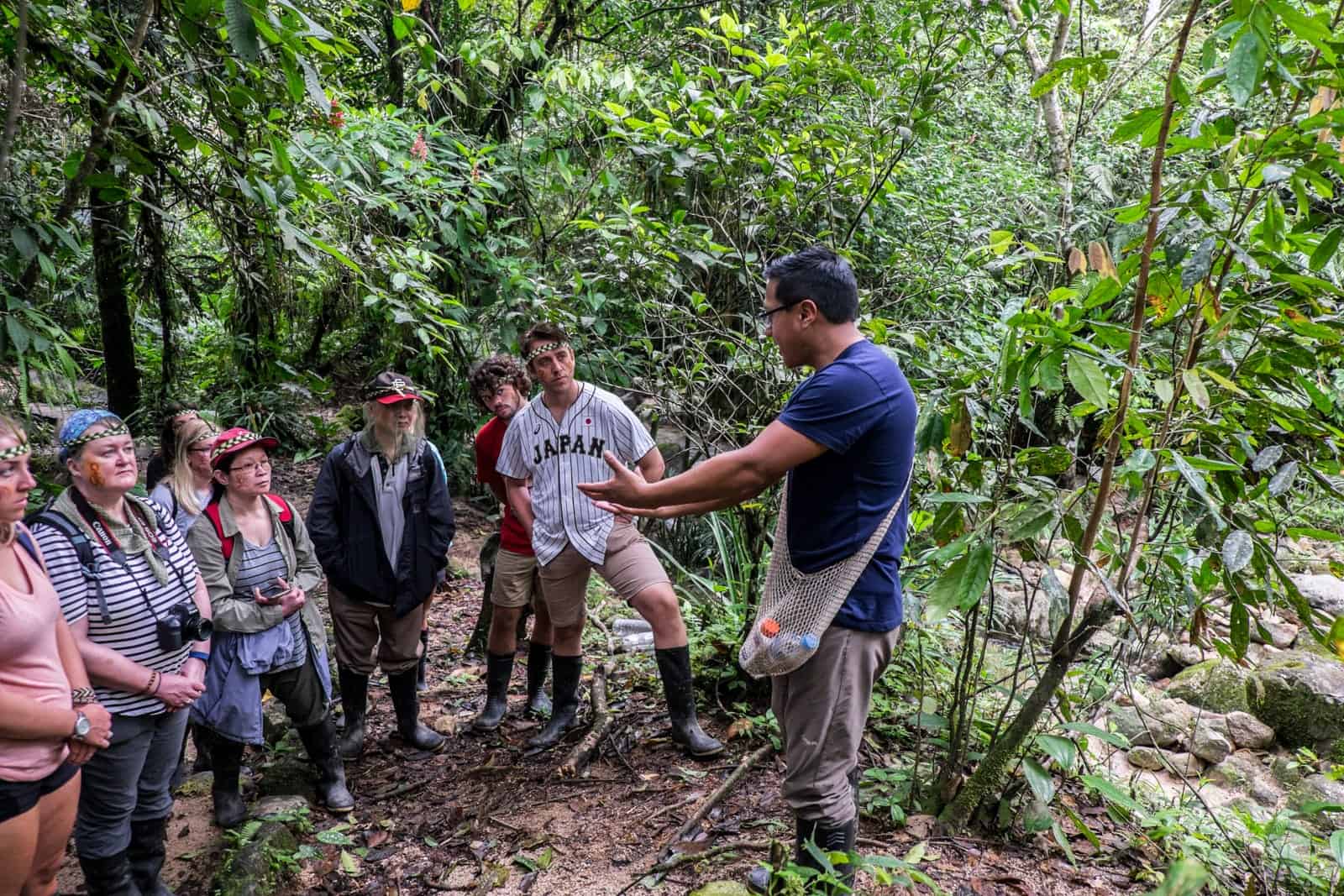
How difficult is it to travel to the Ecuador Amazon?
The Amazon rainforest is not a destination without risks so you must prepare accordingly . Although the cases of yellow fever, dengue, and other diseases have lowered in recent years, you must always consult with your doctor about the vaccinations recommended and required to travel to Ecuador.
According to the CDC (Centre for Disease Control and Prevention) , it is recommended to get your Hepatitis A and Typhoid vaccinations (on top of your routine MMR) as there is a risk of these via contaminated food and water.
Proof of a yellow vaccine vaccination is regularly listed as one of the Ecuador Entry Requirements . Even though I wasn’t asked for it upon arrival you may well be. Yellow Fever is also recommended if you are travelling to the Andes Mountains in areas of high elevation.
To avoid any chance of catching a disease brought about by insects, such as mosquitoes, you might want to stock up on insect repellant creams or lotions . I took anti-mosquito shower gel and repellent with me, alongside my everyday medications, and painkillers.
The tap water in the Ecuador Amazon is not safe to drink , and it is recommended to also not drinks from the rivers and streams, which may contain waterborne diseases and parasites. Purified water will likely to provided to you by your hosts, but just in case bring water purification tablets with you or an instant purifier filter like a Lifestraw , a UV light SteriPen water purifier or a reusable filter water bottle like Water-to-Go (Use the code BECKI20 at checkout for a 20% discount).
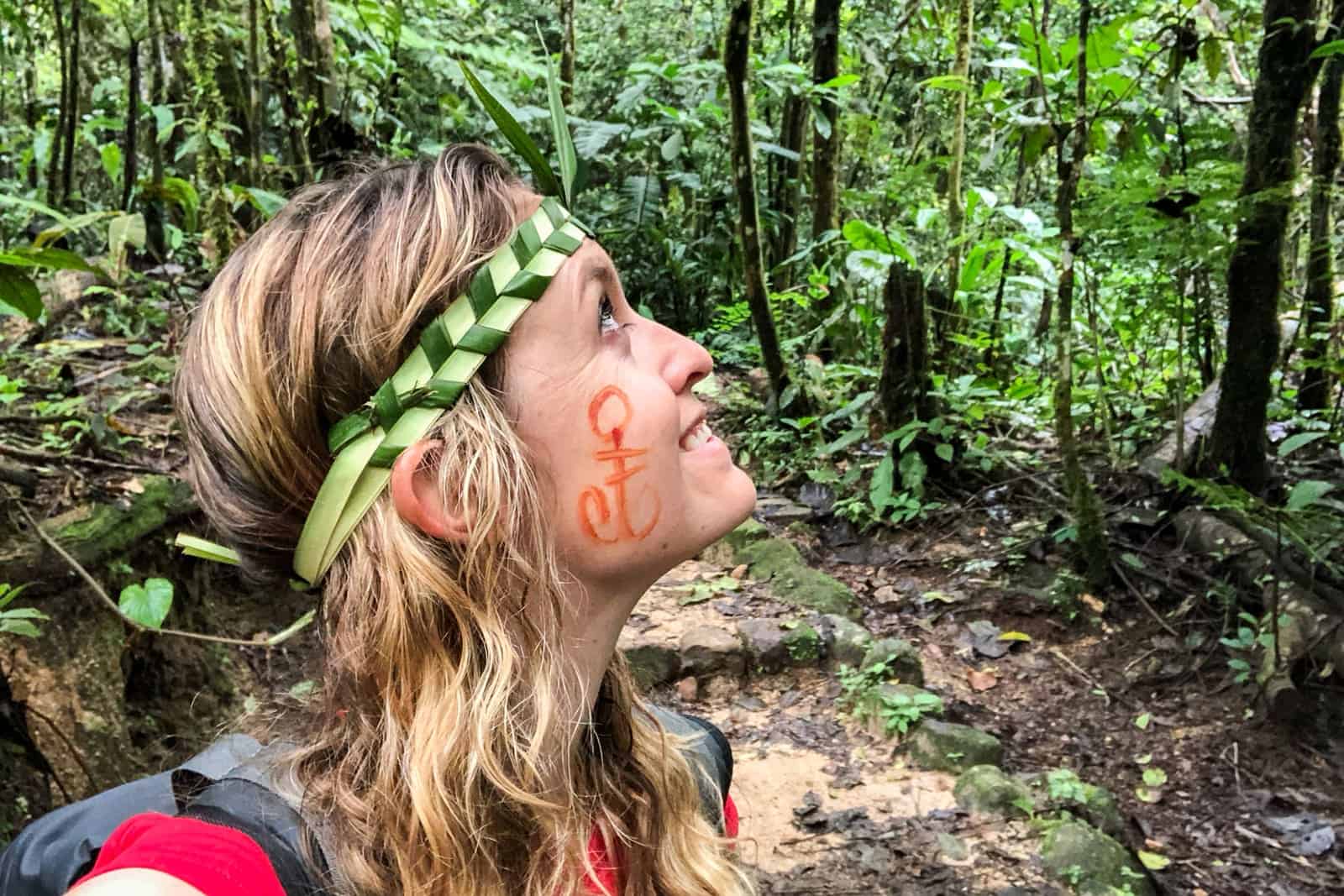
Heading to the Amazon jungle? Be prepared.
Packing for the Amazon isn’t so difficult, but you’ll need layers for the changes in temperature, light pants and long sleeve shirts of light fabrics for cover in the jungle, lighter clothing for the hot and humid parts of the day and waterproof clothing layers for when those sunny days instantly turn into the frequent rain where the forest gets its name.
With my host family, mosquito nets were provided for each bed in our rustic accommodation and rubber boots were mandatory for walks in more dense areas of the jungle, with enough pairs for every member of the group.
- A pair of light khaki green trousers , that can be rolled up when humid and be long enough to tuck into the rubber boots provided on jungle walks.
- A pair of black leggings / comfy yoga pants / lounge pants for the evenings , and also worn while my daytime trousers were drying.
- 2 x t-shirts and 2 x tank tops , always with the aim in mind to have one to wear while the other is drying out.
- 1 jumper (I had a traditional Ecuadorian wool style purchased in Quito) especially when the temperature dropped at night.
- A light waterproof jacket (it’s not incredibly cold when it rains).
- Swimwear ( I had a green leaves print bikini , which fit the surroundings!) for spring and lagoon swims and water rafting.
- A pair of sports shoes ( I’m a Vivobarefoot fan ) for excursions that were not jungle treks.
- A pair of flip-flops or sandals for use in the afternoons when relaxing, in the evening and/or in the shower.
- Underwear to last you for one week and a light pair of Pyjama pants.
- Toiletries and a quick dry travel towel as there is nothing available on-site and if one towel is provided, it doesn’t always dry quickly.
- A head torch for the evenings when the lights go out after a certain hour.
- Earplugs if you find it hard to sleep to the sounds of jungle nature. Although if you can get used to it, it’s beautiful.
- A reusable filter water bottle like Water-to-Go (Use code: BECKI20 at checkout for a 20% discount). Ideal for when you are out on long walks, small treks and day trips. Don’t take and leave plastic!
- A full portable charger ( Anker is my go-to power brand ) and spare batteries for your camera , as everyone is usually vying for limited electricity and plug sockets.
However, should you be in need of an emergency item or any amenities, there is a chance to make a trip into Tena on the way back from a day trip, which we did one day to stock up on snacks and any essentials.
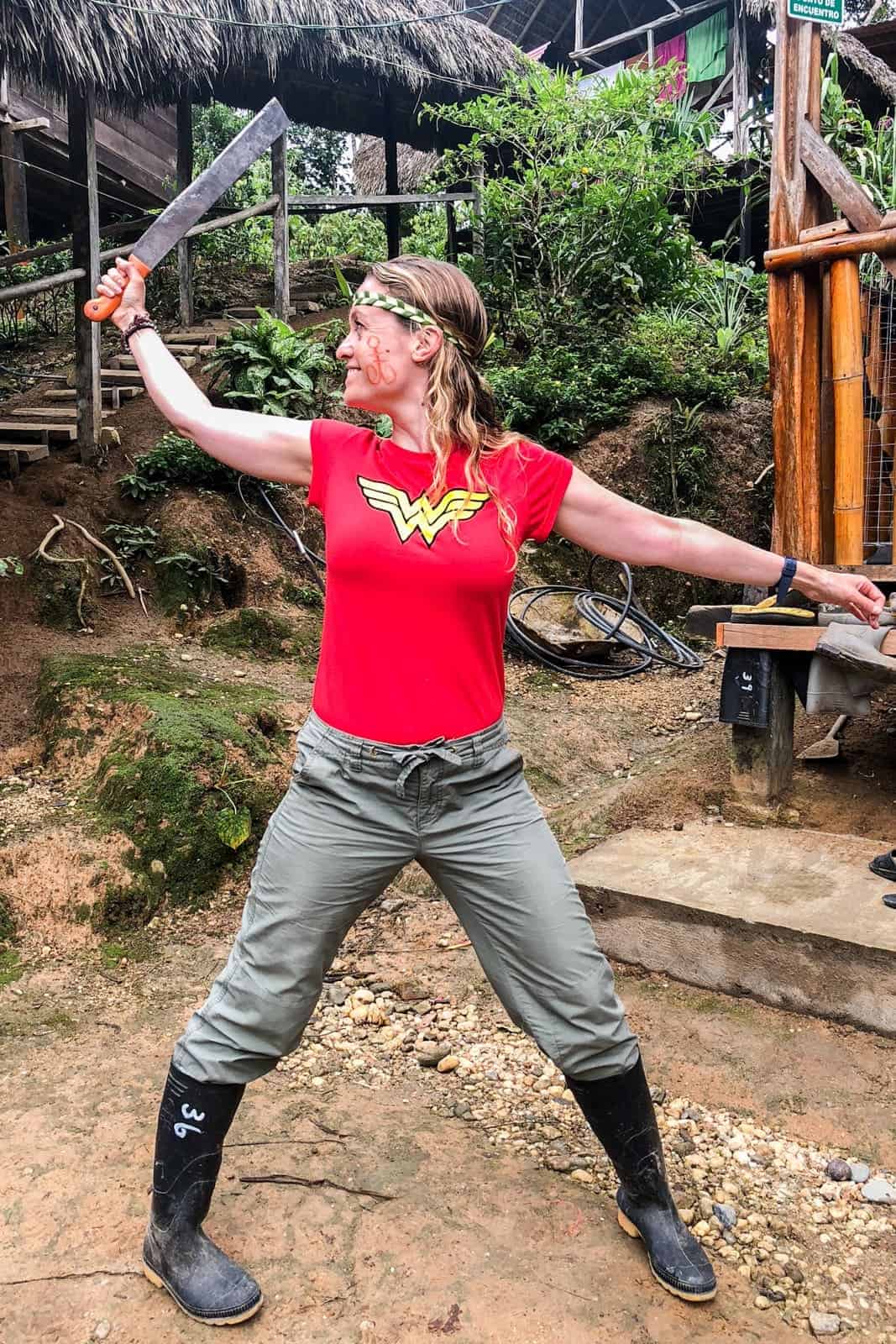
There are a handful of Amazon Rainforest tours from Ecuador and group travel is the primary way in. Often being on an organised trip or in a group often seems taboo, but that’s not true. Not only is it pretty much impossible to find your way around the Ecuador jungle without such small group guidance, without my fellow travellers my time in the Amazon wouldn’t have been the fun, unique, once-in-a-lifetime opportunity it was.
Without G Adventures we wouldn’t have had access to the family we lived with and the experiences they shared with us in their homeland, and to know we were spending our money ethically and it going to the right people and projects.
See booking details for Local Living Ecuador – Amazon Jungle small group tour . It’s a seven day round trip that starts and ends in Quito, with five days based in the Amazon jungle staying with the Quichua family. The price includes accommodation, transport, food and excursions. Our water rafting trip was an optional extra we all choose to do as our final hurrah in this wild adventure.
Groups are kept small and as much as it’s rare to get along with each person on a trip when compacted into a few days and in such a remote place, we did, leaving the Amazon with more than just survival skills and a better understanding of the Amazon people. Don’t be too quick to agree with the notion that being amongst others can ruin the raw experience. More often than you realise, it can actually enhance it.
READ MORE: Solo Travel vs Group Travel
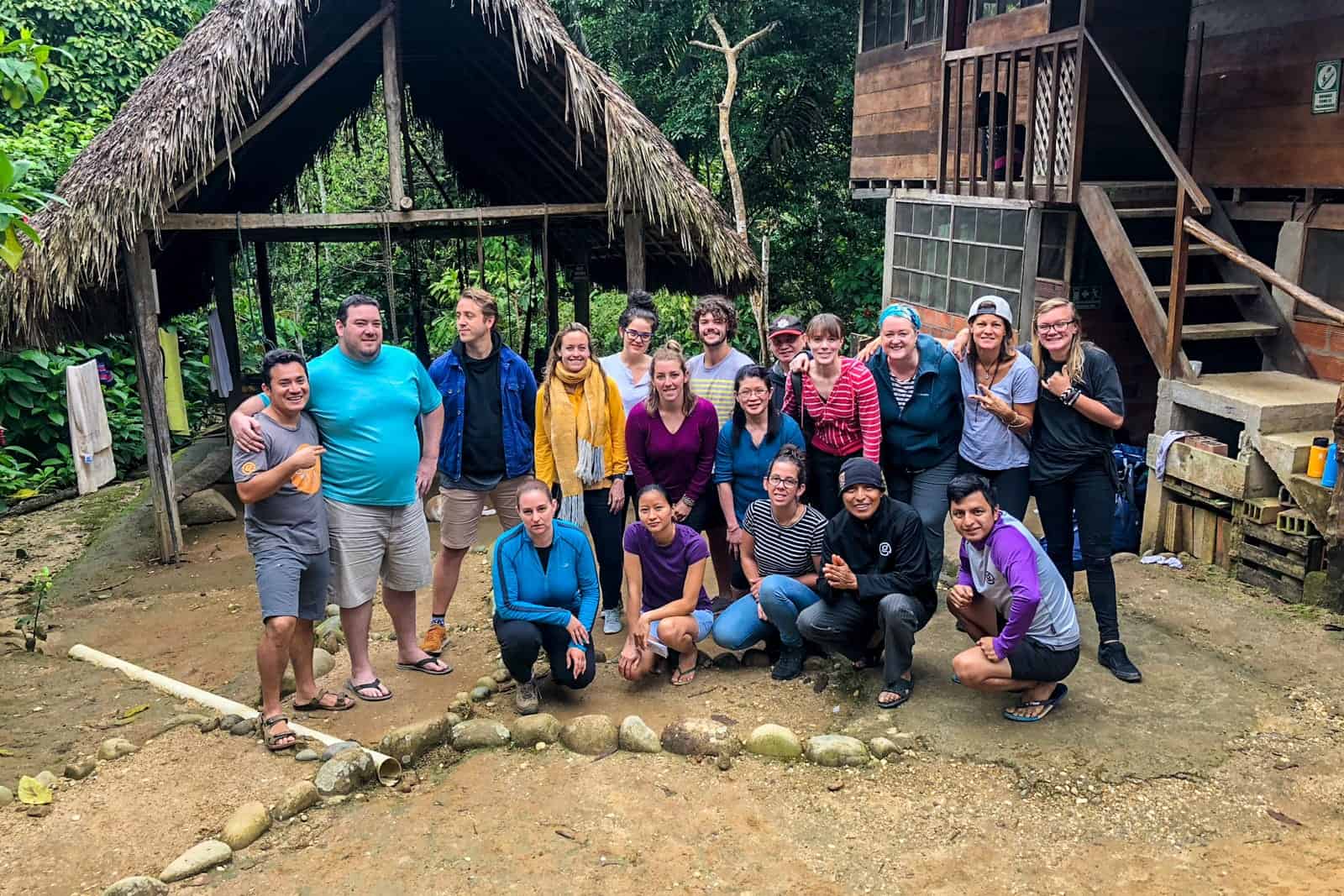
The G Adventures tour group in Ecuador Amazon and a lifetime of memories
My trip was part of a brand partnership with G Adventures to encourage travellers to explore the planet in a meaningful way and to help change people’s lives through travel. All opinions and experiences remain my own.
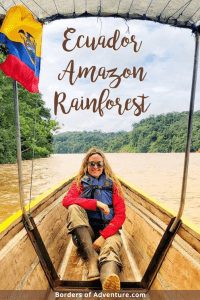
About Becki
Becki Enright is a British Travel Press Award-winning writer whose work focuses on changing perceptions about misunderstood aspects of destinations. Her writing combines storytelling with insight into the social, historical, political and economic factors that shape the country or place in relation to tourism. Becki has appeared live on Sky News and CNN and has contributed to high profile media including National Geographic, Time.com, Guardian online, New York Times, Grazia and Buzzfeed.
Leave a Reply Cancel reply
Your email address will not be published. Required fields are marked *
- Article Archives
- Work with me
- Privacy Policy


Amazon Basin (Oriente Region) > Orellana province
Amazon Basin (Oriente Region) > Sucumbios province
Amazon Basin (Oriente Region) > Napo province
Amazon Basin (Oriente Region) > Pastaza province
15 Beautiful places to visit in the Ecuadorian Amazon
Ecuador is a treasure trove for travel. Create your own adventure with our list of the top places to visit in the Ecuadorian Amazon. On your next trip to Ecuador, visit these places to have a blissful and thrilling experience!
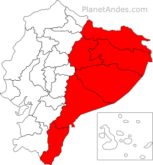
Facts & Information
Language: spanish currency: us dollar, location: south america country: ecuador, main destinations: cuyabeno wildlife reserve, yasuni national park, provinces: morona-santiago, napo, orellana, pastaza, sucumbíos, zamora-chinchipe, average temperature: 72º-80º f (22º-26ºc) weather / climate, best destinations, tourist attractions, best destinations to visit.
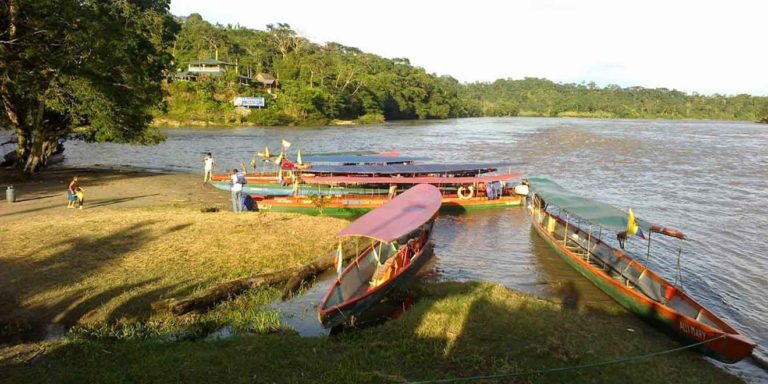
Cayambe Coca National Park
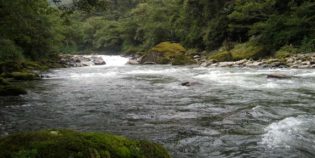
Llanganates National Park
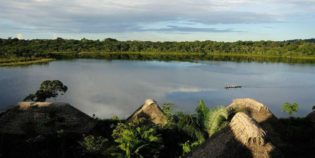
Yacuri National Park
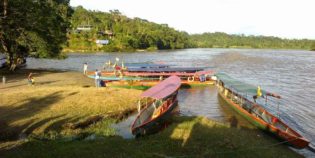
Puerto Francisco de Orellana (Coca)
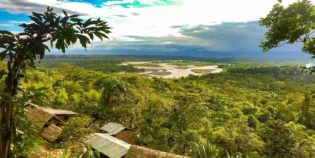
San Rafael waterfall
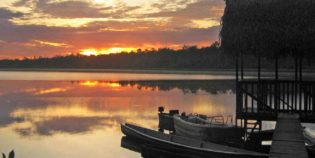
Limoncocha Biological Reserve
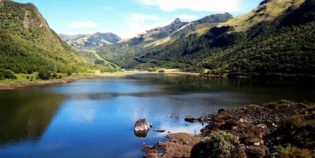
Cuyabeno Wildlife Reserve
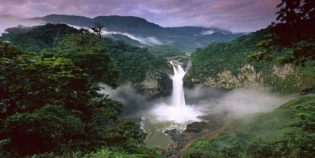
Yasuni National Park
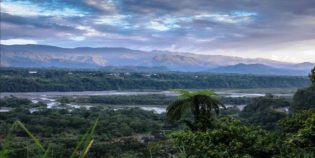
- 1 Provinces
- 2.2 Orellana
- 2.3 Pastaza
- 2.4 Sucumbíos
- 2.5 Zambora Chinchipe
- 3 Other destinations
- 4 Understand
- 5.2 By plane
- 6 Get around
- 9.1 Jungle lodges

The Amazon is a region of Ecuador .

The Amazon basin spreads over 6 Ecuadorian provinces: Sucumbíos, Orellana, Napo, Pastaza, Morona Santiago and Zamora Chinchipe.
Arranged by province.
- -0.463 -77.89 1 Baeza (Ecuador)
- -0.366944 -78.132778 2 Papallacta
- -0.989 -77.8159 3 Tena , the provincial capital of Napo
- -0.933333 -75.4 5 Nuevo Rocafuerte
- -1.490278 -78.002222 6 Puyo
- 0.084444 -76.891111 7 Lago Agrio , the provincial capital of Sucumbios
Zambora Chinchipe
- -4.069167 -78.956667 8 Zamora
Other destinations
- -0.1167 -75.8333 1 Cuyabeno Wild Life Reserve
- -0.4 -76.6 2 Limoncocha National Biological Reserve
The Ecuadorian Amazon is mainly tropical rainforest elevated 400 m above sea level.
The Amazon region of Ecuador is one of the few places in the world where its probably best to travel with a group, with a guide or through a jungle lodge. Unless you are studying, teaching English or consulting on a project in the Amazon, you are unlikely to have enough knowledge about the area to stay safe and, most importantly, to learn about the plants and animals that make the area so special.
If you have more than a few days and you're not on a super tight budget, staying and traveling with a jungle lodge can be very rewarding. You're based right in the midst of the jungle, and, at the better lodges, you're in an area that's protected from farming, logging and drilling. You usually have 2-3 activities per day including birding hikes, canoe trips and fishing for piranhas. Again, at some of the better lodges, you usually have an indigenous guide that speaks English, French, etc. This ensures that you really get to see some amazing things like five different species of monkeys, caimans, tarantulas and lots and lots of birds.
For hard-core birders, most of the lodges offer special sight-seeing activities with much earlier wake-up calls.
Typically, you pay one daily fee that includes transportation to/from the airport, accommodations, meals and guides, and then snacks, alcohol and tips are over and above the fee.
Fees range from under $ 100 to well over $250/night depending on how you booked your stay. If you book directly with a lodge or if you book through an Ecuadorean travel agency, you generally get a better deal than one if your home country is USA.
Visiting indigenous communities is usually really expensive and very hard to reach. They are usually really deep in the jungle and access to them is only available by small Cessna planes. There are also some luxury lodges which were foreign investments but now are owned by the community.
- Lago Agrio is an entrance by road and plain to the Ecuadorian Amazon about 7 hour by bus from Quito .
- Tena is an entrance point by road to Ecuadorian Amazon about 6 hours by bus from Quito .
- From Tena it is another 5 hours to get to Coca , the province capital of Orellana .
- There are three daily flights between Lago Agrio ( LGQ IATA ) and Quito, except on Sundays. Flights take about 30 minutes.
- There are two daily flights between Coca (Francisco de Orellana Airport OCC IATA ) and Quito, except on Sundays. Flights take about 25 minutes.
This depends mostly on how much money you have to spend. If you're staying at one of the jungle lodges, you'll be picked up at the airport (either Quito or Coca). Depending on how deep you're going, your boat ride will be anywhere from 3–6 hours long.
If you're not staying at a jungle lodge, you can usually hitch a ride on one of the boats plying the rivers. Just be sure to bring a rain poncho to protect against frequent afternoon storms. If boating's not your thing, there is a system of buses to get into the interior, but the trips are very long.
- Birdwatching
- Jungle trek
- Visit the communities
You can travel alone or get some of the tours that the tourist agencies offer for this region of Ecuador.
Jungle lodges
- El Jardín Alemán , Misahualli - Pununo - Tena, Napo Province ( on Misahualli River, 2 km from Misahualli village and 17 km from Tena ), ☏ +593 6 306-2900 (on-site), +593 9 99812139 (contact in Quito) , [email protected] . The Jungle Lodge El Jardin Aleman at Misahualli River, 2 km from Misahualli village and 17 km from Tena offers packages with accommodation, meals and daily guided jungle tours into its 225 ha of protected rainforest and to Indian villages. ( updated Aug 2015 )
- Sacha Lodge ( a 3-hour ride down the Napo – from Coca? ), ☏ +593 2 250-9504 , [email protected] . Boasts its own lake, two birding towners and very friendly staff.
- Tapir Lodge , ☏ +593 2 380-1566 , +593 2 380-1567 , [email protected] . Eco-lodge deep inside the Cuyabeno Wildlife Reserve (Sucumbios), accommodation with all included tours in canoe of 4, 5 and 7 days (optional with camping).
- Has custom banner
- Has mapframe
- Has map markers
- Airport code pages missing
- Sleep listing with no coordinates
- Outline regions
- Outline articles
- Region articles
- Bottom-level regions
- All destination articles
- Has Geo parameter
- Pages with maps
Navigation menu

The Amazon Jungle Travel in Ecuador Guide
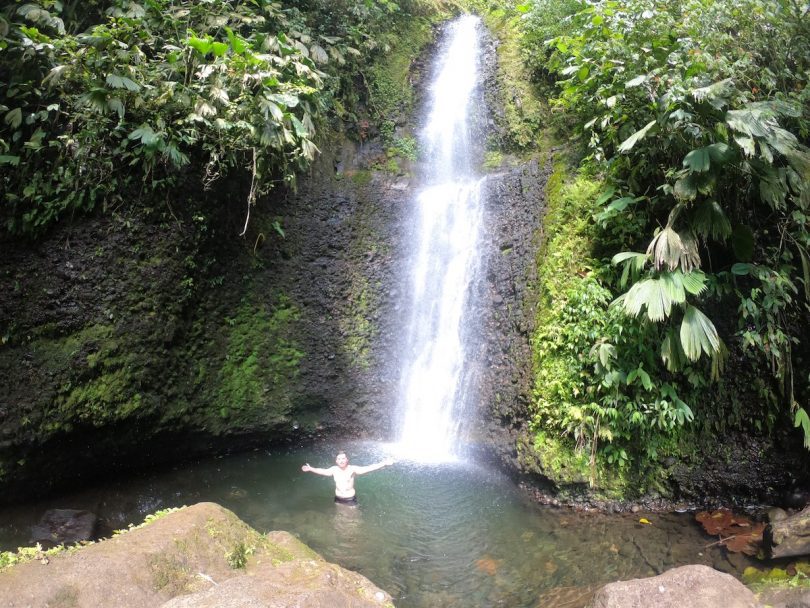
While the Galapagos Islands may be at the top of many travelers’ bucket lists in Ecuador, the Ecuadorian Amazon is growing popular. This region of the Amazon is home to some of the most biodiverse locations on the planet, and an Ecuador Amazon tour is a terrific way to explore it, with more opportunities to visit sustainably than ever before.
Rainforest and rainforest excursions are designed for adventure. There is much to see and do in Ecuador’s jungle, from deep in the Amazon at Yasuni National Park to the backpacker town of Tena.
In this post, we will share our Amazon jungle experience, plus tips for your upcoming adventure!
An Amazing Rainforest Tour in Tena
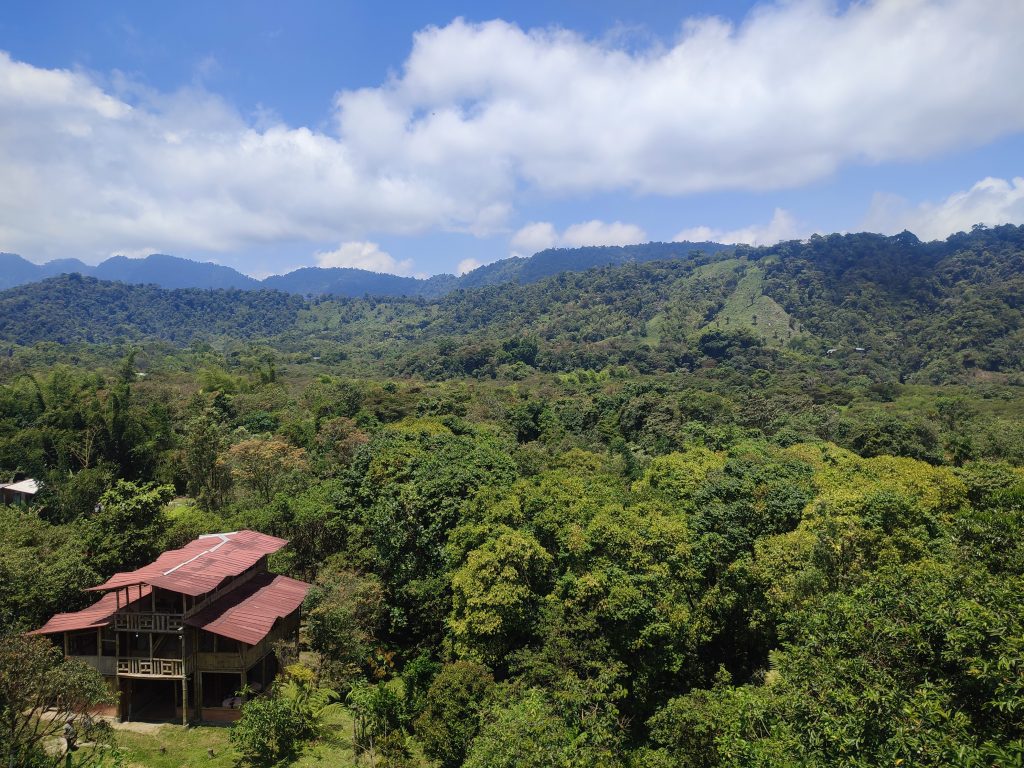
We boarded a local bus bound for the outskirts of Ecuador’s beautiful Amazon Rainforest. We were ecstatic since we knew it would be an unforgettable experience.
The huge motorways and clumsy local roads gave way after four hours to narrow, twisting gravel lanes that snaked through a mass of green.
Dense forests surrounded us; we would have been lost without the roads and modest buildings bordering the path.
The small village of Tena is the primary hub for people living further within the thick jungle. The area is teeming with life, and while I was too caught up with the surroundings, it wasn’t long before we sped away in a 4 x 4 truck to meet our local family hosts in the remote community of Pimilacha.
Pimilacha (which means butterfly in local Quechua) is a small hamlet that welcomes visitors to learn about their way of life.
Quechua culture and customs are preserved, communities thrive, and visitors have a one-of-a-kind experience at a local level in an Amazon lodge in a more remote location—all the benefits of travel without the negative social consequences.
We had the opportunity to interact with our host family every day. They taught us a lot about the Amazon Jungle.
We also had a unique healing experience with a shaman wherein a ritual ceremony was performed.
The best experience for me is the water rafting in the Jatunyacu River. It was an adrenaline-pumping activity. If you like adventurous activities, ask your tour operator to include a rafting experience in your itinerary.
Amazon Tours in Ecuador
Yasuni tours.
Yasuni National Park tours are considered to be the most expensive in Ecuador. Yasuni is located in the most remote and protected section of the forest. The lodges are charming and offer the most fantastic experience along the Ecuador Amazon River.
There are also popular camping and kayaking tours in Yasuni for individuals who want to get as close to nature as possible while exploring as much of the jungle as possible. It’s not your average lodge experience but a fantastic journey.
Cuyabeno Tours
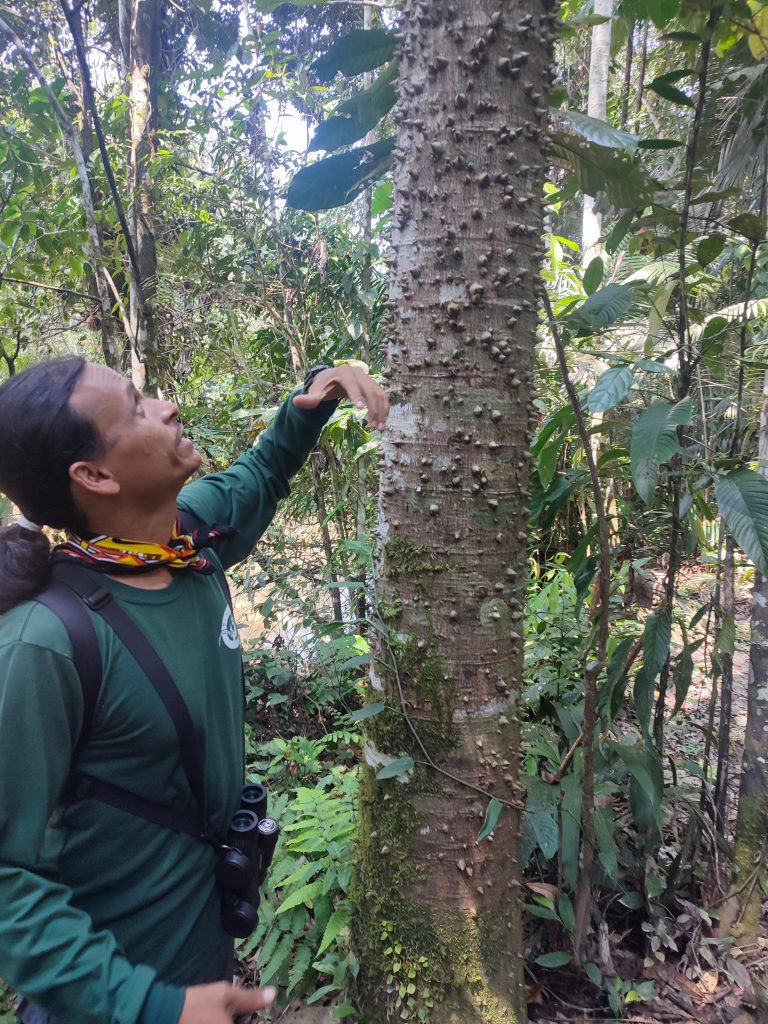
Cuyabeno Wildlife Reserve tours are often less expensive than those in Yasuni. Visitors can have various wildlife interactions. Multi-day tours typically cost roughly $100 daily, all-inclusive, though this can vary based on the tour’s housing.
We were able to do this tour a few years ago, and we stayed at the Tapir Lodge. It was also a fun experience!
Tena jungle excursions are often the most excellent options for budget travel in the Amazon because it is the most conveniently accessible jumping-off point in the Ecuador jungle and is located right on the forest’s edge. Some fantastic Ecuador rainforest tours are available here at a low cost, just like we did!
While trips in Tena are not in the inner Amazon, and you may not encounter the same species as in Yasuni or Cuyabeno, I can assure you that I had a great time and saw a lot of animals too.
Rafting Tours
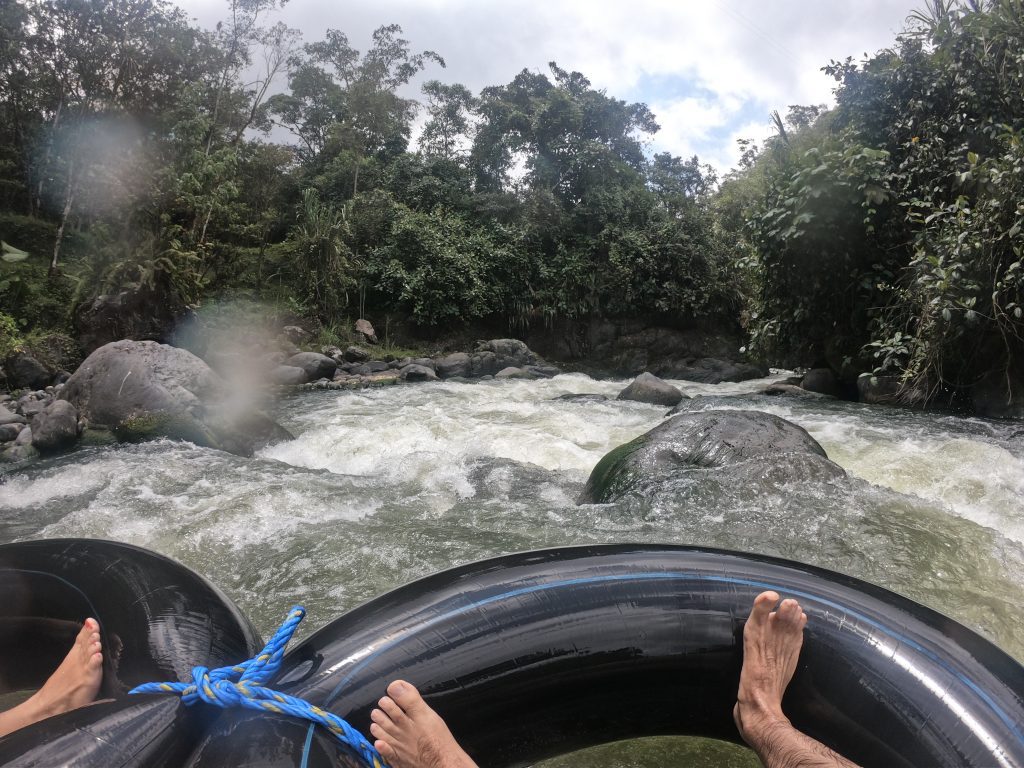
DCIM100GOPROGOPR0482.JPG
Tena is also a popular place for rafting in the Amazon. Aside from typical nature and wildlife trips, rafting is one of Ecuador’s most memorable Amazon excursions.
Rafting excursions depart from Tena on rapids of varying difficulty, so even first-timers can participate. In addition, safety kayaks accompany rafters to ensure their safety.
Tips For Amazon Jungle Visitors
- The months with the most rain in the Ecuador Amazon Basin are March, April, May, and June. The dry season lasts from July to December.
- Some species may be more difficult to find during the wet season.
- There will be little to no tourist traffic in the area. Amazon lodges, activities, and journeys are widely dispersed.
- Long jungle hikes shouldn’t be done alone because most pathways are poorly signposted. If you wish to go on a further excursion, ask the local you’re staying with, who would be delighted to show you more of their home.
- Never go out at night without a flashlight. Because you are in a jungle, you’ll never know what you might run into.
- Staying at a licensed lodge with proper visitor facilities is best, so others know where you are.
- Pack accordingly to the weather, and do not forget to bring your essentials.
Final Thoughts
An Ecuador Amazon Jungle Tour is a one-of-a-kind experience that everyone must try once in their lives. It is vital to keep an open mind, particularly when getting to know the local community.
Many guides are members of these communities and have made significant contributions to developing sustainable eco-lodges that provide services that reflect their traditions. While it may not be your typical destination, they have hidden pleasures that make the trip worthwhile.
You may also like

22 Things To Do At Isabela Island, Galapagos: Your...

Galapagos Bucket List: 25 Awesome Things To Do in the...

Pailon del Diablo Waterfalls in Baños, Ecuador: When...

11 Top Things To Do In Puyo: Ecuador’s Amazon...
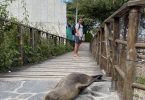
Things To Do in Puerto Baquerizo Moreno San Cristobal...
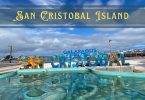
Best 25 Things To Do in San Cristobal Galapagos: Our...
About the author.
Oleg Galeev
I'm Oleg, and together with my wife, we've explored Ecuador and the Galapagos Islands, journeying through more than 20 cities ( Quito , Cuenca , Banos , Tena , Puyo , Guayaquil , Riobamba , Otavalo , Mindo and more) and nearly every island in the Galapagos (including iconic ones such as Bartolome Island , San Cristobal Island , Isabela Island , Santa Cruz Island and more). In this blog, I give you my real thoughts about each place we visited. This info can help anyone planning a trip to the Galapagos Islands or mainland Ecuador . I'm just a traveler, not a tour company, so I'm not trying to sell anything. That means I'll tell you the truth—both the good and the bad — about traveling in Ecuador based on what we experienced.
Leave a Comment X
Save my name, email, and website in this browser for the next time I comment.

- PRIVACY POLICY
- TRAVEL TIPS
- AUSTRALIA & SOUTH PACIFIC
- BRITISH COLUMBIA
- CONNECTICUT
- MASSACHUSETTS
- MISSISSIPPI
- NEW HAMPSHIRE
- NORTH CAROLINA
- NORTH DAKOTA
- PENNSYLVANIA
- RHODE ISLAND
- SOUTH CAROLINA
- SOUTH DAKOTA
- VAN CAMPING
- WORK WITH US
How to Visit the Ecuador Amazon plus a Packing List
Did you know the Amazon of Ecuador covers one-third of the entire country? And it offers a budget-friendly alternative to the crowded, touristy jungles found in other countries.
Since the rainforest has been high on my travel wish list since I was a kid, I was determined to fit it into our South America adventure.
I’m so glad we made it happen. It was one of the most memorable experiences of our entire three-month trip so I highly encourage you to add this wonderful destination to your itinerary!
We spent seven weeks in Ecuador, another helpful article to read next is Important Tips and Things to Do BEFORE Arriving in Ecuador.
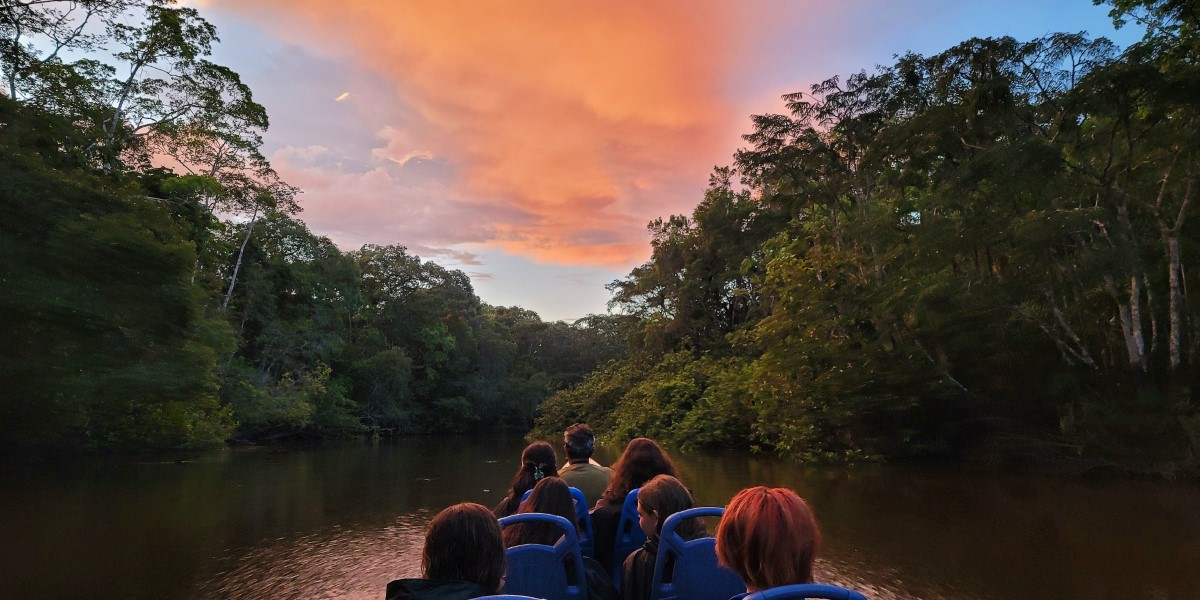
Below you’ll find all the essential things you need to know to help you visit the Amazon in Ecuador including the budget-friendly tour we took, the best time to visit, and what to pack.
Amazon Ecuador Weather
Be prepared for muggy warm air no matter what month you plan your trip. The Ecuador Amazon is hot and humid all year long with an average humidity between 85% and 95%.
Since you’ll be near the equator there is little fluctuation in the temperature. It hovers around 82° Fahrenheit (28° C) throughout the year, but we saw mid-90s in October on our expedition.
I hate the heat so I was worried it would be unbearable, but you get used to it. The guides do a fantastic job of heading out early, breaking midday, and then getting back out on the boat in the late afternoon/early evening.
Check out my packing list below to help make the days more comfortable.
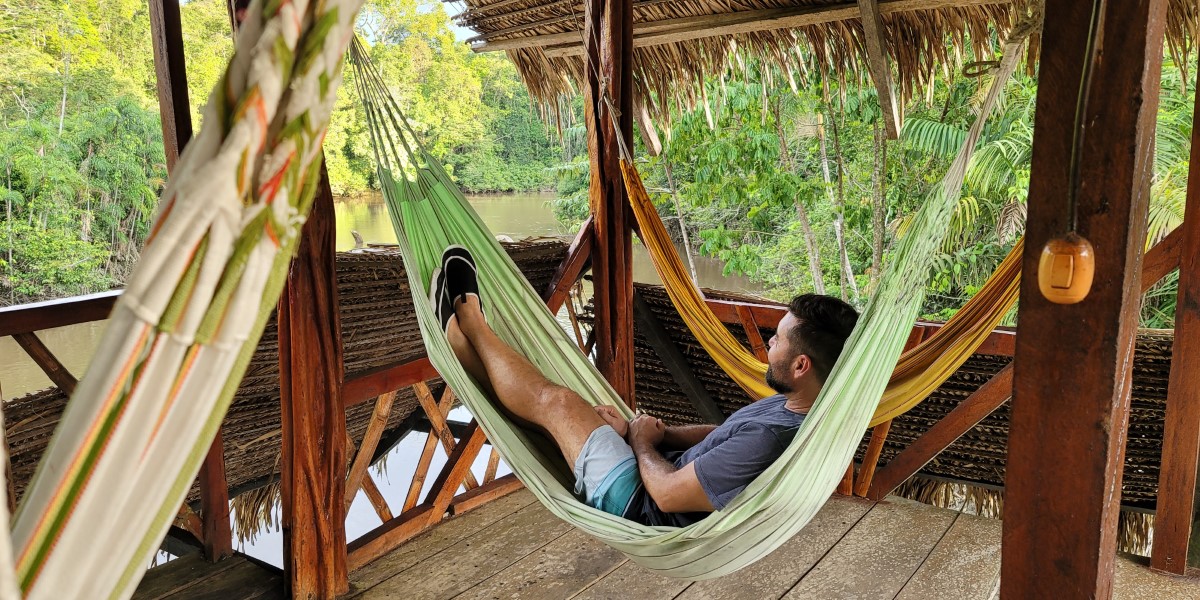
So when is the best time to visit the Amazon of Ecuador? The best time to visit the Amazon in Ecuador is either in the rainy season (March through July) or the shoulder season (August through October), avoiding the dry months of November through February.
It sounds counterintuitive to plan a visit to a place during the rainy season, but I’ll tell you why.
In the Amazon, the rain will be a welcoming break from the oppressive heat. Plus, you’ll get higher water levels which makes it easier to navigate to harder-to-get places. It also produces lush green vegetation and blooming flowers.
It really should be called the rain ier season, because it is the rainforest after all; there’s rain every month.
But in the dry season, there is less of it causing low water levels and a possibility of certain activities being canceled or boat rides being extended – and not in a good way.
Don’t leave home without a Best-Selling Ecuador Guide
Ecuador amazon animals.
With its diverse collection of wildlife, the Ecuadorian Amazon is an animal lover’s dream!
The jungle is home to over 1,600 species of birds, 800 species of fish, 350 species of reptiles, and 300 species of mammals.
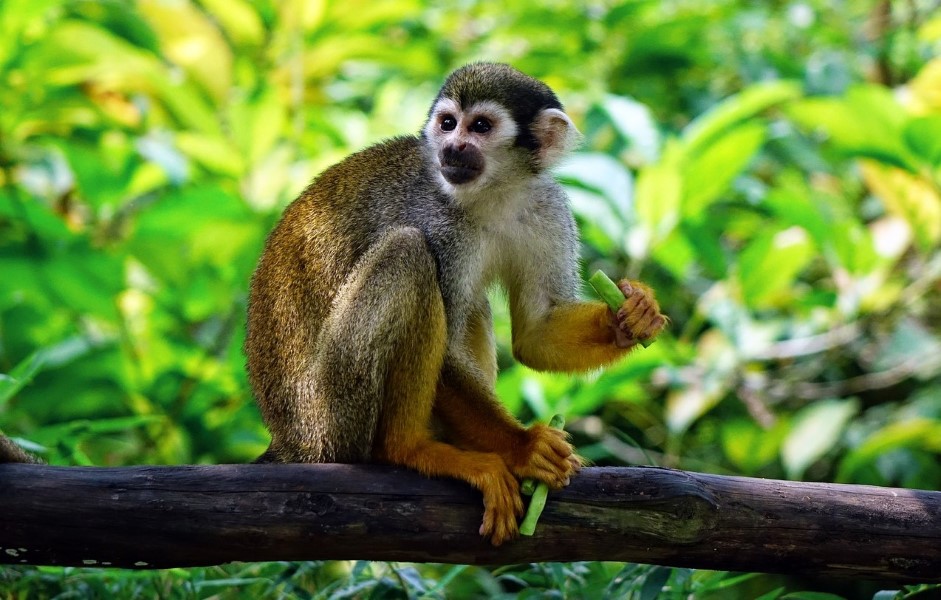
We were fortunate to see so many of them on our tour including both the gray and pink river dolphins, squirrel monkeys, toucans, a sloth, woolly monkeys, caimans, kingfishers, tiger herons, saki monkeys, red-tailed falcons, otters, red howler monkeys, wolf spiders, macaws, tree bats, anacondas, a boa constrictor, tarantulas, and parakeets.
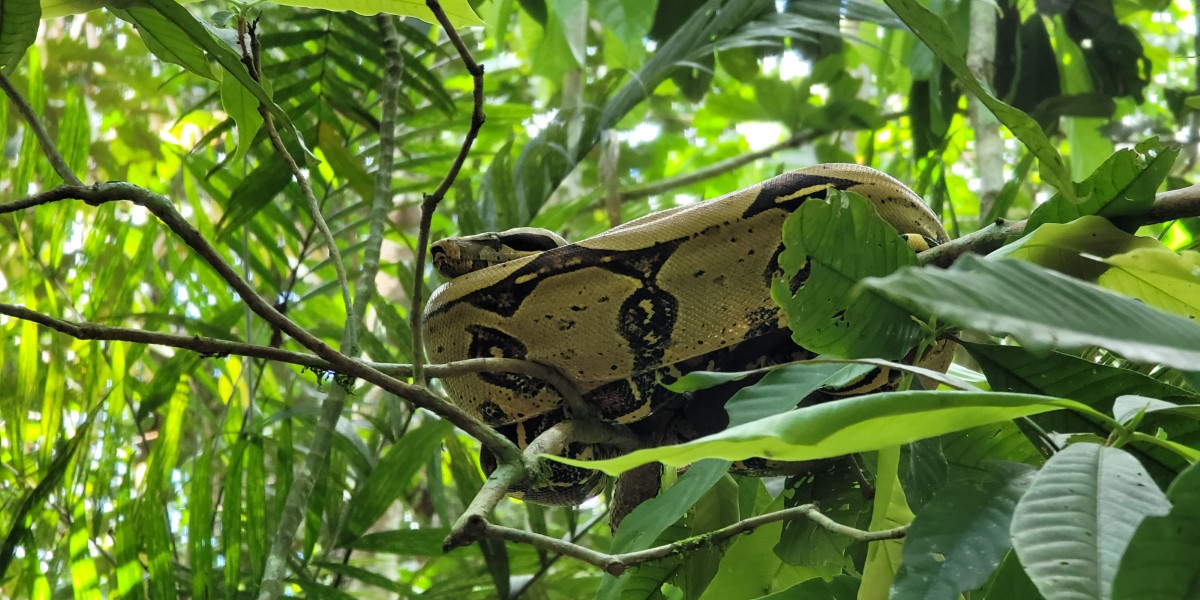
And those are only the ones we jotted down! I’m sure I am missing a few on this list.
Some of the other amazing creatures you may observe during your Ecuador Amazon experience include tapirs, jaguars, piranhas, and poison dart frogs.
How to Get to the Ecuador Amazon Lodges
While in Ecuador, you can visit the Amazon at Yasuni National Park or Cuyabeno Wildlife Reserve.
Both are very remote areas and take a considerable amount of time to get to. You can arrive by bus, private vehicle, or by plane.
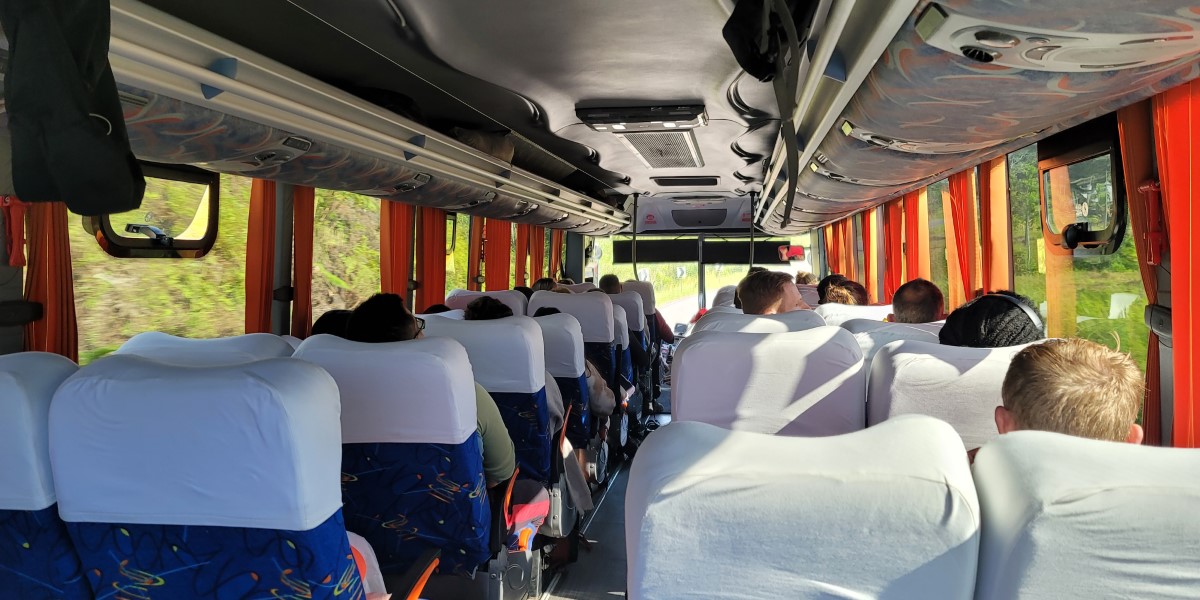
The cheapest option is by bus, but the drive is 11 to 12 hours from Quito (don’t miss my Best Things to Do in Quito post to help plan your time in the city) and is done overnight. We chose this option to save money, but if you are short on time and have the extra to spend, I recommend flying as the ride is long and the bus is cramped.
Click the Ecuador Amazon Rainforest map below to open Google Maps.
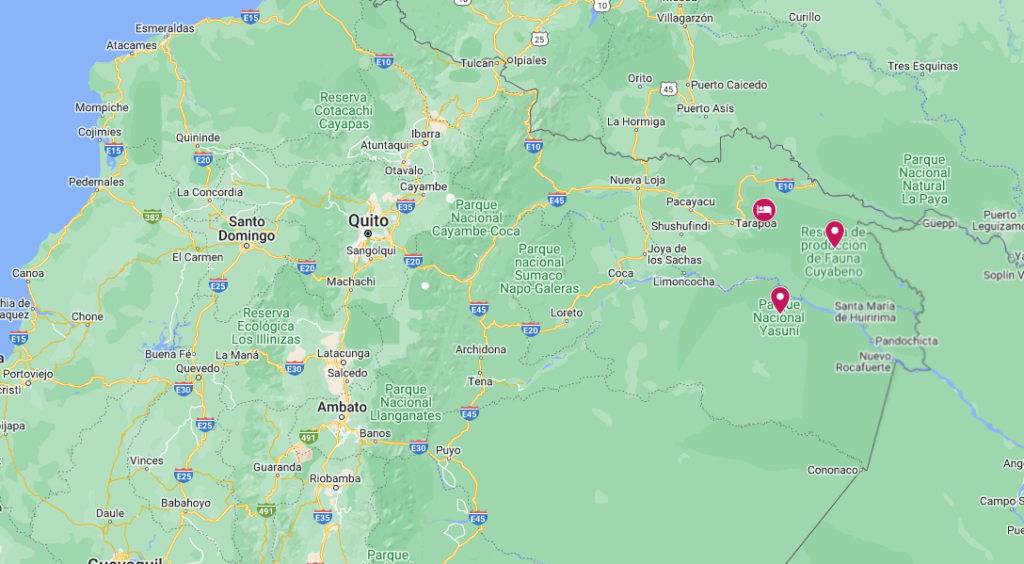
Ecuador Amazon Tour Itinerary
We chose the Cuyabeno Jungle Tour through Community Adventures.
The magnificent Cuyabeno Reserve is in the heart of the Amazon rainforest and cheaper to visit than Yasuni. The protected area is a biodiverse wonderland with over 2,300 square miles of lush tropical forest, winding rivers, and beautiful lagoons. It is an incredible experience to immerse yourself in one of the world’s most pristine ecosystems.
We thoroughly enjoyed every minute of our time in the jungle and will hold those unforgettable memories close to our hearts for a lifetime.
4-Day Cuyabeno Jungle: What to Expect
The overnight bus ride from Quito is roughly eleven hours. Since there are no bathrooms on the bus, we took two bathroom breaks.
Once we arrived in Lago Agrio in the morning, the guides separated us by which lodge we were staying at. We then hopped in a small boat with our group and rode roughly two hours through the Amazon jungle to the Dolphin Lodge.
I’m not going to lie, the overnight bus ride and then all-day exploring in the heat is a bit overwhelming, but the excitement of being in the Amazon outweighs the exhaustion.
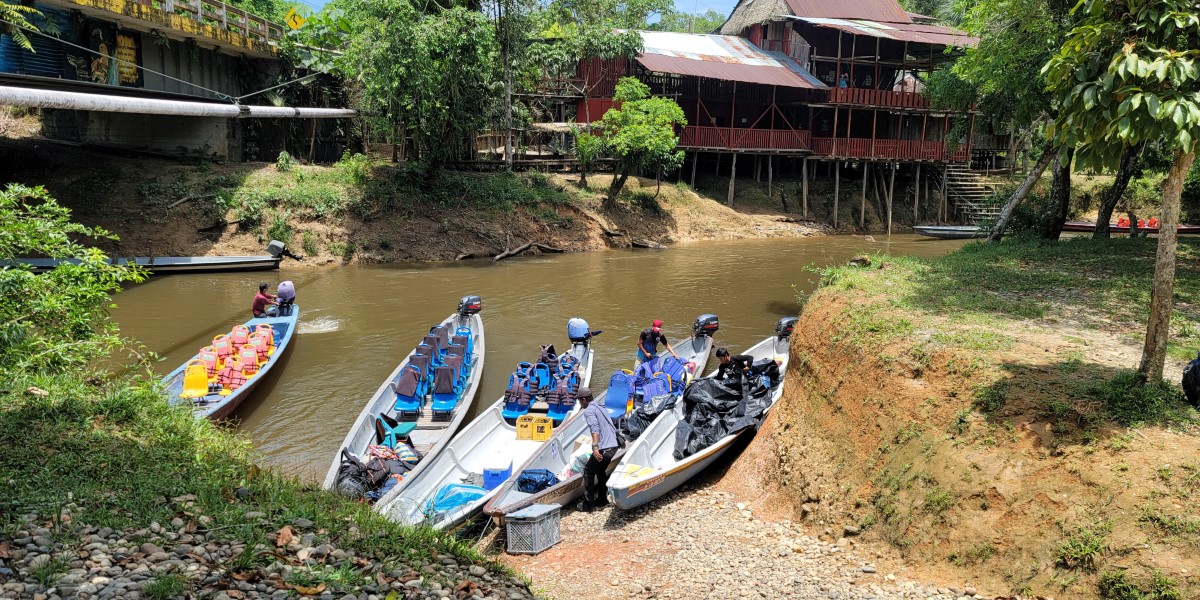
Welcome to the wild side of Ecuador, where you’ll find out immediately that the lush green jungle reigns supreme and the wildlife runs free.
From the first moment, we began our float on the river, there were all sorts of animal sightings. Before we arrived at the lodge, we had seen more monkeys and birds than I thought we’d see the whole trip!
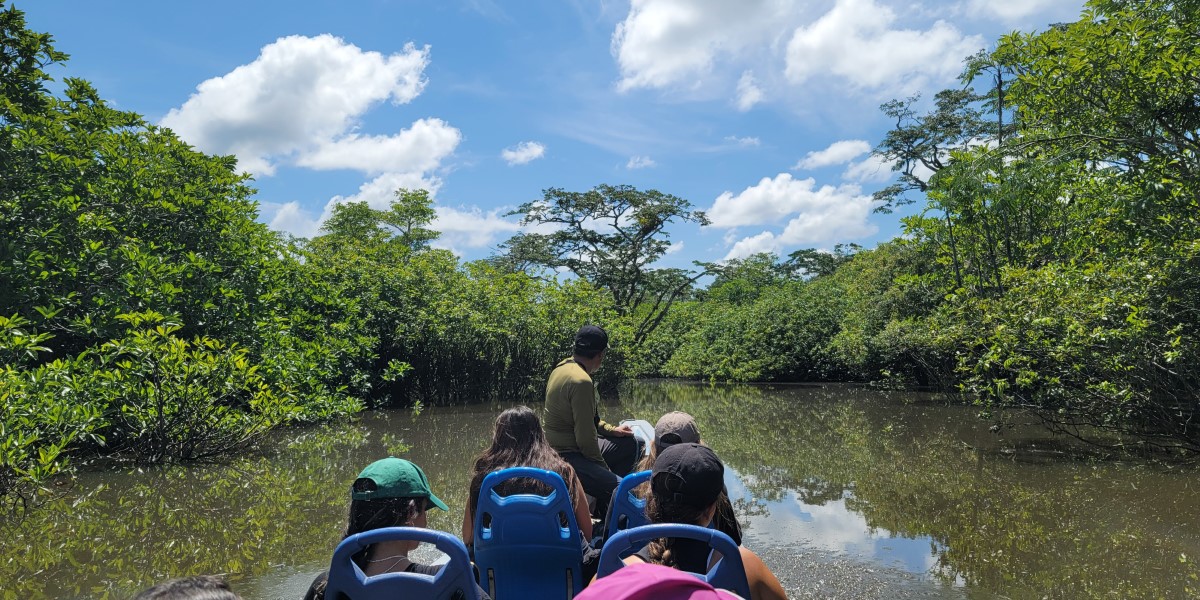
The two-hour canoe ride took a little longer since we stopped to take pictures. Our guide, also a biologist, did a fantastic job welcoming and introducing us to this remote corner of Ecuador.
Once we arrived at the Dolphin Lodge, we were taken to our rooms to settle in and clean up for a late lunch.
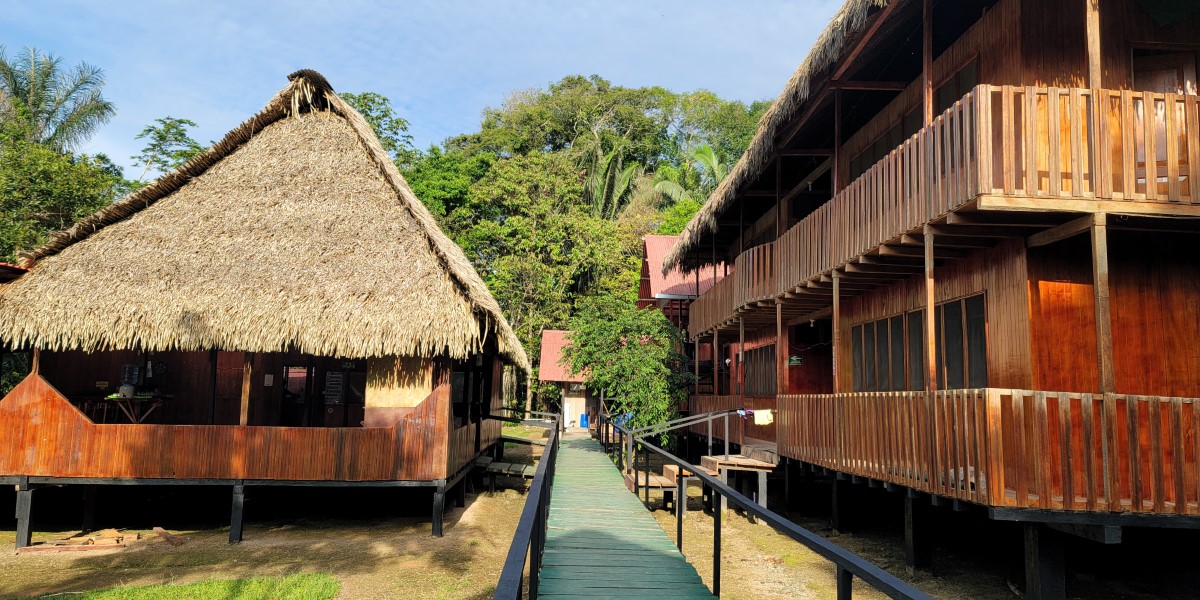
Meals are served communal style at a big long table. It’s a guaranteed way to get to know your fellow travelers.
In our group, we had one woman from Canada, a couple from the US but currently living in Ecuador, and a group of four Israeli girls who just got out of the military and were taking a sabbatical before university.
Even though everyone was exhausted from the long travel day, we were all chitchatting about where we were from and what we had done in the country before arriving in the Amazon.
After dinner, we relaxed a bit before heading out again on the boat to catch the sunset at Laguna Grande (the big lagoon) and for night swimming.
On our way, we saw the first big snake of the trip. It was big and black and coiled around a branch hanging over the river. Not something you necessarily want to see before jumping in!
Although our guide, Jose, assured us we were not in any danger as we all discussed how creepy it was swimming in water where we know spooky creatures frequent.
All our jitters disappeared though when we saw our guide let his 10-year-old daughter jump in. We figured he wasn’t lying then! That or he was paying a child actor to convince us it was all good.
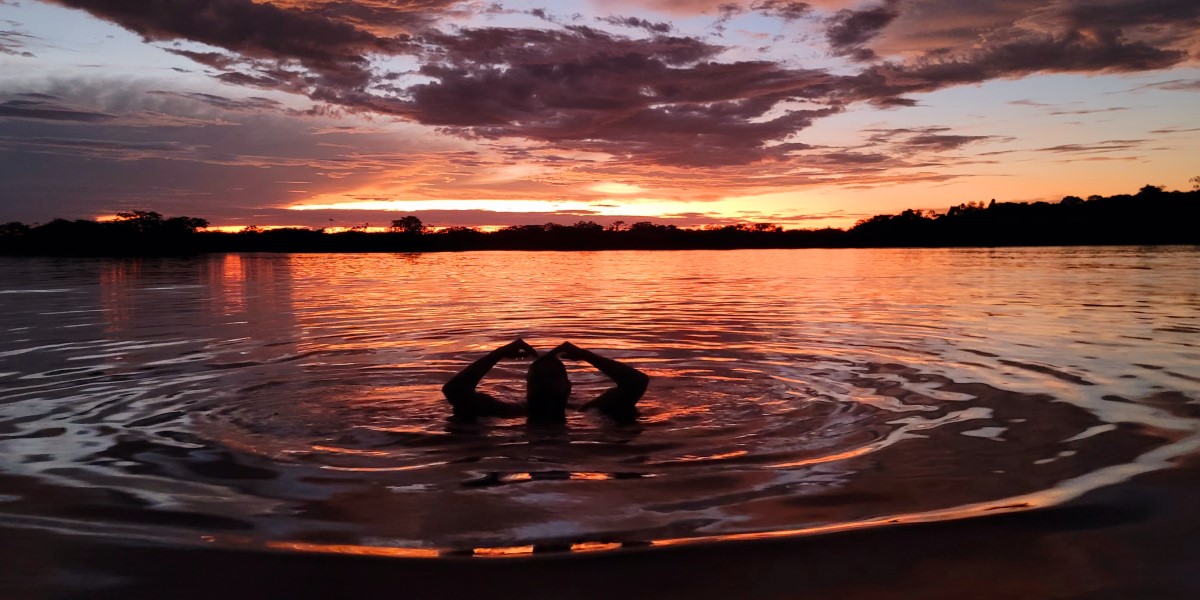
Our second day began with a simple breakfast. Most of the food prepared is simple and easy to digest as all provisions are carried in and also the guides do not want anyone to have any stomach issues while out exploring all day.
After breakfast, we went for a morning boat ride and hike in the Sendero Palma Roja (Red Palm Trail). On the hike, we learned all about the forest including how to climb trees, find bark with medicinal value for stomach aches, flora and fauna types, and survival techniques.
We also had an interesting sighting as one of the girls luckily looked up and spotted a boa constrictor (pictured above in the animal section) curled up on a branch.
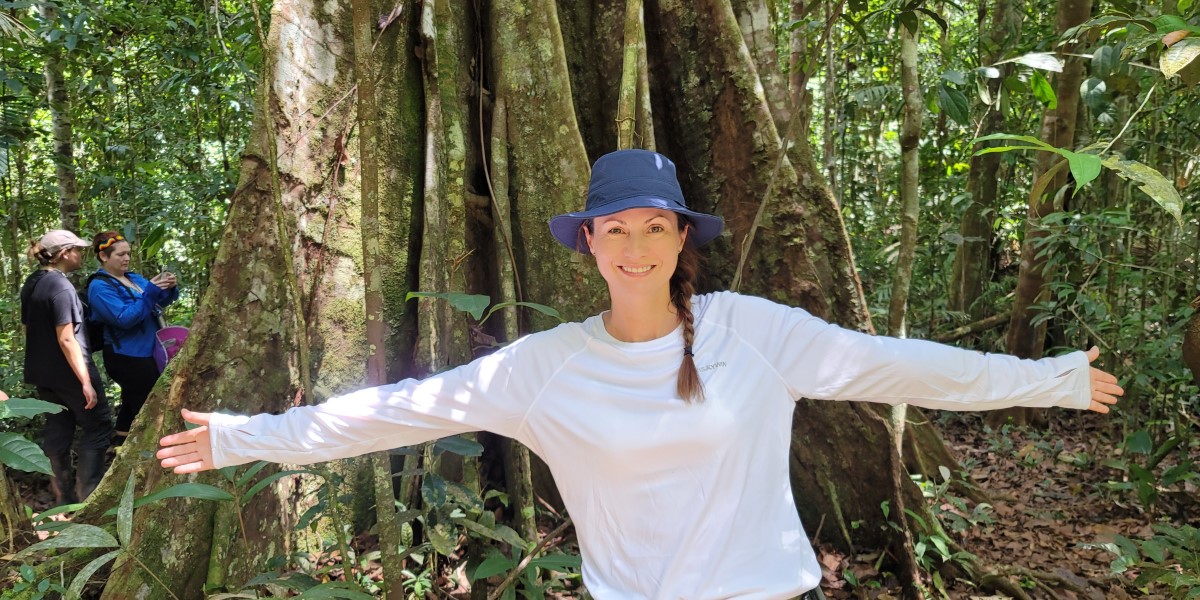
On the way back for lunch, we didn’t have a dull moment. First, we saw a few otters playing in the river, then we came across a sloth while observing various birds like toucans kingfishers, and macaws, and finally, a few gray river dolphins appeared for quite the show.
Late afternoon, we moved out again for a relaxing bird-watching experience. We saw many exotic species at Caimancocha and Patococha with the surprise appearance of a few saki monkeys.
We enjoyed another spectacular sunset while swimming in the lagoon. Once the darkness set in, we were able to observe an explosion of bright stars, the planet Jupiter and could even see the Milky Way since it was such a clear night.
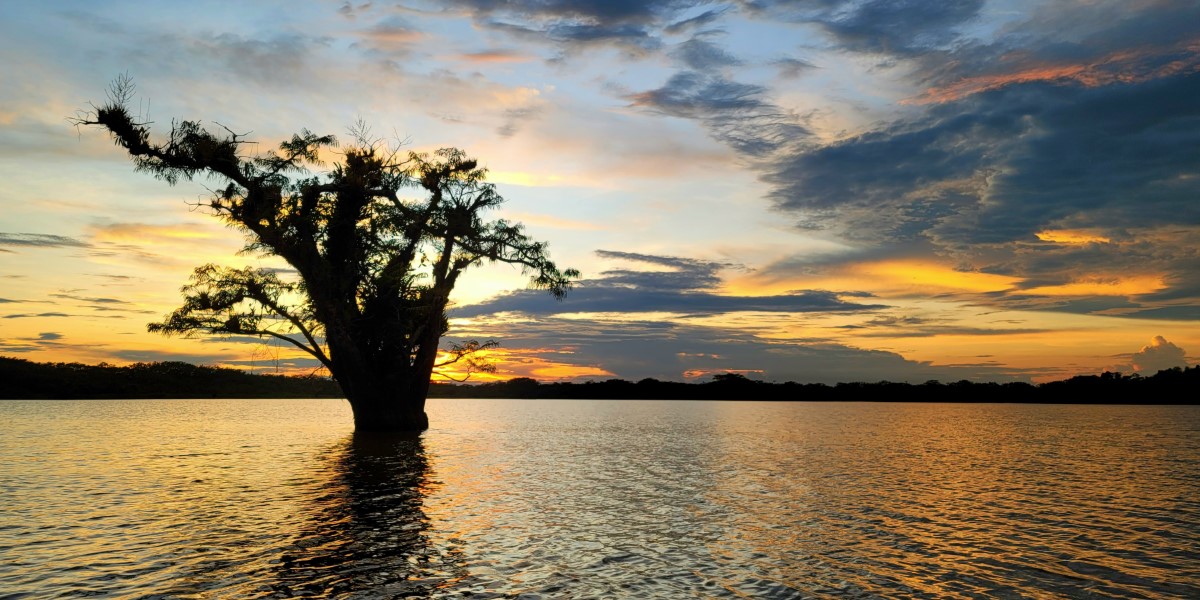
On the way back to the lodge, we spent some time on the river in the dark with our flashlights searching for caiman.
Make sure to pack a strong light for the trip because you will not be able to see their eyes glowing unless you are the one holding the flashlight. We found a few small ones and a big one that Jose managed to get right up on!
The day ended with a fabulous meal and a few beers before turning in for the night.
Day three was all about experiencing some local flair at one of the well-known indigenous tribes on the river, the Siona community. There we learned all about their local customs and traditions unique to living off the grid.
We picked yuca, a root vegetable, from the garden and then helped make bread with it. Afterward, we met with the shaman to discover his mysterious techniques for working with nature and the spirits.
Even though every day in the Amazon was special, this day really stood out as an extraordinary escapade!
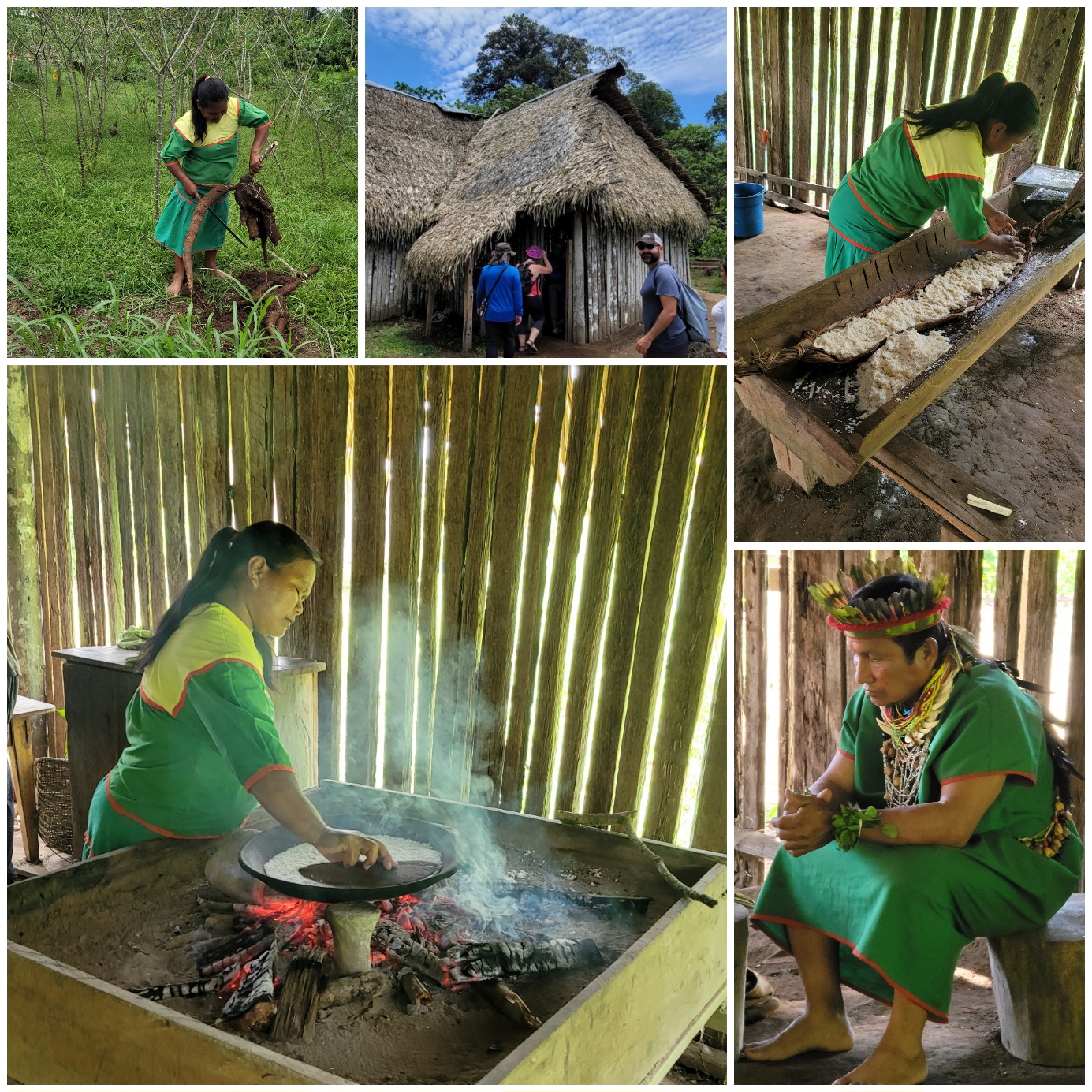
The morning of our final day, we all had the option to go bird-watching one more time before breakfast. Everyone from our group chose to get up a little earlier to take advantage of the last few hours.
On our final journey back up the Cuyabeno River, we were all ecstatic to see a large anaconda snuggled on a branch sending us off with a dramatic farewell. What a way to end our time in the jungle!
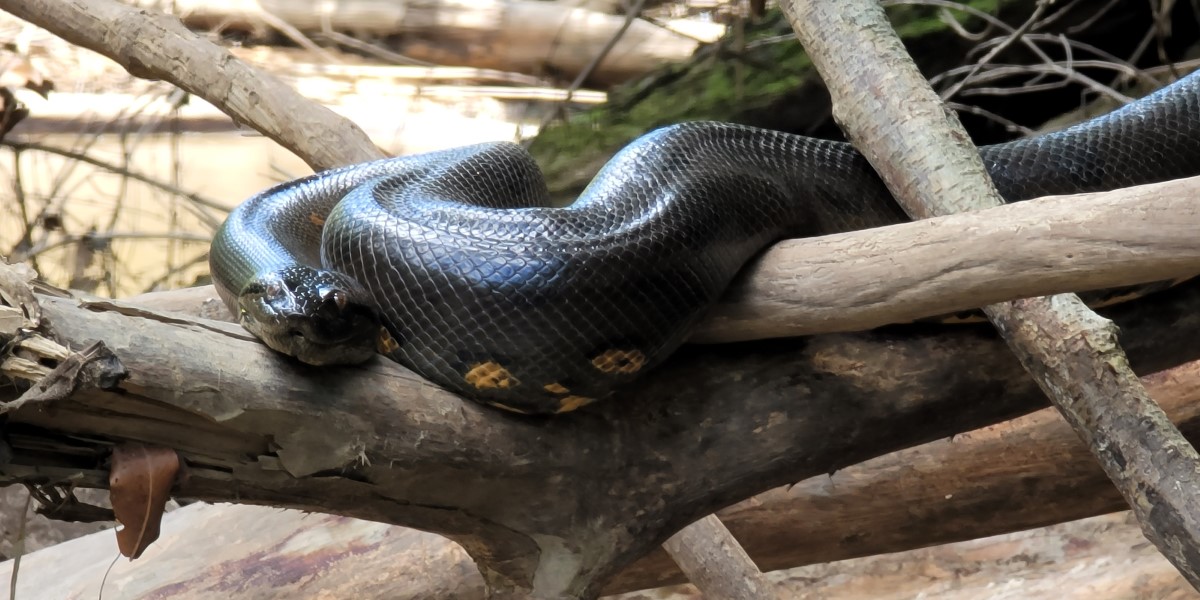
Wondering what to wear in the Amazon rainforest? We’ll make it easy for you, see below for a checklist of items to pack!
- Lightweight, quick-dry long pants (even though it’s warm I wouldn’t suggest wearing shorts because of bugs and hiking at night). See men’s hiking pants here.
- 4 Breathable Long Sleeve Light-Colored Shirts (that can roll up for short sleeves as well). See men’s breathable shirts here.
- Leggings – Because these are always a good idea for lounging around. Or lounge shorts for men.
- Short Pajama Set (I was worried about mosquitos at night, but with the netting and permethrin we had no issues and I really wished I brought shorts because it was so hot)
- Sporty Swimsuit (I say sporty because you’ll be climbing in and out of the boat without a ladder)
- Long socks for rubber boots
- 4 Pairs of Comfy Underwear
Medications
- Malaria Pills. Even though we did not come across many mosquitos and there are no major outbreaks of malaria in Ecuador right now, we feel it is better to be safe than sorry.
- Sudafed – We came from the mountains so my sinuses really acted up the first two days once we got back to lower ground.
- Electrolyte Packets – It’s extremely hot and humid so having a few of these helped stay hydrated.
Other Items
- Permethrin – It lasts up to six weeks or through six washings and works for bed bugs too so we sprayed our Amazon clothes and backpack before we left for our trip.
- Portable Charger (being out for hours at a time, I loved having an extra charge
- Dry bag with Shoulder Straps (to use as a day bag)
- Refillable Water Bottle
- Breakfast for the first morning & snacks for the bus ride
- Sunscreen & Lip Balm
- Foldable & Breathable Hat with a wide brim
- Quick Dry Towel
- A dry bag for dirty or wet clothes
- GoPro and/or Camera
- Kindle – you’ll have a decent amount of downtime and it’s nice not to have to burn the battery of your phone.
- Cash for tips
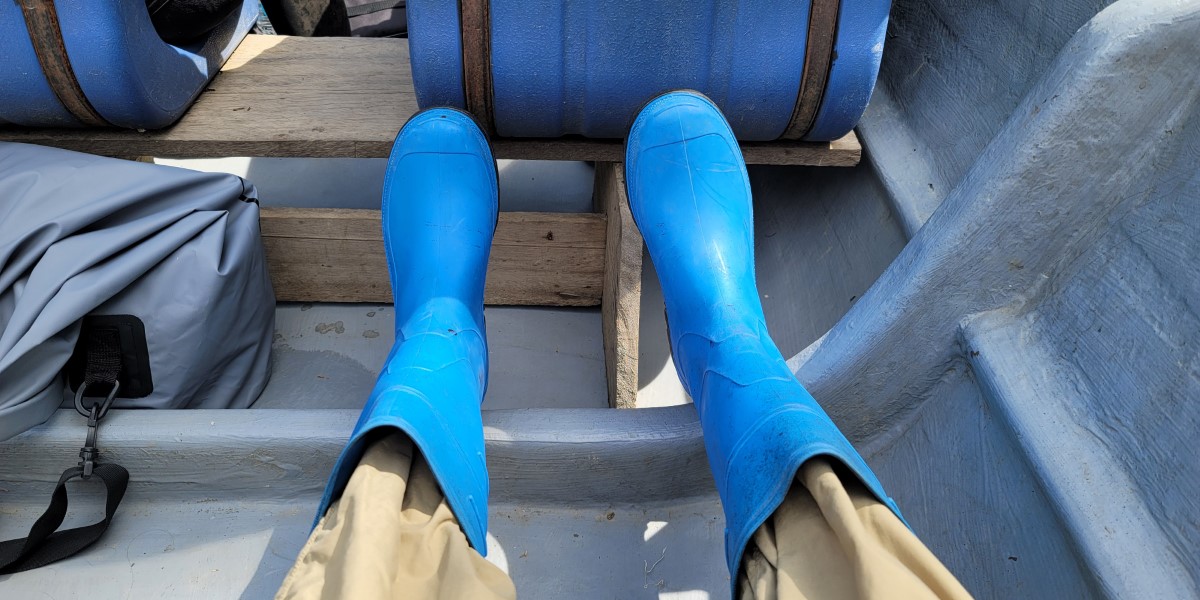
A helpful tip is to stay at a hostel the night before (we chose to stay at Community Hostel where our tour departs from) so you can leave your big backpack or luggage in their storage room and bring only what you need for the few days. Most hotels will do this as well.
The boats that take you in and out of the lodge are small so it is helpful for the guides to bring only what you need for those few days.
Also, make sure to line your bag with a garbage bag or something waterproof since it tends to rain often.
If you do not book the same tour as us, make sure to confirm whether or not waterproof ponchos and boots are provided. You will definitely need them at some point!
Many of the lodges have no air conditioning or electricity in the rooms. They will, however, have one area in the common space to plug your electronics in.
5 Interesting Ecuador Amazon Rainforest Facts
- The Amazon spans eight countries: Ecuador, Peru, Brazil, Bolivia, Colombia, Venezuela, Guyana, and Suriname.
- Even though the Amazon represents one-third of Ecuador, it is only 2% of the entire Amazon Basin.
- A Spaniard, Francisco de Orellano, was the first European to discover and explore the Ecuadorian Amazon in 1541. He named it after the female warrior tribes in Greek mythology.
- There are an incredible number of species of trees in the forest, making it the highest in any region of the world.
- There is a lot of crude oil under Ecuador’s Amazon and it is a constant struggle to keep the jungle secure from drilling and oil extraction. As of 2023, the debt-riddled government wants to tap into the reserves more than it already has.
Frequently Asked Questions
Is there yellow fever, dengue, or malaria in the Ecuadorian Amazon? Yellow fever: There is a risk of yellow fever in South America, but the risk is low in the Ecuadorian Amazon. There is a risk of Dengue Fever and Malaria, both contracted through the bite of infected mosquitoes, in Ecuador’s Amazon. It is recommended to wear bug spray and long sleeves, and pants while in the rainforest.
It’s best to see a travel doctor before your visit
Do you need a yellow fever vaccine to visit the Amazon in Ecuador? No, it is not required to have a yellow fever vaccine to visit the country of Ecuador or the Amazon Rainforest in Ecuador.
Is it safe to drink the water in the Amazon in Ecuador? No, it is not safe to drink water in the Ecuadorian Amazon. Your lodge will provide you with potable drinking water.
Are there mosquitos in the Cuyabeno Reserve? The only time we saw mosquitos was right at sunset and about twenty minutes after. Otherwise, we were pleasantly surprised not to have that many buzzing around.
Disclaimer: This post may contain affiliate links, if you book through our link we will receive a small commission at no additional cost to you. Thanks for helping to support the blog!
- About Author
- Latest Posts
Angela E. is a travel writer from the Chicagoland area who has visited all 50 states in the US and has traveled extensively around the world. She is passionate about exploring the great outdoors and hiking in particular. Her love for nature has taken her to some of the most beautiful locations on the planet. She has written extensively about her travels on her own website, Dang Travelers, and has been published in collaboration with other travel websites and multiple visitor bureaus around the country.
Latest posts from Angela
- The Best Road Trips from Chicago with Itineraries - April 15, 2024
- The Best Restaurants in Celebration, Florida - January 15, 2024
- Restaurants Open for Christmas Dinner in Orlando - November 4, 2023
Leave a Reply Cancel reply
Your email address will not be published. Required fields are marked *
This site uses Akismet to reduce spam. Learn how your comment data is processed .
- South Africa
- Philippines
- Travel Resources
- Work With Us
- House Sitting Enquiries
How To Explore the Amazon in Ecuador
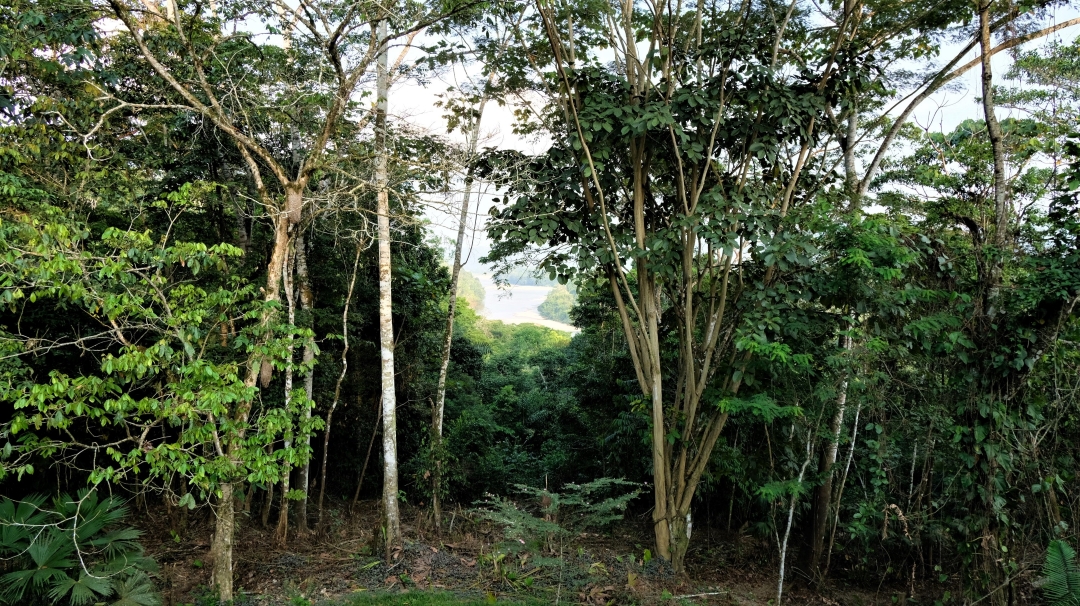
Adventure Activities in the Amazon Rainforest in Ecuador
We jumped into the Amazon rainforest for a weekend stay at Gaia Lodge and joined their 3 days/2 nights itinerary. Activities in the Amazon are plentiful and there’s more than enough to keep you occupied for at least 3 days but up to a week or more. I’d recommend reading the set itineraries ahead of time to see how many days you need to do all the Amazon rainforest activities on your wish list. Here are our highlights from our weekend in the Amazon:
Canoeing Along the Rio Napo
There’s nothing else like a canoe ride along one of the Amazon’s wide rivers. Flanked by dense jungle on either side, a canoe ride through the Amazon gives you ample chance to spot wildlife amongst the sprawling branches. You’ll have a guide with you who knows the favourite spots of the local wildlife and to help point out those hard-to-see animals.
During our motorised canoe ride down the Rio Napo and its tributaries, we saw three species of monkey – woolly monkeys, spider monkeys and squirrel monkeys. A flock of yellow-tailed birds flew overhead in a pointed arrow as we sailed along the waters. The river is laden with caiman but locals say you won’t see these crocs lurking during the day, as they only hunt along the river banks at night.
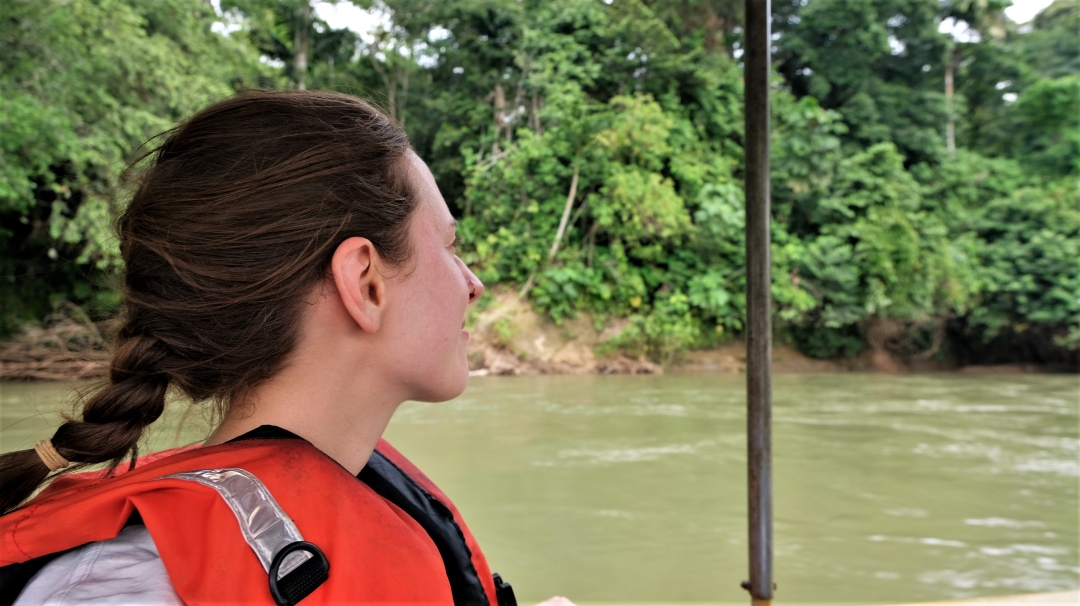
Hiking in Ecuador’s Amazon Rainforest
The Ecuadorian Amazon rainforest is hot and humid, but the best way to truly feel like an explorer is to go on foot. This region is one of the most bio-diverse parts of the world and a hike through the rainforest gives you the opportunity to see the flora and fauna up-close.
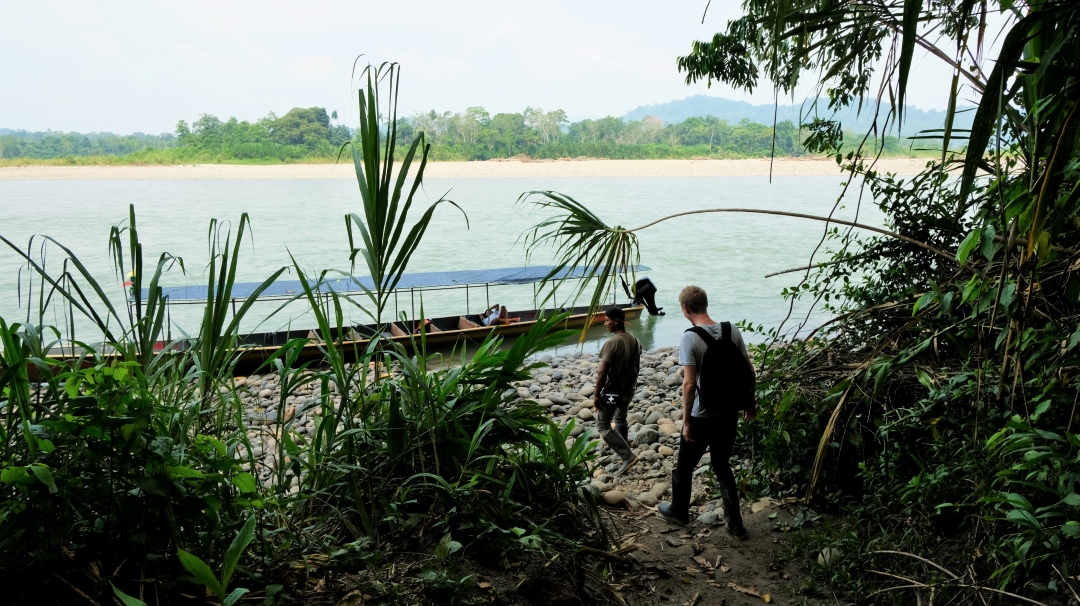
Community Tourism Visit to the Kichwa
Where the Napo and Arajuno rivers meet is Anaconda Island, inhabited by local Kichwa indigenous families. Here you can learn about local customs and take a swig of chicha , a traditional white, milky beverage made from yuca. It’s got a fermented, slightly sour taste to it, not dissimilar from kefir.
We (unsuccessfully) tried out using a blowgun for the first time. But we were suitably impressed with our guide’s ability to hit the wooden target! A short walk from the house where we tried chicha, we followed a jungle path to the swamps where we saw caimans, as well as a variety of plants and pink bananas!
Community Tourism Visit to Ceramic Makers
In the nearby town of Ahuano, local craft makers practise a variety of different handicrafts. We visited the family of ceramic makers to see their pottery in action. We were amazed by the skill as we watched pots and bowls being made and shaped by hand! Visiting community projects like this one is a great way to contribute and support locals through purchasing a small handicraft.
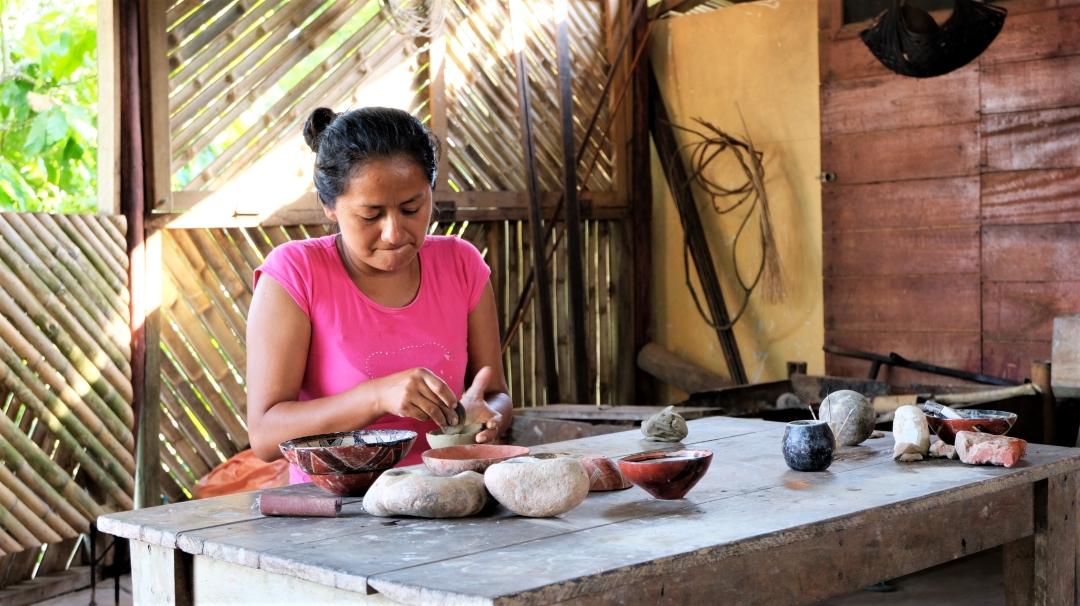
Butterfly Farm in Ahuano
There’s a gorgeous butterfly house located in the town of Ahuanco with 20+ species of local butterfly. It’s by far the best butterfly house we’ve ever visited, teeming with mariposas of all kinds. This was an unexpected but very pleasant addition to our Amazon itinerary.
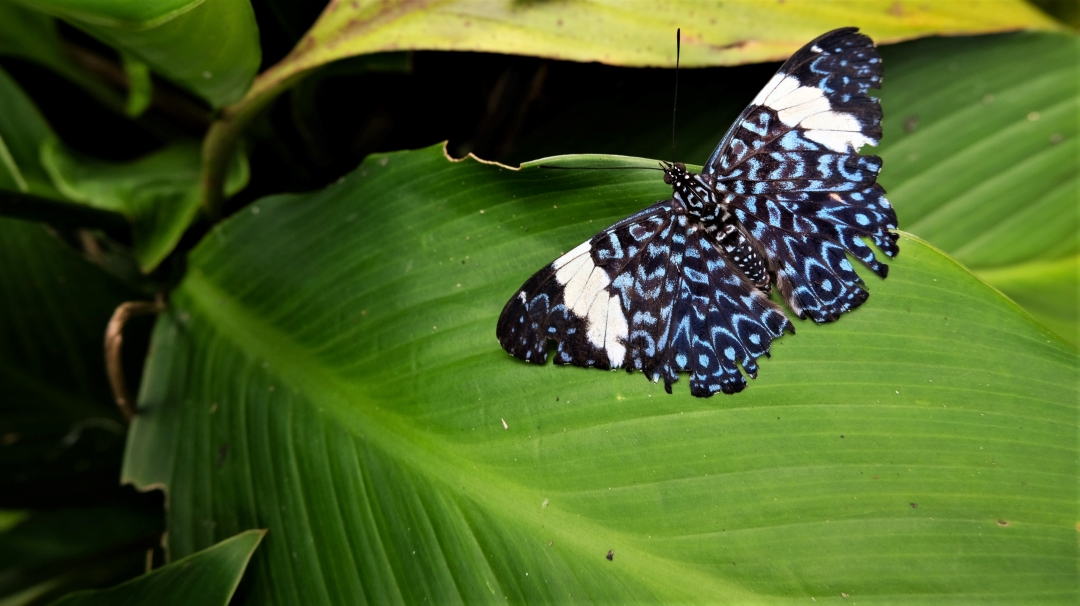
Amazoonico Animal Rescue Centre
The animal rescue centre, Amazoonico , is located along the river banks and can be easily reached by motorised canoe from Ahuano or any of the Amazon lodges in this area. It is one of the most highly regarded conservation projects in the Amazon and is staffed by volunteers from around the world. We had a wonderful volunteer from Germany as our guide when we visited the project.
The animals here were previously held captive as ‘pets’ and have heartbreaking back stories. The animals here are brought to the project to rehabilitate them for release into the wild. However, there are a few animal which are not able to return to the wild due to their condition. Animals you may see at the project include tapirs, ocelots, macaws and monkeys.
All proceeds from visits to Amazoonico support the maintenance and reintegration of the animals to the wild. Proceeds from visitors are the only source of funding for the project.

Wildlife in the Amazon Rainforest in Ecuador
The Napo River is a brilliantly bio-diverse area of the Amazon rainforest and you’ll have a significant chance of spotting wildlife here. The Napo River is a tributary river of the Amazon River and along its banks you can find rainforest inhabited by wildlife. Here’s a run down of some of the best wildlife you can see in Ecuador’s Amazon. We’ve included only the monkeys that we saw during our three-day stay at Gaia Lodge.
- Woolly Monkey – Woolly monkeys are medium-sized monkeys with brown to orange fur. They defend their territory against other monkeys aggressively. There’s a semi-wild colony of woolly monkeys on an island near the Amazoonico Rescue Centre .
- Squirrel Monkey – These adorable little monkeys live in huge groups of up to 50 animals. Wild populations of squirrel monkeys live along the Napo River.
- Spider Monkey – Spider monkeys are one of the largest monkeys you can see in the Amazon. They have prehensile tails, which means that their tail is as useful as a third arm. Spider monkeys are often hunted by humans and sold as pets. A spider monkey mother will fight to the death to protect her young, so the mothers are usually killed by hunters. You can spot spider monkeys in the wild along the Napo River.
- Gael’s Tamarin – These tiny monkeys are seen and heard from Gaia Lodge. They live in large groups and spend time foraging both on the ground and in the trees. There are several types of Tamarin in the Amazon.
Other Mammals
- Tapir – The tapir is the largest animal of the Amazon rainforest. Sadly, they are endangered due to hunting and deforestation. It takes a long time for a baby tapir to reach adulthood, which makes it hard for tapir populations to recover. You’re unlikely to see a tapir in the wild as they are nocturnal. You can see semi-wild tapirs at Amazoonico Rescue Centre.
- Jaguar – Jaguars are the largest type of cat to live in the Amazon. There are also ocelots and jagarundis. Jaguars are extremely rare and you are unlikely to see one in the wild. Jaguars are often killed by farmers as they have been known to eat a farmer’s livestock.
- Caiman – Adult caimans normally hunt at night. Locals swim in the rivers of the Amazon during the day, but they get out of the water before it gets dark! You can see juvenile caiman in the wild during the day at Isla Anaconda.
- Anaconda – The anaconda is the world’s largest snake. It’s not poisonous, but it can be dangerous to humans. You can see an anaconda at Amazoonico Rescue Centre. It’s unlikely to ever be released into the wild as – as you can imagine – the locals object to having this snake released near their village.
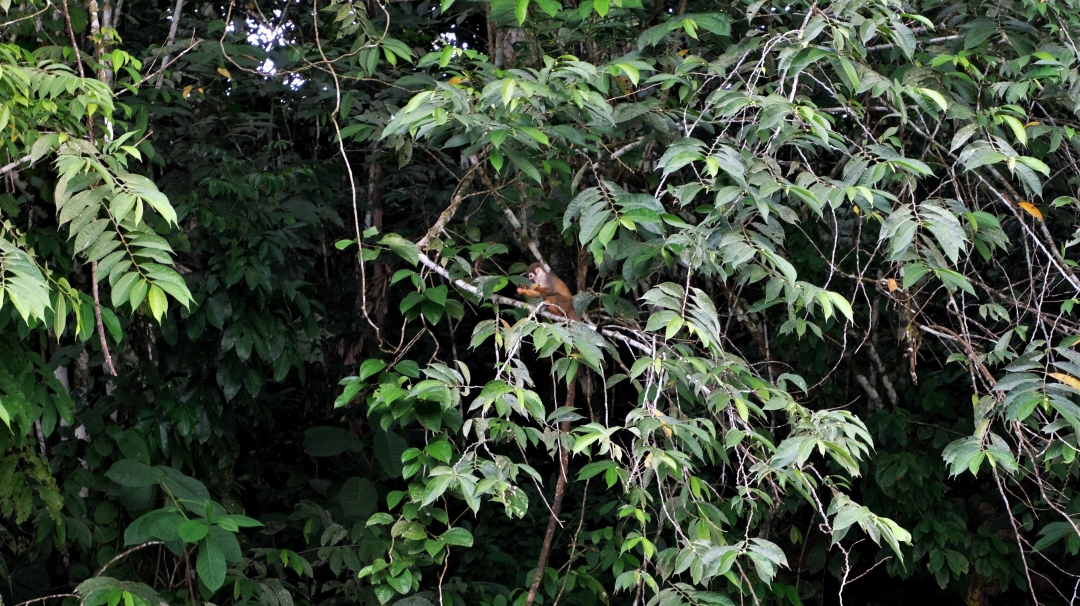
Best Amazon Lodge in Ecuador
There are a few different options for Amazon lodges in Ecuador but we loved our stay at Gaia Lodge . It was important for us to choose an Amazon lodge within easy distance to Quito so that we could take a weekend trip and avoid flying (which we avoid as much as possible for environmental reasons).
Tamarin monkeys parade through the trees right outside the front of the cabins at Gaia Lodge at sunrise and sunset. One evening, reading our books on the hammocks outside our cabin door we heard the pitter-patter of tiny feet running across our cabin roof, only to see tamarins leaping through the air from the cabin to the trees. It was an incredible sight.
After days-out in the jungle, come back to the lodge for a hot shower (not a given at Amazon lodges!) and a filling meal. The cooks and volunteers working in the kitchen created some great dishes, including quinoa soup, roasted potatoes with salsa, a passion fruit mousse that makes my mouth water thinking about it now and fresh fruit juices.
By night, fall asleep to the humming of cicadas and the soothing sounds of the jungle. The cabins at Gaia Lodge keep cool inside thanks to jungle-friendly design and building materials which contribute to passive cooling. There’s no need for air conditioning inside the cabins because of their design.
Amazon Lodge Prices
Prices of Amazon lodges vary substantially . The more rural you go, the more expensive the lodges can be and the higher the travel cost to reach them. We felt Gaia Lodge provided an excellent value for money option for budget and mid-range travellers in Ecuador.
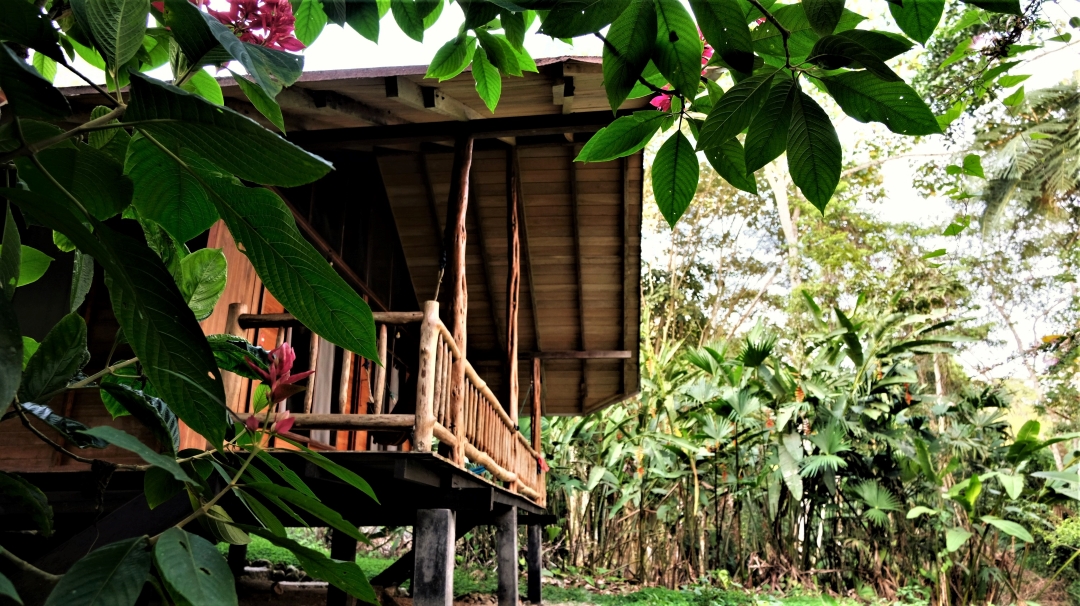
Ecuador Amazon Tours
Amazon tours in Ecuador range from 2 days / 1 night to 5 days / 4 nights or longer. We wouldn’t recommend going for less than 3 days / 2 nights. Otherwise the journey to the Amazon doesn’t feel worth it and it’s likely your itinerary would feel rushed.
The 3 or 4 day options give you enough time to have a full Amazon experience and spot some wildlife. If you want to really soak in jungle vibes and relax in the jungle, then 5+ days is the right amount of time for you.
Activities on Amazon tours vary depending on the lodge who you book through. We read a lot of Amazon tour itineraries before opting for Gaia Lodge who we felt had the best itinerary offering for a 3 days / 2 nights trip to the Amazon from Quito.
- 3 days / 2 nights – Our pick! We loved this length program for a full, long weekend itinerary including canoe ride, chocolate-making class, short jungle trek, indigenous community visit, butterfly farm visit and Amazoonico rescue centre visit.
- 4 days / 3 nights – For a real Amazon adventure! Additional activities on this itinerary include a night walk through the jungle to spot frogs and a jungle walk to the Rio Blanco waterfalls.
- 5 days / 4 nights – For the true Amazon experience! Additional activities on this itinerary includes an experience learning about gold panning and local fishing, a visit to Isla de los Pájaros (Bird Island) which is excellent for bird-lovers, a Shaman visit at an indigenous community to cleanse bad energy and a trip to the Selva Viva Reserve.
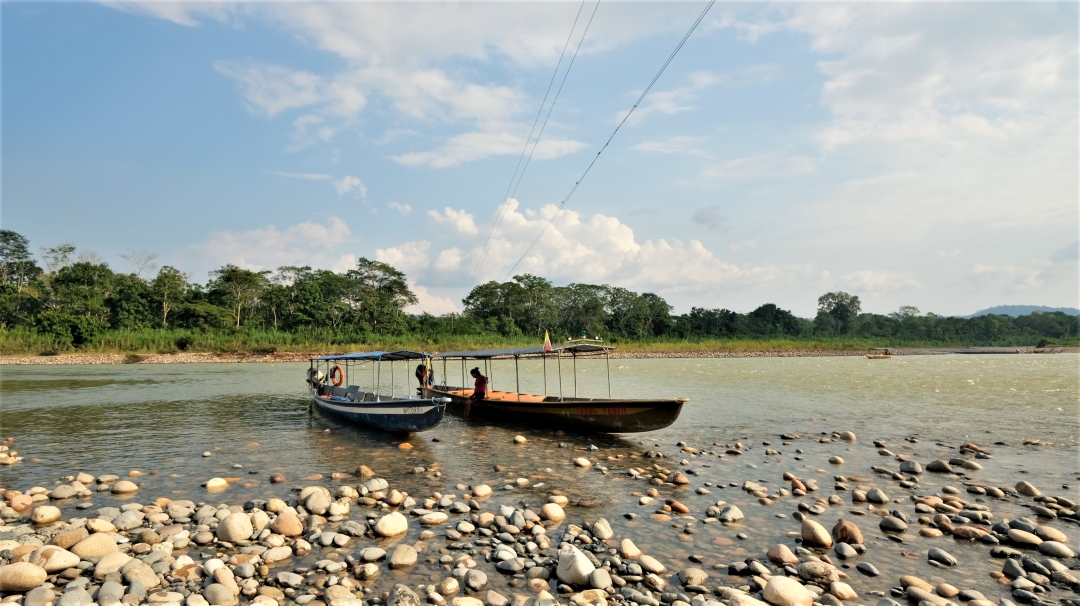
Volunteer in Ecuador’s Amazon Rainforest
Love the idea of visiting Ecuador’s Amazon rainforest? Amazingly, you can also volunteer in the Amazon!
Whilst staying at Gaia Lodge, we met two volunteers from Argentina who had found the opportunity through Worldpackers . They absolutely loved volunteering at Gaia and planned to stay a few months. They helped out around the lodge, running a chocolate making class we attended and assisting with meal prep, as well as working on the website and social media.
Volunteering is a great sustainable option for visiting the Amazon. Volunteers at Gaia Lodge stay 4-8 weeks. The length of the volunteering program here means volunteers have time to dedicate to connecting with the local community and the team working at the lodge, many of whom are Kichwa indigenous.
If you’re interested in volunteering in Ecuador’s Amazon rainforest or looking for other volunteering opportunities in Ecuador and South America, check out the Worldpacker’s website . Use my promo code: CHARLIEONTRAVEL for $20 off your membership .
You can find the Amazon volunteering opportunity at Gaia Lodge in the Amazon rainforest here .
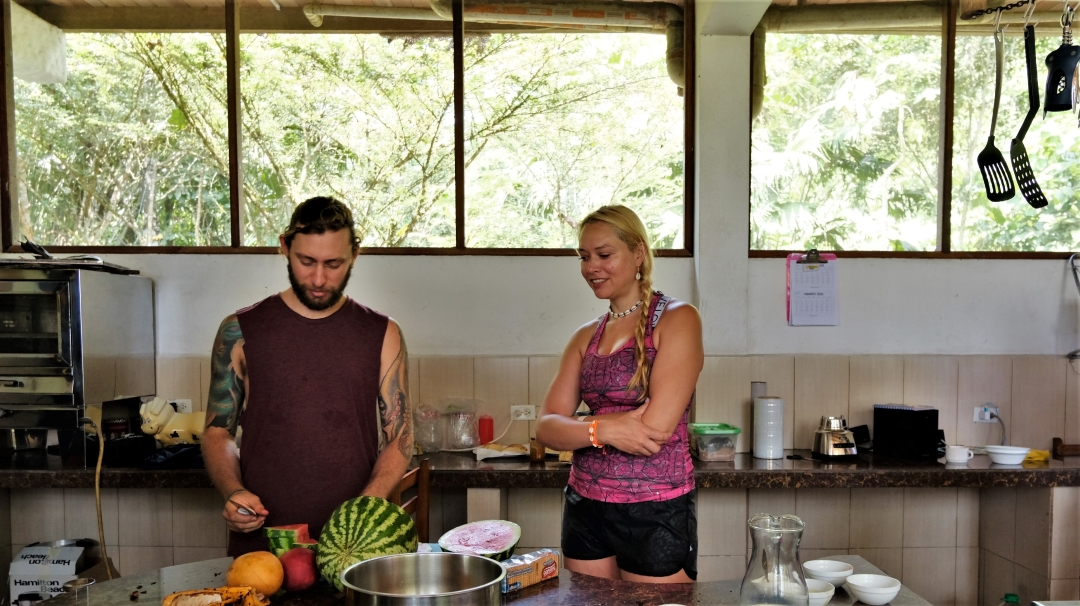
How to Get From Quito to the Amazon
You can reach the Amazon rainforest within five hours from Quito. There are multiple options for reaching the Amazon, depending on the part of the Amazon you choose to visit. If you’re visiting an Amazon lodge which is located near Tena, you can travel by road. For more rural lodges, you may need to fly from Quito.
We stayed at an Amazon lodge near the town of Tena. Here are the three main options to reach this area of Ecuador’s Amazon:
Bus from Quito to Tena
Public buses from Quito to Tena run every hour from the Quitumbe terminal in the south. Buses cost $8. From Tena, there are buses every hour to Punta del Ahuano. Buses cost $1.50. Here you need to cross the river by canoe, which takes about a minute and then take a taxi to your lodge or otherwise meet a representative from your lodge at this point. The trip takes 5-6 hours.
Shuttle from Quito to Tena
A semi-private shuttle picks you up at your door in Quito and takes you to the river’s edge at Punta del Ahuano for $30 each way. Shuttle departures from Quito are 5:00AM and 5:00PM (Mon-Fri) and 6:00AM and 5:00PM (Sat-Sun). For the return leg shuttle depart from Ahuano at 3:45AM and 3:45PM (Mon-Fri) and 4:45AM and 3:45PM (Sat-Sun). You’ll need to take a 1-minute boat to cross the river and then a taxi to your lodge or otherwise meet a representative from your lodge at this point. Your lodge can usually book the shuttle for you.
Private Transfer from Quito to Tena
A private transfer to most lodges direct from Quito or Mariscal Sucre airport is possible to organise. The transfer departs any time before 5PM but cannot depart after this time due to night time road closures on the route to the Amazon due to landslides. A private transfer usually costs around $150 with a maximum of 4 people. The journey takes approximately 4 hours. Your lodge can usually book the private transfer for you.
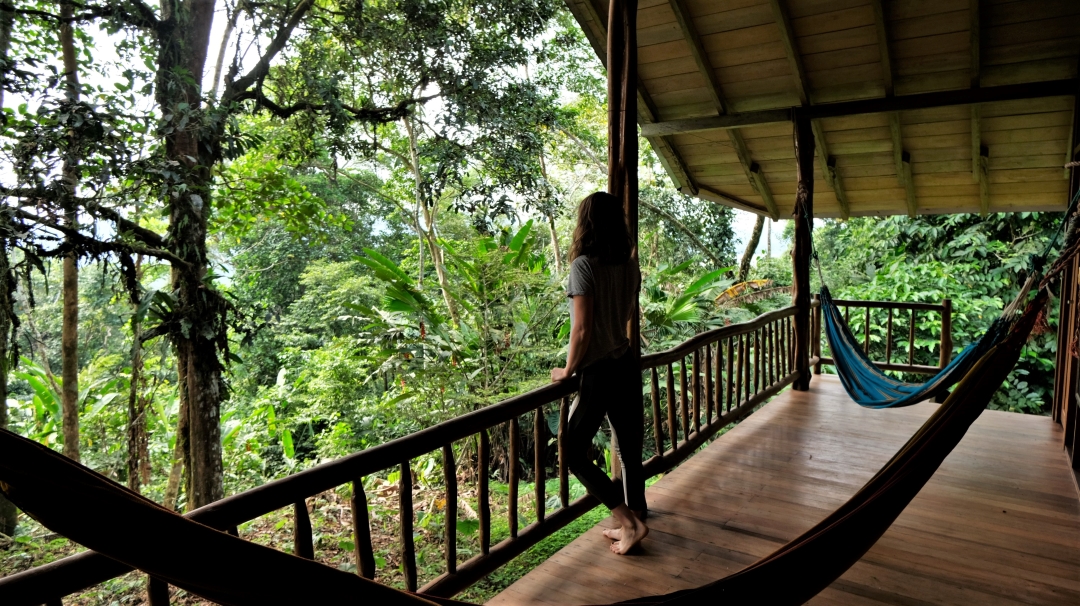
What To Bring to the Amazon Rainforest
The weather in the Amazon rainforest can vary. It’s likely you’ll experience humid, muggy weather with some rain showers. Here’s our recommended kit list for an Amazon rainforest trip:
- Long trousers – mosquito bites are common so it’s better to keep you legs covered.
- T-shirts or shirts .
- Light rain jacket – rain showers are common but due to the warmth and humidity you won’t want a padded jacket.
- Hiking boots – recommended for jungle hikes, although your lodge may provide you with welly boots. A decent pair of trainers would also be fine unless you’re doing a longer hike.
- Sandals – recommended for walking around your lodge. Many lodges have a no-shoe policy indoors so you’re often taking your shoes on and off.
- Sun hat or cap – even when cloudy, you’ll want to protect your face from the sun.
- Sunglasses.
- Day backpack – to carry water and your essentials.
- Water bottle .
- Mosquito repellent.
- Sun protection .
Packing for a longer trip? Read our full travel packing list here .
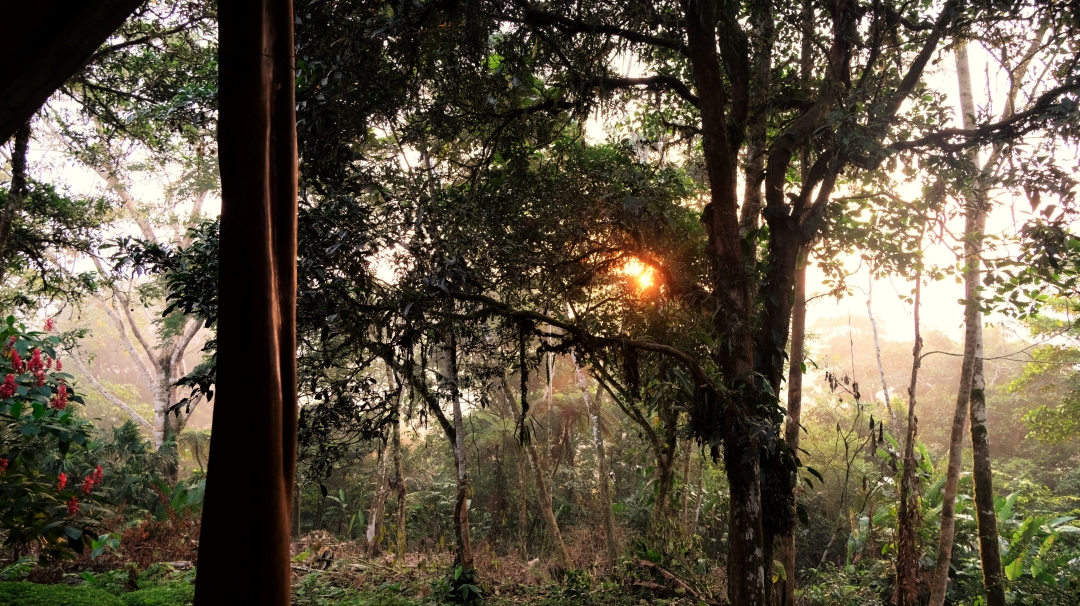
This blog post was written in collaboration with Gaia Lodge and Worldpackers , who kindly invited us to visit the lodge, meet the Worldpackers volunteers there and explore Ecuador’s Amazon Rainforest.
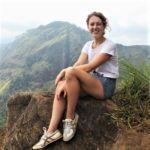
Charlie Marchant
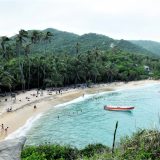
Colombia Travel Costs
Quito food guide.

Leave a reply Cancel reply
About charlie & luke.

We’re Charlie and Luke — UK travel bloggers, adventurers and storytellers. We travel slow and write about sustainable travel . We want to make responsible travel choices and help you do the same. Get to know us .
Subscribe To Our Newsletters
Hand curated travel guides and sustainable travel inspiration straight to your inbox.
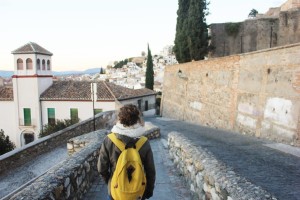
Ecuador: Amazon Jungle Short Break
4 days | travel through the lush ecology of the ecuadorian amazon..

Discover the secrets of the Ecuadorian Amazon on this breathtaking tour into the heart of the jungle. Take guided walks to discover the abundant plant and animal life that call this part of the Amazon home. Awake to the exotic sound of birdcalls and discover the thrill of sleeping in this secluded spot deep in the Ecuadorian jungle.
Trip overview
- Explore the majestic rainforest however you’d like – jungle treks, dugout canoe safaris, or by relaxing in a hammock and keeping an eye on the wildlife
- Expert guides will reveal extraordinary wildlife – caiman, otters, sloths, parrots, monkeys, hoatzin, monkeys, capybaras, anacondas – and provide insights into the area's importance to the local communities
- Staying in the depths of the Amazon is a once-in-a-lifetime experience that defines the saying of ‘off the beaten track’
- On Short Breaks, you maintain a good level of independence and freedom, with the added bonus of having the details sorted out for you. You’ll have lots of free time and you won’t be accompanied by a Trip Leader. This means that all included activities and tours will be run by different local Intrepid partners, and these may operate independently from each other. The included activities and transfers will operate on a join-in basis, which means that you could have your Adventure all to yourself, or others may join you along the way. If you would prefer to travel in a group with a dedicated Trip Leader, just get in touch with your booking agent and they will take you through some alternatives.
- Temperatures in the Amazon can fluctuate. It can get really hot, humid, sticky during the day, and cold at night. Light cotton clothing is the best way to tackle the heat during the day, and base layers are ideal for keeping warm at night.
- Insects, especially mosquitoes, abound in the Amazon. Bring tropical strength insect repellent and wear long sleeves and pants to protect your skin.
- This trip includes jungle hikes, which can be strenuous due to the humidity. A decent level of fitness is required to feel comfortable when exploring the jungle.
- While accommodation in the Amazon is clean, comfortable and ideally located, it can seem pretty basic. Please remember that this is a very remote part of the world.
Bienvenidos! Welcome to Ecuador! Your trip starts with an early pick up from your preferred Quito hotel.
Flight times to the Amazon Jungle will vary according to the day of departure. The flight time and pick-up time from your hotel will be confirmed at your pre-departure meeting the evening before your trip starts.
Please check this with reception upon arriving the day before. Your early morning transfer takes you to Quito airport in time for a 30 minute flight over the Andes to the river port town of Coca. A lodge representative will meet you at the airport and take you to the river port. Here you’ll board an 18 metre (57 foot) motorized canoe for a 1-hour trip upriver. Life vests are provided. A box lunch is served as you navigate one of the largest tributaries to the mighty Napo. The Napo River is the largest river in Ecuadorian Amazonia and as you cruise along the water it is easy to spot a number of shore birds including herons, kingfishers, spoonbills and ospreys. At the lodge, you’ll receive a warm welcome from our local staff, who’ll give you a refreshing beverage and snack while you’re introduced to the facilities. You’ll be issued with a pair of rubber boots to use for the duration of your jungle stay. In the afternoon, and once you've settled at the lodge, your guide takes you on a short hike to a panoramic point for rainforest views that extend as far as the eye can see in every direction. Dinner at the lodge is normally served at 7pm.
- Quito- Legends and Culture Tour - USD35
Please provide the location of your overnight hotel in Quito at least 7 days before the start of this trip. If you are finishing an Intrepid trip in Ecuador the day before this trip starts, we will know where you are staying at. If not, we can help you arrange extra accommodation in Quito for you. Please contact your booking agent for more details. The day before your trip starts, an Intrepid local representative will meet you at your hotel. The representative will call beforehand to advise you of the exact time. Please have your passport and insurance information ready for this meeting. If you arrive in Quito late at night the day before this trip starts, an envelope will be waiting for you at your hotel containing all the information and vouchers you need for this trip.
This trip visits places that are at high altitude, and as a result, some people can suffer from altitude sickness, regardless of age or physical health. Please see the ‘Medical and Health Information’ section of the Essential Trip Information for more detail.
The next two days are packed with activities. These may vary depending on the time of the year and weather, however they normally include wildlife spotting, canoe rides and jungle walks, with the opportunity to learn from a local guide about the many resources the Amazon provides – from medicine, to construction and food. Depending on what days of the week you are at the lodge, you may have the opportunity to meet an indigenous family of the Quichuas del Oriente community. You can learn more about their culture and their relationship with the forest. Jungle walks can be up to 3 hours long – we recommend bringing a comfortable pair of walking shoes. Please see the ‘Amazon specific’ detailed packing list in the 'What to Take' section. Whatever you do, you’ll be surrounded by one of the most magnificent landscapes on Earth, teeming with wildlife, incredible plant species – from the tiniest flower to the tallest tree – and providing an unforgettable experience in the heart of the greatest forest on the planet.
- Breakfast (2)
- Daily Amazon jungle activities lead by an English speaking local guide
After a hearty breakfast, travel back to Coca airport for your return flight to Quito. You are scheduled to arrive into Quito Airport at approximately 12pm, however flight delays are not uncommon in this part of the world. If you have an outbound flight today we recommend you fly after 4pm. If you are unsure about a flight time, please check with us. Your trip finishes upon arrival to Quito airport. If you need assistance with extra accommodation and transfers in Quito please contact your booking agent for assistance.
3 breakfasts, 3 lunches, 3 dinners
Minibus, Plane
Jungle Lodge (3 nights)
Dates and availability
Important notes.
1. This Short Break Adventure is a ‘join in’ group departure, which means you are not accompanied by an Intrepid group leader – our local representative fills this role – and the configuration of any fellow travellers in the group might change during the trip. This trip will run with a minimum of one person, so you may be joined by other travellers booked on the same 2. While that Amazon lodge has a capacity for up to 50 travellers, 1 local guide is allocated every 10 travellers. 3. Parts of your trip go above 2800 metres / 9200 feet where it is common for travellers to experience some adverse health effects due to the altitude - regardless of your age, gender and fitness. It even happened to Sir Edmund Hillary! Please read the following document carefully and, during your trip, utilise the table on the back daily to record your own perspective of your general health and any symptoms you may experience: https://www.intrepidtravel.com/au/altitude-sickness 4. Ecuador has implemented COVID-19 testing requirements for entry to the country, including special conditions for Galapagos. Please refer to your government's foreign travel advice for the most up to date information. 5. This trip starts with a welcome meeting at 6 am on Day 1 in Quito. The day before your trip starts, an Intrepid local representative will meet you at your hotel. The representative will call beforehand to advise you of the exact time. 6. This trip finishes upon arrival in Quito at the airport on Day 4. Please ensure flights out of Quito on the final day are booked to depart no earlier than 4pm. 7. Please provide your full name exactly as per passport at the time of booking (including any middle names listed on your passport) for train tickets. Fees may apply for amendments to details within 45 days of departure, and in some cases you will be required to cover the cost of issuing new tickets. 8. Please note that due to major safety and security concerns regarding a local airline we have taken the hard decision to replace the flights with private transport for all bookings between Aug 18 and September 02, 2022! The estimated travel time for the land transport is between 4 to 5 hours. You will return to Quito before 2 pm on your last day of the trip.
Want an in-depth insight into this trip? Essential Trip Information provides a detailed itinerary, visa info, how to get to your hotel, what's included - pretty much everything you need to know about this adventure and more.
Filter by rating
- Agents Portal
- Experience Library
- | CONTACT US |

TWO SHIPS ONE DESTINATION

Experience the Amazon on board one of our luxury vessels: The Anakonda & The Manatee. This is the official site of these boats.
When you enter the Ecuadorian Amazon, you are entering a world that few people have the opportunity to experience. The smells, sounds, and tastes are all different.
Of course, so are the cultures that live within the communities.
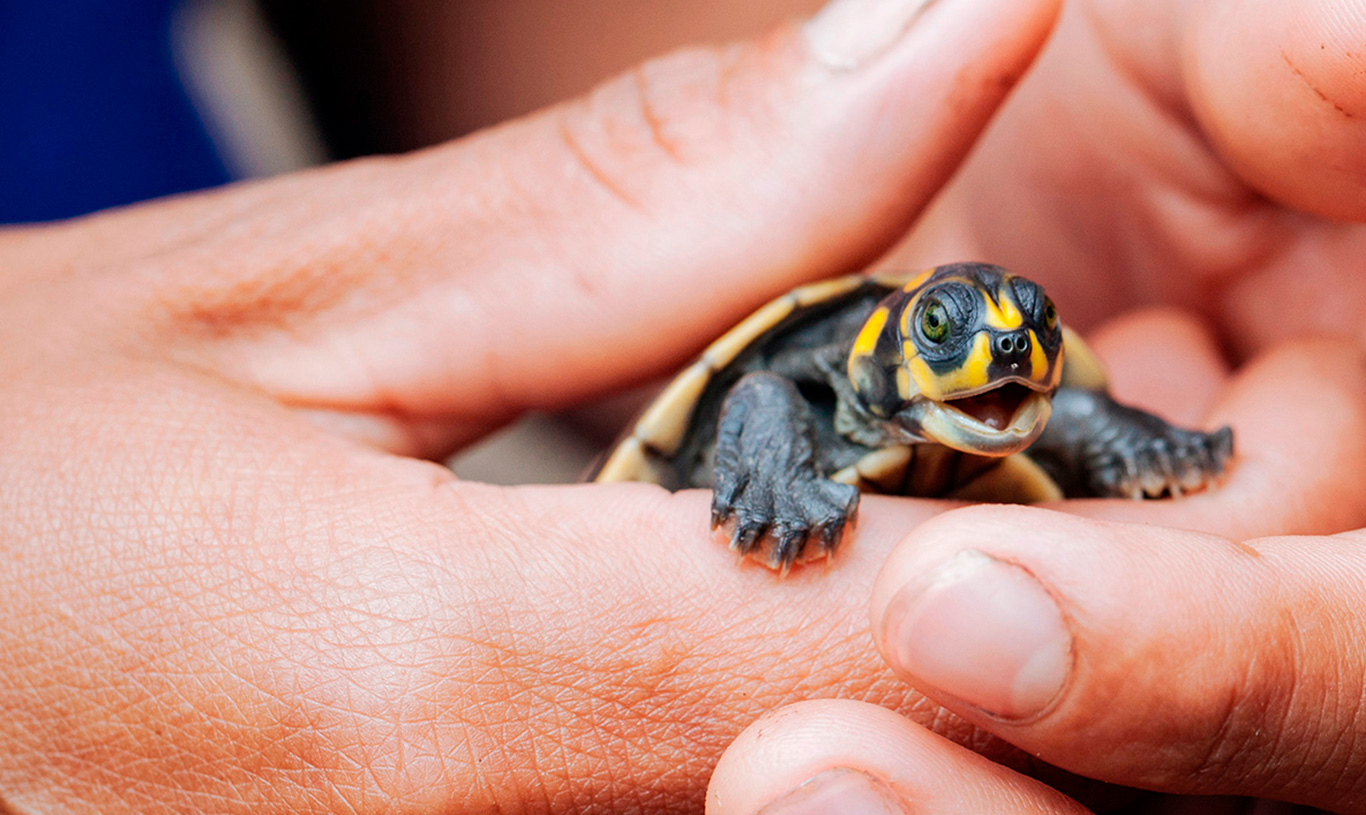
CONSERVATION
The Ecuadorian Amazon rainforest is a unique living treasure. The ecosystems in this paradise harmonically interact with each other to maintain the natural balance of the environment.
Anakonda Amazon Cruises has taken the initiative to conserve this area through the preservation of endangered species and the surrounding environment, the Ecuadorian Amazon basin.

SUSTAINABILITY
For over 40 years, Raúl García, founder and CEO of Anakonda Amazon Cruises has been working to develop a sustainable tourism model in the region that provides an alternative source of income to the communities and operates in a way that preserves the Amazon rainforest.

Fill the section below with tentative dates you would consider to travel, so we will asses you in finding the available departure dates of the itinerary selected. / Ingrese el intervalo de fechas en el que podría viajar para proporcionarle nuestras salidas disponibles según el itinerario seleccionado.
*If you are traveling with 10+ people please specify in the ¨Special requests¨ section. / *Si viajan en grupo (+10 personas), por favor especificar en el campo de ¨Requerimientos especiales¨
Are you ready to discover the essence of nature in the deep jungle?
Called the “Lungs of the Planet”, the Amazon is a captivating destination for lovers of wildlife, lush jungle and indigenous culture. Yasuní National Park, the largest protected area in continental Ecuador, is located between the provinces of Orellana and Pastaza alone and is home to more than 1,400 species of animals. Connect with the ancestral peoples: Kichwa, Shuar and Huaorani, learn about their traditions and ancestral knowledge. Embark on a canoe or walk with guides and let nature surprise you with trees, plants and animals you have never seen before.

Tena, the magical gateway to the Amazon
Tena opens the doors to the Amazon with a range of natural and adventure tourist attractions. From here, explore the lush jungle and navigate the currents of the Napo and Jatunyaku Rivers. Discover the knowledge of ancestral cultures in the community tourism centers and descend through the enigmatic Jumandy Caves.
Yasuní, life in its natural state
Immerse yourself in the magic of Yasuní National Park, one of the most biodiverse and pristine refuges on Earth. Here you will find impressive species of plants and animals such as parrots, toucans, howler monkeys and jaguars. Enter the sacred territory of the Waoranis, centuries-old inhabitants of this jungle. This Biosphere Reserve is a treasure for your senses and protector of the ecological balance.
Embark on a unique adventure in Cuyabeno
Discover the magical Cuyabeno Reserve in the Ecuadorian Amazon. Explore tropical forests, lagoons and biodiversity. Admire dolphins, manatees, caimans and otters. Immerse yourself in indigenous cultures. Cuyabeno combines nature and cultural diversity.
Papallacta, a source of life for your senses
Papallacta, a thermal oasis in Ecuador. Immerse yourself in its therapeutic waters from the nearby volcanoes and relax amidst the natural beauty of the Andes, where you will also find the perfect place to encounter impressive bird species. Renew body and mind in this wellness destination.
Official Site of International Promotion of the Ministry of Tourism of Ecuador.
More from Ecuador
Links of interest.
Presidency of Ecuador
Ministry of Tourism
Film Residency
Receive news
We share useful information for your next trip to the country of the four worlds.

Social networks
www.turismo.gob.ec
2004-2023 Ecuador Travel. All rights reserved.
¡Suscríbete ahora!
Descubre las maravillas del Ecuador, para que cada rincón y experiencia se conviertan en recuerdos inolvidables en tu viaje.

Book With Leading Tours While Protecting Habitat
- Amazon Rainforest
- Galapagos Islands
- Puerto Maldonado
- South Africa
- Tours & Lodges
- Cruises in the Tropics

Hi, I'm Ash, your tour advisor. I hope you find this post helpful. If you want my help deciding on an experience, send me an message .
The Top 5 Amazon Tours in Ecuador

Imagine an unforgettable journey into the heart of the world’s most bio-diverse regions.
This is your adventure on Amazon tours in Ecuador, where every corner holds a new discovery for you and your companions. Ecuador’s record-breaking Amazon Rainforest offers you and your family incredible memories.
You can also choose your experience: navigate the winding Amazon River on a high-rated Amazon cruise or base yourself at a comfortable and award-winning rainforest lodge. Both cruises and lodges have their advantages, which we will highlight below.
Jump to introductions to Ecuador Amazon tours
Accompanied by expert guides, you’ll head out each day to explore this remarkable region. See curious monkeys, brightly colored parrots flying over the canopy and a trip-full of other extraordinary sights and sounds.
Here is our summary of top Ecuador Amazon tours. Send your request direct to the lodges and cruises using the tour bubbles below. Use the tour bubbles to check availability and receive your itinerary and tour information.
Amazon Rainforest Tours in Ecuador – Summary
Below this summary, you will find a detailed guide to Ecuador’s Amazon and the individual introductions to each of these incredible experiences.

The Manatee Amazon Cruise
The Manatee Amazon River Cruise is a fantastic cruise for adventures into the wonderful Yasuni National Park, one of the ...
Includes: all meals, accommodation, guided tours, transfers from and to Coca airport, private assistance at Quito airport. | 4, 5, 8 days

The Sacha Lodge
Located in a 5000 acre private ecological reserve, Sacha Lodge provides a safe and comfortable base for you and your ...
Includes: all meals, accommodation, selection of guided tours, transfers from and to Coca airport. | 4, 5 days+


La Selva Lodge
I wanted to let you know that we had an amazing experience at Le Selva! The service, accommodations, guides, tours, ...
Includes: all meals, accommodation, guided tours, transfers from and to Coca airport. | 4, 5 days+

The Anakonda Amazon Cruise
The Anakonda Amazon Cruise provides an immersive and unique experience of the Amazon Rainforest. Enjoy large and comfortable beds, a ...

The Darwin & Orellana Discovery Tour
Enjoy a seamless journey to combine two of Ecuador’s most iconic and wildlife-rich regions. And over 11 days, you will ...
Includes: all meals at Sacha Lodge & Scalesia Lodge, half-board at Finch Bay Hotel, accommodation, all guided excursions, transfers from & to Galapagos & Coca airports, Galapagos & Coca air tickets
Your Introduction to Ecuador’s Rainforest
Ecuador’s rainforest is in the far western part of Amazonia. It’s where the first trickles of the Amazon River begin and where the forest presses up against the Andes. This location is linked to its incredible diversity, as the forest teems with tropica life.
When you exit the plane, you will be greeted by sun, tropical temperature and high humidity. The amount of sun provides energy for this vast expanse of Amazonia. To give a clue to this, even the country’s name of Ecuador means equator in Spanish.
The jewel in the crown of Ecuador’s Amazon is called the Yasuni National Park. Yasuni is the most well known protected area of Ecuadorian Amazon and contains a record-breaking number of species.
Your gateway to Ecuador’s Amazon Rainforest is called Puerto Francisco de Orellana. It’s also known as El Coca. From here, you can enjoy some of the top-rated jungle lodges and river cruises.
On these Amazon tours, you will enjoy guided expeditions in wildlife-rich rainforest to see many animals and plants.
The two main protected areas of Ecuador’s Amazon are:
- The Yasuni National Park
- The Cuyabeno Wildlife Reserve
These lay on either side of the Napo River. These areas are connected. And this means surrounding rainforest is home to a similar level of species. This river later merges with others to form the mighty Amazon and provides your way of entering the forest.
The more flooded areas are where you can find the more budget conscious experiences. The premium experiences in Ecuador’s Amazon often focus on the rainforest surrounding Yasuni National Park.
We will mention some of these below.

One of the favorite sights from these experiences are claylicks. Claylicks are areas to see an abundance of colorful Amazonian parrots gathered in one area and are very rare in the northern Amazon. However, you will visit the Yasuni clay lick on the guided tours below.
You will also enjoy guided rainforest walks and canoe experiences to spot different animals. See colorful birds, many different monkeys and fascinating reptiles.

Amazon Rainforest Tours in Ecuador
To make the most of Ecuador’s Amazon, choose a recommended expedition lodge or cruise.
We have picked Ecuador Amazon tours that provide a fantastic rainforest experience. These offer wildlife-rich rainforest, comfortable accommodation, delicious meals and professionally guided tours. You will explore the Amazon Rainforest led by knowledgeable, well trained and friendly guides.
The tours can also help with your transfers from Quito to El Coca.
Amazon Cruise or Rainforest Lodge?
One of the first considerations is to think if you would prefer an Amazon cruise or a rainforest lodge. This depends on your personality and interests.
Cruises visit different rainforest sections. This means you explore a larger area of Amazon.
They can also provide more comfort as they offer air-conditioning giving you a more hotel-like base to return to after guided jungle tours.
As an example, click the recommended Manatee Amazon Cruise video below.
Aboard the cruise, you will explore the iconic Yasuni National Park. The cruise offers canoe exploration and professionally guided forest walks through the national park.

Rainforest lodges, however, can provide more connection to the Amazon. You can often see and hear birds and troops of monkeys crossing the rainforest above your cabin.
This is especially true if the lodge has been there for a while and the animals have habituated to visitors. A good example of this is the fantastic Sacha Lodge.
At rainforest lodges, the paths connecting different lodge areas are on raised walkways. This means you can also see animals simply when walking between areas. See monkeys, lizards and other wildlife from the comfort of the lodge itself.
Some lodges also have incredible canopy walkways like the Sacha Lodge below, which offers one of the more remarkable walkways in the rainforest.
Now let’s have a deeper look at some of the top Amazon tours in Ecuador.
The Manatee Amazon Cruise – 4, 5 or 8-day Amazon Cruises

Aboard the Manatee Cruise , you will travel to different Amazon areas. And you will focus on exploring the magnificent Yasuni National Park.
The Manatee Amazon Explorer offers you a luxury cruise of Ecuador’s Amazon.
Enjoy the Yasuni clay lick, canopy tower, glamping and fantastic guided rainforest walks.
For an introduction, click the video below.
After your excursions, return to the comfort of the vessel. You have a choice of different spacious suite options. Each suite offers large windows, so you can stay connected to the rainforest. You can even see different birds while relaxing in your room. All suites then provide modern en-suite bathrooms.
You will be treated delicious cuisine in the dining room and can relax in the comfortable social areas. There is also a bar and observation deck to enjoy.
To check if your travel dates are available, you can send the Manatee Cruise a request using the button below.
The Sacha Lodge – 4 or 5-day+ Amazon Tour

The Sacha Lodge is surrounded by a 5,000 acre private reserve in connected rainforest with Yasuni National Park.
After you arrive in Coca, you will be escorted up the Napo River. You will then board an engineless boat to be paddled across the Pilchicocha Lake to the Sacha Lodge. The lodge is found across the lake, nestled on the bank.
Even on the journey to the lodge, you will enjoy fantastic rainforest sights. See many different birds and have your first introduction to Ecuador’s Amazon.
You will explore the surrounding rainforest on professionally guided tours. Enjoy forest walks and canoe experiences to find many different monkeys, colorful birds and reptiles.

A main feature of the Sacha Lodge is the incredible canopy walkway.
The walkway is supported by three large canopy towers. These towers are then connected by a 940-foot (275-meter) long canopy bridge. And it’s suspended 94 feet (30 meters) above ground level. With your guide’s help, the walkway provides a fantastic place for you to spot birdlife and different animals.
The Sacha Lodge itself then offers comfortable cabins and en-suite bathrooms. Your bathroom include a hot shower and flushing toilet. All of the cabins are then spaced between the trees in the rainforest. For your meals, you will enjoy delicious cuisine in the dining room or lakeside eating area.
See the video below for a short introduction to the Sacha Lodge.

There is then a lodge bar to enjoy a drink in the evenings. And on at least one of your evenings, you will enjoy a BBQ by the lake. With its canopy walkway, expert guides and wildlife-rich rainforest, the Sacha Lodge is one of our favorites.
To check availability, you can message the lodge using the tour bubble below.
La Selva Lodge – 4 or 5-day+ Amazon Tour

For a little luxury in Ecuador’s Amazon, we recommend La Selva Lodge.
Not only a luxury experience, La Selva Lodge is also Rainforest Alliance certified. This should give you peace of mind that you’re with a responsible operator.
Enjoy guided tours in the surrounding rainforest. Head out scouting for different monkeys. See howler monkeys, squirrel monkeys, capuchins and tamarins. You will also find many parrots, toucans, orchids and more with your professional Amazon Rainforest guide.
La Selva Lodge also offers a fantastic canopy tower to look over the canopy. This is a great place to see many different birds. You will also enjoy seeing the different shades of green over the tops of the trees.
The excellent La Selva Lodge then goes a little further in terms of a luxury experience. The lodge offers an on-site spa for a massage, hot water pools in the family suites and a dedicated honeymoon program.
The Anakonda Amazon Cruise – 4, 5 or 8-day Amazon Cruise

The Anakonda is the larger sister vessel of the Manatee Cruise above.
The cruise offers the same high standard of service and guided tours. And the Anakonda Amazon Cruise offers a fantastic experience of Ecuador’s Amazon.
Your air-conditioned suite offers the perfect place to relax after your jungle expeditions. Explore the Amazon with your professional and friendly guide aboard skiff expeditions and on forest walks.
See an amazing diversity of Amazon Rainforest wildlife. Spot the curious squirrel monkeys, loud and confident howler monkeys and many different birds.
Visit the Yasuni clay lick to see colorful parrots feed from the clay. Observe the Amazon from a tall canopy tower. And enjoy cultural activities to learn about life in the jungle.
Your suite offers floor-to-ceiling windows so you can stay connected to Amazon. You can even spot parrots flying over the canopy and other wildlife from the comfort of your bed.
You will then be treated to delicious cuisine in the dining room, a drink at the bar, or relaxing with a book in the lounge. The sundeck is also a great place to enjoy rainforest scenery and admiring the constellations on crystal clear evenings.
To check availability for your dates, you can send a message to the Anakonda Cruise using the button below.
Combine with Galapagos
Many guests like to experience both the Galapagos Islands and Amazon Rainforest to make the most of Ecuador’s most iconic natural regions.
To make sure you get a fantastic experience of both regions, we have collected some of the top combination tours.
These include the combination of a premium Amazon Rainforest lodge, deluxe Galapagos glamping lodge and luxury Galapagos hotel — all with guided tours — on the Darwin & Orellana Discovery tour.
You will first explore the incredible Galapagos Islands based on Isabela Island. Isabela is the largest of the Galapagos islands and offers fantastic wildlife.
You will also visit Santa Cruz for a luxurious stay at the renowned Finch Bay Hotel, which includes an island-hopping adventure to explore a nearby island. See the famous Galapagos icons while accommodated in comfort. After your Galapagos experience, you will journey to explore the incredible Amazon rainforest.
Learn more about this experience below by clicking The Darwin & Orellana Discovery Tour bubble.
If you would prefer a luxury cruise to make the most of visiting several different Galapagos Islands, we recommend combining Endemic or Elite cruises for the Galapagos and the luxury-class La Selva Lodge for Ecuador’s astounding Amazon Rainforest.
These experiences are owned and operated by the same umbrella company as La Selva Lodge and are happy to work out your incredible package tour. This can make your experience a little smoother.

This creates the best Galapagos and Amazon combination tour we have seen. You can then make the most of your time in the Galapagos aboard the best quality cruises and experience the Amazon at the most luxurious rainforest lodge in Ecuador.
Send your request to La Selva Lodge or the Elite below to learn more.

The Elite Galapagos Cruise
The Elite Cruise invites you on an extraordinary exploration of the Galapagos Islands. With modern luxury, the Elite had its ...
Includes: all meals, accommodation, all guided excursions, captain’s welcome and farewell cocktail, transfers from & to Galapagos airport. | 4, 5, 8 days
The Top Amazon Rainforest Tours in Ecuador
Here is the summary of top Ecuador Amazon tours. See above for summaries of each experience:

Want inspiration for future adventures?
Join our community for monthly selections of the world’s best tours, lodges, and cruises.
Easily unsubscribe at any time.
Thanks. You have been added to the mailing list.
The Travel Guide to the Amazon: Ecuador vs. Peru

A trip to the Amazon is a reminder we’re meant to walk through life using all five senses. In the rainforest, cast your gaze upon a canopy painted in an impossibly vibrant spectrum of green; open your ears to the raucous soundtrack of the jungle; bite into fruits so foreign in shape and texture they almost seem alien; inhale the earthy aromatics of the steamy, dense brush; and if you’re lucky, feel the hairs of your neck stand on end when locking eyes with a reclusive jaguar.

Which Amazon experience?
To help appreciate the rambling expanse of the Amazon Basin, one can compare it to the size of the contiguous United States—less Montana. Brazil claims the lion’s share, but countries like Peru and Ecuador are graced with vast tracts, too. Peruvian Amazonia occupies 60 per cent of the country’s land size, while one-third of Ecuador is carpeted by the Amazon rainforest.
In determining which Amazon experience you want, the decision should not be qualified by each country’s rainforest offering, so much as determining what else you plan to do on your South American jaunt, and where you prefer to stay: aboard a ship or at a land-based lodge.
It would be wrong to describe an excursion into the Amazon as a travel afterthought, but as a trend, most travelers consider it an add-on. Whether boat- or land-based, Amazon visits typically span three or four nights, leaving ample room in an itinerary to experience other South American crown jewels like the Galápagos Islands , Ecuadorian cloud forest , or Machu Picchu and the Sacred Valley . In some cases, proximity to these legendary places will determine whether the Peruvian or Ecuadorian Amazon is the preferred choice—though flights between Lima and Quito are short, easy connections to make and travelers should not rule out mixing-and-matching Peru’s attractions with Ecuador’s Amazon and vice versa.
Those who prefer a cruise itinerary have no such decision to make; luxurious sleep-aboard Amazon experiences are only possible in Peru, apart from one river cruise in Ecuador— the Anakonda .
However, if the decision is not so simple, this guide will parse out the differences between the Ecuadorian Amazon and Peruvian Amazon travel offerings.
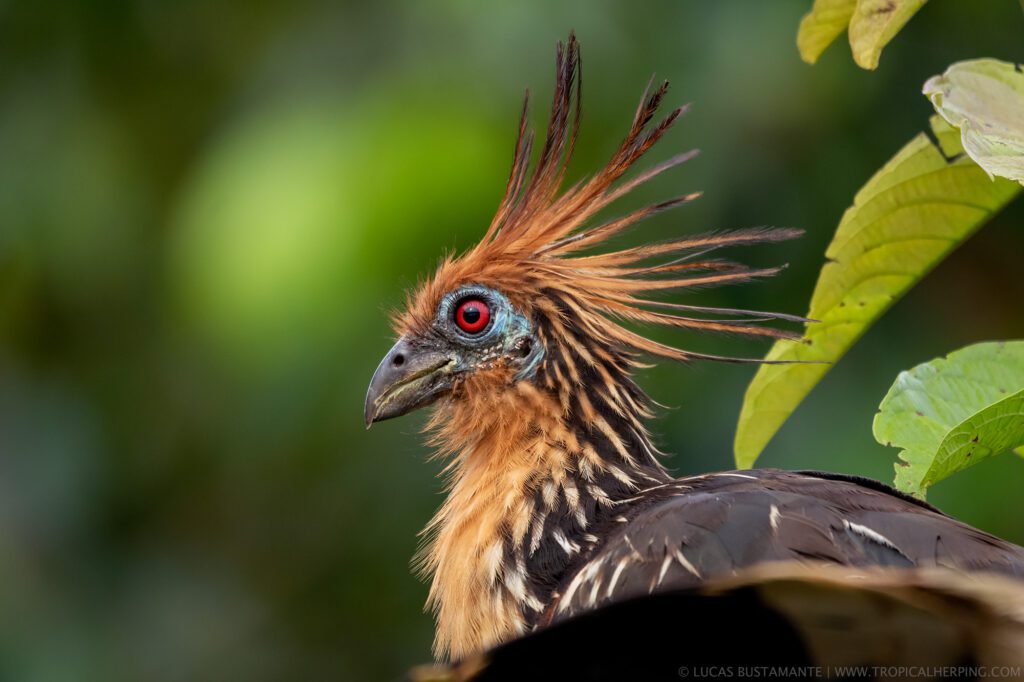
The Best Amazon Access for Travelers: Tie
While the journey from Ecuador or Peru’s gateway cities and communities to the lodges need not be an arduous one, it is one that requires multiple modes of transportation. Typically, a short flight from Lima or Quito , followed by a 30-to-45 minute ground transfer and then a boat/motorized canoe ride to the lodge. In both countries, travelers can start their day in the capital and be checked in by the afternoon.
In Ecuador, Extraordinary Journeys’ Head of South America and Safari Specialist Emily Cottingham unequivocally recommends experiencing the Amazon within Yasuní National Park and Biosphere Reserve. Fairly compact (twice the size of Delaware) and 99.73 percent undeveloped, it boasts some of the highest per-square-foot biodiversity on planet Earth. The journey to Yasuní involves a 40-minute flight from Quito to Francisco de Orellan (colloquially referred to as El Coca or simply, Coca) and a two-hour motorized canoe ride up the Napo River—a portion of the trip that’s as scenic as it is logistical.
In Peru , Tambopata National Reserve is held among the premier lodge-based Amazon experiences. Puerto Maldonado is the gateway to the Reserve and is serviced by flights from both Lima and Cuzco. From there, a land transfer brings visitors to a departure point on the Tambopata River and the lodges are reached by boat.
Travelers cruising the Peruvian Amazon fly from Lima to Iquitos and then drive 62 miles south to Nauta. From here, boats depart on itineraries along the Marañón or Ucayali Rivers which bring travelers into Pacaya–Samiria National Reserve.
The Best Amazon Lodges in Ecuador
Our top picks for Amazon lodges in Ecuador are all located within a few miles of one another and set back from the Napo River on their respective lakes, deep in Yasuní National Park and Biosphere Reserve. Five-star properties aren’t available in the Ecuador Amazon rainforest but that’s not to say these lodges aren’t comfortable, updated, and architecturally stunning. Activities and programming focus on land-based excursions (walkabouts during the day and after dark) or suspended in the rainforest canopy. Travelers tend to book packages structured around a three-night minimum stay though the option to stay longer certainly exists.

Napo Wildlife Center Ecolodge , the only lodge located inside Yasuní National Park, is 100 percent community-based, pursuing a sustainable eco-tourism model which employs Indigenous Kichwa Añangu people and re-invests into community projects. Guests can anticipate cultural encounters where they’ll learn about ancestral customs and traditional practices, enjoy guided daily forest walks (including ascending a 118-foot observation tower) and canoe excursions along an ambling creek, or take part in birding, wildlife, and photography tours. The lodge features 20 guest cabins for a serene, reclusive getaway.
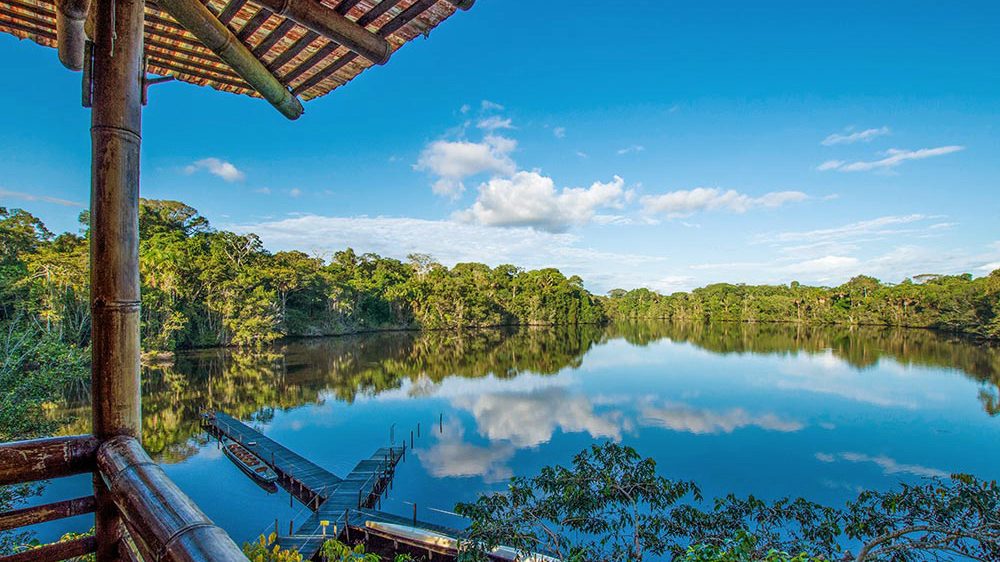
La Selva Amazon Ecolodge & Spa is perched on the shore of Laguna Garzacocha and offers 19 self-contained suites—three of which are water-facing and feature tantalizing rainforest showers. Yoga sessions and an ambient jungle spa boasting a comprehensive menu of à la carte services emphasize La Selva’s wellness focus. Excursions into the Ecuador Amazon Rainforest are accompanied by two guides: an expert naturalist and an Indigenous guide to help guests spot wildlife and interpret the natural environment.
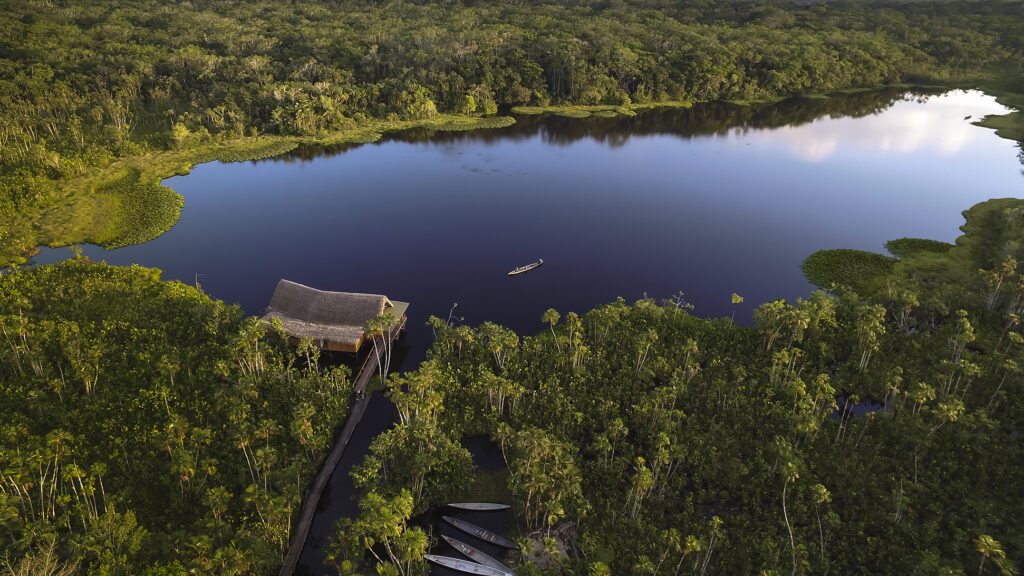
Refined-meets-rustic at Sacha Lodge , Emily’s top pick for an elevated lodging choice in the Ecuadorian Amazon. The property offers 26 rooms, three family cabins, and a mesh-netted plunge pool so guests can swim the inky black waters of Pilchicocha Lake. At Balsa, the lake-adjacent, al fresco dining lounge, it’s hard to resist taking in the sunset with a sundowner in hand. Also impossible to ignore: the allure of walking along Sacha Lodge’s 940-foot Canopy Walk, a bridge suspended 94 feet above the treeline.
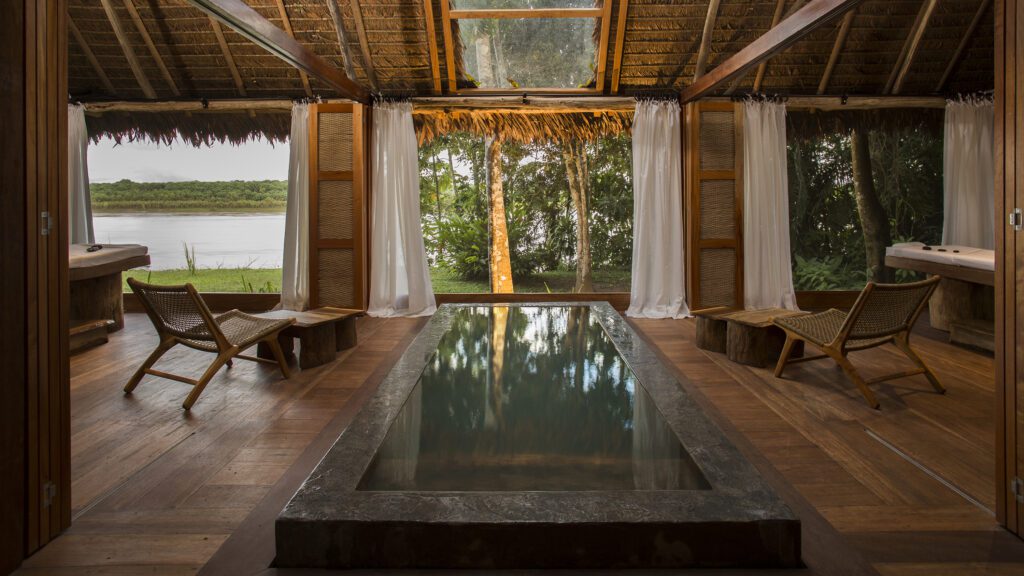
The Best Amazon Land-based Lodges in the Peruvian Amazon
In Peru , travelers can choose between land-based and boat-based Amazon experiences. Our top picks for land-based lodges are all located in or near Tambopata National Reserve.
Relative to Ecuadorian lodges, the Peruvian Amazon’s offerings are comparable, but Emily describes the excursions as “very involved and immersive.” Think: trekking for anacondas, piranha fishing, macaw-spotting at clay licks (a bird-watchers hot spot), or swimming among pink river dolphins, which are endemic to the Amazon Basin, and considered a threatened species. Where Ecuador’s Amazon experiences can be considered generalist, Peruvian Amazonas activities can be much more niche.
Tambopata Research Center is the most remote ecolodge located within the Reserve and as the name suggests, offers guests the opportunity to engage in citizen science. There are 24 rooms—some suites boast private outdoor terraces (hammock included) and outdoor bathtubs—and the property is threaded by nearly 1,000 feet of elevated walkways. A trip to Tambopata Research Center also includes an excursion to the region’s two most significant clay licks: Colorado and Chuncho.
A sister property to Tambopata Research Center, Refugio Amazonas is a 35-room jungle lodge enveloped by 495 acres of Brazilian nut forest. Comparatively speaking, it is situated upstream in what’s referred to as the buffer zone (technically, adjacent to the Reserve not within it), near a series of oxbow lakes—a unique rainforest habitat unto itself, rife with biodiversity. Refugio Amazonas shares the same citizen science programming and in simplest terms, differentiates itself from the Research Center by budget, location, and access. (Reach Refugio Amazonas in approximately two hours; allocate three-and-a-half hours for the Center.)
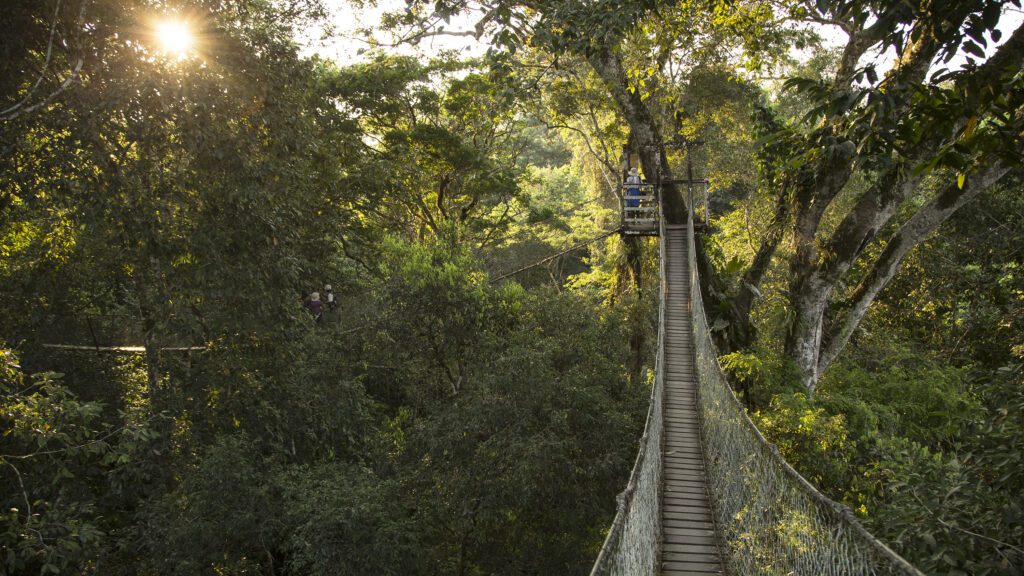
Situated in front of Madre de Dios River and in close proximity to Tambopata National Reserve, Inkaterra Reserva Amazonica features 35 stunning wooden cabanas influenced by Indigenous Ese’Eja culture. Although it doesn’t nab a five-star rating, travelers enjoy the luxurious amenities and services that the Inkaterra brand is known for. (It can brag that it once ranked among the world’s 25 best eco-lodges as determined by National Geographic Traveler though.) Don’t miss traversing the 1,320-foot-long Inkaterra Canopy Walkway, a bridge suspended 98 feet above ground, nor Ena Spa, where treatments involve locally derived botanical ingredients.

The Best Amazon Boat Cruises in Peru
Cruising is the most elegant, refined, and luxurious way to experience the Amazon. Boats offer guests a level of exclusivity, coupled with the opportunity to travel deeper into untouched pockets of wilderness.
Departures on the Relais & Châteaux-associated, triple-decker Delfin I and Delfin II are popular with luxury travelers—for so many reasons. Three- and four-night itineraries ply the waters of the Marañón and Ucayali Rivers, letting guests experience the Amazon within Pacaya-Samiria National Reserve. A sampler of excursions accessed via zippy skiff boats are included in the cruise rate and completely voluntary—so be as adventurous as you want to be. Delfin I features just four oversize king suites while Delfin II totals 14 cabins. And unlike the land-based eco-lodges, cruise-goers enjoy air-conditioned cabins. Suites feature floor-to-ceiling windows, and some even have private plunge pools.
Another premium offering operating on the same waterways is Aqua Expeditions. Specifically, the recently debuted and newly constructed Aqua Nera . She features 20 handsomely designed and decorated suites spanning two decks and a host of amenities including air conditioning throughout, a curated artisanal boutique, a cinema room, and fashionable lounge spaces. In the dining room, Chef Pedro Miguel Schiaffino serves contemporary rainforest-to-table cuisine.
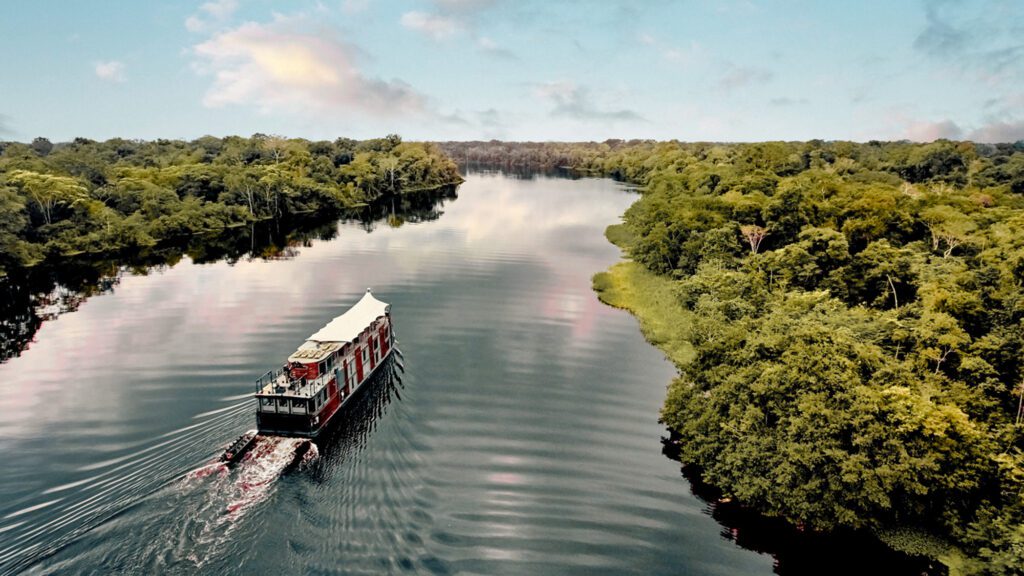
The Best Luxury Tour of the Amazon: Peru by Boat
There are no five-star land-based lodges in Peru or Ecuador’s Amazon. Travelers craving the elevated dining, lodgings, and guest service associated with Relais & Châteaux are best advised to book passage on the Delfin II. If cruising is not of interest, our picks are Inkaterra Reserva Amazonica in Peru and Sacha Lodge in Ecuador.
The Best Amazon Tours for the Budget: Ecuador
For the best value, choose a lodge-based property in the Ecuadorian Amazon where a three-night all-inclusive package can start at USD $1,420 per person. Comparatively, room rates in our preferred land-based Amazon lodges start at USD $621 per night, plus à la carte activities and dining.
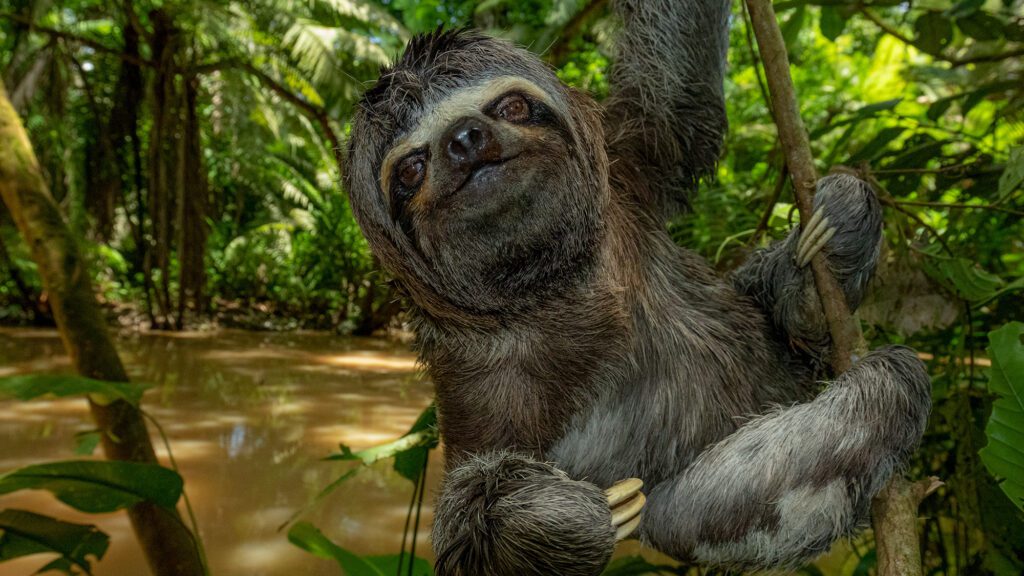
The Best Tours for Families: Ecuador
When it comes to traveling with kids, time zones and flights can ease—or strain —a trip, which is why a visit to South America is so family-friendly.
Flying from North America , an easy north-south and oftentimes direct flight into Lima or Quito means the friction of jumping time zones, navigating jet lag, and getting back to the bedtime schedule is minimized. Happier kids, happier parents.
What’s more, compared to multi-week trips to Africa and Asia, a trip to Peru or Ecuador can be more gracefully shoehorned into the school calendar. Eight to 10 days is ample time to enjoy multiple highlights in each destination without feeling rushed or overcommitted.
In terms of the better choice of Peruvian or Ecuadorian Amazon experience, both are wonderful but Emily feels that Ecuadorian lodges have a slight edge. It’s not to say that Peruvian Amazon lodges aren’t family-friendly, but she favors the programming and activities of Napo Wildlife Center Ecolodge. Pairing a visit with the wonder and wildlife of the Galápagos Islands creates a standout travel experience the kids won’t soon forget. Ecuador is also the more budget-conscious choice which may be a factor when traveling with many littles in tow.
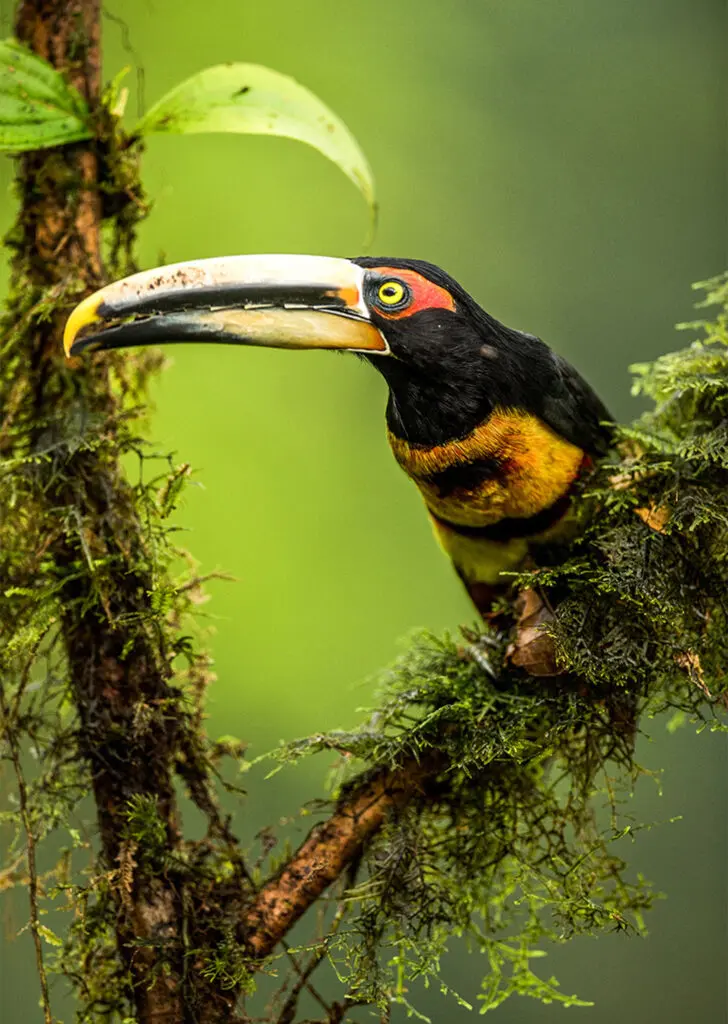
The Best Amazon Tour Destinations for Seeing Exotic Animals: Tie
Unlike the grassy plains of Africa , wildlife sightings in the Amazon are not assured. The wildlife that stalks the floor of the rainforest or trapezes through the canopy are elusive, choosing when—and if—they want to be seen.
In terms of biodiversity, both Ecuador and Peru punch above their weight, and unless travelers are hoping to train their gaze on a very specific species—like pink river dolphins—the difference in the wildlife viewing opportunities between these neighboring nations is not acute.
Generally, you might keep your eyes out for macaws, toucans, harpy eagles, paradise tanagers, royal flycatchers, capybaras, sloths, Amazon tapirs, armadillo, pumas, jaguar, spider monkeys and squirrel monkeys, otters, green anaconda, caiman, poison dart frogs…and quite literally, thousands of other species of reptiles, birds, insects (including multi-colored butterflies), and mammals.
As a footnote, it is worth reiterating that Yasuní National Park and Biosphere Reserve boasts some of the highest per-square-foot biodiversity in the world, setting the stage to encounter many species of birds, reptiles, and mammals in a relatively compact area
Ready to pack your bags?
Reach out to us today to plan your extraordinary journey to the Amazon.

Highlights of Peru: Machu Picchu & the Amazon
Cruise the Amazon and explore the wonders of Machu Picchu and Cusco
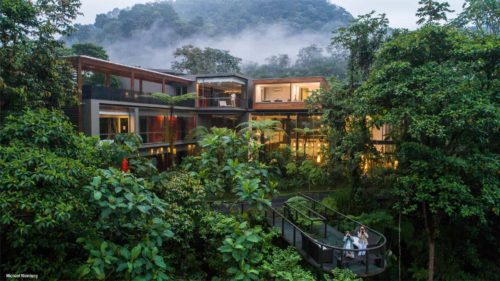
Ecuador Wilderness and Wildlife
Historic Quito, luxury Galapagos cruise, Amazon Jungle, and enchanting Cloud Forest

Amazon Tours
We at Rebecca Adventure Travel have selected several great Amazon tours to make your journey to this diverse country unforgettable. Spot a wide variety of animals and make incredible hikes in several parts of the Amazon rainforest. You will be able to decide which program fits your wishes the best. There are different Amazon regions you can visit in Ecuador such as the Cuyabeno Reserve, the Yasuni National Park, and the beginning of the Amazon close to Tena.
5 Unique Adventures: Discover Local Secrets with Rebecca

- Kayak With the Waorani in El Yasuní : Paddle down the Shiripuno River with native fishermen from one of the remote aboriginal peoples of the Ecuadorian Amazon.
- Jungle to Table Experience : Join the Waorani women as they harvest their yucca crops.
- Charapa Turtle Conservation Program : Visit a community on the Napo River breeding turtles to name a hatchling and release it into the river.
- Archidona Food Court : Visit a food market in Tena to savor traditional Amazonian dishes.
- Exploring the Caves at Templo de la Ceremonia : Tour a Kichwa ritualistic site with a native guide and learn about their ancestral practices.
Rebecca’s Promise To You Travel with Purpose
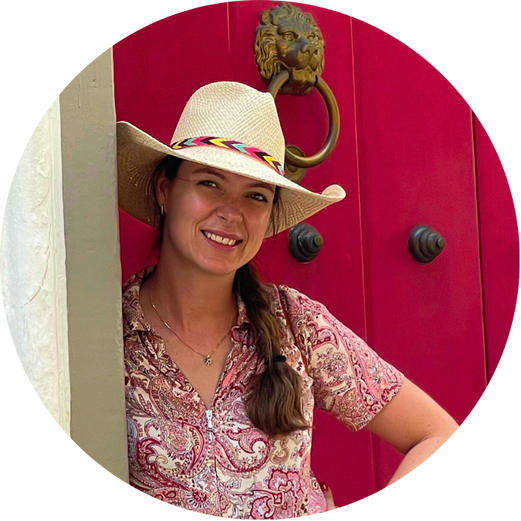
My journey began in 2014 after an eye-opening trip to Ecuador, where the breathtaking landscapes and vibrant cultures touched my heart. This experience inspired me to create a travel company dedicated to making a real difference . We’re committed to leaving a positive impact on destinations and their people through:
- Authentic Local Experiences
- Conscious Travel
- Supporting Local Economy
- Travel Safe and Secure

Rebecca’s Pick
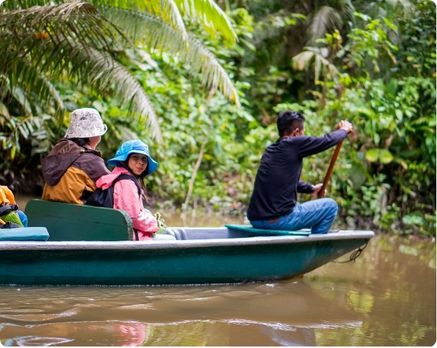
5-Day Deep Amazon Luxury Tour
Experience the ultimate Deep Amazon Luxury as you embark on an extraordinary adventure that seamlessly combines thrill and tranquility . Explore the wonders of Yasuní National Park , where the Observation Tower unveils breathtaking panoramas and the Tulcaneta Trail immerses you in the mesmerizing rainforest beauty .
Cuyabeno Tours
Cuyabeno is located far into the Amazon , only reachable by boat. Because of that, it is one of the most pristine places on the planet. You can reach it from Lago Agrio, which is the pick-up point for the Cuyabeno Amazon Tours.
The Cuyabeno Wildlife Reserve has 14 lagoons and trees that can reach 164 inches. With this in mind, you’ll see the forest going until the land disappears and becomes small canals. You’ll find many different species and ecosystems. This surreal scenery is called the flooded Amazon forest. Here , you can see an extensive variety of animals from pink dolphins, manatees, monkeys, and so on.
About the local communities, you will get to know about the Siona, Secoya, Cofan, and Kichwa . All of them will tell you more about their ways of living , handicrafts, medicinal plants and so much more.
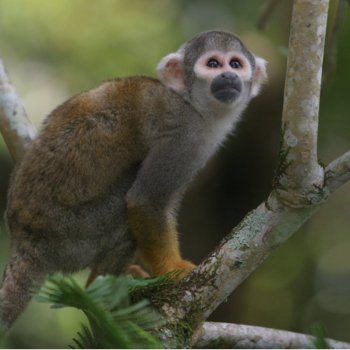
9-Day Colonial Quito & Amazon Cuyabeno
The highlights of Ecuador trips let you visit two or more regions and take you to their most beautiful places .
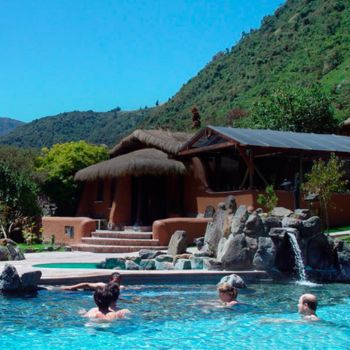
6-Day Amazon Cuyabeno & Papallacta Adventure
Designed for adventurous travelers who love to experience nature without being disturbed by cell phones or wifi.
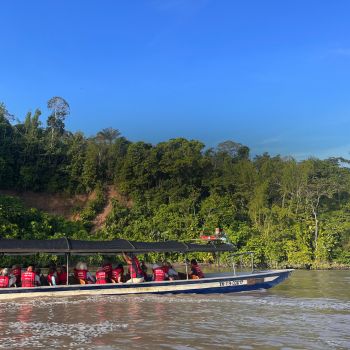
5-Day Amazon Cuyabeno & Papallacta Adventure
Enjoy a canoe trip down the Cuyabeno River and take your first look at the jungle.
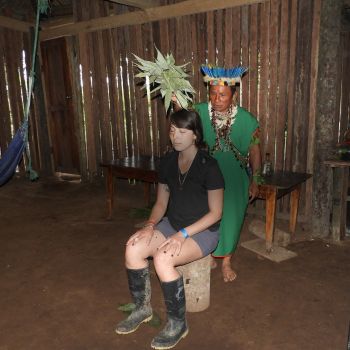
4-Day Amazon Cuyabeno Adventure
Discover the Seoqueya Community and learn about this ancient tribe . Activities during these days vary between wildlife spotting by canoe, hiking, and swimming.
Yasuni Tours
This is one of the main destinations on Amazon Tours . The Yasuni Biosphere Reserve is the largest protected area in the Ecuadorian continental land. You can get here by plane or car. Then depending on your destination, you’ll have to get a boat.
One of Rebecca Adventure Travel’s interns, Indi, went to the Yasuni National Park. In order to experience for herself the Amazon rainforest, “the head of the community was a woman, and they call her ‘ Abuela ’ which means grandmother in Spanish. She sang a song to welcome us, and we could try the traditional drink called ‘ Chicha ’. She was a very nice and strong lady, and it was nice meeting her and hearing her stories about life in the Amazon. ”
There are only a few lodges and more campsites, one’s more glamping style and others more rudimentary . Be aware that the campsites have no electricity so you will need power banks for your electronic devices. Since you are more deep into the rainfores t, your trip will be a more Amazonian lifestyle. The local communities will tell you how they live. And how they have adapted their traditions to the occidental way of living.
If you are not sure which one of the Amazon Tours suits you. You can read about the 5 major differences between Cuyabeno and Yasuni Reserve.
There are two Amazon Tours in the Yasuni, for explorers and adventure lovers. For the first one, you’ll stay at a lodge , and there are incredible activities planned like hiking, canopying, caiman spotting by night, creek paddling, and more.
And for real adventurers , the kayak tour is recommended. You will kayak from campsite to campsite . Which is hosted by the Kichwa communities of this very remote area.
Enjoy the Ecuadorian Amazon region, special memories are guaranteed!

8-Day Micro Wedding across Ecuador
Celebrate your wedding with your closest friends and family in this Boutique-style Micro Wedding Across Ecuador.
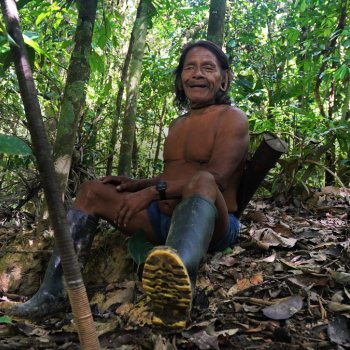
5-Day Waorani Yasuni Kayak Exploration
This tour takes you to the home of the Waorani indigenous people fierce protectors of the past, nature, and of their cultural identity .
5-Day Deep Amazon Luxury
Explore the wonders of Yasuní National Park , where the Observation Tower unveils panoramas and the Tulcaneta Trail immerses you in the rainforest beauty .
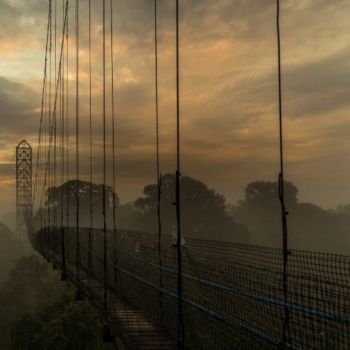
4-Day Amazon Yasuni Adventure
Enjoy the Sacha Lodge with its 5,000-acre (2,000-hectare) ecological reserve in the Yasuni National Park in the Ecuadorian Amazon .
Another Amazon Tours destination is Tena, located in Napo province . A small town near Cuyabeno but not as deep into the jungle so here, you are more in touch with the world in general. Nevertheless, you can still spot animals and get to know local communities. Transportation to Napo is easier since you can get here by car or by bus.
The activities in Napo are more adventurous : like tubbing and rafting. Also, there are amazing routes to hike to the incredible waterfalls. You’ll have the chance to see the clay lick bank called Saladero . Hundreds of parrots and parakeets will come to lick the soil that is rich in minerals. All of them help the birds to improve their digestion.
If you want to support a local refuge AmaZoonico Rescue is an animal rescue center. It has sheltered moreover 3,500 animals since its beginning and 1,500 of them have been brought back to nature. You will see rescued monkeys, macaws, ocelots, and more.
Here the Kichwa community will welcome all the visitors to let them know about ancestral traditions , medicinal plants, their relationship with nature , and how they live on the banks of the river.

Amazon Napo Adventure
The Upper Amazon Basin , renowned for its remarkable biodiversity, beckons with its enchanting small Kichwa communities and lush vegetation.
Mashpi Lodge
Mashpi Lodge, located in Ecuador’s Choco cloud forest region , is a world-renowned eco-lodge just a few hours away from Quito. This unique destination offers a magical experience similar to the Amazon rainforest but with its own distinct character. Surrounded by stunning altitudes ranging from 360 to 4,480 meters above sea level, Mashpi Lodge provides a cloudy, humid, and warm climate that can change within minutes, creating an ethereal atmosphere where you feel like you’re touching the clouds .
With over 1,700 bird species , 400 tree species , and a plethora of frogs, Mashpi Lodge immerses guests in the rich biodiversity of the area. The lodge’s commitment to sustainability and its harmonious integration with nature has earned it recognition as a sustainability retreat in South America.
Not only does Mashpi Lodge offer luxurious accommodations amidst the jungle, but it also conducts research projects focused on conservation and environmental impact . In fact, the discovery of a new species of glass frog with a unique cricket-like chirping sound has sparked efforts to obtain UNESCO World Heritage protection for the Choco Andino and Pastaza regions, based on their acoustic value. Mashpi Lodge truly offers a one-of-a-kind experience, where guests can appreciate the forest’s sounds and become part of nature while preserving its delicate balance.
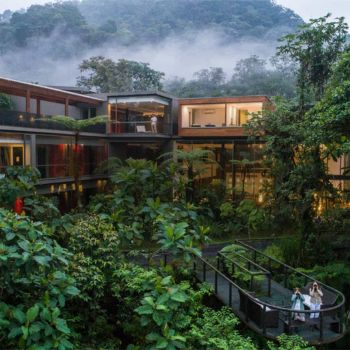
3-Day Mashpi Cloud Forest Experience
In this tour of three days, you will enjoy the cloud forest in the Mashpi Lodge which is on National Geographic’s list of Unique Lodges in the world.
Amazon Cruises
Navigate along the Napo river in an amazing Amazon Cruise and enter a world that only a few have dared to enter! Discover the mighty Amazon and its untouched rainforest and its wonderful culture. The vast diversity of this place will mesmerize you and you’ll be able to truly connect with nature and spend time with local communities and learn about their customs and traditions.
Sail on the Amazon river and immerse yourself in nature for an almost whimsical experience!
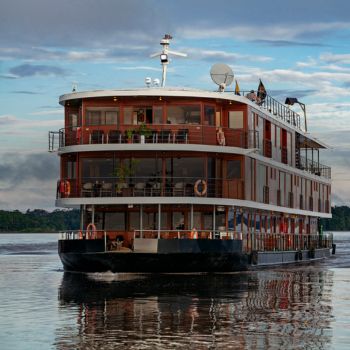
Anakonda Amazon Luxury Cruise
Navigate across the Napo River on the Anakonda Amazon Luxury Cruise to enter a world that few people have the opportunity to experience.

Manatee Amazon Cruise
Discover the mighty Amazon Rainforest uniquely and luxuriously, and visit the Yasuni National Park .
Why should Ecuador be your next destination?
Embark on an unforgettable journey through the Ecuadorian Amazon , a region celebrated for its staggering biodiversity and highlighted by National Geographic Journeys . Spanning an expansive area, this untouched rainforest offers an authentic and pristine experience. Discover over 1,600 species of animals and connect with indigenous communities , including some who live in voluntary isolation. Dive deep into the heart of nature and local traditions. Rebecca Adventure Travel offers a variety of tours designed to suit your desires, whether you’re after adrenaline-filled adventures or peaceful retreats. Choose your perfect excursion and get ready for a memorable adventure in the Ecuadorian Amazon, a truly extraordinary destination.
Why Rebecca Adventure Travel?
Ecuador has rapidly become a leading travel destination , renowned for its landscapes, rich cultural heritage , and friendly locals . The country has taken significant strides in sustainable tourism , focusing on conserving its diverse natural and cultural resources. Our tours offer travelers a chance to experience sustainability, community involvement , and cultural enrichment seamlessly blended.
Join us on an enlightening journey through Ecuador’s evolution, where you’ll meet the new communities , spaces, and initiatives that are reshaping the nation for future generations. From the heights of the Andes to the depths of the Amazon, and the unique biodiversity of the Galapagos Islands , Ecuador offers a tapestry of experiences that celebrate its transformation. We invite you to be a part of this journey and use travel as a force for good . Let’s work together to regenerate the world, one adventure at a time!
What to Expect During Your Amazonian Trip with Us?

24/7 Assitance

Authentic Experience

Impactful Travel
Plan your tour today
What Our Travelers Say About Us

Amazing Adventure! This was the trip of a lifetime! Everything was organized so that every day was better than the last. From hiking up volcanos to see a beautiful crater lake to hiking to a basecamp below a glacier the views were amazing! We also biked down a mountain and went rafting. All the equipment and support along the way was top notch and the people who supported us treated us like family!! This was a trip I will never forget and look forward to booking another trip with them!

Best Experience Ever! For 4 days we were dropped in the jungle by Rebecca. And the greatest experience ever! When they say dropped it is true, in the Amazone you are in the middle of nowhere. We saw so many different types of wildlife, with my personal favorite being a sloth:) The guides, chefs, and transportation were professional and nice. I would recommend this trip to anyone in the future.
Fantastic tour of Ecuador! We did the 19-day “relax” tour. All the guides we had were excellent, knowledgeable, and enthusiastic. The transfers all went smoothly, but be aware that some of them are long. The price for seeing much of the country. The various activities were fun and again the guides were excellent. Rebecca Travel as a direct tour organizer was able to make some minor modifications to the tour which is not possible with some of the larger tour websites. I would highly recommend it 🙂
Richard D .
Personalize Your Amazon Tour
Want more options? Create your custom-made tour that fits your preferences and interests!

Trip Duration
Lengthen your trip as you see fit!

Add more of what you’d like to experience.

Accommodations
Select your preferred accommodation
Learn More About Experiences in the Amazon
Discover useful tips and tricks from our Destination Experts to take into consideration for your Ecuadorian trip. Learn more about Ecuador Amazon and how to make the most of your trip to this unique destination with these articles, selected just for you!
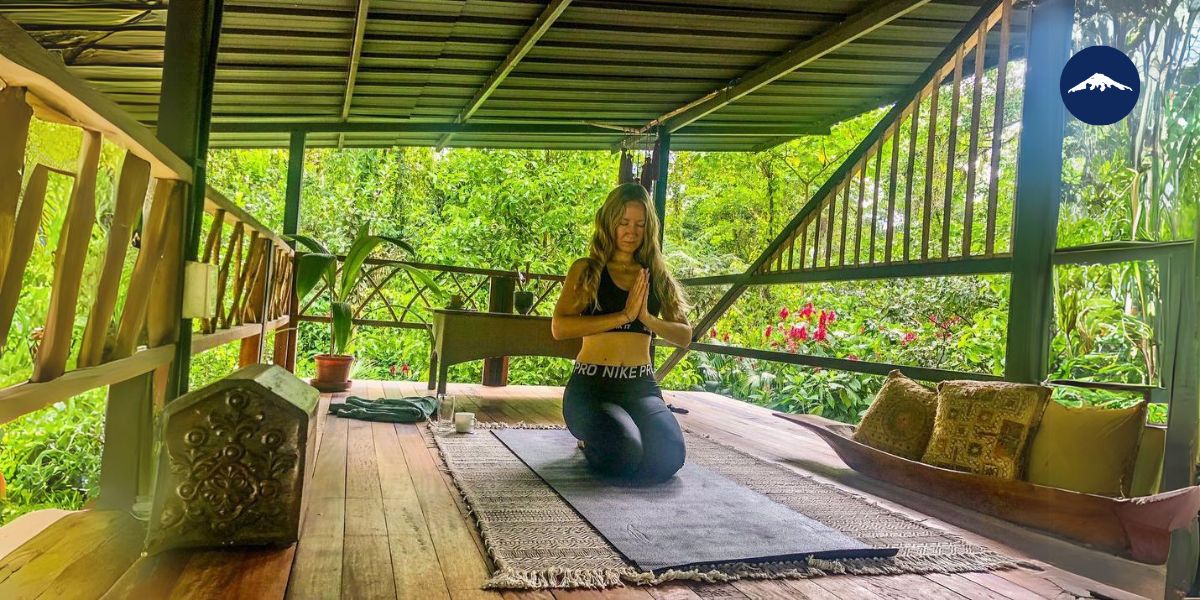
Read More >>
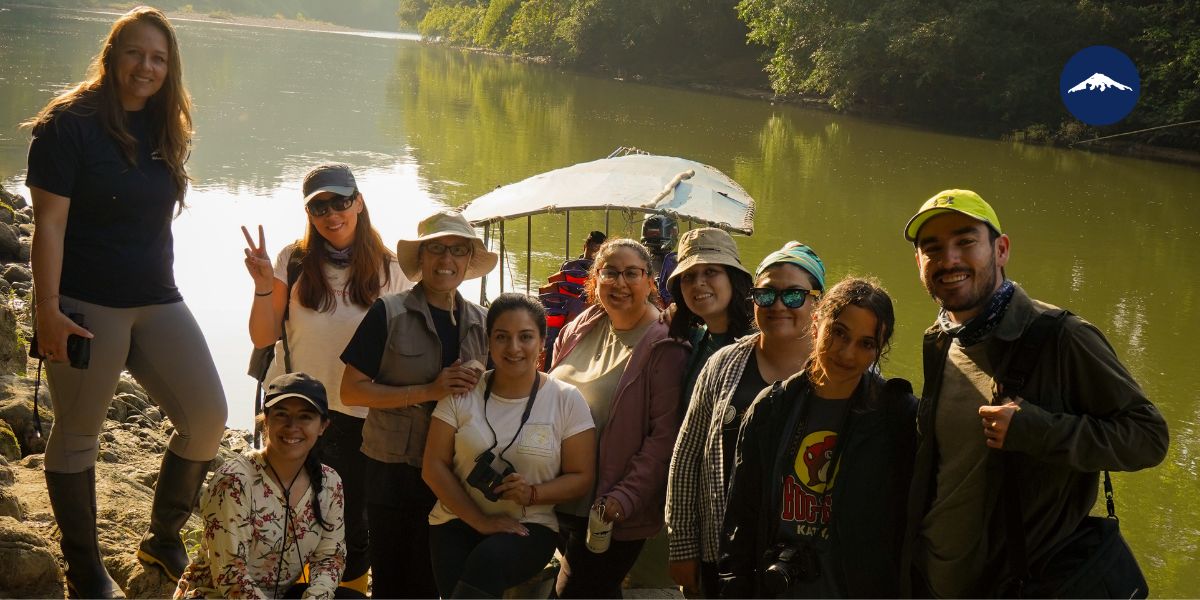
Arajuno River Team Expedition
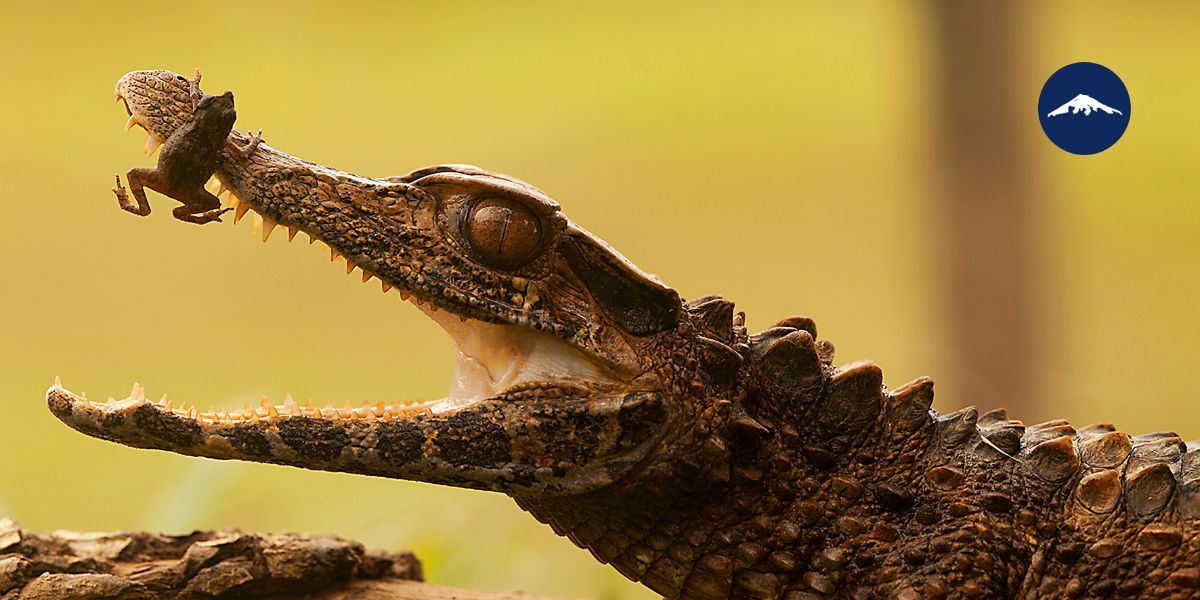
Plan your trip now!

Request More Information
Discover all about our multiple-day tours designed to connect you with unique experiences. Craft your ideal adventure now!
Start your Journey!
Submit details.
Ready to explore the world with us? Just pop in your details below to get access to this exclusive resource.
Ecuador Amazon Hiking Trips
- Start Date Select Month June 2024 July 2024 August 2024 September 2024 October 2024 November 2024 December 2024 January 2025 February 2025 March 2025 April 2025 May 2025 June 2025 July 2025 August 2025 September 2025 October 2025 November 2025 December 2025 January 2026 February 2026 March 2026 April 2026 May 2026 June 2026 OR, More specific start
- Easy Active
- River Cruises
- Solo Travel
- Wildlife & Safari Exploration
- Archaeological Site Visits
- Hacienda Visits
- Horseback Riding
- Local Market Visits
- Rainforest Exploration
- Small Ship Cruises
- Spa Relaxation
- Village Visits
- Whitewater Rafting
- Wilderness Lodge Exploration
- Wildlife Viewing
- M/V Anakonda
- Ecuador Amazon
La Selva Snapshot
- Climb up an observation tower
- Visit the Mandi Cocha lagoon
- Look for nighttime wildlife
Napo Cultural Center - Sumak Kausay
- See the traditional Kichwa Añangu
- Enjoy kayaking on Napo River
- Witness up to 11 species of parrots
Amazon Discovery
- Learn about the Amazon's diversity
- Visit an Authentic Indigenous home
- Navigate pristine water sections
Napo Cultural Center - Sumak Huasi
- Learn about Kichwa worldview
- Encounter diverse bird species
- Experience the wayusada ritual
Napo Wildlife Center Exploration
- Visit the Interpretative Centre
- Search for monkeys
- Explore Napo's surrounding creeks
Ultimate Ecuador
- Bike Pichincha Volcano
- Visit Bellavista Cloudforest
- Horseback riding in Cotopaxi
- See the Noneno Community
Casa del Suizo
- Explore the Mariposario
- Visit the Amazoonico
- Relax in the Papallacta hotsprings
Ecuador Travel Guide
- All Ecuador Trips
- Ecuador Travel Info
- Family Travel in Ecuador
- Ecuador FAQs
- History and Culture of Ecuador
- Ecuador Weather
- Ecuador Active Tours
- Ecuador Family Travel
- Ecuador Wildlife & Safari
- Machu Picchu & Galapagos Tours
- Best Time of Year to Visit Ecuador and Galapagos
- Indigenous Groups in Ecuador Win Major Victory in Oil and Mining Conflicts
Favorite Ecuador All Trips
- Ecuador Highlights
- Ecuador Adventure
- Wildlife Odyssey
- Ecuador North to South
- Haciendas of Ecuador
- Sacha Lodge
Top Ecuador Amazon Travel Destinations
- Yasuni National Park
Ecuador Amazon Trips by Departure Date
- 2024 Ecuador Amazon trips (22)
- 2025 Ecuador Amazon trips (16)
- 2026 Ecuador Amazon trips (10)
- June 2024 (22)
- July 2024 (22)
- August 2024 (22)
- September 2024 (22)
- October 2024 (22)
- November 2024 (22)
- December 2024 (22)
- November 2025 (16)
- December 2025 (16)
Top Experiences in Ecuador Amazon
- Ecuador Amazon Wildlife & Safari Exploration (16)
- Ecuador Amazon Land Tours (14)
- Ecuador Amazon River Cruises (8)
- Ecuador Amazon Cruises (8)
- Ecuador Amazon Luxury (3)
Ecuador Amazon Trips by Duration
- 5 day trips (4)
- 7 day trips (3)
- 8 day trips (5)
- 15 day trips (3)
Ecuador Amazon Trips by Activity
- Ecuador Amazon wildlife viewing (22)
- Ecuador Amazon rainforest exploration (21)
- Ecuador Amazon wilderness lodge exploration (13)
- Ecuador Amazon village visits (10)
- Ecuador Amazon kayaking (9)
- Ecuador Amazon fishing (7)
- Ecuador Amazon hiking (7)
- Ecuador Amazon local market visits (3)
- Ecuador Amazon hacienda visits (3)
- Ecuador Amazon biking (3)
- Ecuador Amazon horseback riding (3)
Why Travel With Adventure Life
Recognized by.

Your browser is ancient! Upgrade to a different browser or install Google Chrome Frame to experience this site.
- Connect With Us
- Meet The Team
- Quito, Equator, Teleferico
- Otavalo City
- Mindo Cloudforest
- Papallacta Hotsprings
- Cotopaxi Day Tour
- Quilotoa Crater
- Mashpi Lodge
- Tandayapa Lodge
- Enchanted Ecuador
- Galapagos & Rainforest
- Quilotoa Loop
- Chimborazo Summit
- Cotopaxi Summit
- Romantic Getaway
- Long Trails
- About Ecuador
- Getting Ready
- Introduction
- Sustainable Visit
- When To Travel
- Ecuador FAQ
- Ecuador Blog
- Ecuador Booking form
- Archipell 1
- Cachalote Explorer
- Galapagos Angel
- Galaxy Diver II
- Galaxy Orion
- Grand Daphne
- Grand Queen Beatriz
- Reina Silvia Voyager
- Seaman Journey
- Treasure of Galapagos
- Coral 1 & 2
- Grand Majestic
- Natural Paradise
- Ocean Spray
- Origin & Theory
- Santa Cruz 2
- Sea Star Journey
- Cormorant II
- Galapagos Horizon
- Galaxy Sirius
- Galapagos Tribute
- Hermes Galapagos
- Motor Yachts
- Motor Catamarans
- Motor Sailors
- Cruise Ships
- All Galapagos Cruises
- Getaway Tours 4D/3N
- Exploration Tours 5D-4N
- Discovery Tours 6D-5N
- Adventure Tour 8D-7N
- Galapagos Habitat
- All Galapagos Land Tours
- Galapagos Sky
- Diving Day Tours & Programs
- Silberstein Diving Programs
- Offers & Deals
- Cruise Reviews
- Galapagos Services
- Galapagos Map
- Galapagos Resources
- Galapagos Animals
- Galapagos Islands
- Galapagos Visit Points
- Galapagos History
- Galapagos FAQ
- Galapagos Blog
- Galapagos Booking Form
- Amazon Dolphin Lodge
- Guacamayo Ecolodge
- Piranha Ecolodge
- Siona Lodge
- Yarina Ecolodge
- Hakuna Matata
- Napo Cultural Center
- Sacha lodge
- Kapawi Ecolodge
- La Selva Eco Lodge
- Napo Wildlife Center
- Anakonda Amazon Cruise
- Manatee Amazon Explorer
- About Amazon
- Amazon Transport
- Natural Reservations
- Amazon Blog
- Amazon Booking form
- 4 Days - Short Inca Trail
- 6 Days - Regular Inca Trail
- 9 Days - Long Inca Trail
- 6 Days - Salkantay Trek
- 6 Days - Lares Valley Trek
- 6 Days - Choquequirao Trek
- 9 Days - Ausangate Trek
- 7 Days - Magical Cusco
- 10 Days - Cusco & Titicaca
- 14 Days - Enchanted Peru
- PERU Booking Form
- OFFERS & DEALS
- Cloud Forest
- Ecuador Programs
- Ecuador Information
The Galapagos Islands
- Cruises & Ships
- Land Based Tours
- Cruises & Land Based
- Galapagos Tools
- Galapagos Information
- The Amazon Rainforest
- Superior Lodges
- First Class Lodges
- Luxury Lodges
- Luxury Cruises
- Amazon Information
- Empire of Hidden Treasures
- Other Inca Treks
- Peru Programs
- Peru Information
- OFFERS & DEALS
Ecuador Amazon Rainforest
- You are here:
Gateway Cities to Ecuador’s Rainforest
River transportation, indigenous communities and cultural experiences, huaorani, shuar, and kichwa tribes, community-operated lodges, ecuador amazon rainforest – wildlife encounters, birds and mammals, reptiles and aquatic life, ecuador amazon rainforest – activities & adventures, jungle treks and canopy walks, white water rafting and horseback riding, ecuador amazon rainforest: lodges and accommodations, eco-lodges and community-operated lodges, luxury amazon cruises, ecuador amazon rainforest – health and safety tips, vaccinations and disease prevention, safe travel practices, planning your trip: best time to visit and packing essentials, ecuador amazon rainforest – climate and seasons, ecuador amazon rainforest packing list, amazon lodges.
GreenGo Travel View All Lodges
AMAZON RAINFOREST LODGES
Rainforest lodges provide a complete rainforest immersion. Our packages cover everything, from lodging to bilingual guides, meals, and transport, ensuring a front-row experience in this mesmerizing ecosystem. Explore our lodges in different rainforest regions, choose your spot, and leave the rest to us.
AMAZON RAINFOREST CRUISES
Amazon cruises provide a distinctive rainforest exploration by covering the vast Amazon region via the Amazon River in 4 to 8-day trips, akin to Galapagos tours. Enjoy diverse daily activities at different locations. Be aware that tour lengths and routes can be restricted in periods of low rainfall when river levels drop.
Amazon Cruises
GreenGo Travel View All Cruises
Ecuador Amazon Rainforest Highlights
The Cuyabeno Reserve
Like out of a postcard, Ecuador Amazon Rainforest displays surreal landscapes at every turn, an exceptional experience you have to be part of first hand. Unspoiled nature and the wilderness of the rainforest sets the perfect tone to disconnect yourself from your daily routine and submerge yourself into a natural paradise full of wildlife and adventure.
Experience Wildlife
You can feel wildlife in the atmosphere, a mixture of sounds fill the air, rain droplets making their way through leaves, distant sounds of birds chirping away, and the water flowing through different rivers & creeks, home to pink dolphins and other exotic creatures. Tucans, Sloths, Anacondas, Caimans & much more are all out there, spotting them can be challenging, their colors are easily camouflaged with the background at times, which can fool even the keenest of eyes.
Visit Local Communities
A few lodges in the Ecuadorian amazon are a prime example of true Eco-tourism, operated and owned or jointly owned by indigenous communities, these lodges welcome you to be part of their homes and territory during your stay. You will experience firsthand guidance from locals of the area, learn their customs, eat their meals, but most importantly support their way of living with your visit, an option definitely worth considering that will enhance your overall amazon experience.
Amazon Discovery
Whether if you are staying at a lodge of traveling through the amazonian river in a cruise, discovering the amazon is one of the most rewarding parts of your tour. Specialized naturalist guides will take you through different parts of the jungle where you will discover ancient trees with different types of foliage’s, a variety of plants with healing properties, observe trails of animals that have been in the area, swamps, rivers you can swim in, and a lot more.
Parks, Reserves & Provinces
Ecuador Rainforest Amazon Frog
Park & Reserves are certain parts of the rainforest that have shown great promise in diversity, wildlife & exhibit exceptional characteristics. This holds true to many parts of the rainforest found in the Ecuadorian Amazon. Parks & Reserves main purpose are to protect & safeguard their delimitation’s in order to maintain these regions as pristine & untouched as possible. The Province of Tena is not a park nor a reserve, but it’s a feature packed region that carries many benefits & well known for a great amazon excursion.
The Cuyabeno is an outstanding reserve located in primary rainforest comprising unique ecological characteristics found nowhere else in the world, mainly attributed to its proximity with the Andes. With a network of permanent and semi-permanent rivers, inundated forests, creeks and swamps, the reserve holds numerous ecosystems providing the perfect environment for different types of large amazon mammals such as Tapirs, Capybaras, Pumas, Giant Otters, among others. With over 500 species of birds and over 300 species of fish, anacondas, caimans and the once endangered pink dolphins – the reserve is without a doubt a true amazon experience.
Yasuni National Park
The Yasuni National Park holds world records like no other place, its relatively small size carries an unimaginable diversity of species and flora in outstanding levels – holding the title of the most bio diverse spot in the world. Established in 1979, this exceptional natural hotspot located in the province of Orellana and Pastaza was declared as the Yasuni National Park in an effort to preserve the integrity and richness of the area. The park captured the world’s attention, in 1989 it became listed in the UNSESCO as part the world’s heritage sites. To put it in perspective some impressive records are: 1 hectare of Yasuni’s park holds the same amount of trees & insects found in all of North America.
Tena (Capital of Napo)
Tena, the capital of Napo is a small little city well regarded for its rivers and secondary jungle, visitors will be able to arrange a number of daily activities directly in its main square. A few lodges found in the area are easily accessed with land transport & offer short tours with affordable rates & a great variety of activities including white water rafting & horseback riding, a combination that wouldn’t be possible in primary rainforest, without a doubt a fantastic approach to the amazon region. Tena is also well known for white water rafting, Tena & Pano rivers converge in the area, setting the perfect environment for some adrenaline packed rafting, these can easily be arranged as day tours from Quito.
Amazon Rainforest Transportation
Canoe in Ecuador Rainforest
From getting there to transport used to mobilize you in the amazon surroundings, the means of transport in the amazon can be limited to land only, to a combination of various methods. Every lodge will approach this differently based on the region you’re entering, level of deepness and a few other factors. One way or another getting there is part of the fun, you will be amazed as you transition from an Andean setting to the wilderness of the Amazon.
Commercial Airlines
Commercial flights are limited to lodges located in the surroundings of Lago Agrio, Coca or Macas, the latter been the destination less frequently used. Lago Agrio, officially known as Nueva Loja is home to the Cuyabeno reserve in primary rainforest, a commercial flight provides quick access with flight time of about 45 minutes. Coca, officially known as Puerto Fransisco de Orellana is the most popular destination for taking a commercial flight to start an amazon tour, home to Yasuni National Park, it also provides quick access from the main capital to Coca & Napo river where several lodges can be accessed. Flight time is the same 45 minutes as Lago Agrio, do be aware that your flight is only part of your travel.
Buses & Land Transport
Buses can take you to all starting points (Main Provinces & Towns) for amazon tours, the only downside been the time required to get there. For primary jungle tours in Coca & Lago Agrio your bus ride will be about 8 hours. Buses are available during day or night, taking a day bus would the best way of enjoying the view. Cost wise you will save quite a bit as bus fares will be from $8 to $10 per way – versus a round flight that can cost up to $180. In the case of transport to Tena, buses are your only option other than hiring private transportation or taking a cab, as there is no commercial airport in Tena. Land Transport is required for most if not all lodges, regardless if you took a bus or a plane, taking you further into the amazon before boarding a canoe.
Small Planes & Canoes
Some lodges are located in such remote areas that getting there by any other means would be time consuming not allowing you to get started with your activities on day one. Small aircrafts transport passengers deep into remote primary jungle, adding an exceptional wow factor as you fly over the amazon basin to reach your lodge. These tours will have a slightly higher cost in order to cover these additional expenses but are well worth it. Canoe rides is an activity you will have in your tour one way or another. For lodges built in river sides – long canoe rides (2 to 3 hours) are required to reach their facilities, and they are frequently used on a daily basis for the in and outs of your daily activities. Other lodges will offer canoe rides as part of their activities.
Frequently Asked Questions
Why should i visit the rainforest in ecuador.
Visiting the rainforest in Ecuador presents an unparalleled opportunity to immerse yourself in one of the world’s most biodiverse regions. This paradise offers a rich array of experiences, from witnessing unique wildlife and plant species to engaging with indigenous cultures. The Ecuadorian Amazon is not just a rainforest, but a world teeming with life, offering a unique chance to explore untouched lands, encounter unique wildlife, and learn about rich cultures of the indigenous tribes. Whether you’re a nature enthusiast, or looking for a unique cultural experience, the Ecuadorian Amazon has something to offer you.
What activities can I expect in the Amazon Rainforest?
When visiting the Ecuadorian Amazon Rainforest, you can look forward to a range of thrilling activities. Jungle treks and canopy walks offer close encounters with the unique flora and fauna. For adrenaline junkies, white water rafting and horseback riding through the lush forest are available. You can also immerse yourself in local cultures by visiting indigenous tribes. Stay at community-operated lodges for an authentic experience. Wildlife enthusiasts can enjoy birdwatching and spotting various species in their natural habitat.
Should I visit Cuyabeno or Yasuni?
Both Cuyabeno and Yasuni offer unique experiences. Yasuni National Park, a UNESCO Biosphere Reserve, is known for its biodiversity, with numerous species of birds and mammals. It’s also home to indigenous tribes. Cuyabeno Wildlife Reserve, on the other hand, is famous for its aquatic wildlife, including pink dolphins and caimans. It also offers a chance to interact with local communities. Your choice depends on your interests: if you’re a bird lover, go for Yasuni; if you’re into aquatic life, choose Cuyabeno.
What is the Amazon rainforest called in Ecuador?
The rainforest in Ecuador, often referred to as the ‘Oriente’, occupies a total area of 135,6000 km2. While this only represents a mere 2% of the expansive Amazon basin, it is a crucial part of the basin’s ecosystem. This particular Amazon rainforest lies within this large basin and plays an important role for both ecology and wildlife. Its rich biodiversity, unique ecosystems, and indigenous cultures make it a vital part of the global ecosystem. This vast green expanse is home to a myriad of species, many of which are yet to be discovered, and it plays a key role in the world’s climate regulation.
How big is the rainforest in Ecuador?
Ecuador is home to the immense Amazon Rainforest, which covers an area of 5.5 million km2 across the vast expanse of South America’s Amazon basin. This rainforest, is a treasure trove of biodiversity and is known for its unique wildlife and plant species. It boasts being Ecuador’s largest region and a part of the larger network known as The Amazon Jungle, making it one of six vital components in this unique ecosystem. This rainforest, often referred to as the ‘lungs of the earth’, plays a crucial role in the global climate system by absorbing large amounts of carbon dioxide and releasing oxygen.
What is the best time to visit the Ecuadorian Amazon?
Experience the Ecuadorian Amazon in its prime – head over during the dry season from June to September for optimal wildlife viewing and outdoor activities! This is when the rainforest truly comes alive, with animals emerging from their habitats and a vibrant display of flora and fauna. The weather during these months is also more conducive for exploration, with less rainfall and more comfortable temperatures. Whether you’re interested in bird watching, seeking out unique wildlife, or simply want to immerse yourself in the breathtaking beauty of the rainforest, this is the perfect time to visit.
What types of accommodations are available in the Ecuadorian Amazon?
Experience the Ecuadorian Amazon in a luxurious way with cruise options, eco-lodges, and lodgings managed by local communities for an experience that will linger long after you’ve gone! From the comfort of a luxury cruise, you can explore the depths of the rainforest while enjoying modern amenities and guided tours. If you’re looking for a more immersive experience, eco-lodges provide a sustainable and responsible way to explore the Amazon while minimizing your environmental impact. These lodges are usually tucked away deep in the jungle, providing you with a unique opportunity to be close to nature.
What wildlife can I expect to encounter in the Ecuadorian Amazon?
The Ecuadorian Amazon is home to an array of creatures, from birds and mammals to giant otters and reptiles. You may encounter a plethora of bird species, including the vibrant scarlet macaw, the elusive harpy eagle, and the noisy toucan with its iconic beak. Mammals are abundant as well, with creatures like the stealthy jaguar, the playful capybara, and the curious squirrel monkeys. The waters of the Amazon are teeming with life too, including the playful giant otters and the mysterious pink river dolphins. Now reptiles, from the slow-moving, armor-clad tortoises to the swift and deadly anacondas.
Looking for more Frequently Asked Questions?
Other regions to explore, mainland ecuador.
All there is to know about Mainland Ecuador. Magical destinations and custom tours are waiting for you!
View Ecuador
All there is to know about The Galapagos Islands. Magical Cruises and custom Land Tours are waiting for you!
View Galapagos

The Ecuadorian Amazon: Visiting with a Local
E ver since I was a young girl, I’ve dreamed of visiting the Amazon Rainforest. Whether it was the nature shows on the Discovery Channel or birthday dinners spent at the Rainforest Café, an Amazon themed-restaurant, the animals, the sounds of the rain and seeing all the colors come together to form a unique ecosystem, fascinated me. I knew that it was a place I was meant to see and I’d go as soon as I was old enough.
Fast forward two decades, and I was finally heading to the Amazon . But I wouldn’t be going on a touristy excursion or staying at an eco-resort in the jungle as I had imagined when I was a little girl. Instead, I was visiting the family of my boyfriend Max, who lived in Lago Agrio, a developing city that sits in the Amazon River Basin in the eastern region of Ecuador, known as “El Oriente.” I’d be experiencing this region more or less like a local, but I wondered– would I see the Amazon I had always envisioned?
Lago Agrio: A City of Oil Rigs
When we arrived in Lago Agrio on a December evening, the heat hit us like an open oven. Despite the heat, the voluminous trees and the sounds of the croaking creatures at night, Lago Agrio also felt like any other city at night, with the sounds of cars driving by and people talking outside on the street. Many cities sit in the basin, but the most popular ones for tourists in the Ecuadorian Amazon are Coca and Tena, and not Lago Agrio, which was once home to the oil refineries of Texaco, now owned by Chevron.
After we arrived on the first night, we drove around the city with Max’s family, admiring the foothills of the rainforest, and examining the oil rigs. Although I knew the Amazon was not all jungle and animals, seeing the oil rigs and the deforestation in person was hard.
Seeing Wildlife in a Local Park
The next day, provided a respite. Max’s cousins took us to a local park, Parque Perla , where we followed a trail around the river, and saw the creatures we had heard the night before. At the entrance, a toucan welcomed us and took a nibble of my finger. Monkeys and birds looked down at us from the tree canopies, while large frogs, spiders, and massive ants carrying leaves three times the size of their bodies, marched beside us. After a short hike, we took a canoe ride on the river, which was shimmering with the reflection of the blue sky above. I was glad to have visited spots that the tourists haven’t quite flocked to yet, but I wanted to see the rainforest that I had built up in my mind for so long.
A Trip Deep into the Jungle
My wish was granted when a few days later we piled into the car with Max’s aunt and uncle and drove deep into the jungle. At one point, Max’s uncle pulled over to the side of the road to pick a cocoa bean. Its large size was almost cartoonish. He broke it open and showed us how to scoop out the sweet, white stringy inside, cocoa fruit in its rawest form.
The paved road eventually ended, and we continued on a bumpy dirt path deeper into the rainforest, until we reached a river next to a building with a sign above the main door that said “Museo Cicame.” Inside, a tour guide led us through the museum, explaining the different artifacts and images, which included tools, sculptures, and cookware that belong to the indigenous tribes in the area.
A Cofan Village
After touring the museum, we went to the banks of the river where several small fishing boats were docked. Max’s aunt and uncle knew the place well and after a short exchange, a fisherman ferried us to the other side, where I felt like we had arrived at a different world. We were in a village belonging to the indigenous Cofan tribe .
We walked to the center of the village, where there were a makeshift basketball court, huts, and a one-room school with a globe and Spanish vocabulary sheets hung on the walls. Kids and teenagers were playing outside or sitting around with their cell phones, like teenagers everywhere.
Because my boyfriend’s uncle had been here before, he knew where to go for lunch. At one of the huts that looked like a house, we ordered Coke and beer from a friendly woman, who also served us a plate of chicken and rice with plantains. It was absolutely delicious.
The woman told us about the daily life of the tribe — where the kids go to school, what the different roles are for the men and women in the tribe, and which families live where. She also introduced us to her daughters who were wearing magnificent dresses, made of colorful textiles, sewn together in gorgeous patterns and adorned with beaded jewelry. She told us that she and many other members of the tribe have studied in the big cities of Ecuador, including Cuenca and Quito. After finishing their education, many come back to live with their families in the tribe, which, of course, isn’t much different than the lives of students all over the world.
A Visit to the Shaman
The heat was finally starting to get to me; there was no longer a part on my body that wasn’t sticky from sweat. I wanted to see more, but I was also ready to go back, even though I had yearned to come to the “real” rainforest. There was one more thing Max’s uncle had planned.
He led us to the village Shaman, who was also the chief of the tribe. I was surprised when I saw his face, because I had seen his photo in the museum we visited earlier. Clearly, he was a very famous person in this region. The Shaman did a cleansing ritual on each of us, designed to get rid of bad energy. During the ceremony he hummed steadily, shook banana leaves from the left to the right side of us, and blew cigarette smoke over the top of our heads.
Afterward, we started on the long journey back to Max’s family home. As we drove alongside the river, we passed a boy who was coming back with the day’s catch. He had a huge smile plastered across his face when he showed us a large fish he had caught. Max’s aunt paid the boy $10 for the fish, and we ate it that evening fried with breadcrumbs, a side of veggies and rice.
My trip to the Amazon may not have been what I envisioned as a child, but I got to experience so much more than I could have imagined, by doing it with locals.
Book A Stay near the Ecuadorian Amazon Rainforest
Search, compare and book hotels & rentals at the best prices that are sourced from a variety of platforms including Booking.com, Hotels.com, Expedia, Vrbo, and more. You can move the map to search for accommodations in other areas and also use the filter to find restaurants, purchase tickets for tours and attractions, and locate interesting points of interest!

- Israel-Gaza War
- War in Ukraine
- UK General Election
- US & Canada
- UK Politics
- N. Ireland Politics
- Scotland Politics
- Wales Politics
- Latin America
- Middle East
- In Pictures
- Future of Business
- Technology of Business
- Work Culture
- Science & Health
- Artificial Intelligence
- Film & TV
- Art & Design
- Entertainment News
- Destinations
- Australia and Pacific
- Caribbean & Bermuda
- Central America
- North America
- South America
- World’s Table
- Culture & Experiences
- The SpeciaList
- Natural Wonders
- Weather & Science
- Climate Solutions
- Sustainable Business
- Green Living
Meet the all-female patrol guarding Ecuador's Amazon Rainforest

The Yuturi Warmi, an Ecuadorian patrol group, has vowed to protect their community's land in the Amazon Rainforest from the pollution of extractive industries – and their efforts appear to be working.
It is the break of dawn in the Serena community, in the middle of the Ecuadorian Amazon. Along the Jatunyacu River, which later joins the Amazon River in the Napo Province, Elsa Cerda, a 43-year-old indigenous Kichwa woman, brews guayusa leaves – a native plant from the rainforest – in a pot.
It marks the start of the Guayusa Upina, a ritual performed by Amazonian indigenous peoples before beginning their daily activities. This tradition is more than a routine; it's a spiritual connection to their ancestral roots.
As the first rays of light begin to filter through the tree canopy, a diverse assembly of 35 women, ranging from 23 to 85 years old, arrives one by one at the ceremony. The eldest among them, Corina Andy, who is fondly called "abuela", "the grandmother", leads them in a collective cleansing ritual using medicinal plants.
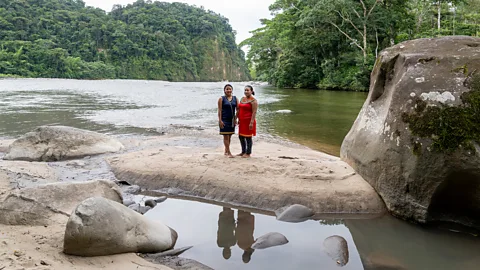
Meanwhile, the younger women chant and dance to traditional songs in their native language, Kichwa Napo .
"Strength, strength!" Cerda shouts, and as the echo lingers, the women respond with "guard, guard!".
The 'strong ants'
The group goes by the name of "Yuturi Warmi". Elsie Alvarado, one of the youngest members of the Yuturi Warmi, explains that in the Kichwa language "Yuturi" references a type of ant in the Amazon known for its strong and defensive nature, and "Warmi" means woman.
"We chose this name for the group because it symbolises our fight and strength, much like the ants that resist and protect their territory," she says.
The Yuturi Warmi steadfastly monitor the threat of mining activities on their community of 154 members by patrolling a large area of land, which the women estimate is between three sq miles (7.8 sq km) and 3.9 sq miles (10 sq km). Despite there being metal contamination reported up and downstream , the women say their patch of land – and river – has remained pristine.
"The waters of Serena remain pure, allowing us to fish native species like catachamas and bocachicas that thrive in these untainted waters," says Andy.
Nestled an hour's drive from Tena, the capital of the Napo province, the Serena community stands among the 50 indigenous communities along the Jatunyacu River. Their role as Amazonian guardians involves safeguarding the territory from pollution and preserving the land and rivers from activities that jeopardise biodiversity – such as deforestation and mining operations.
Andrea Sempértegui, a researcher and assistant professor of politics at Whitman College in Washington, highlights the "longstanding but often invisible fight of indigenous women in the extractive industry". Groups such as Yuturi Warmi are "bringing this struggle to the forefront and gaining much-needed recognition".
The women of Yuturi Warmi's position is to "stand on the frontlines, embodying the resilience, determination, and strength of indigenous women in the Amazon", says Cerda, who acts as the group's leader.
The catalyst for Yuturi Warmi's formation traces back to 2020, when 35 Serena women, including farmers, homemakers, artisans and students, united to protect their land and river.
The women began to gather weekly for community updates, sharing best monitoring practices, findings, concerns – and solutions – and they still continue their weekly meetings.
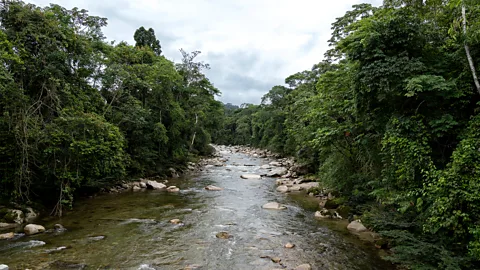
"We felt it was a collective responsibility to safeguard our crystal-clear rivers – an ancestral gift spanning generations," says Rosaura Alvarado, a single mother.
"For us indigenous peoples, nature is interconnected with us; we are one, and destroying nature means harming ourselves," she says. This belief motivated her to take action to monitor the community's land, she says.
At first, the group faced backlash from the men in their community. Cerda's husband was initially sceptical. However, she says his perspective has changed, and "he is now supportive".
Mining the Amazon
As threats to the Amazon – an expansive region spanning nine South American countries and encompassing 2.5 million sq miles (6.5 million sq km) – continue to mount, the presence of indigenous guards is becoming increasingly important . And female indigenous groups like the Yuturi Warmi, and the Xikrin women in Brazil , are becoming more prominent.
While women are involved in other indigenous guard groups in the Amazon region, Yuturi Warmi is the only one solely composed of and led by women, says Sempértegui.
Ecuador's Amazon, situated in the eastern expanse of the country, has a long history with extractive industries . Deforestation, oil exploitation and mining activities, particularly in the Napo province, have etched an indelible mark on this richly biodiverse region .
Climate Guardians
This article in the Climate Guardians series was supported by funding from the European Journalism Centre, through the Solutions Journalism Accelerator. This fund is supported by the Bill & Melinda Gates Foundation.
Satellite imagery captured in October 2023 showed that between 2015 and 2021, mining activities in the Ecuadorian Amazon increased by 21.7 sq miles (56 sq km). Napo province saw the biggest increase – 4.3 sq miles (11 sq km) had new mining activity during that time frame – an increase of 316%, according to the non-profits Monitoring of the Andean Amazon Project and the Ecociencia Foundation. The organisations reported that 17% of this increase was beyond legally designated mining zones.
This substantial uptick in mining activities finds its roots in economic challenges, according to representatives from the Napo Resiste, a collective of indigenous and non-indigenous members from the Napo region who campaign for environmental and human rights. More than half of the population in Ecuador's Amazon lives in poverty. Mining provides a source of much-needed income in an area with few basic state services, the group says.
In 2019, the Ecuadorian government was found to have disregarded the Ecuadorian Waorani people's indigenous right to free, prior and informed consultation when it put a large tract of Amazon rainforest up for sale for oil concessions. The right is acknowledged in the national constitution and international agreements . Ecuadorians have been pushing back against oil drilling; 60% of the country's population voted in 2023 to end oil drilling in Yasuní National Park . But elsewhere in the country, oil extraction continues.

In the province of Napo , the government has granted 153 legal mining concessions covering 32 3 sq km (125 sq miles) since 2007 .
Both legal and illegal mining in the Ecuadorian Amazon have impacts on the environment and human wellbeing. A 2022 study by scientists from universities in Spain, Mexico and Ecuador identified high concentrations of toxic metals in the upper Napo River basin. The study drew a direct link between gold mining and the presence of metals in the upper Napo River basin, which cause "severe environmental pollution", as well as increasing exposure risks to surrounding communities. The researchers found an increase in cancer risks and death by poisoning for adults and children who lived near sites polluted by mining. "The study suggests chronic toxicological risks in all sites evaluated and potential carcinogenic risks in most of the sites," the scientists wrote.
In another study in 2021, the researchers collected water samples in the upper basin of the Napo River, near the Jatunyacu River, and found that 63% of the monitored water bodies had poor water quality due to high concentrations of metals caused by gold mining. The poor water quality posed a risk to the health of the Amazonian communities, the study found, and also impacted fish populations in the region.
Rodrigo Espinosa, an Ecuadorian aquatic ecology professor at the Universidad Regional Amazónica Ikiam in Tena, Ecuador, was an author of the 2021 study. "Rivers that were once crystal clear now turn murky," he says. "When we go out for our research, just by observing the colour of a river, we can tell that there's mining in the area."
Espinosa warns about the repercussions this can have on human health. "The immediate effects we see are more at the skin level, like peeling," he says. "However, these metals, when released into the atmosphere, produce chemicals that, even when inhaled through the nose, can be carcinogenic."
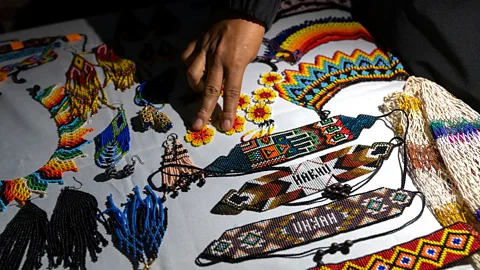
The Yuturi Warmi monitor the region once a month, planning meticulously what ground they will cover. Led by Cerda, they venture along the riverbanks and deep into the surrounding forests, equipped with camera traps and drones that have been bought thanks to community donations and proceeds from selling artisanal crafts.
During their patrols, which typically span two to three days, the women keep a vigilant eye out for any signs of mining encroachment or environmental degradation.
When on patrol, they document their findings, capturing photographic and video evidence that is catalogued and analysed upon their return. This data serves as a critical tool in their advocacy efforts and raising awareness among local and international communities through social media.
The women undergo regular training sessions, with younger women teaching older members how to operate these phone cameras and drones. Each patrol involves a rotation of members, particularly the younger ones, who primarily patrol the land, ensuring continued presence and surveillance. The women do not carry any weapons, relying instead on their collective presence to act as a deterrent.
In the event of witnessing illegal mining activities, the women prioritise non-violent measures such as contacting the authorities and gathering evidence.

In addition to protecting their land in person, the Yuturi Warmi have also taken their fight to court.
One case was known as the " Manati Operation ", which took place in February 2022. It was a collaborative effort between the Serena women, the advocacy group Federation of Indigenous Organisations of Napo and the Ombudsman's Office, which is responsible for addressing citizens' complaints of potential human rights violations by state or private authorities.
This movement aimed to expose the environmental damage in the Yutzupino community of Napo, which neighbours the Serena. Between October 2021 and February 2022, the collaboration found more than 700 unlicensed miners engaged in gold extraction activities in a 103-hectare (256 acre) area.
The operation resulted in the confiscation of 107 excavators used in illegal mining, which had been causing damage to about 0.2 sq miles (0.42 sq km) of the main water basins of the Jatunyacu River. On 13 April, 2022, the provincial court issued a ruling regarding the violation of nature's rights; the ruling stipulates that the Ministry of Environment is accountable for formulating a plan to repair and reforest the affected area.
Despite the court's ruling, challenges remain, says Espinosa. Authorities have failed to implement directives, such as a plan to reforest the damaged areas, and the environmental damage persists.
Even though the community is eager to engage in reforestation efforts, Espinosa continues, it's challenging without a formal, cohesive plan by a larger multinational organisation. He says that as the area of the Jatunyacu River affected by mining flows into the Napo and ultimately into the Amazon, the damage "impacts the entire region".
Members of Yuturi Warmi believe that the government is unlikely to take effective action, prompting them to rely on their community organisation for protection and support. They firmly assert that "real progress can only happen through their collective efforts".
The government did not respond to the BBC's request for comment by the time of publication.
Pioneering leadership
The women say their pioneering work differs from other male guard groups, who primarily focus on land patrolling. They emphasise the preservation of their language and culture while also turning to activities such as sewing and artisanal jewellery. This is vital in staving off mining, says Sempértegui – these artisanal activities provide an alternative source of income for the community.
"[It's] a pioneering model of female indigenous leadership that could inspire other communities," says Sempértegui.
The impact of the Yuturi Warmi and other Amazonian women leaders extends beyond environmentalism, she says. "They actively advocate for an environmental policy rooted in the jungle, one that embraces cultural, identity, and environmental preservation. Their vision seeks to integrate a holistic perspective, shaping a sustainable future that honours both the land and its people."
More like this:
- The women saving crumbling Tibetan monasteries
- Relocating an entire village in the Himalayas
- The Black Mambas: South Africa's all-female anti-poaching unit
Paola Cerda, a young mother, says there is an empowering atmosphere within the group.
"I am here to share, laugh, learn, and generate resources that have helped me regain my independence," she says. "Our current goal is to extend this transformative model to other communities, providing support to more indigenous women and their families."
The Yuturi Warmi firmly argue that the destiny of the Amazon has global significance. A thriving Amazon translates to a flourishing planet.
For essential climate news and hopeful developments to your inbox, sign up to the Future Earth newsletter, while The Essential List delivers a handpicked selection of features and insights.
- Travel Updates
- Travel Stories
World captivated by Aussie’s viral love story
The world has become captivated in the “magical connection” between an Australian girl and her real-life Tarzan who lives in the Amazon jungle.

Picture reveals chilling reality for lone ship
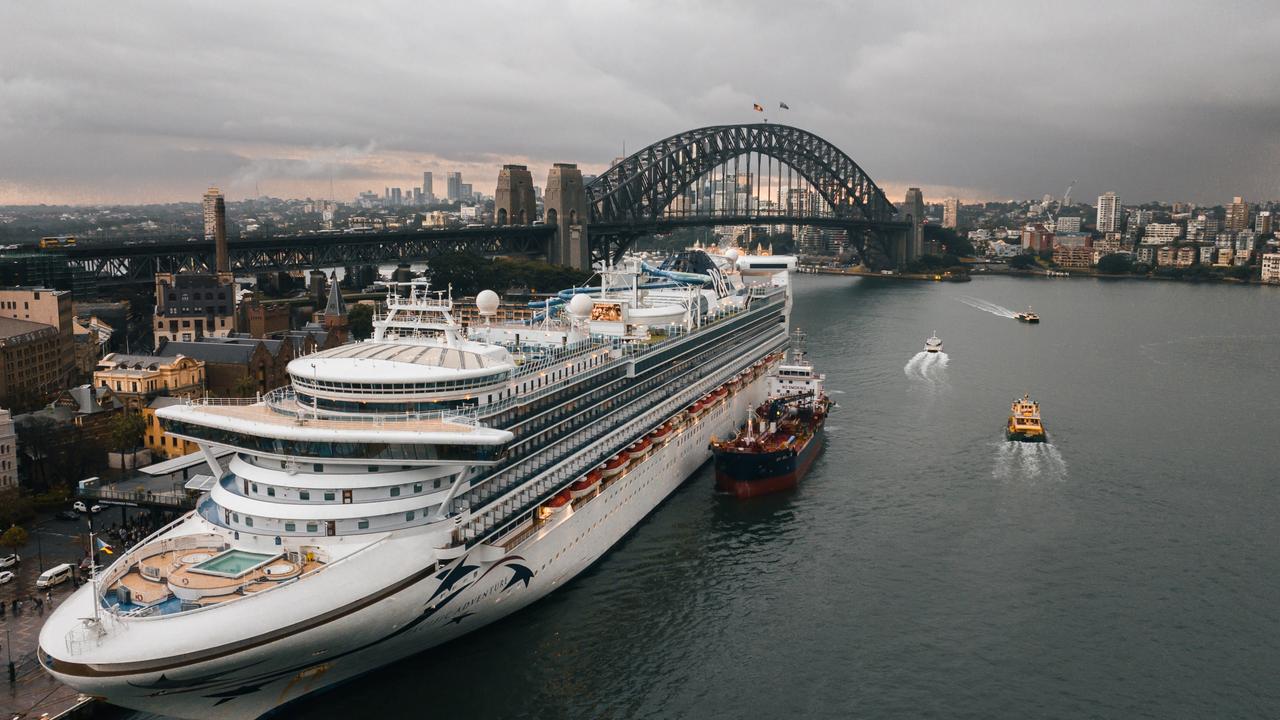
‘Massive loss’: Cruise giant gone forever

‘I would die’: Terrifying beach find
It’s a love story like no other with the world captivated in the “magical connection” between two people from opposite sides of the world.
Jordan Hauenschild, who lives on the Sunshine Coast in Queensland, had no idea she would end up in the Amazon jungle to meet her real-life Tarzan — Indigenous Ecuadorean man Pitiuruk.
The 26-year-old was randomly flicking through the Explore page on her Instagram late one night in December when she came across 24-year-old Pitiuruk’s profile.

She decided to message him to learn about his culture and way of life.
“I was just doing the late night doom scroll before bed and I came across this gorgeous man who was posting incredible content over in a country I knew nothing about,” Jordan told news.com.au.
“I was so intrigued about how people still live this way of life and to some degree I knew there were tribes in the Amazon, but I had never taken the time to learn about it.
“I clicked on his page and I just messaged him.”
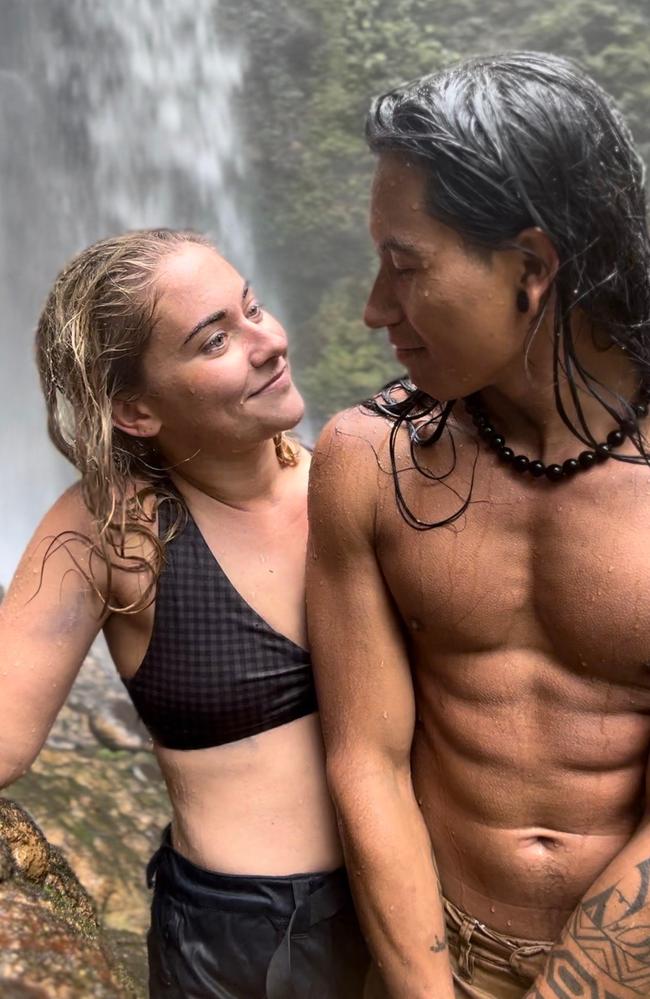
Jordan said she is a big believer in taking risks and living in the moment – and that’s exactly what she did.
“You never know, you might just end up finding the magic you never knew existed. Mine just so happened to be on the other side of the world, in a country I’d never heard of, and I don’t speak the language of.”
That night, Jordan sent Pitiuruk a direct message first telling him how “gorgeous” he is before explaining how she would love to learn more about his culture.
“I didn't expect a response back If I am completely honest,” she said.
And when he did, it left her stunned.

“I couldn’t believe someone form the Amazon jungle, on this exotic piece of land, just responded to me. For a girl that lives a Western life on the coast in Queensland, who is always going to the beach, who lives in a house, to be talking to someone from the Amazon who lives in a hut, was just so surreal.”
The pair got chatting right away, even engaging in video calls where they would educate one another about their cultures and daily life.
“Our conversations were mainly about our way of life, what we do during the day, what we eat, where we sleep and simply, how we live,” Jordan said. “I would show him my bedroom, the fact we have a bathroom and my front and backyard – just the little things.
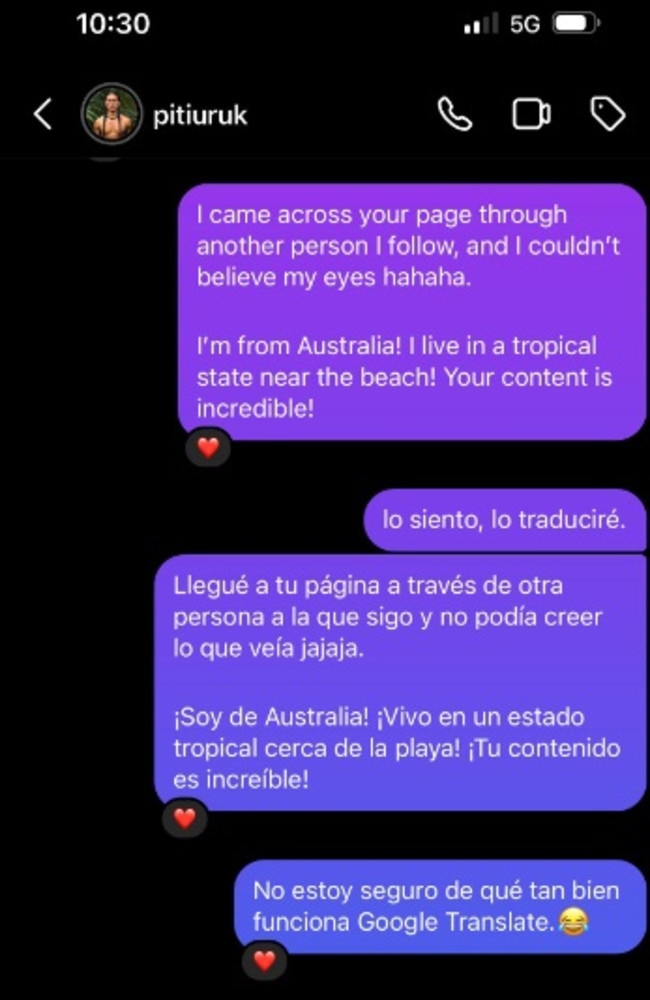
“And he would walk me through a day in his life living in the Amazon, which is pretty unique.”
Pitiuruk’s family is located in the province of Pastaza, Puyo canton Amazonia Ecuador, where they offer guided tours as a way to educate others of their ancestral culture.
After four months of spending nearly every day on the phone together, Jordan hopped on a plane to South America to meet Pitiuruk.
She had quit her 9-5 office job, booked a Contiki trip to Peru, Argentina and Brazil – and also made arrangements to meet the man she was developing an unexpected connection with.
“I just said to him, ‘I can actually come and meet you. Call me crazy, but we can do this’,” Jordan told news.com.au.

Without hesitation, Pitiuruk was on-board with the idea and worked with his family to plan an itinerary for Jordan.
After four flights totalling more than 30 hours and then a five hour bus ride from Ecuador’s capital city Quito to Guayusa Runa (name of Pitiuruk’s family home), she finally arrived.
“As the plane was landing in Quito, I realised the magnitude of the situation – I had gone on a whim with a ‘why not’ attitude and I was about to meet someone I had never seen in real life.”
But, the moment she laid eyes on him, she never felt more at ease. And it didn’t take long for them to develop a romantic connection.
“I just couldn’t believe he was real,” she said. “It was my first time in Ecuador and I just wanted to ensure I was really respectful, but I just couldn’t wipe the smile off my face.”
The next two weeks were spent living and learning Pitiuruk’s way of life and while the pair are not fluent in one another’s language, Jordan said a lot of their connection is based off body language.

“If the spark is there, it doesn’t matter if you can’t speak each other's language. I’ve never had such a connection with somebody where I know exactly where I stand.
“When I arrived, Pitiuruk had worked with his family to plan a two week itinerary for me around the capital city and then in and around the region of their home (Pastaza).”
The pair spent four days in the city and surrounding mountains.
“After I acclimatised (Quito is high above sea level and is referred to as the city in the clouds), we had a family member drive us five hours to Pitiuruk’s family home.”
Jordan said Pitiuruk’s family welcomed her with open arms and not once did she ever feel uncomfortable or unwelcome.
“‘Our jungle is your jungle’, they would say to me.”
Jordan would wake up each morning to the sound of drums, visit local farms, help the family cook and immerse herself in nature.
“They live about 15 minutes form the nearest town by taxi. And the town has everything you need.”

She explained that in order for Pitiuruk’s family to maintain their story and educate people about their way of life, they have to embrace tourism.
“And the best way to do that is through social media platforms and establishing an online presence. They’ve had to integrate into understanding how to use the internet and create a website to maintain the way they live.
“But they don’t want to change anything with how they live – they are happy the way they are.”

She said Pitiuruk one day aspires to work and travel to other countries, and dreams of securing work as an indigenous model to both promote and educate others of his culture and to support his family.
‘Magical and undeniable’ connection
Jordan said during her stay she and Pitiuruk developed a “magical and undeniable” connection that even shocked her.
“Honestly, I had no idea how my holiday would pan out, but all I can say, is that it was cinematic,” she told news.com.au.
“Everything was as magical as you can possibly imagine. It was better than my day dream.”
As the pair learned more about one another, their feelings also grew stronger.
But Jordan had to eventually return home to Australia.
@jordankh_ Part 4️⃣: The Next Step 🏠💭: Work 💪. Save 🥵💵 🕰️. Catch 👏 That 👏 Plane 👏 #series #lovestory #internationalcouple #lovestorytime #lovestorytheseries #lovestory❤️ #miniseries #viraltiktokvideo #viralvideo #globaltiktok #staytunedformore #viraltiktok #ecuador #australia #travel #traveltiktok @Pitiuruk @LATAM Airlines @Qantas @Flight Centre ♬ original sound - jordankh_
When she shared her story on TikTok, it immediately went viral with people from all over the world invested in their love story.
“He is stunning! He just has this beautiful energy about him, soft yet strong, beautiful yet so masculine. He exudes life. And you, you are beautiful too,” one person wrote.
“We’re too invested now. It’s not your love story. It’s our love story,” another joked.
Others also shared similar stories.

“I did this. It was 110% worth it and I never thought I’d be this happy. Take that leap,” one woman added.
“I had a similar experience with a man. He didn’t speak much English when we 1st (sic) met and somehow it seemed to make our connection stronger. I’m picking him up from the airport today. [Love]️ finds a way,” wrote another.
Jordan said she is blown away by all the support.
“It started getting likes and likes and likes and I just could not believe the pace it was going at – and still is,” Jordan said.
“It has been wonderful to see the support from people all over the world.”
However, their love story isn’t over. In a surprise turn of events Flight Centre have offered to fund Jordan’s next visit to Ecuador.
“They’re going to fund my flights which is just incredible. When I told Pitiuruk, we both just cried,” she said.
More Coverage

“I had received an email from Flight Centre saying they were invested in our story and wanted to see us reunited.
“We were both in tears because we didn’t expect to see each other for another year or so.”
The pair both agreed they would regret it they didn’t try and see things through to the end and while Jordan hasn’t decided on a return date just yet, she is scrambling to get her affairs in order as this time she hopes to stay for a few months.
It was once a Queen of the ocean. But now, one of Australia’s most loved cruise ships faces a rather eerie fate.
One of Australia’s most famous companies will be no more after a shock announcement today.
A man strolling along a stretch of sand in Singapore has stumbled upon a creature some have described as the stuff of nightmares.
Cruising the Amazon River & Fox Harb'r Resort, Nova Scotia The Informed Traveler
- Places & Travel
Travel Expert Onanta Forbes is traveling the world again, last week she was in Ecuador and was cruising along the Amazon River so we'll catch up with her to hear about her adventures. Then we'll head to Nova Scotia and visit the Fox Harb'r Resort located on the north side of Nova Scotia. And, Ken Stewart from Crowfoot Travel Solutions will be along to give us a few destination ideas and travel deals with our Weekly Round Up. Support the Show.
- Episode Website
- More Episodes
- © 2024 The Informed Traveler
More by Curiouscast

Ecuador Travel Guide
Last Updated: September 1, 2023

Offering stunning landscapes, the country also boasts delicious food, plentiful mountains, and hospitable people.
It’s also home to the bucket-list-worthy Galapagos Islands, one of the country’s main draws and home to rare and iconic wildlife.
But there is much more to Ecuador than the Galapagos.
Adventure lovers will be keen to explore the Ecuadorian Amazon or climb one of the country’s many volcanoes, including the world-famous Cotopaxi Mountain.
This tiny country packs a lot of punch and this Ecuador travel guide can help you make the most of your trip.
Table of Contents
- Things to See and Do
- Typical Costs
- Suggested Budget
- Money-Saving Tips
- Where to Stay
- How to Get Around
- How to Stay Safe
- Best Places to Book Your Trip
- Related Blogs on Ecuador
Click Here for City Guides
Top 5 things to see and do in ecuador.
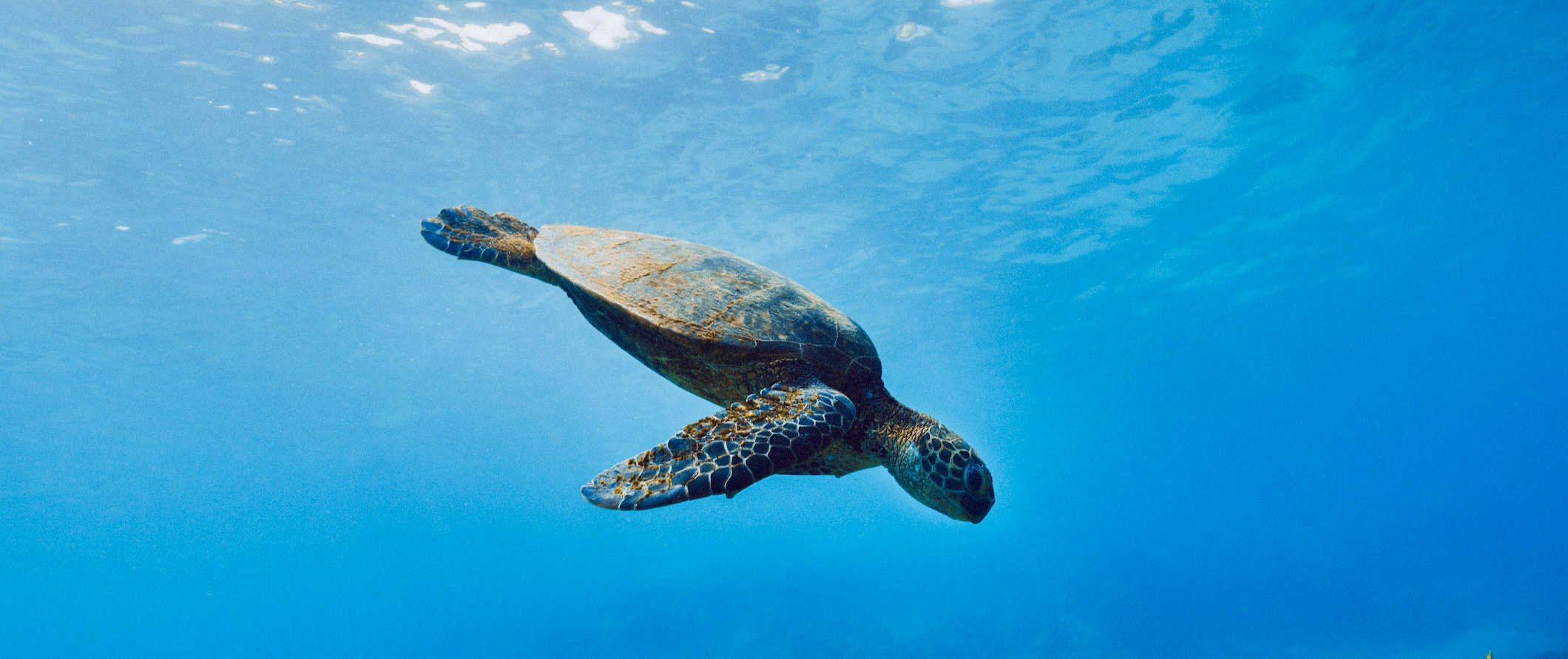
1. Enjoy Quito
Ecuador’s capital is beautiful and energetic. Head to the city’s Old Town to see its historic colonial past. Quito also has plenty of colorful markets to explore with vendors selling incredible indigenous crafts, art, textiles, and delicious local food. The city’s largest and oldest church, Monasterio de San Francisco, features some of the original tilework from its construction in the 16th century and a staircase that was originally designed for the Vatican. Quito is the closest major city to the equator as well, so you can straddle the line and be in both hemispheres at once!
2. Hike Cotopaxi Mountain
Cotopaxi is Ecuador’s second-highest mountain and was the world’s highest volcano until the Chilean volcano Tupungato erupted in 1986. This 12,500-foot-tall snow-capped monster is popular with hikers and mountain bikers. Climbing the entire mountain usually takes about two days and is considered moderately difficult due to the steep climbs and high altitude. It’s best for experienced hikers and climbers who have some training. There are plenty of shorter hikes available, however, including the short (but steep) walk to the first refuge at the base of the volcano. Guided day trips range from $50-90 USD per person.
3. Explore the Galapagos Islands
There are few places in the world that offer wildlife spotting opportunities as good as the Galapagos Islands. The Galapagos Islands were formed from active volcanoes and they’re most famous for being the birthplace of Darwin’s theory of evolution during his visit in 1835. From marine iguanas and Galapagos penguins and sea lions to orcas, manta rays, and the Giant Galapagos tortoise (some tortoises are more than five feet long), these islands are teeming with a wide variety of life. Book a multi-day visit to make the most of your time. While not cheap, it’s worth every penny!
4. Adventure in Ibarra
Located 90 minutes outside of Quito, Ibarra is perfect for adventure travel and indigenous visits. It’s a beautiful city with quaint cobblestone streets and colonial-style whitewashed buildings surrounded by the Andes Mountains. Consider rafting, swing jumping, trekking, climbing, kayaking, and more. Don’t leave without trying their handmade ice cream — it’s a local delicacy made in bronze bowls with fruit, sugar, and ice.
5. See the Amazon rainforest
Approximately half of Ecuador is covered in the Amazon rainforest. There are five National Parks located within Ecuador’s Amazon jungle. Yasuni National Park is believed to be the most biodiverse place on the planet and has been named a UNESCO World Biosphere Reserve. Over 1,000 species of animals can be found in the forests and lagoons of the Ecuadorian Amazon, including tapirs, monkeys, jaguars, and ocelots. Temperatures in the Amazon remain hot year-round, and it might rain at any time, but if you’re prepared it’s possible to visit year-round. Ecuador offers one of the quickest routes to the Amazon in South America. A day trip costs $150 USD while multi-day tours start at $350 USD.
Other Things to See and Do in Ecuador
1. see baños.
This small town lies high in the Andes and on the hillside of Ecuador’s most active volcano, Tungurahua. Besides the fantastic volcano treks, visitors also flock to Baños to experience the healing powers of its hot springs and to give thanks for miracles performed at the Church of the Virgin of the Holy Water. It’s also the country’s adventure capital, with lots of biking, white water rafting, bungee jumping, ATV rentals, and a circuit of beautiful waterfalls to visit. Prices vary, but activities are not expensive. Bungee jumping, for example, is only $20 USD, while white water rafting is just $30 USD for a half-day trip.
2. Wander the Otavalo Market
Otavalo, located less than 100 kilometers (60 miles) from Quito, is Ecuador’s most famous indigenous market. Handicrafts, jewelry, necklaces, musical instruments, and clothing are just a few of the things you can buy at this expansive market, one of the largest in all of Latin America. It’s open daily from 7am-6pm, but it’s best to arrive early in the day.
3. Visit Cuenca
Cuenca is Ecuador’s third-largest city. Designated as a UNESCO World Heritage Site, Cuenca has colonial buildings, churches, and cathedrals that are extremely photogenic. The city is also thought to be Ecuador’s intellectual capital and has been dubbed the “Athens of the Andes.” Activities range from climbing the towers of Cathedral de la Inmaculada, for a stunning view of the city for only $2.50 USD to pampering yourself at Piedra de Agua with a relaxing soak in the heated mineral baths ($15 USD for 3 hours). Be sure to stroll through Mercado de las Flores (Flower Market) to take in the local pace of life.
4. Explore Ingapirca
Ingapirca is Ecuador’s premier Inca site and is located in the Canar Province, near Guayaquil and the country’s Pacific coast. Dating to the 15th century (not long before the Spanish arrived), the crowning glory of the site is the Temple of the Sun, which is a circular building made of intricately carved stones so as to fit together without mortar. There is also a burial site and a series of low walls which are ruins from various other historic buildings. A guided tour costs $45-50 USD.
5. Relax in Montañita
This surfer’s paradise is a relatively new addition to Ecuador’s list of attractions, although its reputation for pristine beaches and perfect waves has been growing steadily over the years. This is a proper backpacker’s paradise with laid-back beach parties, live bands, and inexpensive accommodations. A week-long surf camp (including lessons, accommodation, and food) costs as little as $500 USD.
6. Go whale watching in Puerto Lopez
One of the many tourist towns that lay along the coast is Puerto Lopez. Not so much of a surfing spot, it’s known instead for its incredible whale watching season. Witness the humpback whales in action, and then check out the blue footed boobies (a very rare bird species) at La Plata island (also referred to as “the poor man’s Galapagos” as the same animals found in the Galapagos are also on La Plata). Full-day tours that combine whale watching and an island visit cost $35–45 USD (plus a $15 USD national park fee).
7. Learn Spanish
There are hundreds of places to take a language course in this country if you’re looking to improve your language skills. If you are going to visit for a prolonged period of time, it might be a good idea to take a couple of lessons. Two top-rated schools are Yanapuma Spanish School and Simon Bolivar Spanish School, which have locations in Quito as well as other cities around the country. Each class is about four hours long, with prices ranging from $6-12 USD per hour. Courses run anywhere from 1-4 weeks long so you can pick an option that suits your budget and language needs.
8. Explore the lava tubes
North of Puerto Ayora, there are tons of underground tunnels that have been formed from molten lava. For $3.50 USD, you can take a self-guided tour or pay more to go with a guide. It’s pretty freaky being in these huge lava tubes but pretty amazing too and something you won’t really find in other destinations.
Ecuador Travel Costs
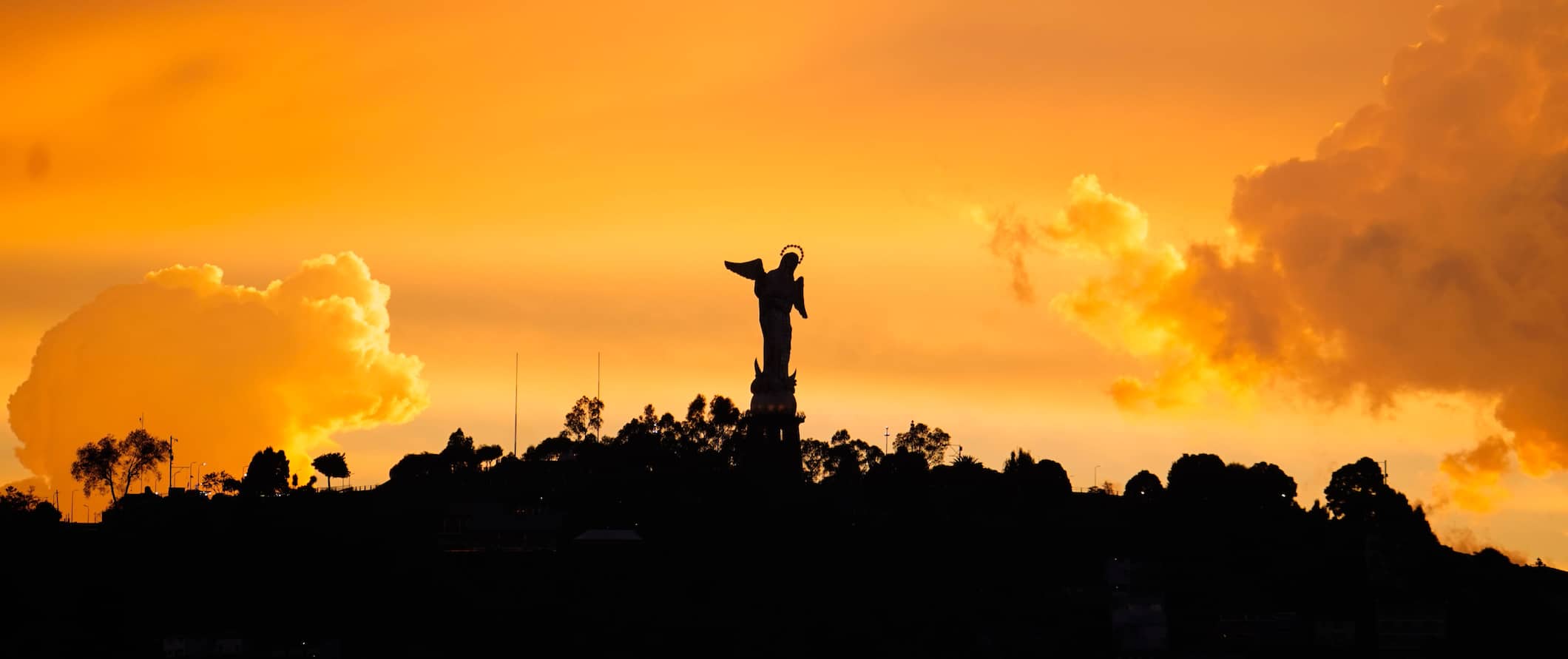
Accommodation – Accommodation is inexpensive in Ecuador. Dorms start around $6 USD per night, while a private room ranges from $10-50 USD. Free Wi-Fi is standard, and many hostels also include free breakfast.
For those traveling with a tent, camping is available all around the country. Campground prices vary but can be found for as little as $5 USD. Most national parks have spots in or around them.
Budget hotels are only slightly more expensive than hostels, with prices starting around $25 USD per night. Free Wi-Fi and free breakfast are common. For a hotel with a pool, prices start at $30-40 USD per night.
Airbnb is also available, with shared accommodation starting at $15-20 USD per night. For an entire home or apartment, expect prices to begin around $25 USD (though prices average closer to $50 USD).
Food – The local fare of Ecuador features ilapinchagos (fried potato cakes stuffed with cheese), ceviche , empanadas, arroz con pollo (chicken with rice) , and cuy (roasted guinea pig). Seafood is common, owing to its location on the ocean. Potatoes with roasted pig is a popular dish in the mountainous regions, while cassava (also known as yuca) is a common staple near the jungle.
Traditional meals typically cost between $3-5 USD. You can find food stalls on the street for around $1-2 USD. Western-style meals cost around $10-12 USD.
For a meal at a mid-range restaurant, expect to spend around $20 USD per person.
Beer is just $2.50 USD while a latte/cappuccino is $2.34 USD. Bottled water is $0.60 USD.
If you’re planning on shopping in the markets and grocery stores, you can expect to spend around $20-30 USD per week on basic groceries like bread, milk, eggs, cheese, chicken, fruit, and veggies.
Backpacking Ecuador Suggested Budgets
On a backpacking budget of $30 USD per day, you can stay in a hostel dorm, eat some street food and cook some meals, take a free walking tour, and use public transportation to get around. If you plan on drinking, add $5-10 USD per day to your budget.
On a mid-range budget of $105 USD per day, you can stay in a decent hotel, eat out for all your meals, take the occasional taxi to get around, enjoy a few drinks, paid tours, and visit most museums.
On a “luxury” budget of $245 USD per day, you can stay in a top hotel, rent a car or take more taxis, eat out anywhere you want, and take as many tours as you want. This is just the ground floor for luxury though. The sky is the limit!
You can use the chart below to get some idea of how much you need to budget daily, depending on your travel style. Keep in mind these are daily averages — some days you’ll spend more, some days you’ll spend less (you might spend less every day). We just want to give you a general idea of how to make your budget. Prices are in USD.
Ecuador Travel Guide: Money-Saving Tips
Ecuador is an affordable destination, however, it never hurts to save money! Here are a few tips to cut down your costs during your visit:
- Stay at hospedajes – These family-run guesthouses are all over the country and have rooms for just a few dollars per night. They’re one of the cheapest options available for accommodation.
- Eat at the markets – This is the place to do your food shopping. You can find meals (or buy groceries) for just a few dollars, making this the best way to eat cheaply in the country!
- Embrace almuerzos – Many restaurants have almuerzos , cheap lunches from a set menu. These are usually just a couple of dollars and usually include a drink. If you want to eat out for cheap, this is a great choice.
- Carry small change – Forget about carrying any bills over $20 USD as you’ll have trouble changing them — even $20s can be difficult to break in small towns. Keep change on hand for smaller purchases.
- Book last minute tours – Galapagos cruises are expensive. By booking your tour in Quito last minute, you can save up to 40% off the cost of the trip. You can also just fly there and see what is around too. If you’re flexible in when you go and can wait around for a spot to open, this is the cheapest option.
- Couchsurf – Use Couchsurfing to find a local who can host you for free. You’ll only get a free place to stay but you get to connect with a local who can share their insider tips and advice.
- Stay at a Hola Hostel – Hola Hostels is a network of hostels predominantly in South and Central America. They offer 10% off to their members, as well as other discounts for food and activities. Joining is free, and their hostels are also committed to environmentally sustainable practices.
- Pack a water bottle – A water bottle with a purifier will come particularly in handy in Ecuador since you can’t always drink the tap water. Save money and thousands of plastic bottles and get a reusable bottle that can purify the tap water for you. My preferred bottle is LifeStraw .
Where to Stay in Ecuador
Ecuador has plenty of fun and affordable hostels. Here are my top suggested places to stay while there:
- Community Hostel (Quito)
- Vibes Hostel (Quito)
- Esperanto B&B Surf Backpacker Hostel (Montanita)
- Hostel Nucapacha (Guayaquil)
- Dreamkapture Hostel (Guayaquil)
How to Get Around Ecuador
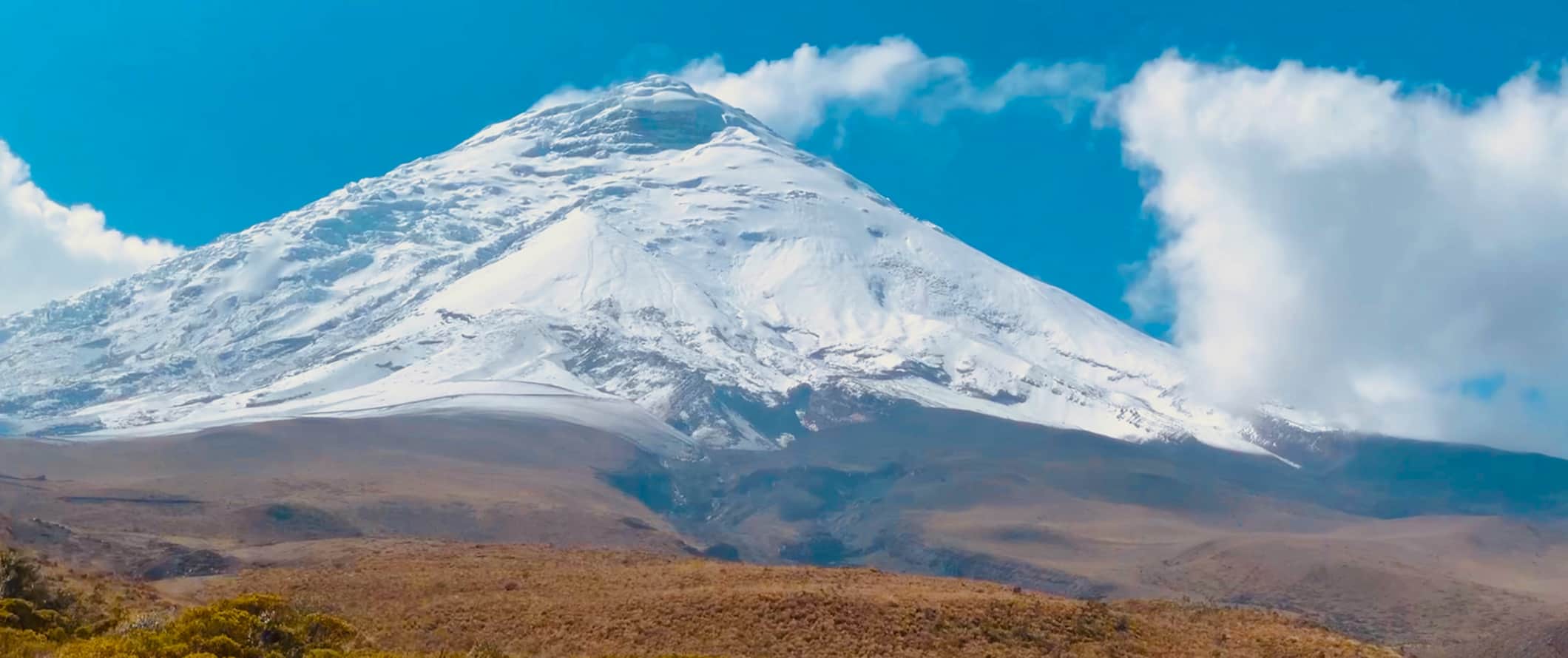
Public transportation – The bus is the most common, efficient way to get around Ecuadorian cities. A local bus ticket costs around $0.25 USD. Bus stops are really only existent in Quito — outside of the city, you’ll generally just have to flag one down and request your stop whenever it comes along.
Bus – The bus network in Ecuador is incredibly extensive, and it’s an easy way to get around the country. Most buses travel along the common backpacking routes. For the 7-hour ride from Quito to Guayaquil, expect to pay between $11-28 USD for a one-way ticket. A 20-hour ride from Quito to Bogota, Colombia costs between $80-100 USD. From Quito to Lima, Peru tickets start at $95 USD for the 29-hour ride.
Typically you can just show up at the bus station to get your ticket, but you can also use latinbus.com to look up routes and prices.
Another option is to book a hop-on/hop-off pass. These passes give you flexibility in your travel but are only available along specific routes. You can hop off and hop on at any time. Wanderbus Ecuador passes start around $249 USD for 11 stops, while longer routes can cost up to $699 USD for 20 stops.
Train – Ecuador’s national railway company shut down during the pandemic and due to lack of funding, has yet to resume operations. There are currently no trains running in Ecuador.
Flying – Flying within Ecuador is affordable, with most destinations being serviced from Quito or Guayaquil. Ecuador’s airlines are:
- Emetebe (Galápagos-based airline)
Flights from Quito to Guayaquil start at $58 USD each way. TAME will also get you to some smaller Ecuadorian destinations, like Quito to Loja for $43 USD (one-way). Flying to the Galapagos Islands is obviously the most practical way to get there, but it’s certainly not cheap. One way from Quito to Baltra (the busiest airport) starts from about $133 USD. Guayaquil to Baltra is about $155 USD. Expect prices to double if you don’t book in advance.
Car rental – Car rentals cost around $35 USD per day, however, the driving conditions are far from ideal (poor road conditions, no driving signs, etc.). Unless you have experience driving in Central or South America, I’d skip the rental as buses are much cheaper and safer.
Renters need to be at least 21 years old. For the best car rental prices, use Discover Cars .
When to Go to Ecuador
Ecuador technically only has two seasons: the wet season and the dry season. But since Ecuador has such varying altitudes, it really depends on where/when you visit.
January to May is the coolest, wettest time of year for most of the country. Navigating the Amazon can be difficult during this time due to road closures and flooding. Temperatures along the coast are milder, and it’s actually quite pleasant in the Galapagos as the ocean waters are calm and warm.
June to the end of September is very dry, and you’ll also experience some of the warmest temperatures in Ecuador. This is peak season, so you can expect higher prices for flights and accommodations. Still, the weather is always nice and the entire country has a fun, upbeat atmosphere. Temperatures near the coast hover around 25°C (77°F), while in Quito the daily average is around 21°C (70°F).
How to Stay Safe in Ecuador
Ecuador is generally a safe place to travel around, even if you’re traveling alone or as a solo female traveler. Petty theft is the most common type of crime in Ecuador. Valuables like laptops, jewelry, and cell phones should be hidden from sight. Transport terminals are especially a hot spot for petty theft so stay vigilant.
In Quito, avoid the Old Town at night. Taxi crimes are a danger in places like Quito, Guayaquil, Manta, and Playas. The US consulate in Guayaquil even forbids its staff from hailing cabs in the street because of the risk of crime.
In a popular scam, someone will hop into your taxi with you once the journey has started and take you on a little tour of the city’s ATMs as they rob you blind. So use caution and have your accommodation call a taxi for you whenever possible.
If you’re worried about scams, read about common travel scams to avoid here .
Solo female travelers should generally feel safe in the country, however, the standard precautions apply (never leave your drink unattended at the bar, never walk home alone intoxicated, etc.). For more information, check out one of the many solo female travel blogs on the country.
If you go out hiking, always check the weather beforehand and bring appropriate clothing, as well as water and a hat.
Always trust your gut instinct. If a taxi driver seems shady, stop the cab and get out. If your hotel is seedier than you thought, move. Make copies of your personal documents, including your passport and ID, in case of emergencies.
The most important piece of advice I can offer is to purchase good travel insurance. Travel insurance will protect you against illness, injury, theft, and cancellations. It’s comprehensive protection in case anything goes wrong. I never go on a trip without it as I’ve had to use it many times in the past. You can use the widget below to find the policy right for you:
Ecuador Travel Guide: The Best Booking Resources
These are my favorite companies to use when I travel. They consistently have the best deals, offer world-class customer service and great value, and overall, are better than their competitors. They are the companies I use the most and are always the starting point in my search for travel deals.
- Skyscanner – Skyscanner is my favorite flight search engine. They search small websites and budget airlines that larger search sites tend to miss. They are hands down the number one place to start.
- Hostelworld – This is the best hostel accommodation site out there with the largest inventory, best search interface, and widest availability.
- Booking.com – The best all around booking site that constantly provides the cheapest and lowest rates. They have the widest selection of budget accommodation. In all my tests, they’ve always had the cheapest rates out of all the booking websites.
- Get Your Guide – Get Your Guide is a huge online marketplace for tours and excursions. They have tons of tour options available in cities all around the world, including everything from cooking classes, walking tours, street art lessons, and more!
- SafetyWing – Safety Wing offers convenient and affordable plans tailored to digital nomads and long-term travelers. They have cheap monthly plans, great customer service, and an easy-to-use claims process that makes it perfect for those on the road.
- LifeStraw – My go-to company for reusable water bottles with built-in filters so you can ensure your drinking water is always clean and safe.
- Unbound Merino – They make lightweight, durable, easy-to-clean travel clothing.
- Top Travel Credit Cards – Points are the best way to cut down travel expenses. Here’s my favorite point earning credit cards so you can get free travel!
Ecuador Travel Guide: Related Articles
Want more info? Check out all the articles I’ve written on Ecuador travel and continue planning your trip:
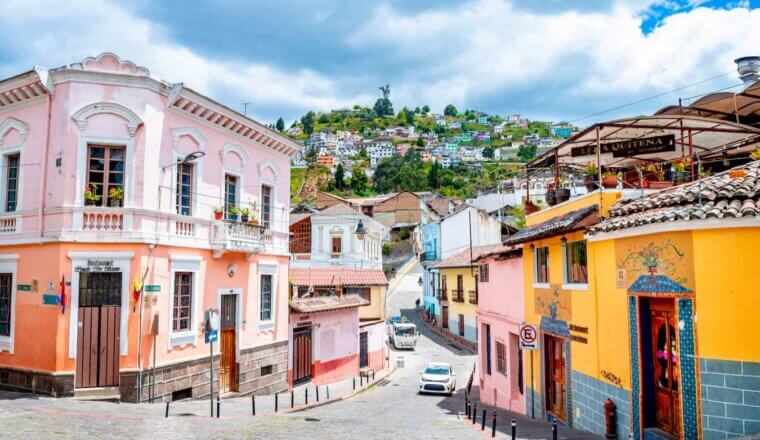
The 13 Best Things to Do in Quito, Ecuador
Get your free travel starter kit.
Enter your email and get planning cheatsheets including a step by step checklist, packing list, tips cheat sheet, and more so you can plan like a pro!

- Where To Stay
- Transportation
- Booking Resources
- Related Blogs

IMAGES
VIDEO
COMMENTS
Combine the Amazon with other fantastic destinations such as the Galapagos or Machu Picchu. Live the Amazon experience in safety, comfort & even luxury. Contact Us
For travel lovers seeking unparalleled experiences in Ecuador, Audley Travel delivers. We offer exclusive access to Ecuador travel experiences you won't find elsewhere.
The Ecuador Amazon is part of the Amazon rainforest which stretches from Brazil, through Venezuela, Columbia, Bolivia, and Peru. It's hot, humid, and rains pretty much every day. On average this area receives about 3200 - 3500 mm of rain per year. The temperature averages around 23-25 °C.
Learn how to choose your activity, home base, time of year and packing list for an adventure in the Ecuadorian Amazon. Get tips on respecting the environment and the Indigenous communities you'll encounter in this biodiverse region.
Multi-day tours generally hover around $100 per day all-inclusive, though they can more expensive depending on the lodging planned for the tour. 4-Day Ecuador Amazon Jungle Tour. 4-Day Ecuador Amazon Jungle Tour - Tapir Lodge. Some tours of Cuyabeno also start from the town of Lago Agrio rather than Nueva Loja.
Ecuador Amazon Accommodation. Jungle lodges, wood and thatch type dwellings with communal eating/relaxing areas, are the most expensive costing typically under $100 per night and the most comfortable way to see the jungle, and often offer rewarding activities that tend to be structured daily, such as jungle walks and early morning canoe trips.
When to Visit the Ecuadorian Amazon Rainforest. While the best time to visit Ecuador is between the dry season of June-September, the weather in Ecuador's Amazon is mostly the same during the whole year, where you can expect plenty of rain and high humidity. Prepare for the wet weather in the Ecuadorian Amazon.
Our Ecuador Amazon Rainforest Travel Guide is designed as one-stop shop for Trip planning information. We also have detailed information about Ecuador Jungle travel destinations, wildlife, festivals & food. Reading everything would probably cause instant brain overload, so we recommend dipping in and out at leisure.
Macas is a small town, capital of Morona Santiago, Ecuador. It is known as the "Emerald of the East" due to its location east of the Andes mountains. Macas lies in the Upano Valley overlooking the Upano River. About the altitude, Macas has an elevation of 3,445 feet (1,050 meters) above sea level.
The Ecuadorian Amazon is mainly tropical rainforest elevated 400 m above sea level. The Amazon region of Ecuador is one of the few places in the world where its probably best to travel with a group, with a guide or through a jungle lodge. Unless you are studying, teaching English or consulting on a project in the Amazon, you are unlikely to ...
The months with the most rain in the Ecuador Amazon Basin are March, April, May, and June. The dry season lasts from July to December. Some species may be more difficult to find during the wet season. There will be little to no tourist traffic in the area. Amazon lodges, activities, and journeys are widely dispersed.
The Ecuador Amazon is hot and humid all year long with an average humidity between 85% and 95%. Since you'll be near the equator there is little fluctuation in the temperature. It hovers around 82° Fahrenheit (28° C) throughout the year, but we saw mid-90s in October on our expedition.
February 23, 2020. The Amazon rainforest in Ecuador is an adventure you'll never forget. Take the spiralling mountain road from Quito into the deep, lush Amazon rainforest for a weekend or longer. Lace up your walking boots and find yourself immersed in dense vegetation, kapok leaves fringing the clouded sky.
Best Time to Visit. Ecuador's Amazon rainforest can be visited year-round. Its location on the Equator means that the climate remains hot, however as with any rainforest, visitors should be prepared for rainfall at any time of year. Ecuador does experience two seasons, which are worth bearing in mind when booking your trip.
4 Days | Travel through the lush ecology of the Ecuadorian Amazon. 4.7 out of 5 based on 11 reviews submitted. Short breaks. From. USD $1,453. Add to my wishlist. View dates and book. Show all the images. Trip summary.
Explore Ecuador's Amazon rain forest, drive the Avenue of the Volcanoes, and learn about traditional weaving on a 9-day Ecuador and Amazon tour.
Join an unforgettable journey through the Amazon Rainforest with Anakonda Amazon Cruises. Discover our luxury cruises, itineraries & more ... ECUADOR: +593 23360887 / +593 3360888 / +593 3360889. USA: +1 786 220 3251. E-mail: [email protected]. Skype: Advantage Travel. Address: Advantage Travel Ecuador • Gaspar de Villarroel N40 ...
Facebook Twitter Youtube Instagram Amazon Are you ready to discover the essence of nature in the deep jungle? Called the "Lungs of the Planet", the Amazon is a captivating destination for lovers of wildlife, lush jungle and indigenous culture. Yasuní National Park, the largest protected area in continental Ecuador, is located between the provinces of … Continue reading "AMAZONIA"
The Anakonda Amazon Cruise - 4, 5 or 8-day Amazon Cruise. The Anakonda is the larger sister vessel of the Manatee Cruise above. The cruise offers the same high standard of service and guided tours. And the Anakonda Amazon Cruise offers a fantastic experience of Ecuador's Amazon.
Select one of the below 22 best Ecuador Amazon trips for 2024 and 2025.Your local English-speaking guide will lead your small group or personalized private tour on an extraordinary adventure exploring Coca, Yasuni National Park, Sacha Lodge, Panacocha Reserve, and Casa Del Suizo.Our Ecuador Amazon trips for 2024 feature wildlife viewing, rainforest exploration, wildlife & safari exploration ...
To help appreciate the rambling expanse of the Amazon Basin, one can compare it to the size of the contiguous United States—less Montana. Brazil claims the lion's share, but countries like Peru and Ecuador are graced with vast tracts, too. Peruvian Amazonia occupies 60 per cent of the country's land size, while one-third of Ecuador is carpeted by the Amazon rainforest.
Cuyabeno Tours. Cuyabeno is located far into the Amazon, only reachable by boat.Because of that, it is one of the most pristine places on the planet. You can reach it from Lago Agrio, which is the pick-up point for the Cuyabeno Amazon Tours.. The Cuyabeno Wildlife Reserve has 14 lagoons and trees that can reach 164 inches. With this in mind, you'll see the forest going until the land ...
View Map. The Galápagos Islands and Amazon rainforest are two of South America's most biodiverse regions—and you'll see them in style over 10 packed days. It's a grand Ecuadorian adventure starting in the islands, where you'll alternate between excursions on land and time enjoying the scenery from the deck of your luxury cruiser.
Call 1.406.541.2677. Start Planning My Trip. Experience the world-renowned Amazon rainforest of Ecuador with Adventure Life on one of these 7 extraordinary hiking trips for 2024 and 2025. From the towering, lush canopy to its vibrant wildlife, a hike in Ecuador's Amazon will take you through one of Earth's most pristine natural wonders.
The rainforest in Ecuador, often referred to as the 'Oriente', occupies a total area of 135,6000 km2. While this only represents a mere 2% of the expansive Amazon basin, it is a crucial part of the basin's ecosystem. This particular Amazon rainforest lies within this large basin and plays an important role for both ecology and wildlife.
The Ecuadorian Amazon: Visiting with a Local. Story by Hana LaRock, World Footprints. • 9mo. E ver since I was a young girl, I've dreamed of visiting the Amazon Rainforest. Whether it was the ...
It is the break of dawn in the Serena community, in the middle of the Ecuadorian Amazon. Along the Jatunyacu River, which later joins the Amazon River in the Napo Province, Elsa Cerda, a 43-year ...
The world has become captivated in the "magical connection" between an Australian girl and her real-life Tarzan who lives in the Amazon jungle. Shireen Khalil. @Shireenkal. 6 min read. June 1 ...
Travel Expert Onanta Forbes is traveling the world again, last week she was in Ecuador and was cruising along the Amazon River so we'll catch up with her to hear about her adventures. Then we'll head to Nova Scotia and visit the Fox Harb'r Resort located on the north side of Nova Scotia. And, Ken St…
Ecuador Travel Costs. Accommodation - Accommodation is inexpensive in Ecuador. Dorms start around $6 USD per night, while a private room ranges from $10-50 USD. Free Wi-Fi is standard, and many hostels also include free breakfast. For those traveling with a tent, camping is available all around the country.